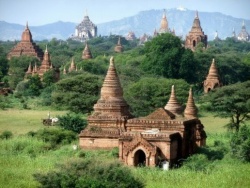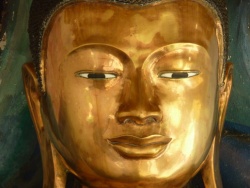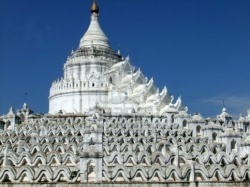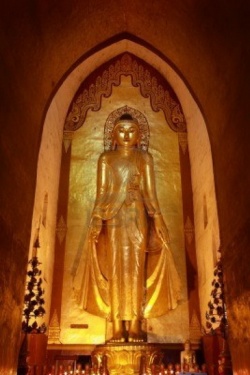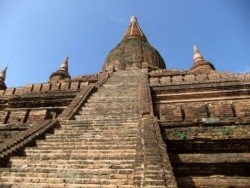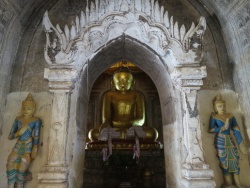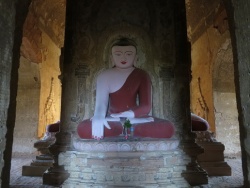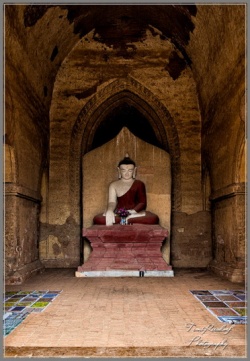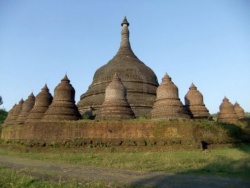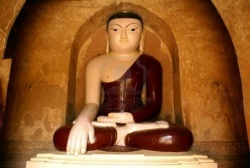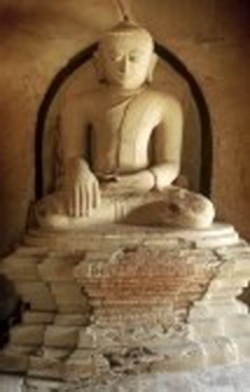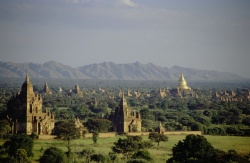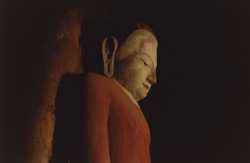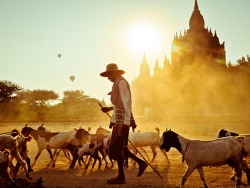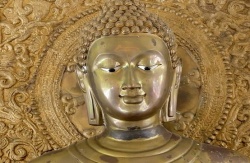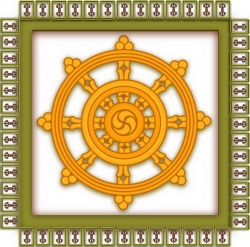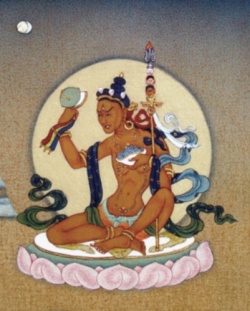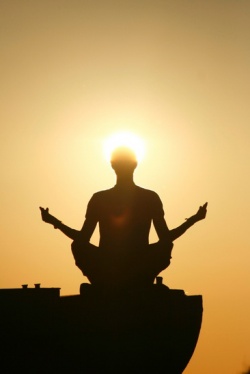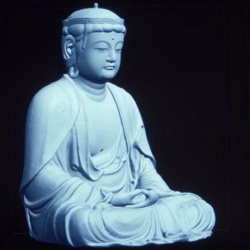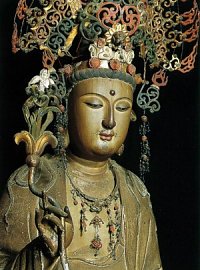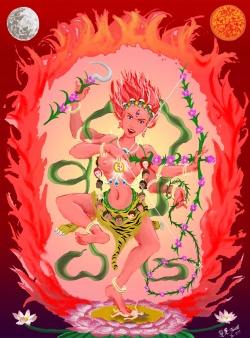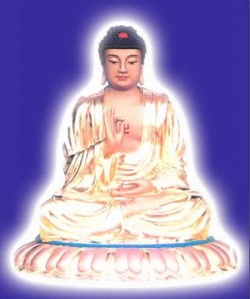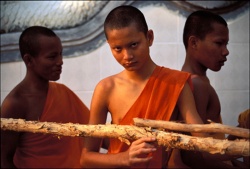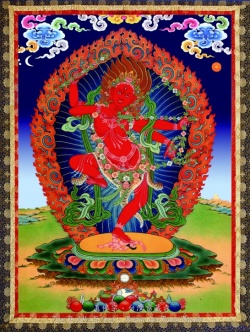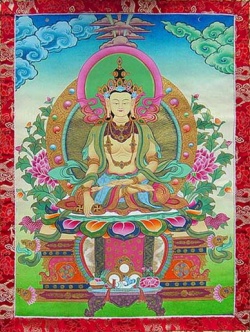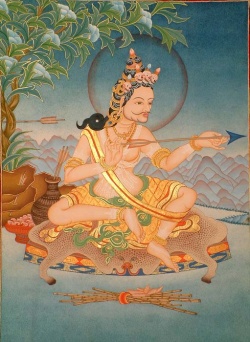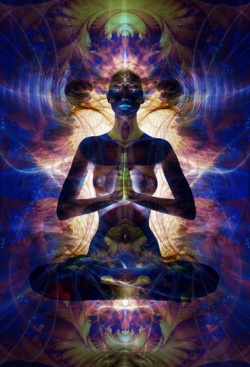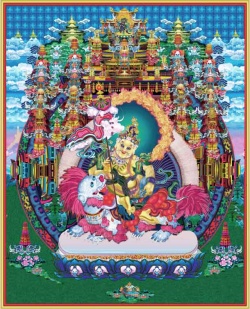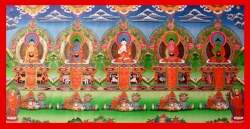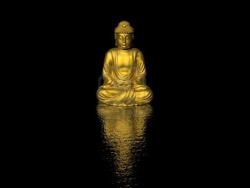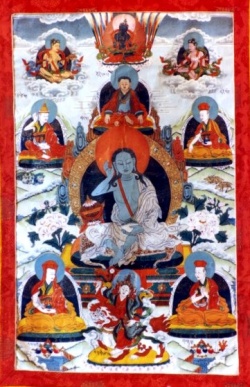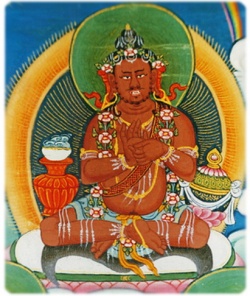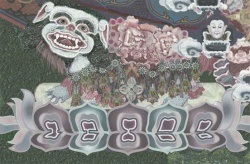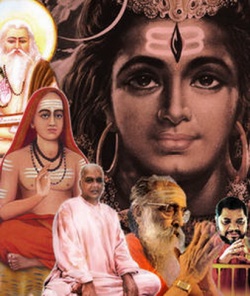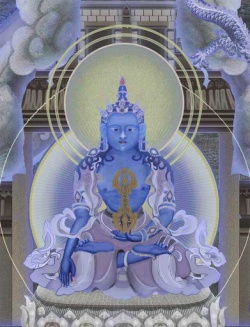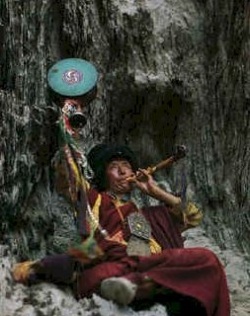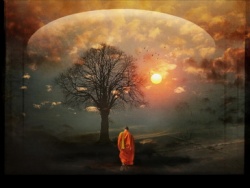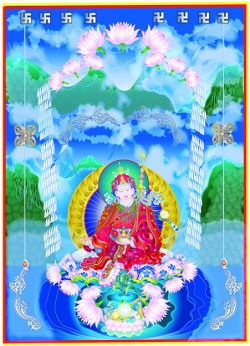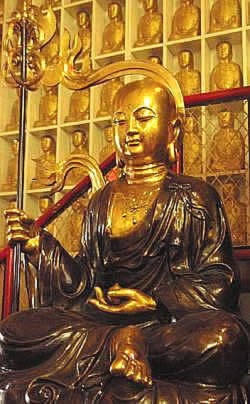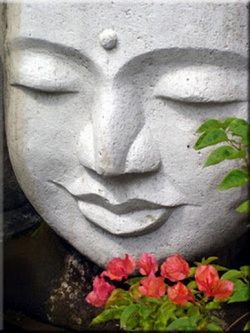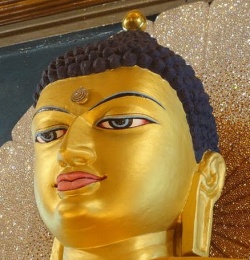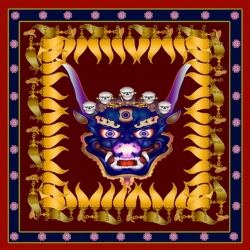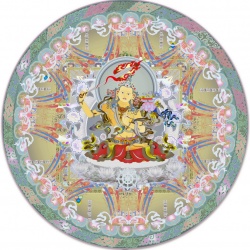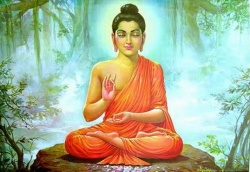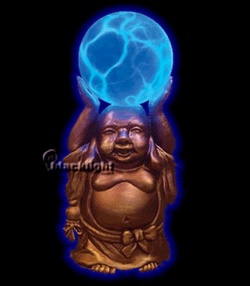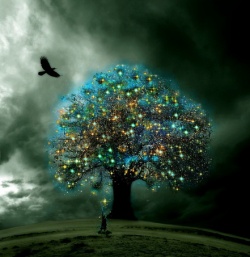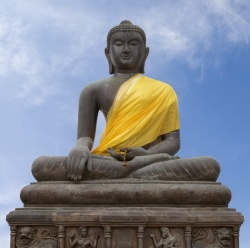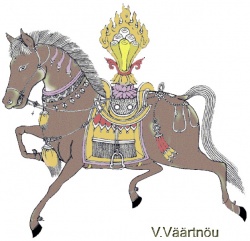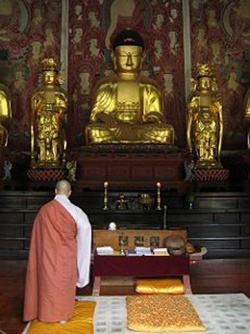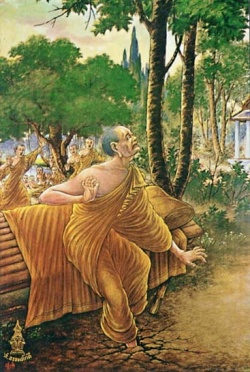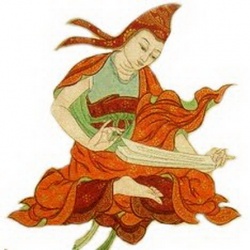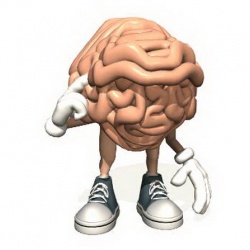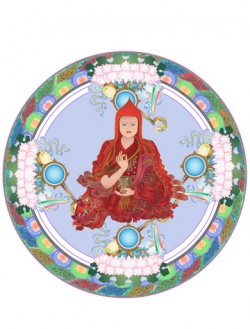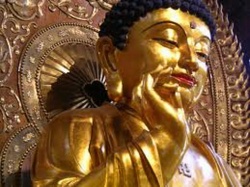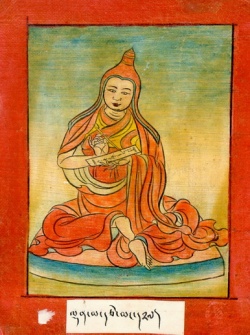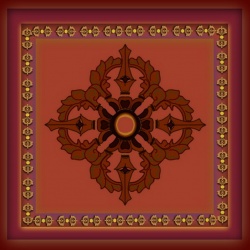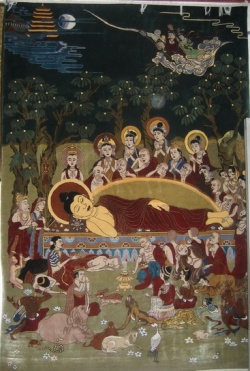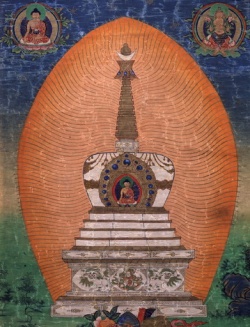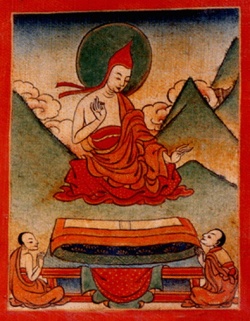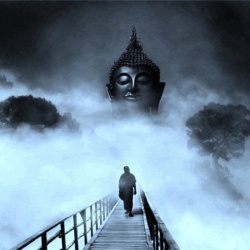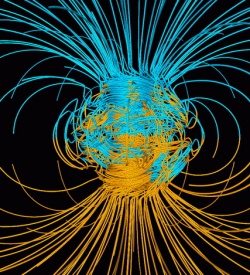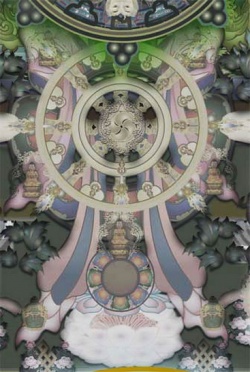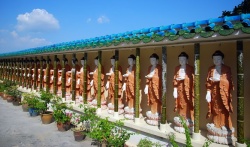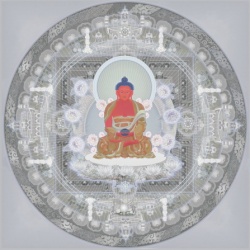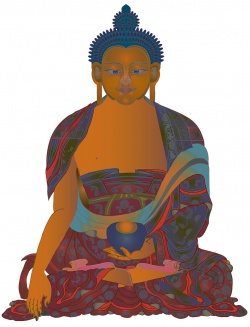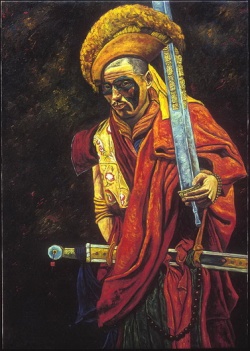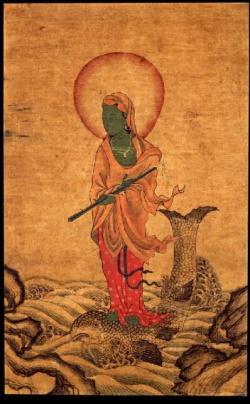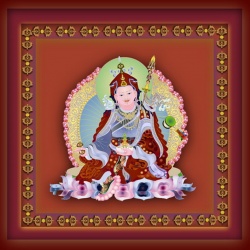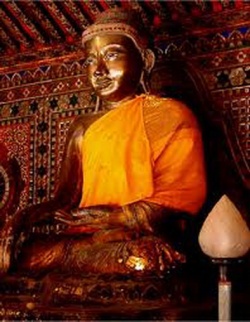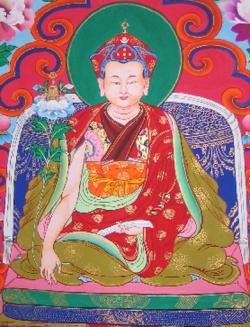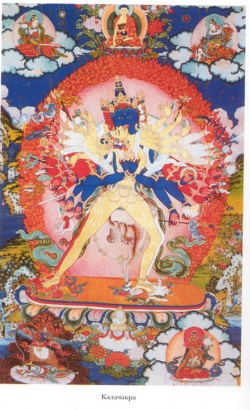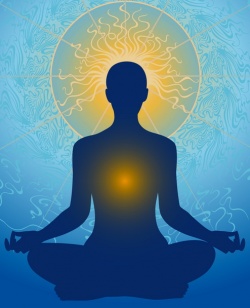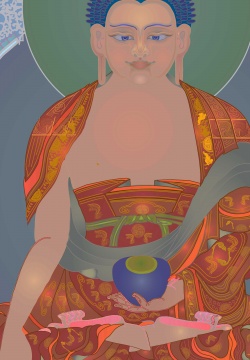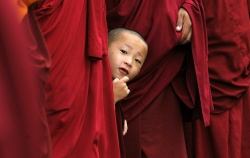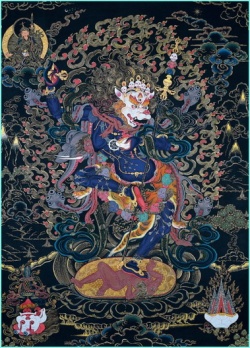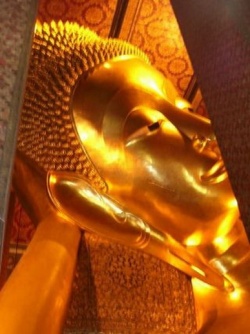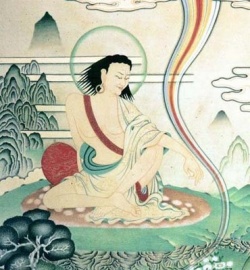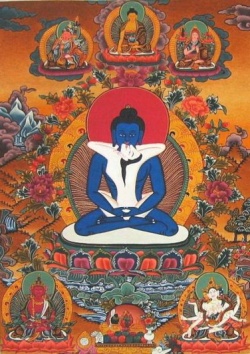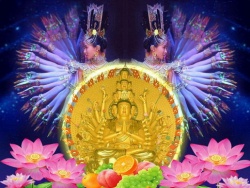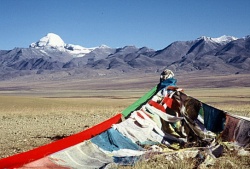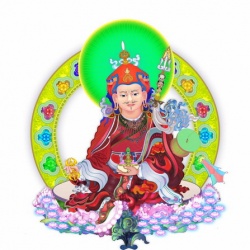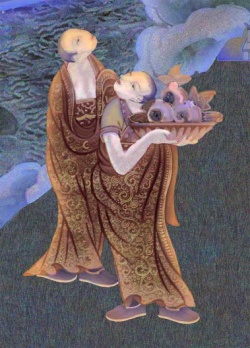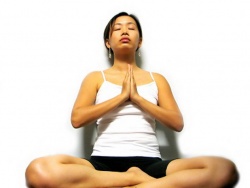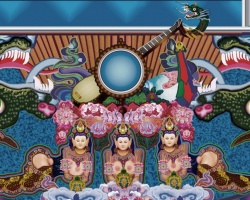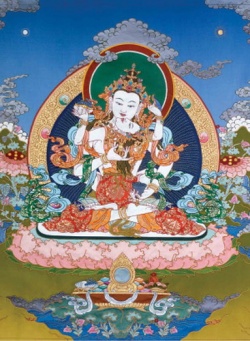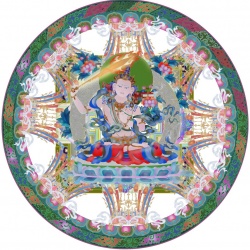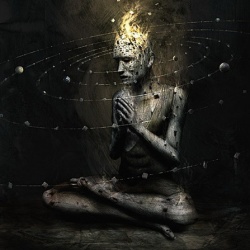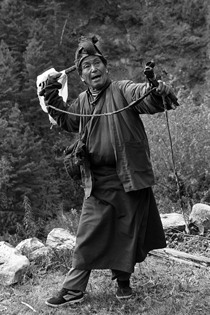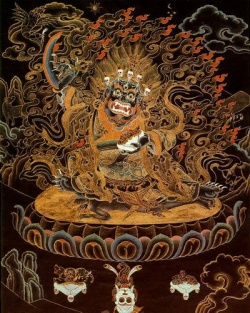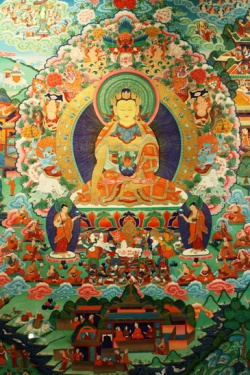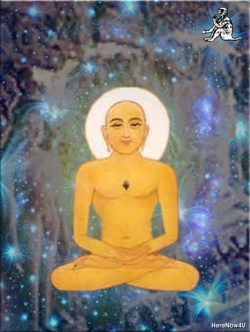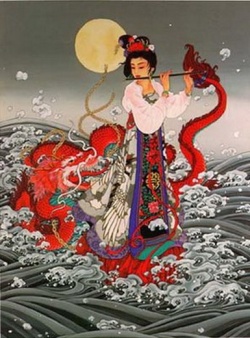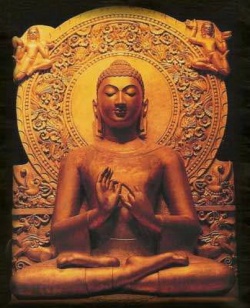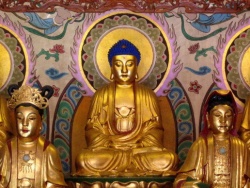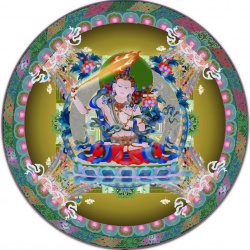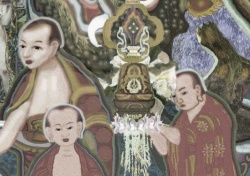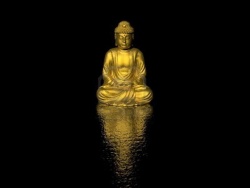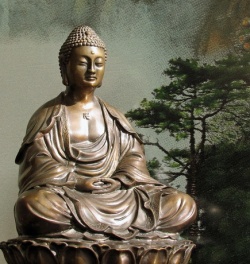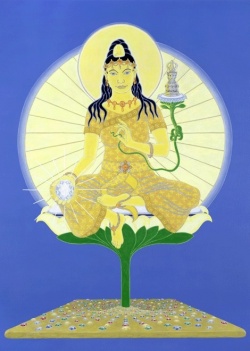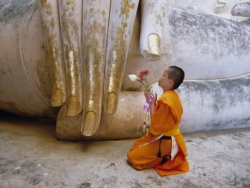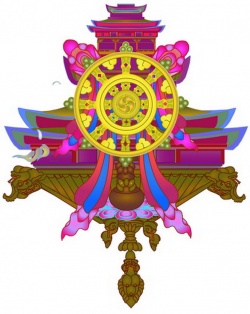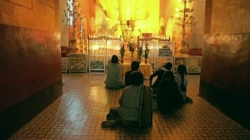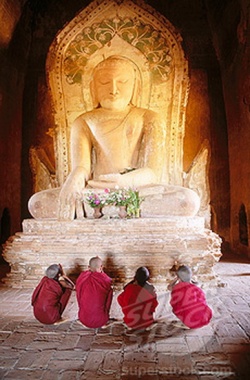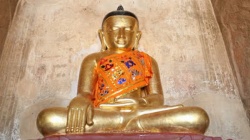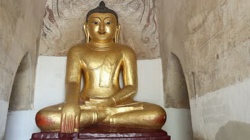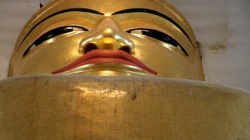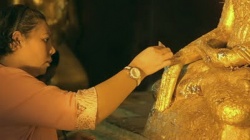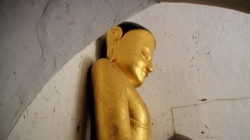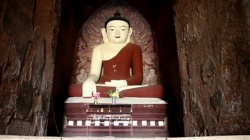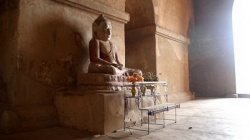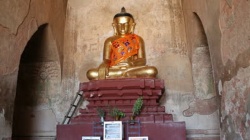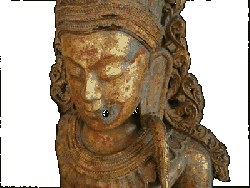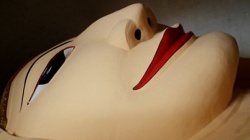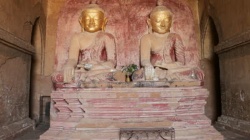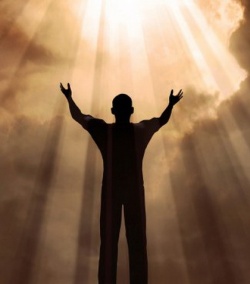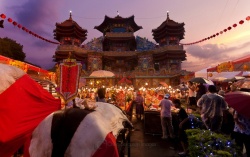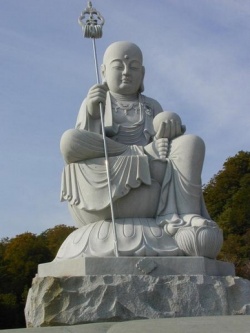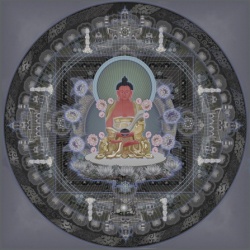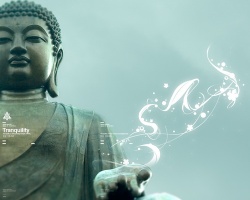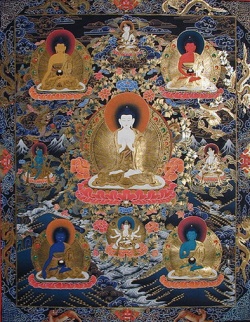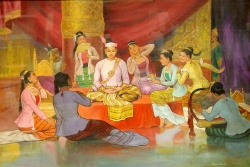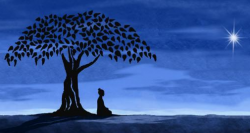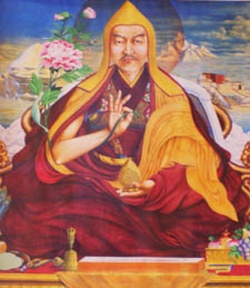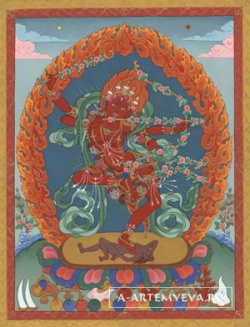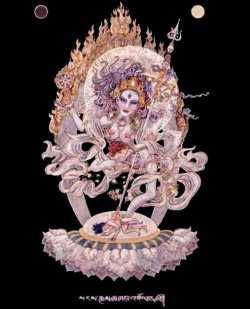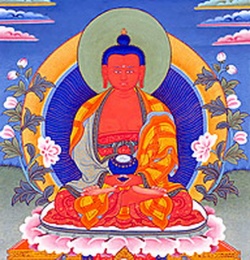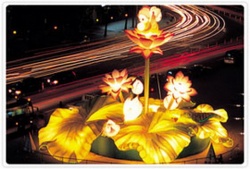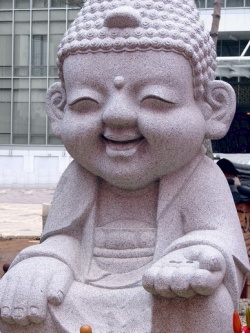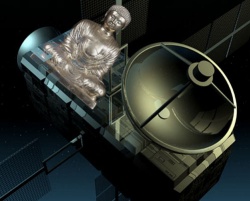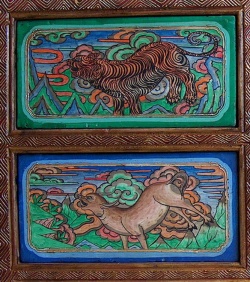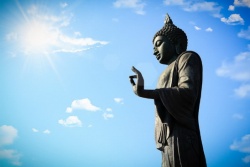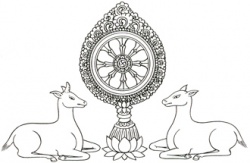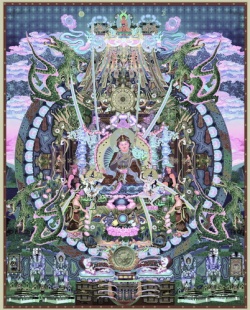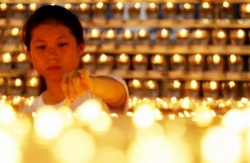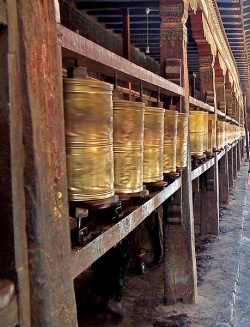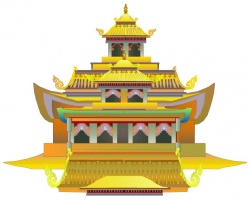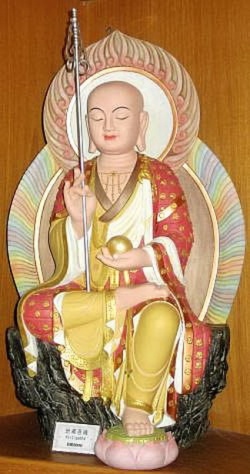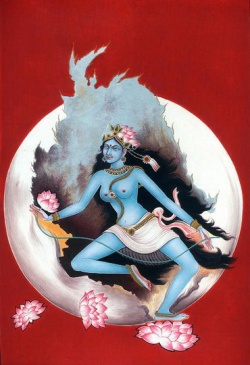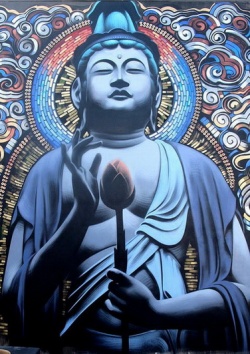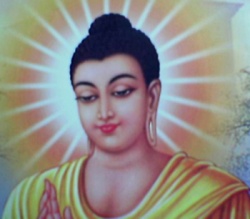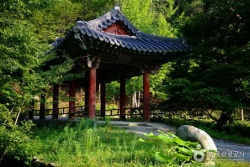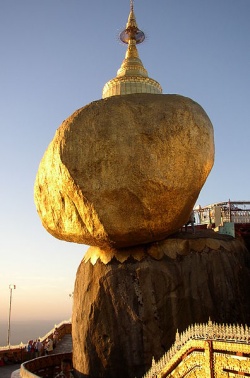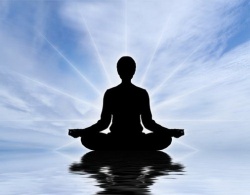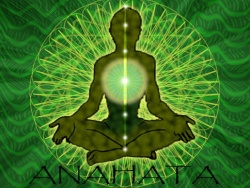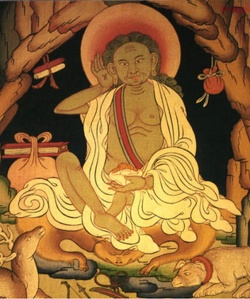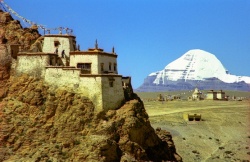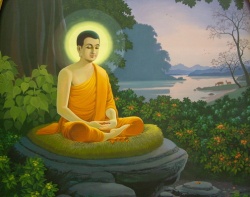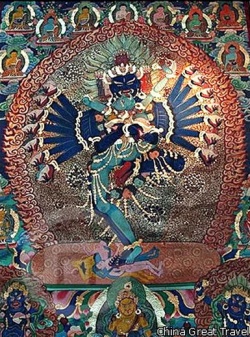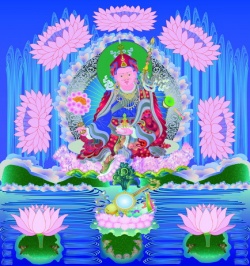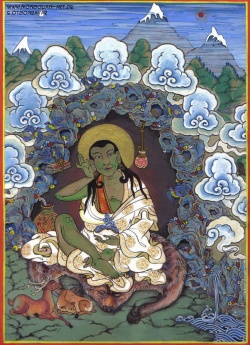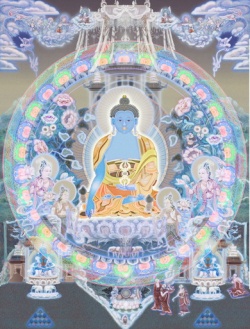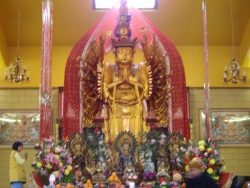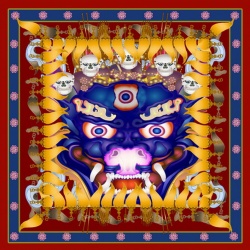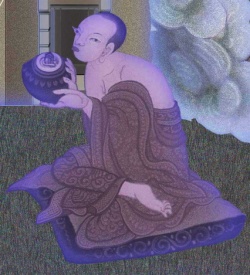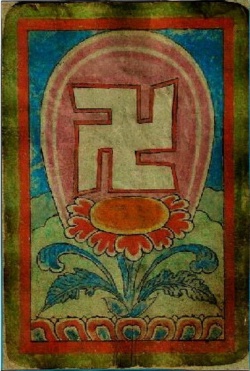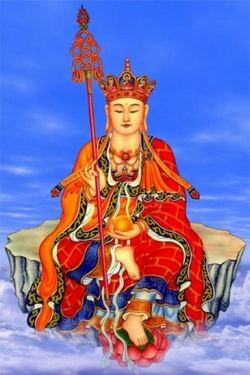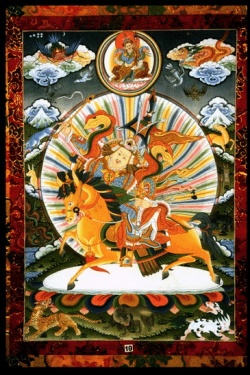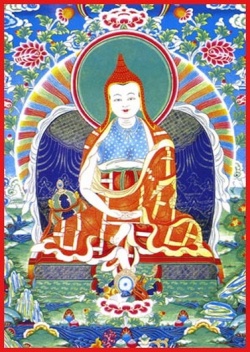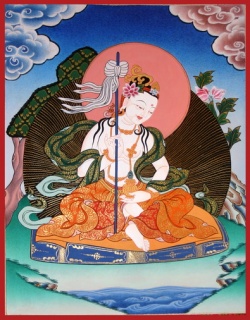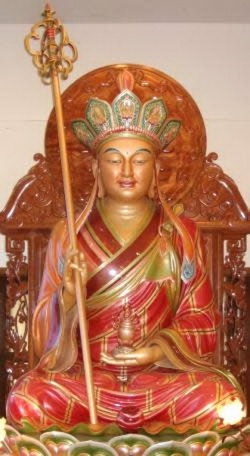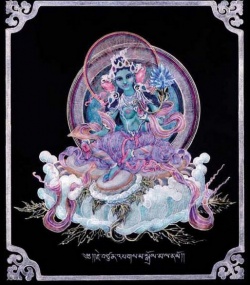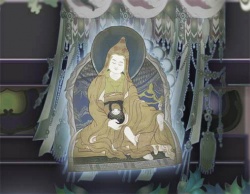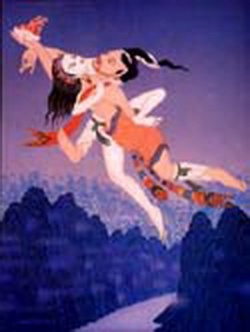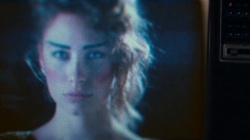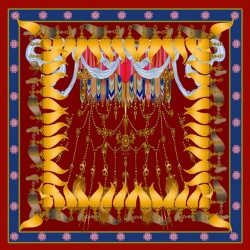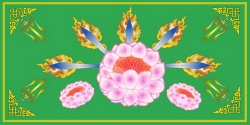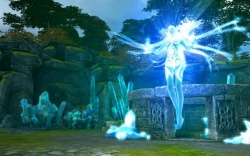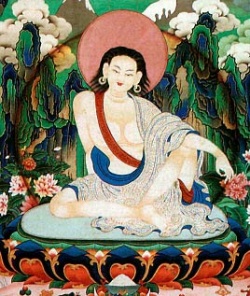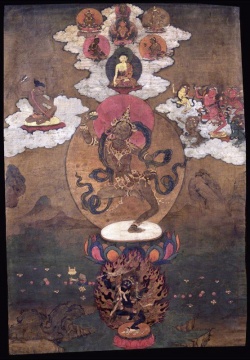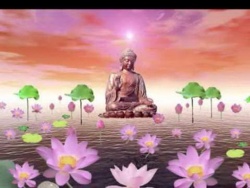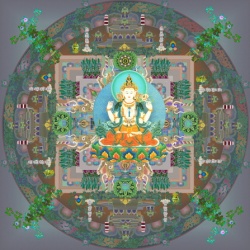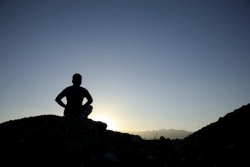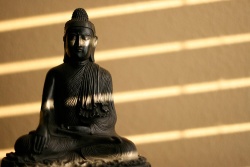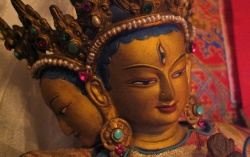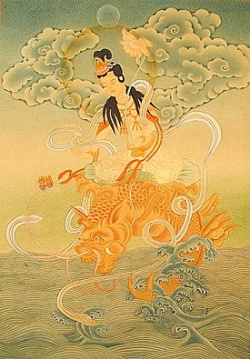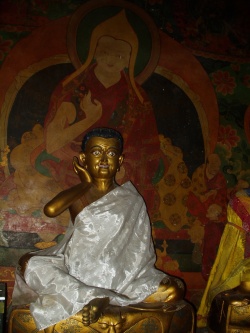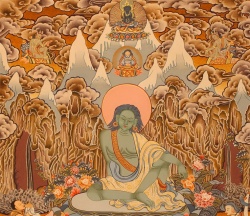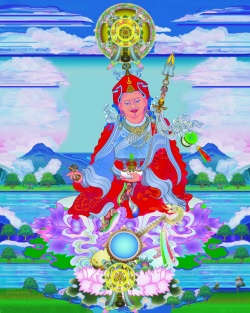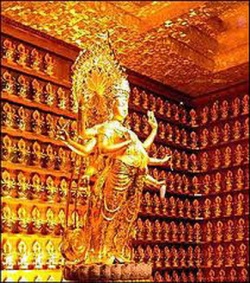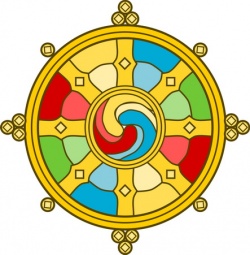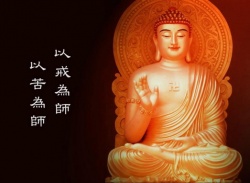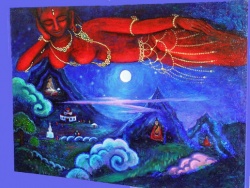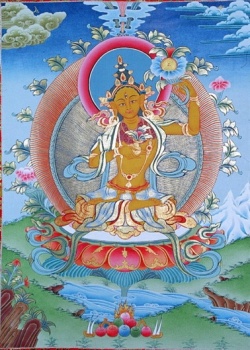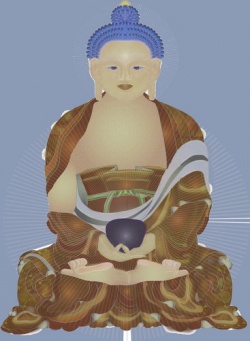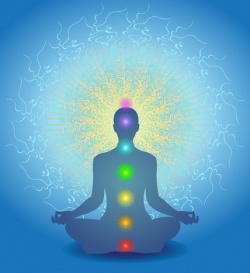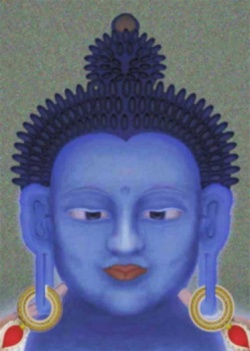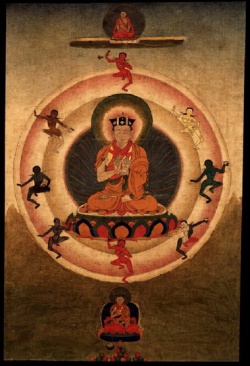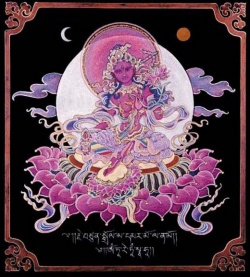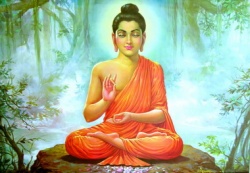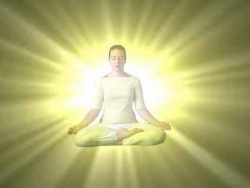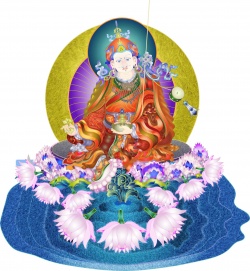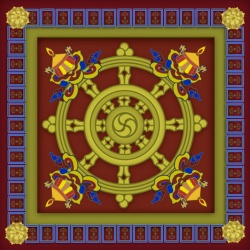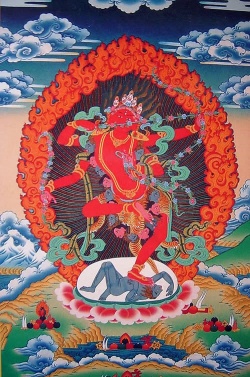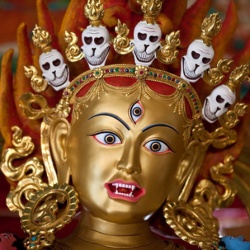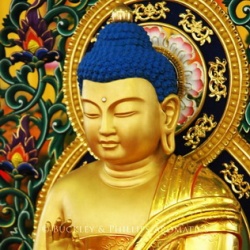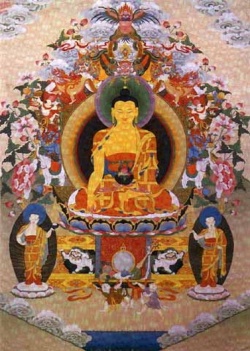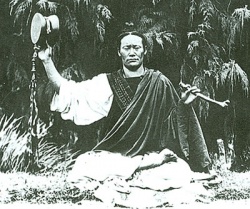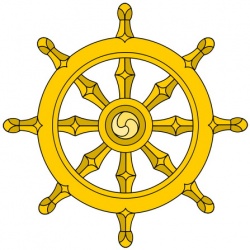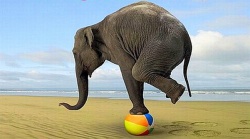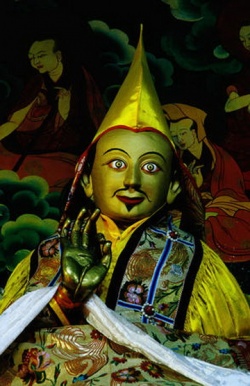Architecture of Bagan
ACKNOWLEDGEMENTS
I SPENT 1986 IN Burma and returned for a shorter period in 1987. Whilst there I inexplicably found myself to be the object of hospitality and kindness that I had never before believed was within the reach of mankind. In the old
village of Pagn itself I found, far from the ignorance and obliviousness that is normal amongst communities dwarfed by great monuments, an aura of silent respect and interest for all that is about. Thus firstly I thank the people of Pagan for offering a vision of their noble ancestors.
I am also deeply grateful to the following: The Department of Religious Affairs who encouraged and assisted mien all possible ways during my visit. In particular I thank Dawn Khin Su, the Director of Research, and the Deputy Minister U Kyi Nyunt and his wife Daw Sye Myint for their generous offerings of time and encouragement, My two bsayagyi in
Burma, U Than Htut, former Director General of the Culture Department, an U Maung Maung Tin, formerly a lecturer in Burmese at Mandalay University, both of whom are now members of the Burma Historical
Commission. At Pagan, to the late U Bo Kay, the retired Conservator of Pagan Monuments, and aptly described as the living monument of Pagan, who spent half a century in the study and preservation of the
monuments, and to his disciple U Aung Kyaing, whose energy and integrity have refused to diminish in the face of many practical difficulties.
However, at Pagan my greatest debt does perhaps lie with the local people, From old men tilling the worn fields
who paused to tell me about a monument's history, to swarms of eager children who insisted on taking my photographs for me. I particularly wish to thank Ko Kim Aung Way of Taungbi Village who accompanied me on many of my visits to the more distant monuments and whose sharp eyes located many a feature that would otherwise have eluded me. Thanks also to bsaya
U Aung of the Sithu who often took me on his evening walks to read epigraphs.
In Mandalay, the last royal capital of Burma and heir to so many of Pagan's great traditions, I an particularly grateful to the monk U Thutalingara and his friend Tampawaddy U Win Maung. I also wish here to
acknowledge the debt I owe to my bsaya Dr Myo Myint, who, when he visited London and then back in Burma with his wife Saw Tin Tin Win, constantly strove to encourage my interest in his country's art, and to U Myo Mint's colleagues from Mandalay University Kop Ni Tot and Ko Kyaw Thi Ha; also a note of appreciation to Ko Wunna and all his family.
I thank: John Marr, of SOAS; John Odell also of SOAS who has constantly encouraged me in my studies there; Patrice Herbert of the Bb radish Library. I an also
indebted to London University am Central Research Fund and to the Spalding Trust who financially assisted my 1987 visit to the monuments. Pierre Pilchard of the Cole Françoise dextrose Orient at Pond cherry has
generously permitted me to use the architectural drawings from his now near complete Inventory of the Monuments at Pagan (8 volumes published by Cicadae). In 1987 I was at times fortunate enough to accompany Pierre on his rounds about Pagan and Sale. Finally a word of appreciation for my parents and family who gave me much support and encouragement during those years of study. Thanks also to my wife Riser who persuaded me to make this new edition.
When the Lord Buddha thus smiled, from his four eye teeth rays of six colours issued forth and went up as far as Burahmalok; while down below the rays penetrated all earth, water, and air; across all the four quarters of the thousand million universes they went; and then the rays entered into the Lord Buddha's mouth again. The
Lord Anan seeing this miracle bowed down and put on his head ht soles of the Lord Buddha's him thus? What reason was there that my Lord did smile thus? For without reason Buddha's do not smile. Thus dies the Lord Anan ask.
Thereupon the Buddha spake to the Lord Anan thus: Anan, hereafter a sage named Bushing, grit in supernatural power, great in glory, possessing the five transcendental facilities ..... shall go up
to Brahma; and departing from Burahalok, shall come down to be in the city of Arimaddanapur (pagan), and shall bear the name of King Sir Tribhuwandityadhammaraja and shall uphold my religion. Thus did the Buddha tell the reason of his smile to the Lord Anan?
Introduction:
The Western Discovery of Pagan
The whole, as seen from the river, might pass for a scene in another planet, so fantastic and unearthly was the architecture.
THIS WORK is in all senses an introduction to the art and architecture of the Pagan Dynasty. It is perhaps the first ' art history' of the three periods into which the art of the dynasty may be divided, according to
transition in style, conception, and, to a lesser extent, iconography. Such a work has been conceived as being of use to both the scholar and the more interested visitor to Pagan. This is always an awkward
balance, but it is hoped that in addition to guiding the traveler about the city and its many monuments, it will explain something of the dynastic art's origins and evolutions and something of the monuments' function and the conceptions underlying their construction, in greater detail than a pocket guide book, whilst lacking the cumbersome nature of a more detailed and encyclopedic study.
No complete study in English of the dynastic art and architecture of Pagan has been attempted before. What scholarship exists is often confusing or even contradictory in its conclusions. Furthermore, 'art history' , that is, the analysis of style, its origins and end, the transition of motif and form, has, as a discipline, never
been applied to the at of the Pagan dynasty. A large number of learned articles on the ethnography, epigraphy, orthography and iconography of the period and one major three-volume analysis of the Early Period, by G.H Luce, were the main contribution of colonial period scholarship. Even the Archaeological Survey of
India was scant in its exploration of the city and in the various reports running through the colonial period it appears that resources were applied to conservation rather than exploration. Unlike the French and Dutch parts of South East Asia, there was little attempt to record systematically and analyze the monuments found here. It has not
been till this decade that the Cole Françoise dextrose-Orient have applied their own more systematic and meticulous tradition of archaeological analysis in recording the city's monuments in their entirety.1
This book has been built upon over a century of Pagan studies by Westerners. Even today, numerous monuments have escaped study, and in the following chapters significant omissions are numerous. (It was not until the sixties, over one hundred years since the first analysis of the monuments by Henry Yule, that the highly significant Lokha-teik-pan temple was discovered by the Boehm Bad Shin and his group2.) This work represents a reorganization of existing scholarship, a reinterpretation of many past theories that have not worn well with time, a more balanced
periodicities, and, to a limited extent, the introduction of a number previously unpublished monuments. Thus, this book is perhaps little more than a synthesis and revision of existing work. Attempting to guide and encourage, rather than to define and state.
Much work remains to be done at Pagan, not just in restoration and conservation, but in exploration and study. In the past, historical research at Pagan has mainly involved the translation and study of contemporary epigraphy,
indeed, a valid and elucidating source for understanding contemporary events, society and religious life3. It is intended that this book will ' introduce' the possibility that the monuments themselves, all 2,217 of them, are an equally valid and elucidating source for an understanding of the dynasty in all its aspects. Through the study of these
temples and stapes; their origins and development; the cosmology and tee conceptions behind them; their ornament within and without; their forms, and the functions that related to these forms, a vision of all that Pagan was begins to unfold itself.
G.H Luce, the doyen of Pagan studies, spent a lifetime of research and study in Burma and produced a life's work named Old Burma-Early Pagan, way work tan is encyclopedic in scope and erudite in its
scholarship, that Luce himself likened to a torso without head or feet.4 For, though three volumes were filled with meticulous analysis of Pagan's history, iconography and architecture, only the 'Early Period' and part of the
'Middle Period' were included, in other words up to the completion of the great and mysterious Dhamma-yun-gyi temple in the mid-12th century, the end of the experimental phase in architecture. Luce's masterpiece, together with the great corpus
of his learned articles, is much referred to in the following chapters. It is to Luce that any student of Burma's early history, art and archaeology is indebted and here it must be emphasized that without Luce's pioneering work the
writing of this book would never have been possible. Any pioneering study, by its nature, must err in places, and though certain of Luce's conclusions may be questionable, and indeed are questioned and reinterpreted above, this does not lessen the debt owed to Luce by any student of this periods.5
The story of the western discovery of Pagan is of some interest and a necessary prelude to the chapters that follow- which is, in a sense, the sum, or synthesis, of these earlier discoveries.
Marco Polo, in the late 13th century, as a member of the Mongol emperor Kublai Khan's entourage, was most likely the first European to learn of the city. In 1298 he was to dictate, whilst in prison in Genoa:
You must know that at the end of fifteen days journey lies a city called Mien (Burma) of great size and splendor, which
is the capital of the kingdom. The inhabitants are idolaters and speak a language of their own. They are subject to the Great Khan. And in this city is a very remarkable object of which I will now tell you.6
Marco Polo goes on to describe great gilded towers and the finials of monuments,..... and round the whole circuit were little gilded bells that tinkled every time the wind blew through them. just like the hti of Burma
today.7 Marco Polo may not have physically visited Pagan; however, in December 1283 when the
Mongols engaged the Burmese forces at Nga-saun-gyan in the north and defeated them, it was this battle that Polo witnessed and described in some detail in The Travels. As a direct consequence of the Great Khan's victory he wrote: And from this day forward the Khan began to have elephants in plenty.
In 1795 Michael Sims led a diplomatic mission, from the Governor General of India to the Court of Aver, and traveled up the Crawdad, from the coast to the capital, passing Pagan and noting it in noting it in his account.8 Sims was
most likely not the first European to spot Pagan from the river, for at least two centuries before this Western mercenaries had been in the pay of the various kings and dynasties operating in the region.
However, such men of action were rarely men of letters and left no record of their impressions of the former capital. By the middle part of the 18th century, early envoys from the East India Company had begum to visit, Aver,
through they barely gave the former capital a mention in their various reports and narratives. Pagan was not a significant staging post on the river route, and even today steamers stop upstream at Nyaung-U and not at the village itself. Thus in 1795 Michael Sims recorded his impression:
Leaving the temple at Logahunda (Lokha-nanda), we approached the once magnificent city of Pagaham. We could see little more from the river than a few straggling houses, which have the appearance of having once been a connected street:
in fact, scarcely anything remains of ancient Pagaham, except its numerous molding temples, and the vestiges of an old brick fort, the ramparts of which are still to be traced.9
On his return journey Sims actually visited some of the temples and mentioned the regaling and restoration operations in progress, for it was at this time that King Bodawpaya sent the Crown prince, who took the
title ' Prince of Pagan', to supervise the restoration of the city.10 It is significant that the Burmese themselves discovered the significance, symbolic, historical or artistic, of Pagan, and commenced restoration work there, exactly a century before the British were to introduce 'archaeology' to the region.
It was close to Pagan that one of the final engagements of the First Anglo Burmese War of 1826 was fought; Colonel Haveclock in his history of the campaign noted of the monuments:
The sensation of barren wonderment is the only one which Pagaham excites. There is little to admire nothing to venerate, nothing to exalt the notion of the taste and invention of the People that the traveler might have already formed in Rangoon or Proem.11
Pagan's significance was to await recognition from the West. Indeed, only with the recognition of the antiquity and past glory of Pagan, would contemporary Burmese civilization gain some credibility with the envoys
visiting the Burmese court during this period.
John Crawford, in his account of the 1827 expedition, mentions that his party stopped off and toured some of the ruins.
Crawford was no antiquarian and his observations are general; though the monuments did impress the envoy of the value of Burma's demised civilization, he was to write: The vast extent of the ruins of Pagan, and the extent and
splendor of its religious edifices, may be considered by some as proofs of considerable civilization among the Burmans.12 A number of Crawfurd's observations are of some interest today to the historian of Pagan. For example, he counted some fifty- three inscriptions stored in the hall of the Maha-bodhi Temple (the temple
itself he likened to that of a neat English parish church).13 In 1835, Captain Hanna, on his way to survey amber mines to the north, mentioned in his narrative that the monuments were covered with jungle on top, and 1837 a Rev. Kincaid visited Pagan.14
It was in 1855 that one Scotsman, Henry Yule, commissioned in the Bengal Engineers, visited the old capital on his way to Aver where he, as the envoy Payer's secretary, like Sims, was to visit the Court in the aftermath of the Second
Anglo-Burmese War of 1852. With Payer, Yule disembarked and explored the city, instantly recognizing the historical and architectural significance of the monuments. Using his skills as a military engineer, he surveyed a number of
the principal monuments and recorded his explorations in his Narrative of the Mission to the Court of Ava in 1855. Captain Linnaeus Tripe, who accompanied Yule, possessed a very early camera and took the first photographs of Pagan and the artist Coles worthy Grant made a number o sketches, which with Tripe's photographs, were reworked to create color illustrations for the Narrative.15
Yule was thus first foreign visitor, possibly since Marco Polo, to recognize the importance of Pagan and he wrote in the Narrative: Pagan surprised us all. None of the preceding visitors to Aver had
prepared us for remains of such importance and interest. 16 Yule and his party were the first Westerners to realize the importance of pagan and convey it to the rest of the world together with the drawings, sketches and written description of the monuments that he included in the Narrative.
Following this visit, Dr Email For hammer, a roving German archaeologist, came to Pagan in 1881, only five years before the absorption of Upper Burma into the Brit is Empire.17 It is uncertain whether Forchammers's visit was a
response to Yule's pioneering, albeit brief, study. However, Forchammer presented a detailed report on the Kyauk-Ku=ohm-min temple near Nyaung-U that was printed by the Superintendent of Governmetn printing in 1891, along with the
publication of reports on various other monuments throughout Burma.18 It seems strange that Forchammmer should carry out so articulate a study of such an obscure, though by no means insignificant, temple. One may wonder, as this temple is closer to the old landing stage at Nyaung-U than the Pagan village sites, if Forchammer only had time for one study, executed with a Teutonic exactness.
The next visitor to Pagan was also German, though less academically inclined than Forchammer, Fritz von Nöetling, an expert on oil matters, who used to holiday in Pagan whilst preparing a repairing a report on the
Yenangyaung oil fields not far to the south of the old city.19 These holidays were mainly spent in detaching glazed plaques from the Mingala-zeidi,Dhammayazika Vishnu sculptures from the Nat-hlaung-kyaung, that eventuraly fond their way to the Berlin Völkerkunde Museum.20
The Teutonic exactness of For hammer returned to Pagan in 1899, though in this case it was a destructively inclined exactness, with the arrival of the so-called 'Doctor' Th. Thiemann, and his patty of fellow Germans.21 Though Thiemann may be credited with producing the first book on Pagan, he may also be credited with systematically
dismantling some of Pagan's finest mural paintings, which he subsequently launched on the Euro-art markets of the day, eventually to be sold to the Hamburg Ethnographic Museum, at no slight discount on the original asking price.
Today, one may see the scars of Thiemann's work on the vault of the Wetly-in Kubyauk-gyi: tattered newspapers, used to lift the sections of plaster off, remains stuck to the vaults and the sawed cuts, in neat lines, reveal Thiemann's method of cutting loose the murals in rectangular sections. Thiemann and his group visited other temples too; at one, the
Paya-nga-zu group, their names are scrawled upon the wall.22 Fortunately, though belatedly, Thiemann's activities were arrested by the District Commissioner of Myingyan. The road from Pagan to Myingyan is of comparatively recent construction and news. Of the German's activities took some time to reach the Commissioner. The German
party was subsequently expelled from Burma, though much of their loot had been sent ahead, thereby escaping confiscation. The present location, or even existence, of the Wetly-in paintings is not known and the murals taken from
the Thein-ma-zi temple which are now at Hamburg are little displayed.23 happy will the day be when these treasures are returned to their rightful places on the walls, vaults and sophist of these now denuded temples.
Tragically, thieving from the monuments continues to this day, for so long as dealers can command high prices from wealthy collectors, 'greed' will drive less fortunate local people to thieve and vandalize. Luce in 1948 lectured:
Germans alas were not the only vandals, though they were the worst. I have myself met more than one globetrotter, bag in hand, "souvenir" among the ruins. There used to be statuettes, and small objects of dedication in the temples; one never sees them now.24
Nowadays, the Burmese Government, anxious to save what remains of their early civilizations , have banned the export of antiquities, yet still they pass out to the thickly carpeted galleries of more affluent places, in the protected
baggage of the diplomatic community. Perhaps those that connive to rob Pagan of her riches should mind the dreadful curses placed upon those who take from a work of merit, and mind that Thiemann suffered a tragic death in mysterious circumstances.25
In 1886 Upper Burma was annexed, and by 1900 the region had been pacified and the British regime turned their eye to the archaeological possibilities of Burma. In 1901 Lord cursor, the Imperial
Viceroy, came to Burma. A highly cultivated man, Cursor was quick to realize the full value of Burma's Buddhist civilization. In Mandalay he commanded that royal palace should be conserved and the
drinking club set up by the conquerors, in one of the throne rooms, be removed elsewhere.26 Cursor stopped at Pagan on his way upstream and ordered the construction of a museum there the original Amanda Museum. In the year
following this fortuitous visit, the Archaeological Survey of India set up a 'Burma Circle' under the directorship (1901-15), temples were repaired, reports that are now valuable sources on lost structures were published
and some exploration was carried out. It was under his directorship that the first list of the monuments was prepared with the assistance of the old and venerable headman of Pwasaw, U Tin U. On their. rounds together Taw Seen Ko would ask U Tin U the name of a monument, U Tin U would pause in deep thought and rather than disappoint the official, invent
some apt name.27 These spontaneously invented names for many of the less well known monuments remain in use today and are followed in the monument descriptions that are discussed in Part Two of this work. Taw Seen Ko wrote the first tourist guide on Pagan, for by this time Pagan was opening up to the traveler:
NOTES FOR TOURISTS
Express steamers, which ply up and down the Irrawaddy twice a week, do not actually touch at Pagan, but at Nyaung-U, which is five miles distant from the Pagan Circuit House. There is a good circuit House at Nyaung-U, where the Post and Telegraph Offices are situated. At both circuit houses, the Khans amah can supply meals. Ferry
boats, which start from Myingyan, call daily at Young-U and Pagan (Sundays excepted), and Pagan can be reached from Young-u by these boats. The journey can also be made by country boats, by bullock carts, or on horse back,
according to the inclination of tourists.28
It was with the arrival of a Frenchman, Charles Demoiselle, in 1915 that a sounder archaeology at last came to Burma.
Demoiselle, a Pail scholar, commenced the immense task of both exploration and conservation, not just at Pagan but at other sites, particularly the former Pyu script for the first time, after eight hundred years of disuse, in addition to exploring the great wealth of Mon litchi inscriptions.
Despite Demoiselle's work, much remained to be done; the emphasis was very much on epigraphy, and though the old Amanda Museum had been sat up, it mainly housed inscriptions collected for safe storage there. Comparatively few of the
monuments had actually been explored; whole areas, lied mural painting and iconography, remained undocumented-the task of research, at Pagan, had barely begun; yet, despite lack of resources and manpower that lead to ill-thought
restoration in the case of Hpet-leik, it was not a bad start, and Pagan was perhaps lucky to be in the care of a Pail scholar.
Duroiselle was followed by a number of highly competent Burmese directors, particularly Mya, Lu Pe Win and Bo Kay. Yet though a system of numbering had been devised, and the job of conservation continued, exploration at Pagan remained
limited and our knowledge of the monuments and their significance expanded little. For example, though the approximate location of the palace is known, the site has never been dug. Likewise, the Dhamma-yan-gyi enigma remains unsolved despite recent discoveries.30
In 1912, a group of young Cambridge aesthetes that included E.M. Forster, nurtured by Bloomsbury, and all former Cambridge Apostles, set sail from England to take up academic appointments of various sorts in
the colonies.31 Thus, Gordon Mannington Luce came from Cambridge to Burma to teach at the Government College in Rangoon. Burma was lucky. Luce soon became besotted by the country and was to dedicate
his life to the study of the literature, languages, history and art of old Burma. Though neither an archaeologist, nor expert in oriental languages by training (he read Classics and English at
Cambridge), Luce was quick to master not only the Old Burmese and Mon epigraphic sources, but also the Chinese sources relating to Burma. A poet by calling, compassionate by nature, he took a Burmese wife and had little love for hte club society of the colonials. Luce never belonged to the
Archaeological Survey, though he worked closely with them, and after the foundation of a university at Rangoon in 1920, where he lectured first in English and then in Burmese and far Eastern History, Luce's personal research into Pagan history, reinforced by a study leave spent at the Sorbonne under Louis Finite
and Paul Elliot of the Cole Françoise dextrose-Orient, was prolific and enormously productive.32 Luce trained his servant in the art of making rubbings and sent him off to search in the art of making rubbings and sent him off to search round
the districts for previously unknown inscriptions.33 Luce saw the clue to an understanding of Pagan in the study of languages and literature and as Professor Tinker said:
The erudition he now employed was quite amazing. He ranges over so many texts that reader not so well equipped linguistically is left breathless. If his main sources are Chinese, he also demonstrates his mastery of
Greek and Latin texts as well as considerable familiarity with Pail, Sanskrit, and even of the Tamil, Malay, Arabic and Persian languages. This polymath was also his autodidact. Languages which other men require a lifetime to master became his linguistic tool within a few years.34
Linguist Luce was, it is in this role, together with his brother-in-law U Per Maung Tin and his friend Bohmu Ba Shin, that his name will be remembered. Luce was not trained as an art historian; indeed this discipline developed late in his encyclopedic study of 'Early Period' Pagan, a work that represented the findings of
a life's research, Luce was to set out one of the most difficult stories a historian could ever attempt to tell. Unlike so many scholarly works, it is a work as beautiful as that which it explains; if there are inaccuracies and errors they are
outweighed by a high degree of exactness and insight elsewhere. If, at times, his Cambridge aestheticism shines through, with gorgeous prose-poetry, it is a joy for the reader and hardly a distraction.
Luce was a romantic, yet he combined his romanticism with scholarly precision, erudition and insight. Though he has since been much criticized by Burmese scholars for his belief that Pagan culture
was extracted from that of the Moons, he may easily be excused for this.35 Likewise, though in his assessment of many of the monuments he ignores the process of evolution of style, form and motif, and bases all on either epigraphy, or perhaps his muse, he must still be honored for offering a foundation upon which works such as this may be built.
With the outbreak of the 1939-45 war, archaeological work stopped and Pagan was, as in 1826, to come close to being the site of a major last battle, on this occasion between the advancing allies and the retreating
Japanese. Fortunately, the temple studded plain escaped the attention of heavy artillery and aerial bombings, in other words the inevitable destruction that modern warfare would bring. This escape was due to the direct
intervention of Luce at the allies' headquarters and Luce has been remembered in a Burmese poem which compared him with Shin Disapramuk, who intervened with the Mongol Khan to save Pagan from destruction at the end of the 13th century:
And we, like orphaned children,
Were helpless to protect Pagan-
Singly stood Pram Velum,
A fortress like Mount Mere,
Guarding Pagan's golden rayed
Temples, stapes, arches, kitharas.36
Pagan folk still talk much of their great saya, remembering how, in his explorations, he would always circumvent a field for fear of damaging a crop.
Since Luce, little that is original on Pagan's art and architecture has appeared. His disciples and friends, whom he trained or encouraged for the task, have continued his work though much hampered by lack of resources and encouragement.37
With Burma's independence, exploration has tended towards the Pyu sites and as a consequence surprisingly little remains known of the material culture of the Pagan periods. Dr Than Tun, a Burmese historian, has
contributed much to our knowledge of Pagan's history, social and economic life, in, firstly, a brilliant doctoral thesis and then a series of articles published in various learned journals, through the detailed study of
epigraphic sources.38 Meanwhile, at Pagan, the work of conservation and restoration continued under the direction of the Burma Archaeology Department.
In 1975 a disaster of tragic and monstrous proportions struck the city that had so narrowly escaped destruction in the last war, in the form of an earthquake. Entire temples, like the Bu-hpaya, were demolished, the
superstructure of the Gadaw-palin was completely destroyed, perhaps the worst sufferers were the numerous Congaing period structures, like the Upali Thin, whose brickwork was less sound than that of the Pagan periods and cracked
in many places ruining the one vivid mural paintings. Thus, in addition to restoring a vast number of already decayed monuments, the department was faced with the task of imitating a number of large scale building operations. Fortunately,
UNDP / UNESCO came to Burma's assistance with funds and expertise and rebuilding has proceeded not only speedily but accurately, following the original designs.39 Following from these restorations UNSECO have sponsored the Écloe Francaise d'Extrême-Orient to assist the Archaelogy Department in the ambitious scheme of making a complete inventory of all
the monuments, with the publication of the plans, photographs and descriptions of each monument in eight large volumes.40 This vast work is meaning completion and will greatly assist the scholar of the future in a study of Pagan
architecture, and record less well-known structures in case of future destruction. Thus, there is some hope for the art history of Pagan.
The Rise of a Dynasty at Pagan
AT PAGAN there are over two thousand extant Buddhist monuments scattered across the arid and dusty plain. Built mainly of a red-baked brick, they glow like rich jewels, elevating believer and non-believer alike.1
Though Pagan's origins are in the mid-9th century, the large scale construction of temples did not begin until the mid-11th century under the first historical ruler Anawrahta (104477).2 in this unlikely place, with the lowest
rainfall in all Burma, the first Burse Buddhist civilization, on an imperial scale, grew up. Nurtured with the teachings and philosophy of the Buddhist faith that at this time underwent a royally promoted purification, the early Barman rose above tribalism and formed a nation, the first ' union of
Burma', composed of ethnic groups such as the Mon the survivors of the Pyu, the Arakanese and others.3 Each race lent something of its own cultural life, indigenous or alien, to the young Burmese. pagan
must have been a cosmopolitan place: here, the North Indian of Bengal met with southern Tamil and Singhalese, the Chinese diplomat with the Cambodian merchant, the Mon monk with the Hindu Brahman and the Arakanese consort with the Indian concubine.
Pagan: Arimaddanapura, the City of the Enemy Crusher, or Cambodia 'the Land of Copper', are some of the original names of old Pagan used in the litchi inscriptions.4 Pagan itself, as a name, is first written in an inscription erected before 1050 on the Panrang River in Anna, it talks of the city of Puma, and in Burmese 'Pecan' is not actually written until 1196, in a stone inscription.
Suggestions that once the plain of Pagan was afforested and that the trees were cut during this period to five the kilns that baked the brick, thus causing a climatic change, would seem to be ruled out, for other early inscriptions refer to the city as the Tattadessa or ' parched land'. In other brick-based cultures, for example Moreno Dario in the Indus Valley, deforestation may have been responsible for some climatic change, and it is likely that the original Pagan was once a greener place.7 Tree planting in Pagan times was a meritorious activity and many a litchi inscription mentions the planting of shady fruit-bearing trees about a dedication, from which the clergy might gain shelter in addition to sustenance. No kilns for brick baking, have been found, though a little to the south of Myinkaba village there are artificial depressions, most likely caused by the digging of clay, However, a number of the bricks used during the Pagan dynastic periods were marked with the name of the place of their production-riverside locations, as far south as Minibus and as far north as Monika on the Chin win; placed of more abundant firewood, and conveniently close to the water fro transportation.8
The original site of the city was on the inside of a bend on the Crawdad's course. The city walls meet the river on the up downstream side of the bend, thus the broad river formed two sides of the capital's defenses and water from the river filled the moat.9 These walls are still traceable. The river's erosion has depleted the part of the city that was close to the river's band, washing away many temples and their treasures. Starting close to the present Iran Inn, the walls curve inland to the Habra Gateway, through which the pagan main road now runs, along to the massive That-bye-bye, and round it on its outer side, to continue back to the river, meeting it close by the old Circuit House.10 The moat is now dry, yet its course may still be followed along the outer side of the tumbled walls. Within the walls stood the palace for which there is the date 1101/2, in the reign of Kyanzittha (1084-1113), as documented in an elucidating inscription found near the Tharba gate.11 The inscription also describes in some detail the Brahmanic rituals used in the ceremonial construction of the palace. The walls are older; Demoiselle, the first archaeologist to work seriously in Burma, dated them to c.850, as did the chronicles.12
There would have been other palaces before Kyanzittha's possibly at the village of Thiriyapyitsaya, south of Pagan on the road to Chalk, as is told by many of the local Pagan people to this day.13 Nothing survives. Built of wood, such structures perish quickly in so harsh a climate. Indeed, Pagan was a city of wood. The empty spaces between the surviving pagoda were once filled with richly carved wooden architecture: elaborate wooden monasteries, rest houses, and, of course, the homes of the people who once populated the city. The few fragments of woodcarving that survive, and depictions wooden architecture in the mural paintings of the time, give some impression of the brilliance of the Pagan woodcarvers craft, a tradition that has continued in Burma up to the present.14 One may wonder whether the Pagan existence before setting in this strategic location, first came to express themselves artistically in the medium of wood before progressing to stone.
Unlike the older Pyu city Kestrel, where the entire population and the land that they cultivate, were witching the bounds of the walls, at Pagan only the king, court and certain crown service groups were quartered within the now more limited condones of the city walls. Burma, by the 11th century, was a more secure place to live in as the artisan and mercantile population, not to mention the sacred monastic communities, could be safely accommodated beyond the city's defenses. This sets the pattern for later Burmese cities right up to the foundation of the last royal city of Mandalay in 1856.16
The city s located at the heart of the 'dry zone ' with one of the lowest annual rainfalls in Buram. Despite the inclement climate and problems of water supply (that continue there to this day), the location of the administrative and military never centre of a rapidly expanding young empire here was excellent. In command of the Irrawaddy river, sited just a few miles downstream form its great tributary the Chin win, that flows down form India and Assam, Pagan stood midway between the delta trading ports of the Moons and the China road, between the river and overland routes to India, and the scattered trails that still weave thorough the hills to the east, to the remainder of South-East Asia.16 Pagan was the crossroads for traders as well as armies-contemporary inscriptions refer to Pagan as the ' hub' or, heroin.17 Thus the dynasty's art and architecture reflected the multitude of cultural cross currents that met here with indigenous elements. Though Pagan may be said of have undergone a process historians name as 'Idealization', 18 elements of indigenous culture survived and integrated with the imported. Indeed, 'Indianite' state had for several centuries evolved to create their own unique variant forms of Indian - based religious and cultural life. Thus, Pagan received not only a direct input of Indian artistic forms, of Indian-based religious and cultural life. Thus, Pagan received not only a direct input of Indian artistic forms, from the mid-11th century onwards, but also an adapted version from the hands of the pre-Pagan Mon and Pyu Kingdoms, whose cultural life had been incorporated into that of Pagan, before the rise of the city to statehood.19 Pagan was to rise above being a mere syncretism, her art is never hybrid, for Bumese convictions rose to mould the implored into shapes that satisfied their own temperaments.
The Pyu have been said to be the first wave of a migration of the Burmese people, possibly, according to Luce, from the Nacho region of north-west China.20 Luce believed that, further to this, from the 9th century onwards, a secon migration of the Early Burmese took place. Their settlements expanded in central Burma where they learnt, infer the tutelage of the Pyu, how to cultivate wet rice, and developed urbanized states, particularly in the area known as the 'rice bowl of Burma' around Krause. One of these states was Pagan, which rose to be the dominant settlement, and established precedence over her rivals. However, as Pagan's early iconography and architecture indicates, there was little difference between her and the Pys's cultural life. It may be questioned indicates, there was little difference between her and the Pyu's cultural life. It may be questioned whether there was a clear racial distinction between the pyu and Burmese, and surmised that Pagan succeeded Sri Kestrel, and the other early city states, in the political vacuum left by the Nacho raid of c.732.
Influenced by Indian conceptions of statecraft and government brought to the emergent city-power by Brahmans from India, no doubt attracted by the riches service to so great a state would bring, pagan was to develop into an empire under the military prowess of Anawrahta (10441077). It would, though, be a grave mistake to assume that Anawrahta was the first king of Pagan-Burma. He was most likely an exceptionally capable chieftain, form a long line of forebears, whose good accumulation karma enabled him to unify Burma, just as Anoka had once done in India. Theravada Buddhism assisted Anawrahta in his territorial conquests. The later chronicles make it clear that any conquest was inspired by motives of Buddism, usually an attempt to secure some powerful relic, or a set of rare scriptures. However, most likely the motives were more economic and Anawrahat sought, in addition to the riches of the Mon canon, the riches of her seaports.21
The chronicles, not always a reliable source, tell how Anawrahta, moved by religious zeal and under the influence of one Mon Theravada monk, Shin Harahan, requested a set of the Tip taka, the Theravada Buddhist scriptures, from the Mon King, Manuha of Thaton. he was refused and therefore seized the scriptures by military force and therefore seized the scriptures by military force and brought them to Pagan together with the captive king, Manu ham and his court, not to mention artists and artisans.22 Once returned to Pagan, and under this Mon influence, he set about eliminating heterodox sects in favor of Theravada Buddhism, and commencing what was to be one of the greatest temple building eras in the history of mankind. As there is no litchi evidence support such a theory of 'pious motivation ' the raid may be said to be simply an act of aggression on the lucrative delta ports, capupturing much needed manpower for resettlement in Upper Burma, in addition to gaining access to the international maritime world of the periods.23 Possibly , according to Lice, Anawrahta sought to intervene in a Cambodian campaign against Pegu.24 The significance of the raid is that it led to an infection of Mon culture not Pagan that was to have profound effect on religious, and morevoverlterary, life after 1260. It is, though, misleading to think of the Mon as Theravada purists, whilst possessing the literature of the Jacanas, as seen in the carvings of the original Kalian Thin and the plaques of the Thayer Pagoda; Brahmanism and Mahayanist elements had been increments of Vishnativite sculptuer have been fond in the Mon country.25 It must be emphasized that moon cultural influence on th11th century Pagan extended to literature only, not the visual arts as has been originally supposed.26
By the advent of the Middle Period, in the reign of Sotho I (1113-70), the empire extended from Kath, in the north, to Thaton and possibly even Morgue in the south.27 Arian was never fully incorporated into the empire, yet paid tribute, and was claimed by Paga: the chronicle mention a marriage cnnectionbetweenAnawrahta and airiness of the Visalia kingdom, which may well have been the Visalia of ancient Arakan.28 Through the construction of pagodas, and enshrining within , at the outer limits so he espier, indicated the extent of his territories.29
After the conquest of Raton, Anawrahta marched on the old Pyu capital of Sir Kestrel.30 The Pyu had remained a potent cultural force in Burma and Anawrahata may have regarded the Pyus as his dynastic and cultural forerunner. To differentiate ethically between Pym and Early Barman is deceptive. pagan dates back to Pyu times, and was originally one of many city states, existing contemporary to the rreat Pym centers, practicing wet rice cultivation in central Burma. Moreover, the fall of Sri Kestrel in 832-5 to the nacho does not necessarily imply the annihilation of the Pyu and their civilisation. Whilst at Sir Ksetra, Anawrahta opened the massive Baw-baw-gyi sputa and removed the relic to take it back for re-enshrinement at his own capital, leaving behind, within the Baw-baw-gyi tabena, some of his own signed votive tablets.31 this was symbolic of the absorption of the old Pyu heartland into Aawrahta's renewing empire.
Pagan's religion and art were not suddenly imported wholesale from the south after the on raid of 1060. Indian religions had been processed in Burma for at least three centuries prior to this date. Coexisting without struggle, the Theravada, Mahayana and the Brahmans cults have left their remains in the cities of the Pyu, Mon and Arakanese. The Pyu fell to the Nacho Chinese in c.832-5, and there was a power vacuum into which the Early Bumans stepped, absorbing elements of their culture. It is around this date that the Pan city walls wryer butyl (850) and as late as 1113 a pagan quadrilingaual inscription still uses the Pyu script together with the Mon, Pail and Early Burmese scripts.32 The Pagan temple type is derived from the early brick temples of the Pyu capital of Sir Kestrel, such as the Be-be andLei-myet-hna temples, where radiating arches and a visor type brickwork, of the same kind used at Pagan, are to be found. The Pyus were tine workers of bronze and markers of exquisite jewellrey. They passed on all this to Pagan.35
There are no serving temples from these early times in the Mon country, for the relentless monsoon rains of the dental have simply dissolved all early brickworks. To suggest that the early pagan temple type is Mon cannot be substantiated. Lace goes so far as to describe the Early Period as the Mon' period.34 This assumption is based on the fact that the Old Mon script was used for the glosses on temple walls that narrate pictorial scenes, and on terracotta plaques illustrating 550 Jotas tales. Whilst Mon culture was doubtless a significant literary force on Early Pagan, there is no substantive evidence suggest anta the Moons originated the type of brick temple found at Early pan, tithe main contribution of the Moons to Pagan was this Atoka literature, anther language that was used to narrate it. This literary tradition was combined with the Pyu temple building tradition, more contemporary South and North Indian decorative currents, and the courageous and aspiring spirit of the early Barman-the daring quest for an architectural ultimate that embodied his search for an escape from samara, and thirst for nibbana.
More significant than the assimilation of the federation of Mon port-states, such as Bassoon, Twine and Thaton, after Anawrahta's 1060 conquest, was the opening up of Burma to the influences of the older Theravada country of Ceylon, and possibly to a lesser degree, South Indian artistic influences. For the conquest of Thaton gave Pagan access to sea, and thus to Ceylon possessed the pitaka, they lacked the bhikkhu. Monks exchanged missions as well as diplomats; occasionally monks were exchanged between the two courts. Thus began a tradition of cultural exchange and periodic renewal between the two countries that has continued up till the present time.36
At Pagan, new Pali texts were introduced from the late 11th century onwards-this is apparent in the reign of Anawrahta, few temples, as distinct from stapes, were either built or survive. However, at Kyauk-ku-ohn-min, which, along with the Nan-hpaya, may be attributed to his reign, some mural painting does remain, triad panels of the Buddah with his two foremost disciple, Magellan and Scriptural, which uppermost being polychrome coffered moldings. These are intended to portray the moment of the early stage, other than Jataka stumpages, pectoral illustration of the events of the Buddha's life had not yet been applied to broad narrative cycles on temple walls, though, again at Kyauk-ku, the pagan artist was attempting to release the principal acnes from the life of the Buddha, from the eight or nine sconce presented together in a cycle on a votive tablet, to individual stone relief's. With the maritime opening, left by the removal of the Mon hegemony of the seaboard, new, purified texts arrive at pagan and are deciphered and expounded by the monks to the artists who spread their message or story on the wall space and through the statuary of temples.
By the time of the next great reign after Anawrahta, that of Kyanzitha (10841113), not only was the pagan artist in possession of more detailded texts on the life on the Buddha, and past Buddha's, namely the nidanakatha and Buddhauamsa, which seemed to be the most popular narratives for pictorial exposition at paan, but also his competence as painter, or sculptor, had improved.38 For example, examine the great leap in the sculptor's skill from the Kyauk-ku relief's, to those at the Naga-yon, or, alternatively, note the sudden liberation of the painter's brush form the tight triad panels of the Kuyauk-ku vaults to the broad, frieze-like narrative of the Pa-hto-tha-may.34
Towards the end of Anawrahta's reign, the system for numbering the Atoka change from a Mon recension to the Ceylonese recession, and under Kyanzittha (10841113) a revision of the pitaka or scriptures, again on a Ceylonese model, is noticeable in the choice of subjects employed in contemporary painting schemes.40 By the time of Raja Kumar's temple building activity, at the turn of the 11th to 12th centuries, and his supervision of the Minicab Kybyauk-gyi construction work in 1113, the wider range of texts that were selected for translation into the medium of painting, demonstrates the great progress of scholarship at Pagan, Pali studies were, perhaps, the legacy of Ceylonese contact. Just as Anawrahta had sent bhikkhu to Ceylon, when the faith was on the wane there, in the face of South Inidan Saivite pressures so too the Ceylonese assisted Burma in the establishment of at purer canon at Pagan.
Ceylon was not alone in the development of Pagna's religion and art. North India was also in contact with the young empire. Kyanzittaha's supposed bride,Abeyadana, has been said to be a Bengali princess, with Mahayanist inclinations, and the painted decorations in the temple named after her are said to confirm this connection.42 For at pagan, South and North Indian artistic elements met, as did the Theravada and Mahayana, with the Brahmanism somewhere in between. Burma's art grew from these disparate elements to achieve a distinctive style and type that never becomes dominated by any of these cross-cultural elements. Pale Bengal was Mahayana must have been tolerated at pagan, and, though there are numerous examples of Mahayana elements in Pagan's art and architecture, the dominant religious movement, as is clearly expressed in contemporary literature was Theravada Buddhism. However, Pagan's Theravada art selected and took what it fancied from the Mahayana art of contemporary North India, together with what vestiges of the Pym Mahayana tendencies remained, not to mention Hindu elements (themselves absorbed into the art of Buddhism at a far earlier stage in its development) and adapted such disparate elements to suit current Theravada tastes. Thus, a full cycle is evident: Mahayana temple forms and designs, and even practices, were applied to magnify the rational of the orthodox Theravada religion and state. Past scholars have exaggerated the place of the Mahayana in pagan's religious life, and in the decryptions of the monuments that follow below in Part Two, constant reference are made to the fact that the Mahayana entities were secondary, by their iconographic position supporting the Theravada, and were often merely decorative.
A stable, well run empire encourages trade, and that brings about prosperity. Immigrant Indians came to serve the court as ritual major-domos, astrologers, artists and artisans and the such like, and Theravada Buddhism, being an essentially tolerant creed, naturally let them practice their respective with out hindrance. Outside the court orbit were other Indians-merchants and peddlers, scions of distant trading houses, plying the web of routes that converged on Pagan.43
The Pagan Palace inscription refers throughout to the vital role of Brahmans in the palace's ceremonial construction.44 The earliest surviving temple found at Pagan is the Nat-hlaung-kyaung which is dedicated to the Hindu deity Vishnu. There is no dichotomy in this side-by-side existence of two religions which in their essences were once opposed to each other. Nor was there evidence of a religious syncretism at Pagan. Elements of Hinduism were absorbed to support Buddhism. Not to challenge it. Most likely, the priests of the Nat-hlaung-kyaung were the king's personal Brahmans who supported the king in his mission to propagated Buddhism, as in contemporary art, where in certain instances, such as the Brahma physically support the Buddha.
Marshaled through their deities by Indian Brahmans, who had a monopoly on the rituals that dominated the life of the inner city that was the palace, kings were styled as avatars of Brahmanism deities in the services of Buddhism. Kyanzittha, as part of his personalpropaganda, persented himself, in his panegyric inscriptions, as an avatar of Vishnu reincarnate in kingly form to propagate the dhamma. To promote the religion, or sasana, a Pagan king's royal duty lay in the construction of monuments to his religion's founder, the Buddha, in some cases enshrining actual relics of the lord himself.45 The building of temples and other edifices, the feeding of monks and a cycle of court life based on meritorious activities thus became obligatory for any credible monarch. This accounts for the magnificence and profusion of temples at Pagan. Monarchs, motivated by a mixture of genuine piety, statecraft and a desire for credibility, became deeply involved with temple building. The original reason for building a temple or sputa was not only to enshrine a precious relic or image, but to glorify and propagate the faith, whilst bringing untold benefits to man in his quest for nibbana, and thereby earn the merit that ensures release form the sufferings of this world. By the Late Period at Pagan, such instincts had, perhaps, become politicized. However, it would be unnecessarily cynical to suggest that city of such outward visual glory and inner spiritual power was the product of political preoccupations.
The merit accumulated by royal temple building activities was part of the national interest. Temple building secured the release of the king's subjects as well as the king himself. The objective of 'sharing' merit is constantly underlined in the inscriptions that detail such dedications. The king was often styled as a bodhisattva, a future Buddha: incarnate in this world to assist mankind in their quest for salvation.46 Kings were thus addressed as hpaya, the same appellation used for a sacred object6 of worship, whether it be an image of the Buddha, sputa or a monk (who is the living embodiment of the khamma). This concept of the king as 'Champion of Buddhism' is based on Indian models that originate with the first Buddhist emperor, and unifier of India, Anoka Maura (272-232 B.C.).47 Like Anoka, Early Pagan kings viewed them-selves as cakkavatti or 'Universal Monarch', the temporal equivalent of a Buddha, and, whilst supporting the faith, found the faith supported them in their drive for an imperial end. Other conceptions of the Pagan monarch included the belief that the king was dhammaraja or ' king of the dhamma' or kammaraja, a king whose power is based on the accumulation of merit from past existences. Finally, in the chronicles there is mention of a sangharaja- a monk-king who is the embodiment of total sacred and temporal power.48 These conceptions of kingship were an integral part of contemporary statecraft, and, to prove the validity of such titles and appellations, a king was required to build stapes and temples-this in part explains the multitude and magnitude of royal monuments on the Pagan plain. Other people, members of the royal family or household, merchants and officials, likewise followed the example to enhance their own, and their family's accumulation of merit. They hoped not only to better their circumstances in this existence, but also the next, and ultimately hoped to be present here on earth when the next Buddha, Metter, come, so as to receive instant and effortless enlightenment through the hearing of the dhamma front the actual lips of a Buddha.
The Burmese desire to earn merit is often expressed in the dedicatory inscriptions. Here the foster mother of King Kaka expresses her sentiments:
...desiring to escape the misery of the round of rebirths and to attain salvation in the presence of the Lord Buddha Metairie and desiring the numberless beings in the Advice hell below (to come) up to the firmament above, and (that) the countless world systems across, might all attain salvation made a cave and also a four faced pagoda. She also made three sets of Paitakes and a great summit monastery...49
In the following chapters some discussion will be made on the role of the future Buddha, Metter, in the religious life of Pagan and the place of this cult figure in the religious architecture of the old city. Here, it must be initially emphasized that it was upon this future Buddha that the people of Pagan rested their hopes of salvation. Go tama had come and gone and it was their own ill luck, or ill kamma, to have missed him. Though a great corpus of teaching was left behind and disseminated by the sangba, the attainment of an enlightened state, nibbana, was no easy task. Thus, most Pagan people looked to Metter for ultimate salvation, and it was often a fervent prayer that they may be reborn, as a man, contemporary of the next great teaching Buddha, Mattie.
Merit earning occurred at all levels of society and was just the prerogative of the ruling caste that surrounded the king's person. Though Pagan society was hierarchic, with castes defined by occupations living within their own unit-for example, there would be a residential quarter for masons and another for musicians - all sectors of the population were arranged towards the national objective of making merit. The lowest of the casts were the hpaya kywan or ' pagoda slaves', who were hereditarily bonded to a dedication in order to maintain it, and its incumbents, into posterity (hyaya kywan were formally abolished in 1945). Thus, Pagan society was rigidly organized around temple building occupations and the maintenance of the various dedications.
Michael Aung Thwin believes that Pagan declined economically in the 13th century, prior to its fall to the Mongols in 1287, as a result of such pagoda building preoccupations.50 Along with a temple, glade lands, villages and slaves were endowed for perpetuity to maintain the dedication. These lands were exempted from taxes. Endowments increased and revenues dwindled, ultimately weakling the state's authority. However, late Period monuments show no sign of prevalent decline; rather they are emblematic of a supreme self-confidence. This is curious, for usually in a decadent society there is a collapse in aesthetic sensitivity, or taste, combined with a slackening in the quality of craftsmanship. No such movement is evident in the arts of Late Pagan. Further, there does not appear to have been a sudden cut-off, certainly none of the customary fin de siècle slip downwards, and temples continue to be dedicated well into the meridian of the next century.51 The physical arrival of the Mongols would seem to have affected Pagan little and despite the political imbalances that the Mongols brought about Pagan remained a cultural centre, possibly even up to the present. From one inscription it is known that the thera Disapramuk traveled to the court of the Mongol Emperor and persuaded him that an agriculturally productive Burma would be of greater value to his hungry horsemen than an ecologically raped Burma.52 The presence of exotically clad Mongol cavalrymen on the streets of Pagan seems to have aroused more interest than shock: one artist painted such figure on the sophist of the Kyanzittha Evincive-temple; they are curiosities, not fiends.
Thus, Pagan did not physically ' fall' in 1287, when the Mongols entered into the tattades. Though the regime was politically destabilized, and some tribute and booty must have been removed, life seems to have carried on at Pagan, little changed, well into the 14th century. Dedications continued: monastic land endowments increased and temple-monastery complexes continued to be built and lavishly embellished days, disemboweled Buddha's and the such-like, was daring anarchic phases in the Early Aver period, or, possibly, the work of underpaid Manor Burmese armies moving up or down the Crawdad valley during the 17th and 18th centuries.
AT PAGAN, the three arts of painting, sculpture and architecture should be viewed as one. Sculptor, mason, and painter attempted to collaborate in the creation of a unified whole. In the early temples, like the Myin-Pya-gu, this is less apparent; mural paintings, decovertive or didactic, tend to be secondary to the architecture, almost an afterthought. With the building of the Lokha-teik-pan in the first quarter of the 12th century, the idea of the arts in unity, working together to enhance doctrine, state faith and pay homage to the Buddha is embodied.
Religious monuments at Pagan take a verity of forma and little survives of the great monastic complexes, palace apartments, rest houses and other sacred structures, and nothing survives of the original made from wood. Remaining are the fundamental baked brick though occasionally stone. In Part Two, oust periods, and movements within those periods, is presented, with a more detailed analysis of each monument's architecture and iconography , Here, the principal architectural forms, their origins and the conceptions behind their construction shall be outlined in brief.
STUPAS
Pagodas or stapes are solid structures that enshrine a sacred relic or a particularly potent image of the Buddha. The ground plan is usually square, though a five-sided type develops in the Late Pagan Period. The base is terraced, three or five times, and the terraces reflect the tiered slopes of the cosmic mountain, Mount Mere, a Brahmanism conception that had been, by this time, absorbed into Theravada Buddhism. The sputa, taken in its original essence, are a giant reliquary designed to contain some part of the mortal remains of Go tama, the Buddha. By the time that Buddhism had reached Pagan, the sputa had developed, in its conception, as a structure; in addition too enshrining the mortal remains of the Buddha (and a number of Pagan stapes claim the distinction of enshrining such contents) they might also enshrine a particularly potent image of the Buddha, usually made for, the most costly of materials. Alternatively, the sputa might hold copies of the scriptures or other precious items. Many of the original inscriptions explicitly describe this enshrinement process as this excerpt, translated by Dr than ton, details:
On Wendsday 22 December 1227, (the following) are enshrined in the cetiya; the bodily relics all these were of the Lord; the image of the Lord made form the Lord cast in gold; the image of the Lord cast in silver; the image of the Lord in ovary bezoars; and the image of the Lord d made of candlewood. (Underneath) all these were spared gold cushions and silver cushions and these are covered with gold umbrellas. Parched rice of gold, parched rice of silver, gold chandeliers and silver chandeliers are also offered. When these gems are enshrined the relic chamber is closed with bricks. After this wonderful figures of diva and various beings are made with stucco.1
The sputa are not merely a protective structure built about certain sacred objects. It is a symbol of the Buddha and his dhamma, or sacred etchings-to a Buddhist the ultimate of architectural structures. Though there is a common symbolism with the Brahmans Mount Mere, the sputa are more than simply an architectural imitation of this cosmic mountain: it becomes, in its own right, the cosmic mountain. Mont Mere, the celestial abode of the Hindu pantheon, was the template upon which the architect philosophers of early Buddhism modeled their monuments. Just as certain of the Hindu gods, who would normally reside on the slopes of Mount Mere, were (and remain) incorporated into the defense strategy of Buddhism, and indeed were ichnographically worked into the cosmically orientated layout of the sputa, this most fundamental architectural form, though conceptually Buddhist in origin, was sleighed according to Brahmanism cosmological thought. On Pagan sputa exteriors, Brahmanism deities were fixed at strategic points and sealed within the inner chimer, or taken, to guard the relic or sacred image. The sputa's terraces and structural elements, likewise, reflected the hierarchically ascending slopes of the great mountain.2
The terraces served a practical as well as a symbolic function. They acted as an open air gallery for, which the pilgrim could view pictorial depiction of fundamental texts, usually the Jataka, the 550 tales of Gotama the last Buddha's former incarnation; each tale illustrating a major event in each of his 550 past lives. These scenes were stamped on to compact terracotta plaques that, with one exception, at Hedley, were glazed3... In the late 11th-early 12th centuries, when kings were attempting to purify the existing Buddhism of Old Burma, sputa terraces proved a convenient location for the display of a didactic art form. As part of a long-established Buddhist ritual, the male devotee would ritually circumambulate, or make a pradaksina, about the sputa, using the terraces, and learn something of his religion's history from these delicate, usually delightful, stamped scenes that were, as an sat form, rare and pure, akin to the reformed faith they sought to imbibe. The inclusion s
complete Jataka sets on sputa terraces continued through all three periods of dynastic art, on major, usually royal, dedications, notably the pentagon ally-planned Dhamma-yazika (1186)4 and the equally magnificent Mingala-zeidi (1268)5. On a number of lesser stapes, like those that flank the Hsin-pya-gu6 (Late period), only the last ten Jatakawere included-the Mabanipata.
On each of the Early Period stapes' faces medial stairways cut through the terraces and lead to an upper platform which the and am, the eithe4r concavely or convexly-shaped superstructures, rises from an octagonal band set within the upper terrace. Within the core, beneath the ground level, was the sealed-off relic chamber, or tabena, the spiritual epicenter of the sputa.7 In these enshrined not only physical relics of the Lord, if the dedication was important enough to have obtained, perhaps by force,8 such precious items as a tooth or hair, but also images, made of costly materials ranging from sandalwood, to gold, ivory and glass,9 and palm leaf, or even gold plaque, manuscripts.10 Other inclusions in the tabena were votive tablets, often bearing the seal or signature of the donor, miniature versions of a sputa or temple and image of Brahmanism deities to protect the hpaya. Often several taken were included in sputa and those smaller monuments that were split open by the 1974 earthquake, display these now opened chambers at various levels. If as was often the case, the sputa was re-encased at a later date by another outer one, it may be surmised that, as dedications were constructed not only for the salvation of the donor, but also wife and family, and, as in contemporary Burma, the descendants of the donor continue to maintain and offer to that dedication, a descendant may have been responsible afro the re-encasement of an ancestors' earlier work of merit.11
In the great royal stapes, take the Early Periods Shwehann-daw, or Late Period Seddana-gyi , either to reduce the volume of brick required, or to foil intruders, seemingly anticipated judging by the epigraphy, labyrinthine systems of compartments were included, creating a structure that, if viewed from an imaginary cross section, resembles a honeycomb. It remains uncertain whether the enshrinement took place upon completion of the temple or at its foundation, passages that enter into the interior appear to have been hewn by the tabena-sha, or 'treasure huts' of later times. So it would seem that enshrinement, as with today, occurred at the dedication of the work. However, in original Indian stapes, where the barmika, or relic casket, was placed between the anda and finial, it may be presumed that the sacred items were inserted after the completion of the main structural body.
This tradition of placing the harmika, which originally had tradition of placing the hermits, which originally had acted as a reliquary casket, between the and finial had survived in Ceylon, Neat and other Buddhist countries, Though the harmiks,is depicted in early Pyu stun reliefs,12 it had been phased out of Burmese sputa design by the time of the rise of imperial Pagan in the 11th century, to revive during the late Period-the visual consequence of a new phase of Burma-Ceylon relations,13 The anda itself was conversed with stucco, with molded lotus petas,often with kirtimukah masks forcing a band about its upper patronage dazzlingly highlighted with polychrome. The whole sputa itself was mirrored at the terrace corners with mini-sputa obelisks; these spread out on each of the descending terraces, in each of the cardinal directions. In some Middle Period works, laid at Shinnied, 14 and Late Period versions, notably the Mingalazeidi, 15 the kales pot, normally associated with Early Period temple plinths, and found in the tympana of the Nan-hay exterior window pediments, replace the mini-sputa.
Originally all Pagan's sputa and temple exteriors were covered in protective plaster, whitewashed with a lime-based coating, and the stucco ornament was enlivened with bright colors. The pious trustee of the more popular establishments continues to perennially pour lime over their charges' surfaces.
The anda is surmounted by the amalaka, a finial that symbolizes the lotus bud, from which the crowning Sven-tiered finial, chattravali, was placed. original finials, called athwat in Old Burmese, we know from the dedicatory inscriptions16 were made of copper anode was recently found in temple undergoing local restoration near Chalk and is presently being kept in local monastery near there.17 The bit that crest the monuments of Pagan nowadays, have been placed there by local devotees who have faithfully acted as the custodians of the Pagan monuments over the centuries, in spite of the sparseness of their own despoiled resources. However, these modern bits bear little resemblance to original finials. From pictorial depictions that date from these times, it is apparent that stapes were decked with long banners that must have gracefully flapped in the breeze, as they flowed out like vinous stems from about the lotus bud, in a similar way to the delicate papal runners stemming out from about the lord's aureole in the terracotta tablets of the period.18
The sputa are the physical embodiment of the dharma, not just the supreme teachings of the last historical Buddha, Go tama, but also the sacred laws that govern the workings of the universe. Further to this, the sputa are a physical embodiment of the Buddha himself. Burmese people call a sputa hay or Load and the same generic term is used when referring to an actual image of the Buddha himself. Burmese people call a sputa hay or 'Lord' and actual image of the Buddha, or to the living embodiment of the dharma, a monk, and, in past monarchic periods, to a king, who was viewed, according to contemporary conceptions, as a future Buddha or bodhisattva, called hpaya-lon in Burmese.19 Thus, these non-function structure, with reguslarritusl function, are the ultimate architectural form of the Buddhism society. It they are fewer in member on a colossal scale, to the temples, it is perhaps because of their very ' specials; ' for the construction of so powerful a monument required a highly confident donor. In a umber of cased, donor include with a temple dedication small stapes within the Sam enclosure, Possibly the explanation wee stapes are so outnumbered by go temples is that in a time when trial practices involving colorful visual displays, such as music, dance and the daily ablution and adornment of the humanly treated image, the sputa was a less functional architectural instrument for the enactment of an anthropomorphically orientated religious life. However, conunltlell mounds in the Pagan area contain the crumbled fragments of spas and the earliest Buddhist dedications at pagan dating from the 9th century were Stupak based on the bulbous Pym type.25
TEMPLES
The go, or cave, was a more popular form of dedication than the sputa; they appear to be countless in number, dotted across the plain and seemingly reach number, dotted across the plain and seemingly reaching out into infinity in each direction. Their prototype are to be found at the old Pym capital of Sir Kestrel (the modern village of Hawse near Proem), where the Be-be and Lei-methane go temples (7th-8th century) have the same type of visor brickwork and radiating arches as those employed on the Pagan temples. The Pyu type is, in plan, based around a solid, or at least inaccessible, central block: there are thus four faces and each face symbolizes one of the last four Buddha's of this bhadrakalpala, or tike period, hate Gotama, who is generally know as the Buddha, the cycle. Receded into the block at the cardinal points were niches, each of which contained an image of one of the Buddha's.
The Pyu mode., known in modern Burmese as leimyet-bna, or for faced, is derived from North Indian prototypes and came to Burma by an overland route.Posible antecedents may be the early Nagiari temples at Bhuvaneswar, that date from the 7th century, The earliest gu at Pagan is generally said to be the Nathlaung-kyaung, most probably bolt in the early 11th century, which is a Vaisnavite dedication. It's tall. sikbara, follows from the Early Negara example.21 The Nat-hlaung-kyaung plan is, though, based on the Pyu central block, or lei-myet-bna, that carries the sikbara superstructure, and in execution the work show many traces of Pyu building techniques. thus, by the rise of Anawrahta, an indigenous building tradition, evolved to express the tenets of Buddhism, manifested itself, for the firth time at Pagan, in the from of a non-Buddhist dedication, on to which more recent North Indian developments are added.
Temples, I in Burmese, are called gu, or cave, and must be thought of as artificial caves.22 they, like the stud, are hpaya or 'rod'. The gu temple's function differs from that of sputa and, at least in the Early Period, they are intended to evoke the spirit of he early Buddhist caves of North India.23 Like real caves, often the homes of hermits, they are places for devotion, ritual and meditation. The Hindu concept of bhakti, the emphasis on an intense relationship between the devotee and an anthropomorphized object of worship, that had influenced the development of the Mahayana in India, was applied to the early cave temples of Pagan.24 Thus, in the Early Period temple, the architects created an interior schema e directed towards the inducement of a spiritual experience, or khaki. This does not necessarily imply the preeminence's of Mahayana cults at pagan, rather, the eminence of Mahayana cults at Pagan, rather, the Theravada monarchs directed their builders to create schemes that were psychologically conducive to spiritual experience at a time m as clearly stated in contemporary epigraphy, when the religion was undergoing a steed- sponsored purification, which in Theravada lands occurs periodically, and is the duty of a pious and proper ruler to grannies.25 The Early Pagan builder, zealous in his attempts to propagate the Theravada, felt no constraint when it came to borrowing forms and concepts from the Mahayana. Pagan gu age mystical, yet never esoteic.In fact, they represent an exoteric movement. By the Middle Periods this tendency towards the atmospheric in architecture was to be phase out, the Theravada process of purification and conversion having been completed. Bhatia ceased to determine architectural design and a more rational tendency, withal preference for luminosity, displaces the dark mystical Early Period go interior.
The gu, like the sputa, could contain sacred relics, images of the Buddha, made from precious and costly materials, or precious manuscripts. Such enclosures were protected by Hindu or even Tantrum guadian figures, that cools include image of contemporary members of the royal family, courtiers and soldiers.26 Before the shrine was sealed devotees would throw gems and various other precious items into the shrine.27 All this would be bricked up, never to be seen again and the donations were recorded on stone inscriptions that often meticulously detail the costs28. The soignificance of this enshrinement was that the relics and valuable images, the actual bay, emanated a force out from the central mass that benefited not just the donor and his immediate circle, but all mankind. In addition toy within the sealed tabena, further images were placed in recesses on the outer sides of the central block, usually ,made of brick and stucco, for large stone blocks are not easily quarried in this part of Burma29. In the Early period, the hall-facing recess of the pyu, and Nat-hlaung-kyaung, was cut into the block and formed a complete cellar unit, however, by the beginning of the 12th century the original Pyu type, namely the lei-myet-bna, was reverted to, with exceptions30. Precious gems were placed within the spiritually sensitive areas of the body: within the head, chest, abdomen and upper arms (this accounts for the widespread vandalism and disembowelment of so many temple images). Pagan Buddhists measured the sanctity of a bpaya, whether it is an entire structure or an individual image, in terms of the expense lavished on it. The more expensive an image, the more merit earned and, thus, the bpaya became more sacrosanct and beneficial for mankind. The spending of one's wealth on creating a potent bpaya was in itself symbolic act, reflecting the Buddha's own act of renunciation and the Vessantara-Jataka31. The hoarding of treasures within the bpaya, thus increasing the bpaya's potential, was therefore an act benefiting all who would worship the image. In one known instance, an outer image actually encases an inner one made of a more valuable material: as in the Lotus Sutra, Buddha emanates out from Buddha32. Likewise, as discussed above, stapes may be periodically re-encased, structure radiating from structure.
Just as the conceptions behind these two types of monuments are shared, the design of a gu is related to that of the sputa. Sputa motifs or zeidi, were placed at various points on the temple terraces and a sputa finial crested the sikbara. The sikbatra is, in essence, on more than an evolved adoption of the sputa anda and cbattravali, crowning, like a jatamukuta diadem, the bjpay. The sikbnara was, though, not always preferred on temjple superstructures and following the Pyu, who do not seem to have used this form ontheir temples,33 a current runs through our period where a stupa, either concave or convex in shape, rose from a temple's terraces; in the Pagan dynastic ones this form was to become established as the norm.
Thus, both t ample and stupa have a common symbolism and cosmology, each being bpaya. They differ in function, for the gu is conceived as a cave-like house for an image before which daily rituals were enacted and, judging by the pictorial schemes on theinterior walls, they served a didactic role, at least in the early, part of the Pagan dynastic periods. Didactic or devotional, most likely both, the Early period gu were an impressive instrument of the Buddhist faith at this time in Burma.
To understand something of the devotional life that went on the gu a quotation from one of the contemporary inscriptions is illuminating. Inthis excerpt, translated by U Pe Maung Tin, the donor records the offerings of provisions for the slaves responsible for the enactment of the daily rituals going of about anthropomorphized image of the Buddha or Buddha's:
Let my Lord, the Elder consider all these slaves, fields, cattle and gardens that I have offered to the monastery. Let him repair the cake, monastery and bad hall of the law, should they fall into ruins... The offering of betel to the Buddha is 10 nuts per day, 300 per month, 3600 per year 135 baskets of paddy are for all the pagoda slaves who sleep in the cave, drummers, xylophonists, and naracana.34
In another inscription, also translated by U Per Maung Tin, the requisite objects that the actual images required were list in detail:
The requisite things are for the lower Buddha his wearing apparel 1 uer roe, 1 inner garment; for he upper Buddha his wearing apparel 1 embroil inner garment, I gold couch, 1 apartment for his dealing plea, 1 high cot complete with bed covers and pillows, 1 betel box, copper oil lamp stands, copper spittoons, 1 big copper kettle, 1 elephant lotus from which the bell is hung, gold bowls, slier bowls, 2 petals 35
As U Pe Maung Tin notes, the Buddha in this dedication, was attired not in royal regalia, as was common at this time, but in an attitude or royal ease wearing only his under-robes, relaxing as if at home as a real king might.36 Thus, the now Spartan brick go interiors should be regarded in this light: cluttered with regal objects and requisites, a clamor of activity as food offerings were shuttled from the kitchens down passageways crowded with chanting devotees, to be offered to the rousing din of xylophones, drums and castanets, amidst the lustrous blaze of brightly colored wall paintings, gilded furnishings and flapping banners and hangings. Like in certain of the popular shrines of Burma today, the usual plain, seated Buddha image, found in the deserted temples of Pagan today, would have been bathed, perfumed and dressed with the finest and most costly of garments.37
The Early Period temples are composed of two units: the hall and the shrine, which are usually orientated in an east or north facing direction, though there are numerous exceptions, and its would appear that the Pagan architect was less concerned with cosmologically arranged orientation than his Indian counterpart. The hall may be said to be the Indian Mandela built up and covered with a vault. At Pagan's first surviving temple, the Nat haling kiang, there is a Mandela, the only extend one at Pagan and now solidly r4estored by the Archaeology Department.38 In other temples this paved area, projecting from the front, is transformed into a hall that would protect assembling devoices from the sun's glare. By the time of the construction of the she go gym in 1131, temples tend to be raised above subsidiary constructions on a plinth and this was to become the standard astern for most middle to large size temple dedications.
Between hall and shrine, whether set in a recess or cella, is an ambulatory that runs continuously around the central block. In the early Period the two architectural units were separated: joining arches regulate the units. Within, the shrine or cella deepened from the niche recess on the central block's est. face, that at the Nat hlaung kyaung held an image of Vishnu, and in the Pyu types an image of the Buddha, or Buddha's. In the Early Period temple the niche is cut into the central block which is opened out to form a cellar. Thus, the devotee is admitted into a previously closed sanctum to participate in a spiritural communion with the hay. Buddhism was being consciously developed into a popular movement by the Early Pagan kings, and their preceptors, at this time. Temple planning, though aiming, at least in the Early Period, at creating a spiritually charged atmosphere, in no way marked an esoteric movement, as was then current with the vajrayana Himalayan kingdoms., or maritime South East Asia, rather, it was exoteric. The creation of a cellar and the role of this unit in contemporary religious life may be said to be comparable with the development of the garbs grebe in Indian temples.
The psychological role of light in the Early Period temple is of some interest. The quantity of light permitted to enter each architectural unit of the building was skillfully managed. Entering from the glare of the outside into the cool, balanced light of the hall, one crosses into the ambulatory and makes a pradaksina, or ritual circumambulation, about the central block. Here, the light is rationed by elaborately perforated windows, yet is sufficient enough to follow the scenes and glosses of the mural paintings. Having completed the Parnassian, the shrine is faced and within the almost pitch dark interior a massive image of the Buddha awaits worship. Secret skylights and long, narrow ducts pass through the mass of the superstructure, to throw a gentile beam of filtered light on the Enlightened One's face.
This Early Period temple type was to be phased out by the early 12th century when the Pagan builder unconsciously reverted to the cosmically orientated ground plan types of the Pym lei met ban. The distinction between hall and shrine gradually becomes reduced, though rarely eliminated, and the temple's component s become balanced into a unified whole, an integration evident both from the exterior and interior.39 The admittance of light was no longer rained and it is easy to forget that this is supposed to be an artificial cave. This architectural movement is a reflection of prevalent religious beliefs. The dark, mystical Early Period go interiors, that were contrived to inspire a personal devotion, as part of a national movement directed at propagating a purified form of Buddhism, were no longer required, for the process of purification had been complete by the reign of Sotho I (1113-1155) when, architecturally, the transition into the Middle Period takes place.40 There was, by this time, less need to spur psychologically the believer with architectural inducements. Bhatia had given way to a more rational Theravada philosophy. In temples, lighter environments came to be preferred, and the predominant architectural tendency was in the upwardly directed possibilities of the exterior, or elevation, rather than the mystical possibilities of the cave interior.
From the four face type a five face type (nga-myet ban) develops. Though not very common, numbered examples are to be found dating from the late 12th century and continuing to be built occasionally up to the present. This pentagonal scheme represents and extension of the four Buddha's of this time span, or bbadrakalpala, to include the future Buddha Metter. Metter's cult was popular at Paga, jading by a number of finds of his image in bronze, and may be associated with the contemporary kingship cult, in that kings self styled themselves as hay loon, or bodhisattva. The ultimate expression of this theme was the magnificent Dharma Yakima sputa near the village of Pawpaw built by Sotho II in 1196.
The inscriptions, the great bulk o which belong to the late period that recorded each dedication often much valuable information on the monuments of this time. A large dedication centre around a sputa or houses for visitors and accommodation for the pagoda slaves and monastic servants. Few monastic structures survive from before the late period, however, from the mid-12tj centaur onwards such dedications abound. Water tanked was dug and groves of shading Palmyra planted. All this was built and laid out with astonishing speed, often within a year. Entire villages, and the lands connected to them, were dedicated and their tax-exempted to them, were offered into perpetuity for the maintenance of the establishment.42 Musicians were also offered to play music to the hpapa and slaves wren responsible for the ritual washing of the image and daily offerings of food and flowers. These hereditarily-bonded slaves were also responsible for the general upkeep of the shrine and to serve the monks, who themselves were also responsible for the general upkeep of the shrine and to serve the monks, who themselves were living hpapya. The senior monk known as kala kyaung, or ‘Indian Monastery,’ possibly because the craftsmen who built them were Indians. The form of this type of structure may b e described as a ‘block house’ on account of their shape. The junior monks, novices and other members of the brick structures, that most likely acted as pitaka-taik, were lean-to wooden halls, or dhamma-yon, used for the preaching of sermons.43
These now desolate enclosures should be viewed as once having been the centre of a hub of activity, revolving around the glorification of the hpaya. Scholarly pursuits, and the larterestablishments, particularly in the outlying Minnanthu and Pwasaw areas, were akin to the ancient Buddhist universities of India, such as Nalanda. Inscriptions make mention of the face that a set of the pail canon, the Tipitaka was more costly than the buildingg of a temple itself.44 A donor could also choose whether to have the cave painted and in accordance with the advice of the monk who was to receive the dedication formualte a suitable programme of subjects to be illustrated.’
The great dedications were usually offered by a senior member of the court or the royal family. Often dedications were made by women, widowed and anxious to earn merit for their loved ones. Those lacking the financial resources to build their own hpaya could join in the national preoccupation with earning merit y serving a dedication and its monks; voluntarily, as kappiya, or involuntarily, as a heraeditairly-bonded lave - hpaya-kyawn. It would be mistaken to thin of these pagoda slaves as pawns in the merit-making process of the higher classes, for a major dedication was built with all mankind’s salvation in lesser one extended out to the donor's family circle.45 Pagan society was hierarchically regimented into occupation-defined groups and all groups were bonded and socially immobile whether part of the crown and military sector or agricultural and services sectors. It is arguable that life as a pagoda slave could have been a good deal softer than in the service of the crown.
Images: Style and Iconography
TOSE IMAGES uncovered so far at pagan in the medium of sculpture or wall painting is, to say the least, dieses in their iconographical and stylistic origins. It is a study of the images found at Pagan that the pattern of the city’s cultural and religious life may begin to be comprehended. Currents, cross-currents and su-currents ebb and flow, contriving to throw the dogmatic iconographer or generalist off course. To say Pagan sculpture is ‘ Mon derived’ is to deprive the Pym of their true place in Burma’s art history; to say Pagan sculpture takes its origin from the Pyu excludes the potent input of pala influence that occurred during the Early Period. Likewise, the finding of miscellaneous portable Tactic images does not necessarily indicate thee dominance of Brahmanism images in Buddhist temples imply that Pagan’s religious life was syncretistic.
In the past art historians have tended to generalize Pagan images, of whatever medium, to a single characteristic style. It is possible, though, according to the presentation of an image’s physiognomy and physiology, to detest three mainstream styles. These styles correspond approximately to the three architectural periods into which the dynasty’s art has been divided: Early, Middle and Late. In the words of the woodcarver Tampawaddy U Win Maung.
Images for worship between the 11th and 13th centuries of Christian era are defined as Pagan Period. Although Early Pagan, Middle Pagan and Late Pagan periods can be distinguished.
Dessemination, evolution and transition, in style and iconography, during these periods, for sculpture, is usually related to developments in mural paintion. Thus, the story of Pagan’s iconography can be applied to both mediums of sculpture and was painting. However, the one difference is that usually mural paintings are subsidiary in importance to an actual image. Murals have a twofold purpose: to emblazon an interior with joyous colure and lively design and to tell a sour. That is, an art that can be both decorative and didactic in purpose. Sculptter too can be didactic, when placed in susidiary positions, however, the most commonplace central image of a shrine, usually the b Buddha Gotama, seated defeating the evil one, Maram in bhumisparsamudra or, more rarely, standing in abbayamudra, or in other ‘combination’ mudra, was integrated with the architectural scheme as the principal object of devotion or bhakti.1 Such icons were usually 'larger than life'; colossal in scale, and conceived so as to awe the beholder. In the Early Period, the effect of such colossal images was increased by the subtle, yet dramatic, play of light, whereas mural paintings tended to be subsidiary, in position and purport, to the colossal central icon.
Many of the principal images set in the great niche like shrines of Pagan's temples date from after our period, for example, the principal image of the That-byin-nyu.2 In some cases, Aver period inscriptions tell of the donor's horror at the destruction wrecked by Mongol, Shan or, perhaps, indigenous hordes in the 14th century, and how they thus felt compelled to restore the heart of their conversation to something of its former grandeur.
MEDIA
The manner in which a work of sculpture was to be portrayed depended on the medium that was used. Pagan has always been impoverished of stone; the very costliness of this material must have prohibited its general use in temple construction. Slabs of firm sandstone were available for single reliefs, though these are rarely over a meter in height. Pagan workmen had little literate to use, and, with the exception of the relief depictions of Brahma on the Nan-happy piers, did not possess the skill of begin able to create great sculptural scenes from interlocking relief sections as was the practice on the remainder of South-East Asia and in parts of India. Some steatite, known in Burmese as andagu, was available, which the Pagan carver turned with miraculous dexterity into minute portrayals of the Eight Scenes in imitation of Pala models. Marble was also rare at this time, though some images, lesser in size and late in our period, survive in this brittle medium.
It seems that the great marble quarries of Kyaukse, used by Konbaung and contemporary craftsmen, had yet to be opened. Bronze casting was being skillfully practiced at Pagan by the end of the Early Period. However, many of the bronzes that have been uncovered are of a portable type and stylistically and itinerant scholars, or possibly the object of priveat devotions for visiting merchants or political refugees. An indugenous bronze casting once capital of the Pyu, and at Vesali, the ancient capital of Arakan. It was probably the Arakanese bronze casting tradition that made than greatest impact at Pagan. Though Pyu inscribed bronzes have been fond at Pagan, they are cruder in workmanship and execution when compared with their Arakanses counterparts and iconographically detached from mainstream Indian titian The Pyu impact was in alive and gold smiting- virtuoso filigree and repose work, surprisingly little of which survives at Pagan.4 By about 1100, the Pagan craftsman had mastered broze casting and was competent enough to create images whose radiant beauty are capable of softening the stoutest of stoics. Perhaps their finest examples from this period are two standing uitarka image., one in the Aanda monastery and the other in a shrine near chalk.
The Pagan builder's forte was brick which he lavishly coated with stucco, moulding it into myriad forms and motifs, energetic designs and satisfying symbols. As stone was rare and bronze, on a monumental scale, both costly and impractical to cast, the Pagan brick men, ever adept in their master craft, created colossal images from these available materials. The inexpensive nature of these materials was compensated for by the precious items held within them. Likewise for decoration, the advent of a new repertoire of decorative motifs, with the Kyauk-ku-ohn-min and Nan-hpaya temple stonework, was rapidly transited into the medium of stucco a local tradition well mastered by the Pyu.5 Often these colossal images of brick and stucco were structurally strengthened with a wooden post passing through the middle of the body, perhaps emulative of the central pole of early Buddhist stupas. In a number of examples, mainly from the Late Period, the lower part of the face was carved from a stone block that projected out from the back wall of the recess and about which the brick and stucco was worked.
The medium in which the Pagan genius was perhaps once best expressed was wood. The sinuous lines, bestial configurations and floral fantasias of the mural paintings that glorify the plastered walls of numerous brick temples, reflect and recreate the wood carved surfaces of contemporary timber structures. Motifs, forms-figurative and forms-abstracted, were all common to the three Pagan decorative mediums-stucco work, painting and wood carving. Little cared wood now survives with the exception of carved doors and the odd lintel.6 Though Luce illustrates a number of carved images in his volume of plates, they stylistically date from the first Ava Period.7 The only wooden images that may definitely be attributed to the dynasty itself are the two original standing images of buddhas in the Ananda (south and north shrines), constructed from interlocking timber components, those in the Naga-yon, and two dvarapala in a temple south of Sale.8 Fragments of timber beams may still be found spanning the corridors of ok-taik and, more rarely, as part of image pedestals. Little else of this frail medium has survived sack and pillage, sun and flame, or the rabid entomological life of this tattadesa.
Other media in which images and the sacred texts might be presented, whether as icons or ornament, symbolic presence or instruments of instruction, were the textile, glassware, terracotta estampages (often glazed) and possibly lacquer.9 Few textiles have been discovered to date at pagan; some minute fragments of paintings on cloth may be seen in the museum there and recently Pierre Pichard of the E.F.E.O. discovered a larger, though fragments of paintings on cloth may be seen in the museum there and recenttly Pierre Pichard of the E.F.E.O. discovered a larger, though fragmented, piece in temple No.315 which is at present undergoing restoration in Italy.10
THE BUDDHA AND BUDDHAS
Gotama is one of a long line of buddhas who have revealed themselves throughout the history of the world; at Pagan the precise number was taken to be 28.11 These buddhas, with the exception of Gotama, are non-historic and stretch back in time to the moment of the world's creation. The world's existence is divided into a number of time spans, through which these successive buddhas have periodically manifested themselves. Such time units are called kalpa and each may last for many thousands of years. Gotama, who was the ' Sge of the Sakya' (the Hima layan people into which he was born) or Sakyamuni is the first ' historical' buddha who lived c.500 B.C. and was the third buddha to appear in the present kalpa the bhadrakalpa. He was preceded by three other buddhas and there is one buddha yet to manifest himself: the ' Future Buddha - Mettaya. Thus, the Buddhas of this bhadrakalpa are: Kakusandha, Konagamanda, Kassapa, Gotama and the Buddha to come, Mettaya.
This cosmic succession of Buddhas presented the Pagan artist with five possible iconographic arrangements:
1. Gotama-the Buddha and his Legend.
2. Gotama with Mettaya - the Buddha and footer Buddha.
3. The four buddhas that have so far manifested themselves in this bhadrakalpa.
4. The five buddhas of all times.
5. The 28 buddhas of all times.
6. Mettaya-the future Buddha, alone.
In addition to these arrangements, a number of supportive figures, drawn from the Hindu and Mahayana pantheons, may combine with Gotama. In the preceding discussion on architecture, the buddhas of this bhadraklpa have been mentioned with reference to temple and stupa ground plan designs. Symbols are common to all mediums in Pagan's art; the lei-myet-han and nga-myet-han schemes for architectural ground planning have a direct correspondence to pictorial representations of these fundamental iconographic items.
THE BUDDHA COTAMA
The Buddha Gotama is the most commonplace and fundamental icon of Theravada Pagan. Usually intended for the central image of a temple's shrine, he may be portrayed in a variety of mudra and asana that had developed in India during Gandharan and Mathuran times. When his image is placed centrally in a temple shrine, Gotama is generally portrayed in the bhumisparsamudra, the moment when, as bodhisattua, Gotama defeated Mara, the personification of evil, and touched the earth to call it to witness his supreme victory and enlightenment-Buddha hood. This vision of a struggle with, and victory over, evil, was a favorite theme in the pictorial imagery of a temple, and the Buddha was often portrayed on a colossal scale, surrounded by paintings which elaborately detailed this fantastic struggle, and the ultimate rout of Mara's host.
Either nomadic hill men or perhaps warring Mons and Burans in later times, their lust for booty unlashed by political instability and economic arduousness, were responsible instability and economic arduousness, were responsible for the disembowelment and dcollation of nearly all these disembowelment and decollation of nearly all these colossal brick and stucco temple image. For within these hpaya,donors sealed treasure of various sorts, the presence of which somehow increased the potency of the image for the believer, through its very costliness. Such enclosures, ritually positioned, not only increased the image's credibility but paid honor to the ' Supreme Teacher'. Just as treasures were also enshrined within the tabena . In a colossal image, that acted as the main icon in a temple, the usual place for concealment were in the cranium, the heart, the abdomen and in each of the upper arms. This again reflected architectural con captions with often several tabena included at various levels within the structure. Such a metaphor of hpaya radiating out from hpaya is well attested in sacred texts and at Pagan was illustrated in the 100 on terracotta votive tablets. Thus, hpayaemantes from hpaya in a cosmic radiation. Lidewise, small stone reliquary stupas might encase others, and in certain examples actual stupas re-encase other stupas. Likewise, a brick and stucco image may encase, not only precious gems, but another image within it.12
The Pyu and Mon were naturally well acquainted with so fundamental an icon as Gotama at his supreme moment. It would seem that in these pre- Pagan city states a number of Buddhist and Hindu cults and sects co-existed, one of which was the Theravada sect which rose to prominence at Pagan, where it was to immerge a purification under teh supervision of the Ceylonese. A variety of images of Gotma Buddha date from these early times which are stylistically derived from the art of the Gupata. the on art of this pros was more closely related to the art of Avadavat in Southern Thailand, adoption a humbPerios of North India (5th century A.D). The Mon art of this period was more closely related to the art of Dvaravati in Southern earlier phases of Indian art, notably the work of the Mathura period (1st-3rd century A.D). At Sir Ksetra the Buddha's imgaes are far closer to the more contemporary Guptan work, less benign and more overbearng in their appearance. It would appear that at Sir Ksetra, an indigenous Buddhist and Hindu iconography had by the 8th century evolved often radically departing from the established iconographical norms of Indian art.13 Thus Gotama may be portrayed with his left hand touching the earth rather than his right, or, as ray has elaborated, Hindu deities are portrayed with attributes that are deviant from the dogmas of Indian iconography. 14 Sir Ksetra was a matter of a few days downstream sail from Pagan and, as with architecture, the fundamental elements of Pagan's iconography were directly derived from this indigenous Pyu tradition, reinforced by a new wave of influence from 11th century Pala India. Thought North Indian religious life had by this time evolved to the ' Greater Fehical ' or it came to borrowing from the Mahayana artistic and architectural vocabulary and repertoice, imitating this contemporary aesthetic whilst retaining their won long-standing doctrinal and iconographic traditions, that , during the great reign of Kyanzittha, underwent a purge of any deviant elements.
Thus, it may be said that, at pagan, the monumental appeal of Pyu art combines with the humanistic appeal of Mon art, and a third ingredient blends to create the moving yet succinct Early Pagan uddha: the art of the Pala dynasty of Benal, who had succeeded the Guptas by the 8th century as teh political and cultural force in North India. Pala art reached Pagan in the form of two portable mediums, bronze and terracotta, brought back from Burma are to be found in the Caluctta Museum and it is known tent Kyanzittaa, and possibly also Nadaungmya, sent missions to restore the Vajrasana Temple at Bodh Gaya.15 The introduction of Pala-derived Mahayana art into Theravada Burama does not appear to have doctrinally unsettled the people of Pagan. Images of the buddha in bhumisparsamudra, crowed or uncrowned, in Pals Bengal had, by the 11th century, evolved to represent Aksoba, one of the five Dhani buddhas.
The original intention behind this portrayal of Gotama, the historical Buddha, had thus, by the 11th century, been displaced in Mahayana lands.16 In Theravada Burma the original significance of bhumisparsa portrayal had remained, whilst any Mahayana connection this protrayal might have accrued was soon Ingo noted, if ever reaslised, Thus,as whith contrmporary s\architectural design, the Theravada eclectically borrwoed fromthe Mahayana to enchace their won faith, that by this date was doctrinally opposite to the Mahayana. Likewise, many a motif or form, deployed in painted mural decoratons. orighnated from the art of Northern Buddhaism and was modified to suit Theravada tastes. The presence of bodhisattva, sakti, and other Mahayana and Tantric divinities has in the past confused some scholars, leading them to suggest that the ritual practices and philosophies associated with such imagery had been incorporated into the religious life of Pagan.17 However, as will be emphasized throughout this work, such images are secondary to the fundamental image of Gotama and the Pali texts that tell his story and illustrated his teachings.
The Pala idiom, in which Gotama was portrayed in 11th century Pagan, particulary when bronze or stone was the medium, is distinctive: the physiognomy sharp, with accentuated features, perhaps even slightly stylized, or in Zimmer's words, deficient in true plastic lie a style that propagated the then in North India, prevalent concept of Lokattara-the divine aloofness of a Buddha. 18 Though a Pala type of physiognomy and physiology certainly became imbued in the early Pagan aesthetic, the radiant spirituality of Mon-Dvaravati art, and that very Guptan boldness, strength and power of Pyu art wielded a poten indigenous influence in the formation of an Early Pagan style of portraying the Buddha, as indeed was the case iconographically. To borrow again from the immortal prose of Zimmer, this time from his characterization of Burmese art:
simplicity and composure , a sober cleanliness of contour thatrejiects exuberance of ornament and detail, and a cool pure atomsphere, nicely balanced between a dignified peaceful emptiness and a sweet inward spiritual life.19
The characteristics of the Pagan buddha have been elaborated upon with the more technical eye of the woodcarver Tampawaddy U Win Manug, and his description might also be applied to images portrayed in other media, here in L.E. Bagshawe's translation:
We can describe the points common to the Indian style as follows:
1. The bman-kin or usbnisha, the mark of omniscient wisdom, is present. The bman-kin is flat and is placed a little behind the top of the head. It usually traded the from of the pipal left or a lotus budm and it was a frequent practice to decorate it with jewels set in it.
2. The top of the head (mani-daw) is small but raised. The hair is represented by an arrangement of small rounds (ywe-lon-tan).
3. There is no separate representation of the head band, called thin kyit. The front hair Line takes the from of the thin kyit.
4. The forelock (uhna-lon) is incised.
5. The length of the ear is only eight fingers breadth, from the top of the eyebrows to the chin, and does not rach down to the shouler. Inside the ear (the hollow of the ear) is hollowed out. There is no boundary between upper and lower parts of the ear; it is all one pice. The tip of the ear leans a little forward.
6. The eyebrows, the eyes, the base of the nose, the mouth and the chin all slant upward, going outward from the central line.
7. The tip of the nose is curved, and comes below the wings of the nostrils. Its bridge is sharp and its ridge is marked.
8. The eyes are shaped as a prrrot di\rinking.
9. The upper lip is long and thin; the lower lip is thick and short.
10. The chin is distinct and rounded, coming to a point in front.
11. The neck is distinct and rounded, coming to a point in front.
12. From the hairline to the brow (myet-hmaung) to the tip of the nose is one unit; from the brow to the tip of the nose is the same; from the nose lip to the chin is again the same. One third of the face belongs each to the area of the eyes and to the area of the mouth.
13. The ears are set towards the back of the head and in front of them is a wide area of the cheek.
14. From the top of the head the hair falls to a little above the point of the chin.
However, U Win Maung's characterisation of the Pagan image refers mainly to the Early Pagan image, as he notes particularly those dedicated by Kyanzittha in his various temples.
By the mid-12th century, bodies broaden and become shorter, whilst faces grow round, and the rowan of the head flatter; the lips thicker, the jowls deeper; the Pagan Buddha become Stone relief images, in contrast to terracotta ones, dating to before the succession of Kyanzittha are more rare. A number of buddha monoliths, all dhyanamudra with one exception which is bhaumisparsamudra, have been fond the west hall of the Dhamma-yan-gyi; in one of the Dhamma-yazika shrines; in two of the small temples in the Shwe-hsan-daw enclosure; one at the Lokananda nad one in ht emusum,j excavated from the Dhae-hsan- daw. Luce mentions in his description of the Dhamma-yan-gyi that the one found there dates from the Ava Period.20 However, Luce's assumption, based on a recently damaged ink inscription to the image's right, refers to the restoration, or re-dedication, of the image, not its manufacture. As U Aung Kyaing makes apparent, these monoliths, most commonly found at dedications associated with Anawrahta, are by their squatter shape, with short necks and awesomely bold faces, comparable with certain of Anawrahta's terracotta plaques. Further, there seems to be a clear stylistic connection with the Guptaderived work of the Pyu.
GOTAMA BUDDHA: MUDRA
The significance of the bhumisparsamudra image, often surrounded or backed by a painted scene of the 'Attack and Defeat of Mara', the evil one, has been mentioned. This scene, to a Pagan follower of the Theravada, was perhaps the most important image of the Buddha Gotama, representing their lord at the moment of his enlightenment. In certain temples, particularly in the Early Period, the main Buddha is depicted standing in abhayamudra (Fearless) or uitarka (Elucidating), or sometimes in a combination of these. A number of the standing mudra are not easily identifiable and appear to be indigenous variations of Indian originals, the most notable examples of which are the Ananda standing images that appear to project some form of compassion gesture. Such standing images were particularly favored by Kyanzittha, who enshrined them in three of his temples. In the Middle and Late Periods colossal standing images as the principal image of a shrine, in any medium, become extinct.
' Iconic' mudra, that is, the gesture used in images, that, by their place in a temple were the objects of people's offerings and supplications, were, with the exception of the standing ones favored by Kyanzittha, normally Earth Touching ones. Other mudra, such as dharmackrapravita (Turning of the Wheel of the Law) take their place in subsidiary reliefs or mural paintings, as part of a didactically intended narrative, for example, the dharmacakramudra is always employed to signify the Buddha's first sermon in the Deer Park at Sarnath. Occasionally the dharmacakramudra was applied to a colossal image, as at the Mye-bon-tha-hpaya-hla, but in such cases remained part of the bodawin or 'Life of the Buddha,' at Mye-bon-tha in a reduced narrative of four massive scenes around the four sides of the temples' squarely planned, central core, or lei-myet-hna.
Another mudra that is a significant aspect of Gotama's iconography, yet never used as the main icon of a temple, is the dhyanamudra. In the Naga-yon ambulatory dhyana relief's alternate with bhumisparsa reliefs as part of a clear, textually-derived symbolnarrative. As has been mentioned above, a number of monoliths, apparently dating from the reign of Anawrahta, have been found about Pagan in this mudra.
Another mudra that is a significant aspect of Gotama's iconography, yet never used as the main icon of a temple, is the dhyanamudra. In the Naga-yon ambulatory dhyana reliefs alternate with dhumisparsa reliefs as part of a clear, textually-derived symbolmarrative. As has been mentioned above, a numberof monoliths, apparently dating from the regin of Anawrahta, have been found about Pagan in this mudra.
Finally, there is the pralambanasana posture, that is sometimes described as ' Seated in the Europen Manner'. This type also was well known to the Pyu and Mon, and was commonly stamped onto votive tablets.21 The earliest pralambansana portrayal in stone, at Pagan, is to be seen in the relief series in the Nagayon hall, and another version may be found in the That-byin-nyu ground level ambulatroy (noth east section). Its greatest manifestation was at Kyasin temple where two nirodha buddhas, each in pralambansana flank the Buddha in a portrayal of the ' Miracle at Savatthi' - a scene alos fond at temple no.218 and the Myinkaba Kubyauk-nge.22
Finally, there is the pralambansana posture, that is sometimes described as 'Seated in the European Manner'. This type also was well known to the Pyu and Mon, and was commonly stamped onto votive tablets.21 The earliest pralambansana portrayal in stone, at Pagan, is to be seen in the relief series in the Nagayon hall, and another version may be found in the That-byin-nyu ground level ambulatory (north east section). Its greatest manifestation was at Kyasintemple where two nirodha buddahs, each in pralambansana, flank the Buddha in a portrayal of the ' Miracle at Savatthi' - a scene also found at temple No.218 and the Myinkaba Kubyauk-ngè.22
There are many iconographic curiosities at Pagan, some of which are comparable with similar Pyu finds, for example the bhumisparsa Buddha with his left hand touching the earth. In the Ananda there are several relief's in which one hand touches the earth, or is folded across the lap, whilst the other is placed, palm invawrds, across the chest in a gesture indicative of karuna, or compassion. 23 Also of interest are a number of smaller finds in which both hands are raised in a double mudra.24
BUDDAH AND BODAWIN
The stylistic and icon graphic of the image of the Buddha or buddhas have been discussed in detail above. What is of further interest is the ididdusion of these diverse influences at Pagan and the formation of a distinct Pagan style and type of Buddha legend, or bodawin as it is called in modern Burmese, as portrayed in sculpture and in wall painting, in response to incoming Pali texts from Ceylon. it has been noted that there was no single Pagan style in sculpture, but rather, three styles that chronologically correspond to the three styles discernible in Pagan's buddha image, and the portrayal of the associated story, grew through the interaction of the indigenous and alien require some degree of analysis.
Pyu monoliths and reliefs of the Buddha abound, however, no finds from this time, in monolithic form, depicting the great events of his life have as yet been disovered.25 The Pyu did, though, have a tradition of portraying the chief events of the Buddha's life in the medium of votive at Pagan, indicating the sculptor was to achieve was a removal of these scenes, from their miniaturized portrayal on votive tablets, to become isolated relief scenes in themselves as part of ambitious and, in Burma, unpercedented sculptural programmers.
The Pagan votive tablet differs from the Pyu type in that there are eight scenes (atthatthana) instead of nine; in Pyu tablets an additional scene was included, which depicts the Buddha, seated, holding an alms bowl, beneath the central Earth Touching Buddha.26 Such tables encapsulated the essential elements of the Buddha story, in an easily portable form. Often these were stamped by hand, and on the reverse side were signed by the reigning monarch, to be carried to the remotest outposts of the empire, not only revealing the geographical limits to which royal attempts at propagating there legion extended, but also demarcating, for the historian, the actual limits of the empire itself. Alternatively, tablets were recently revealed that bricks of his Shwe-hsan-daw to form a spiritual defense field throughout the fabric of his dedication.
Numerous tablets of the Pyu type, and often inscribed in the Pyu script, have been uncovered at Pagan, and not always depicting the Buddha. Mettaya, Lokantha and other Pyu cult depicting the Buddha. Mettaya, here in votive tablet form and were to be absorbed into the religious life of Pagan as dvarapala, or door guardians to the Theravada sanctuaries.28
Replacing the Pyu votive tablet type was the Pala Eight Scene one. Pyu buddhas, as found in this medium of terracotta, are broad in physique, with rounded heads, whilst the Pala versions have pinched bodies and sharpened facial features, which become commonplace during the reign of Anawrahta. In addition to terracotta finds, a number of small carvings, named andagu in Burmese, most likely steatite, have been found; these finely carved works have often been claimed as being direct imports form Bengal, however, none of this geological type have as yet been found in Bengal.29
The Pala versions tend to be carved from a jet black steatite, whilst the Burmese andagu versions are hewed from a stone that is paler in color and not found in Bengal.30 From these intricate, though slight, estampages in clay the atthatthana, or Eight Secenes, were to be transferred to the more viewable mediums of stone sculpture and wall painting, as part of didactically conceived iconographic programmers at a time when Pagan monarchs were actively purifying and propagating the Theravada faith.31 Involved in this religious movement were the Ceylonese who provided the necessary texts that were quickly disseminated thorough artistic portrayal in readily digestible mediums such as stone, wood and paint, at a time when illiteracy was widespread and temple construction proved quacked and less costly than transcription.
The earliest datable temples at Pagan (from the mid-11th century) do not date from the foundation of the d\city (c.850). Various portable images, bronze or terracotta, of Gotama or other ' deities' often inscribed in the script of the Phu, and in some cases identical to finds from the Sri Ksetra area, thus predate the great era of temple building to the centruy and a half of teh city's pre imperial existence. the pattern of sculpture in architecture' is traced in some detail in the descriptions of eh monuments that follow in Part Two. Here the general trends will be outlined and teh evolution of the Buddha, image and story, will be briefly traced.
The Nat hlaung kyaung is said to be Pagan's oldest surviving temple and is dedicated to Vishnu.32 Arranged about the exterior, perhaps once enclosed by a lean to corridor, are a set of stone relief's, their condition now much worm, depicting the manifestations of Vishnu. These seem Gupta in style, stone relief's, their condition, yet enabling a glimpse of the fine stylist ion of the deities apparel and the smooth plasticity of their form. Is this the work of the indigenous Guptan-derived Pyu tradition or the work of immigrant artists? The temple itself was the place of worship for the Indian community who traded and guided kings through the complex web of court life. The actual temple's architecture and the style of these relief's is more akin to the indigenous Pyu tradition than prevalent Indian developments. Indeed, it may be said that by the early 11th century, when this temple may be said to have been built, such a style was well out of fashion in contemporary India and ,thus found here, was a survival from Pyu days.
The Vaisnaivites, court Brahmins and traders who built the temple must have employed local men.
Two Buddhist temples at Pagan, said to date from the time of Anawrahta, provide a clue as to the sources for contemporary sculpture: the Nan-hpaya and the Kyauk-ku-ohn-min.33 In these temples, contemporary by the style of their workmanship, stone carving emerges at Pagan with so perfected a finish and sumptuous effect that some scholars have been led to conjecture that this was the work of immigrant sculptors. Indeed, Luce illustrates some Bengali door jambs that are not dissimilar to the Kyauk-ku once.34 However, as U Bo Kay emphasises, the Brahma reliefs in the Nan-hpaya are, in physiognomy, Mongoloid rather than Aryan, to him an indigenous portrayal of the human, or supra-human, form.35 Whatever the origins of this fine carving, dating to the middle part of the 11th century, it remains notable that there is a great discrepancy between the style of this essentially decorative and ornamental work, vitrtuuos on tis desing, and the contemporary manner of portraying Buddha image, which is far cruder in exection, as may be seen on the bodawin relief's within the Kyaukku itself. Thus, it may be surmised that there were two ateliers working alongside each other at Early Pagan, the one dedicated to architectural ornament, whose worker, and the other attempting to portray the principal events of their lord's life. Curiously, at this stage, there seems to have been little connection between the two studios.
First at Kyauk-ku, where the style and quality of the decorative carving on the front differs so much from the more figurative work within, and then about two decades later in the Naga-yon, stone carved programmers that portrayed the chief events of the life of the Buddha were attempted. These relief's represent, stylistically and iconographically, an indigenous development that clearly reveals the increasing mastery of the Pagan artisan over the medium of stone that was curiously unaffected by the fine architectural stone work of the Nan-hpaya and Kyauk-ku-ohn-min. The surviving sconce at Kyauk-ku are outlined in this monument's description that follows in Chapter Fore.36
According to Forchammers's report of 1890 there were once fragments of a number of other relief's, perhaps shattered by an earthquake, scattered across the cave's floor.37 It would thus be mistaken to suggest that there was a progressive expansion in the quantity of scenes to be depicted from Kyauk-ku to the Naga-yon. What is notable is the increasing datedness of the sculpture's hand after the Kyauk-ku relief's, seen firstly in the Naga-yon, and then in the Pa-hto-tha-mya, leading ultimately to the Ananda beliefs, dating to around 1105. With the construction of the Ananda, under the supervision of Kyanzittha, local knowledge of the Buddha story and its sculptural possibilities had considerably expanded: in the outer ambulatory a total of eightyl scences were executed, in a style directly derived from that of the Naga-yon and evolved to an aesthetic perfection.38 Thus, in the Early Period, a natural progression in the Pagan sculptor's technical ability is evident in the successive construction of three major temple.
Compared with contemporary Indian works the Kyauk-ku relief's are cured, almost parochial parodies, they even lack the visual impact of Pyu sculptor. However, here are the architectural backgrounds (tage) found on votive tablets, and no doubt mirroring contemporary trends in wood. In the Naga-yon hall, the carver's hand is surer of itself, no doubt in the Page 28 End.
intervening period he had practised much with wood. Here is an easily difined Early type: the fingures blod yet approachable; a bakabce between thehierarchic and the human, the elevated and the commpassionate. Again, architectonic forms dorminate the la-ge, an essentially indigenous device; what is of recent imporessentially indigenous device; what is of recent importation is the expanded subject matter. By the reign of kyanzittha (108+1113) the Pala influence, in playiognomy and phyisology, is certainly evident, indeed, to such an extent that it has been claimed that these images must be the work of visiting Bangali artissts.47 Such a hyporthesis is unlikely the indigenous eolution is clear and, thogh a Pla manner of interpreting face and body is present, the Ananda eliefs lack the aloofiness of their India counterparts.
The all encompassing sweetness, enveloping warmth and benign sense of welcome expressed so succinctly in the Ananda reliefs may be drived from the gentle art of Mon Dvravati, together with a touch of that Pyu taste for monumentality. A further developmet from the sculpture of the Naga yon hall to the Ananda is in the reduction of the narrative to the predella all emphasis is on the Buddha, raised or elevated to a supramundane scale . Lunce noted a number of reliefs in the Ananda cross passages that illustrate scenes identical to those in the outer ambulatory, these he convineingly explains are rejects from the main series on account of their expressive freedom and lack of symmetry. Kyanzitha sought an art that was to be educative through its human appeal, but never through familianity. Kyanzitha, like any proper Buddhist king was concemed with order.
Predellas he approved a large Buddha above, in one or other of the accepted poses: below, a small predella, to idntify the scene. But the means to do so are often meage: four monks in worship hjardly suffice. And though the total effect of such a relief may pleae, or evne move the devout, it gets monotnous. If the architectural background forced some unity on the design, it also numbed movement, life and action ... The tendency has been to petinify religious sculpture in a lifeless hierarchic groove; and by cutting out distnace chimosuro and prespective to confine it to two dimensional decorton.
Luce's interpretation is valid. however, what he ignores wats the Pagan conception of the Buddha. Though anthropomorphically depicted. He was neveer to be represented on the human scale and usually his image in temple shrines was colossil, that is, supramudance. When it was physically impossible to depict a Buddha on a colossil scale his might was expressed by the reduction of gods, men and events to a lesser size. Though super human in his physical dimension the Buddha's compassion embraces all, a sensition readily conveyed by the moving nature of Kyanzitha's images. The scene where the badbisattra Gotama cuts off his hair is quite dynamic; and energetic and potent image, hardly monotonous.
The Ananda relief style, the product of a clear, locil evolution, refreshed by a wave of Pala influence, was to be short lived. Though a number os stone relief's from this period, and later, are to be seen in he Pagun museum, the main events of the Buddha's life were rarely depicted in stone relief after this period, and never again on the scale of the Ananda series. In the Myinkaba Kub yauk nye, there is a stone relief series that dates to the late Period, however, this seems to be an isolated survival of an Early Period trandition. Though the Buddha legend remained a central theme in mural paintings, the scarcity of good stone made such programmes unentertainable. Maybe, kyanzitha's purification completed, there was less need for so didactic an art, and the more decorative medium of painting, or less costly and more rapidly produced, stucco work tended to replace stone relief scenes.
Intemediary between the three standin shrine images of the Nagayon and the four colossial standing figures of he Ananda, in each case constructed from wood are the four bronzes of the Shwe-zigon which again suggest that the Pagan sculptor' idiom evolved locally, and was not the work of immigrant artists. The quality of casting of these images is very fine. Like other standing images from the Early Period, the robes hang wih striated folds, the bodies are curvaceous, with a thin striated folds, the bodies are curvaceous, with a thin waist and broad, well rounded hips. Again, they achieve a compromise between aloofiness and compassion. Considering that these are among the earlist bronzes from the Pagan dynastic periods, with little other than a few Pyu bronzes predating them, the sudden advent of skilful and large scale bronze manufacture at Pagan is prodigious these images average over 3.5m high). It is easy to surmise that this was the work of visiting bronze worker.
Yet, in style and form they correspond to contemporary local work in stone. Smaller versions of this type of standing bronze image of the Buddha, in ritarkamudra mayd be found in the Ananda ¬Kyaung taik and in one monastery near Chauk. These exquisite images are the ultimate manifestation of he Pagan bronze casters genius: smoothe hwilst rich, sensitive whilst strong, sweet yet succinct the finest visual expressions of Kyanzittha's brilliant reign.
The Pala wave of influence in Buddha images was short lived: by the start of the Middle Period, c.1120 faces broaden bodies seem shorter, squatter and quite stout by comparison. Standing Buddhas, was individukal portable works, such as bronzes, or as temple icons, no longer seem from the bodauin, now generally expressed in paintings or stucco, not stone. The often colossal seated images in brick and stucco, that fill the temple shrines, are neither human nor hierarchic; na integral component of the temple design, these brick and stucco projections were no longer conceived to conduce, assisted b tricks of light and shade, some metaphysical relationship between hpaya and devotee. Conversion and purification now completed the ture faith fimily estabished, temple icons had less need to create an impact; a token perhaps standardised, presence replaces the tactile pull of kyanzitha's images. Some converntional bbumisarsa buddha stele, usually of sandstone, from the Middle and Late Peirods do survive, whilst little in bronze from hese otherwise artistically prolific, periods remains. Stucco carvings of the eight bodawin scenes were, in varying scale, conveniently included along the eight wall faces, between the transepts, of the temple shrine outer wall. In certain instances the bodawin was arreanged along the inner wall, in place of the lei myet bna or four cosmic buddhas, for example at South Gu Ni or at Mye bon tha, where the bodawin was reduced to an essential four scenes, or poted life. There is still some intensity about these lesser images, for stone is a more expressive medium than piled brick coated in plaster. One head in the Pagan Museum expresses the Late Period image succinctly, the all pervasive smile is both human and divine, approachable, its supramunfsnr qualities instantly recognisable.
The development of the bodawin in sculpture, whether stone or stucco, was paralleled in mural paintings, Approximately contemporary to the Naga yon hall reliefs, similar scenes were painted along the outer walls of the Pa hto tha mya and Myin pya gu ambulatories. In the late Period, a painted version of he bodawin, as in stucco versions reduced to either four or eight scees, proved a popular altemative to a sculptural medium.
By he end of the late period, such an equilibrium between the tactile and the aloof, that had reached its high point around 1100, beomes increasingly displaced by a sentimentalising tendency towards the cherub like sweetness tha was to characterise the art of the Ava periods. As in wall paintings from this period, sinousness displaces tension; they charm with humor and some wit, they do not move the beholder wih the intensity and spoiritual radiance of the Early Period image.
Crowned images
In the periods of Burma's art that follow those of the Pagan Dynastly , large crowned and seadted images of the buddha in bbumisparsamudra were frequently placed as he maihn image of a temple. In the Pagan Period crowned types were rarely ussed for the main image, though a number of portable bronze crowned images have been found. Images of Gotama, the Buddha crowned and royallly abomed, are oftern confused with those of Mettaya who may be depicted in a similar manner. The principla difference between these tow is in the mudra and type of regalia. Gotama, though crowned, retains his monk's robes and is seadted in a characteristic earth touching pose. Mettaya wears a bejewelled costume, adomed with much finery, and his hands are placed in his lap, in dbyanmamudra. In the case of some Pyu Mettaya images which have been found at Pagan, the posture used, common to seated bodbisattva, is latilasana.
If crowned, Gotama, or Jambupati as some scholars refer to him, though the term is not generally used in Buma, may be confused with Meetaya: in turn Mettaya may be confused withe th eLokantha, a version of the Mahayana bodbisattva Avalokitesvara.
The earliest images of Gotama crowned, wearing his monk's robe and subbuing Mara, in bbumispar samudra, foud in the region, are Arakanese, from the pre-Pagan site of Vesali. Pamela Gutdman hasw published this version and other crowned images from types, of their physiognomy and physiology to suit local tastes.49 No Pyu crowned verison of Gotama is known, though other crowned figures, bodbisattva and Hindu divinities, abounded in Pyu centres.50 Gotama, in royal costume, may well have found his way to Pagan by way of such Arakanese bronzes. Likewise, Luce identifies an Arakanese type close in style to a bronze from the original Maha muni shrine of Mettaya.51 Images and their iconography are always interchangeagle and he later Jambupati images may well have been adaptations of Pyu Mettaya versions. Stone tablets, falled andagul, that may have been copied from pala models, also show an image of Gotama crowned. The Jambupati image thus may have come to Pagan, either directly from Bengal, in the case of votive tablets, or indirectly, in the case of bronze castings, through Arakan.
What was to evolve was a distinctive image of Gotama crowned, that has since become a highly venerated type of image for Buddhists throughout the Theravada world. Essentially this representation is a merging of the Buddha and cakkavatti conception, both are concerned with the dbamma, in the Buddha's case sacred dbamma, in the cakkavatti csae temporal dbamma: and each is associated wih the cakka or Wheel., and each ranks a stupa for burial.52
This representation of the Buddha as a princely figure, though popular amongst the Arakanese, earlier and contemporary to the Pagan Dynasty, was not to develop in Burma till later and at Pagan it is confined to portable to portrable bronze or andagu images.53 In no temple or shrine does a pemanent Jambupati image fearure as the central icon. However, from the inscriptions, we know that it was popular to dress and adom images with fine royal garments. The plain and unadomed image one finds in today's deserted temples, was thus originally royally robed, and was treated,a s epigraphy details, with the reverence due to an actural king, ritually bathed and perfumed on a daily basis, entertained with music and dance, and attended by slaves, bonded to serve into perpetuity.54 No doubt coronests and other jewellery, long since pilfered, embelished these images, as is the practice in a mumber of popular shrines toaday. The inscriptions that record the dedicatin of these lavishly maintained images were usually explicit that they were in honour of the last buddha, Gotama. By honouring Gotama a path was prepared to salvation Mettaya.
Mettaya
The buddha Gotama had left the world: those that were not fortunate enough to have been his contemporary and hear the dbamina from his lips would have to wait through countless rebirths in the hope that they would be in this world, as a man, when the next and final teaching Buddha was to comne, Mettaya.55 Though Gotama had left manking, the legacy of his fine exmaple (buddha), his teachings (dbamma) and the order of monks to continue his example and progagate his teachings (sangba), the path to salvation, as conceived by the people of Pagan, and indeed many a Burman to this day, was not an easy one. King Sithu I expressed this in the poetry of his shwe gu gyi temple inscription dedicated in 1131.
Rarely, rarely in this world
are Buddhas bom; and to be bom a man
Is hard, and hard to bear the Buddha's law.56
It was Sithu's prayer that he might be present, by virtue of this meritorious deed, when Mettaya comes, for to hear the dbamma from the mouth of a buddha is to instantly attain enlightenment, a preferable option to the long strggle that he would otherwise be required to pursue. Anawrahta likewise looked to Mettaya for salvation and wrote on the back of one of his votive tablets:
1, king Anawrahta the Great, have cast this image of the Buddha. May I, by vitue of this act of merit, gain the bliss of nibbama during the dispensation of Arimettaya.57
Mettaya thus became a popular cult figure at Pagan, and by the Lae Periofd, countless insriptions dearly state that, whilst building a bpaya in honour of Gotama, the Buddha, the donor's thoughts were directed towards Mettaya upon whose advent they pinned their hopes. Devotion to Meettaya, at Pagan, did perhaps go beyond that of being a sub cult, to become a significant religious movement in its own right. It wouldk, though, be inaccurate to to regard this religious phenomena as a Mahayana one, this was a local movement within the Theravada framework. Metdtaya had been worshipped by the Pyu who passed the cult on to Pagan.
In on other Buddhist country, Mahayana or Theravada, did the cult of Mettaya casue so radical a departure from established architecurral forms. The naga myet bna, or pentabonal form of architectural ground plan, achieved some measure of popularity in the Late Period, including the patronage of the King Sithu II, who built the highly ambitious Dhammaytazika stupa in 1196, which surely is the ultimate architectural manifestation of the Mettaya cult. Likewise in sculpture, bpaya is placed alongside bpaya. In the museum of Pyu art at Hmawza, near Prome, two stone slabs feature representations of the five buddhas of this bbadrakalpa, which includes Gotama beside Mettaya. who is uncrowned. This pictorial equivalent of the architectrual nga myet bna is known in Burmese as bpaya nga zu: the Five Sacred Lords. This arrangement of the five buddhas, treated in an identical manner, is an indigenous Pyu icontogrtaphical development. Though five buddha arrangements, the jina or dbyani buddhas, were part of the Mahayana belief system, neither a pentagonal architectural form, nor the simultaneous sepiction of past and future buddhas, in identical mudra, was part of the Mahayana iconography.60
Also unearthed at Sri Ksetra is a small stone relief depicting Gotama, in his customary bbumisparsamudra, alongside Mettaya, who is bejewelled and apparelled in the costume of a cakkavatti, or Universal Monarch.61
A near identical work has been found at Pagan, again underlining the fact that Pagan took its version of Buddhism, and its art, from the Pyu.62 Images of Gotama and Mettaya together are, though, rare at Pagan, possibly on e of the last interpretations of this theme are the twin Earth Touching Buddhas in the west facing shrine of the Dhamma tyan gyi tmeple, this pair, by their style, may be dated to the Early Ava Period.63 In this instance Mettaya is seated in the bbumisparsamudra, as in Gotama, and neither is crowned nor royally adomed, Mettaya was likewise depicted in this iconographically abnormal manner, as buddha manifest, rather than bodbisattva, in the bpaya nga zu of the Pytu, and the images in the shrines on each of the five faces of a nga mytet bna stupa or temple are likewise treated identically in the bbumisparsamudra, without any form of differing attributes for the futrue buddha.64
A possible textual source for either the Pyu or later buddha beside buddha's or Gotama alongside Metaya, may be derived from the saddbarmapundarika sutra, or lotus sutra, a Mahayana work of great importance, that describes the ulimate moment when the two buddhas meet and sit together. Elements of the Mahayana had become infused into the religious life of the Pyu, whilst the great purification of the Early Period had suppressed any such Mahayanist tendencies in contemporary religious life, iconographic elements, such as buddha meeting budda, from the Mahayana, were rarely to recur until this highly curious Ava work at the Dhamma yan gyi.
Despite this bpaya nga zu connection, Mettaya was conventionally portrayed, in full bodbisattva garb, not as an icon in a shrine, singly or part of a cycle in a nga myet bna architecrural complex, but as a dvarapala, or door keeper usually made of stucco and brick, or painted on the wall, flanking the entrance to a shrine.
supporters of the buddha
1) Bodhisattva and Dvarapala
Though Avalokitesvara was known to the Pyu, the bodbisatva that at Pagan was most widely portrayed, with thte exception of Mettaya, was lokantha, himself a form of Avolokitesvara. Lokantha was followed in pyu times, as a number of finds from the Sri Ksetra area testify, and his image was sirectly transplanted from the Pyu to Pagan. earliest gigures o Lokantha found at Pagan. The earliest figured of Lokantha found at Pagan are on the estamped votive tablets signed by King Anawrahta: This image of Lokantha has been cast by the great king, Sri Aniruddhadeva, b his own hands in order that he might win ligeraion.
In these images he bodbisava poses in lalitasana, with hands raised in the varudamudra, seated on a double lotus throne; he is rrnamented wih fine jewellery and crowned with a jatamukuta crown. The bodbisattra's figure is set within a trefoil niche, carried by pillarws ans surmounted by a sikbara finial, about the pavilion are relief stupas, bulbous like those of Pyu, and five in number - bpaya nga zu.
Other Lokantha dipictions found at Pagan are made from bronze, some cast locally and some imported. The image found is Ccovell's Pawdawmu Pagoda' in 1920 may be compared with a simliar work found in 1915 at the Paung gu temple at Mytinkaba.67 In their apparel and appurtenances these images are quite similar, atamukuta crown, enveloping lotus stems and princely ornaments; however, the Paw daw mu image is far cruder in execution than the other , the lines less sinuous, the surfaces lacking in the smooth plastcity of the Pang gu find. The Pang gu image to most likely an import from the northern Buddhist world, whilst the other is of local manufacture.
Lokantha, the locally favoured variety of Avalokiteswara, existed alongside. Avalokiesvara himself, and other gods of the Mahayana pantheon, in Pyu Burma. Avalokitesvara bronze images, standing in the tribbanga pose, with the figure of Amitabha Buddha in his headdress, have also been found at Pagan, as have images of Tara, however, it is in the medium of painting that the northem gods make their most frequent appearance. In the following descriptions of the monuments, the positioning of the bodbisattva in a drarapala, or guardian, role is frequently notes. These visuallly impressive figures, royally regaled, sometimes multi armed, riding their vabana and accompanied by their saki the best preservee example of which is in the Myinkaba Kub yauk gyi are iconographically subjugated to the central icon of Gotama and the portrayals of his life and past lives. At Paga, these figures are borrowed from the Mahayana world to support and prtect the faith as dvarapala, and were not themselves icos.
Lakantha may also support the Buddha together with Mettaya, again the earliest examples of such triads are to be found in votive tablets that date back to Pyu times. In such instances, to accurately discem the one bodbisattva from the other is difficult and it is questionaable whether the tablet’s donors made such a distinction. The most colossal rendition of this theme during our periods may be found in the little known temple No.315 (Taungbon Lokantha), where set in recesses, emulative of caves, on the north anad south sides of the central block, are two such bodbisattva, seated in lattasama. Lokantha survves today in Buma: when priest or layman is asked the significance of this got invribly the answer is Nat. It was Anawrahta himself who on his tablet that bears this triad, wrote by hand, king Anawrahta , who confoms to the true doctrine, is the donor of this tablet.
2) Mogallana and sariputta
The two chief disciples of the Buddha do not make an immediated entry into the iconography of Pagan, From the Late Period, and up to the prsent times, their inclusion, whether painted or as sculpture, had be come near mandatory. In the Early Period, other triads, arranged about a central buddha were popular, the bpaya thon zu or Three Sacred Lords, Lokantha and Mettaya, as discussed above,and Brahma and Inedra. Mogallana and sariputta’s earliest painted depiction is in the Pa hto tha mya temple (c.1080).72 At the Lokha teik pan (C.1130), the two disciples are prominent in the painted backdrop to the Buddha, their dean shaven heards, shadowed by haloes, in three quarter profile. This arangement ws to continue with little variation to the end of hte period and in later Periods of Burma’s art. The two disciples may also appear flanking the Buddha in scenes such as the Twin Maracle or the Taming of Nalagiri Elephant from the bodawin. In the Abe ya dana (c.1080s), two brick and stucco figures flank the buddha in attitudes of devotion, these doubtless depict Mogallana and sariputta. These premier followers of the Buddha were generally included in the votive tablets and bronzes from al of the pagan periods and after, ever pious and adoring. In the Ananda west shrine (c.1105), kyanzitha extended this human theme to include himself, with hs co reformer, shin arahan, the contemporary equivalents of the two original disciples of the Buddha.
3) Gavampati
No image of this figure has yet been found at Pagan, however, he is referred to in a numberof inscriptions and he is used as the prophetic spokesmanin Kyanzitha’s panegyric inscriptions. In the Tharba Gate inscription Lord Gavampati is referred to along side the golden Buddha ana four thousand one hundred an d eitht lords of the church of whom our lord, Shin Arahan, was the leader. Gavampati was one of the Buddha’s disciples, and is metioned in te Pali scriptures, however in burma, as LUce notes, in some mysterious way he becomes associated with Gansesi. The question arises: was the disciple Gavampati depicted as Ganesa, or ws he prtryed as a monk? In India, Ganesa is also called Ganapati possibly the word Gavampati is a derivative of this,Gavampati is also refered to as lord of the Cattle and is said to have been patron of the Mon merchants. More likely this figure was the mysterious Fat Monk.
4) The fat Monk
In the Pagan Museum are a number of curious stone images of a pot belied figure. These images have been found in reic chambes throughout. South East Asia in Burma at the old Bo ta taung pagoda, in medem Rargoon, at Sri Ksetra, Pegu and Mandalay. Arakanese verions have also been found, whilst a number of similar examples have been located in Thailand. This figure seems to have enjoyed a wide following though his cult has not survived till today, Identifications have been varous. Kubera, or the Shan Thai Mahakachi, the Chinese Mi lo Fo, or even Mettaya. Luce believes, along with U Mya, that this image represents Gavampaliso often referred to yet with out a surgviving image, for Gavampati too was a monk and his cult extended to the Mons as well as the and his cult extended to the Mons as well as the Burmas. However, U Anugn Kyaing, in a recent article, identifies the image with the Thai Mahakachi.
5) Braluma and indra
In centrain instance four headed Brahma, on the keft, and Indra, crowned with a jatamukuta, on the right flank the Buddha, and thus a further traid is formed, This triad was established in the early periods of Buddhist art and as a combination, supporting the Buddha, in no way contradicted the tenets of the Buddha’s reaching, that had originally market a rejection of Brahmanism. At Pagan, this triad is usually to be found in scenes depicting the Buddha’s Descent from Tavatimsa.
As an individual figure, Bruahma is more frequently found than Indra, the most obvious example of this are the fine stone reliefs that face the piers of the Nan hpaya Temple (1060\70). Other early examples may be found in the aisnavite Nat Hlaung kyaung temple and painted above the dvarapala bodbisattva guardinans in the Myinkaba ku byauk gyi, where they essentially continue the dvarapala role on a higher plane. Another part of r Brahma was his insertion into panels within an images’s pedestal, first done at the Ananda, and then more prominently at the Mye bon tha hpay hla. Wre sandstone figures of the deity symbolically bear the mass of the Buddha. Isolated images of Brahma have also been found, old photographs of he Shwe hsan daw show him on the terrace corners, once again protecting the hpaya. Of these some were saved and are now in the Pagan museum.
Indra appears rarely as a single figure, een as a dvarapala. Only one known image of him from this peirod is to be found in the Nat shrine in the precincts of the Shwe zigon: much regided, the god bears his attributes of vajra and onch, is crowned with a jutamiktta and is dad in a loindoth, Indra, or Sakka was to be incorporated into the burmese national pantheon of spirit gods, the Thirty Seven Nats, as Thagya min, in later periods. There is little visual or literary evidence to suggest that this incorporation occurred during the Pagan period and the present position of this image, in a Nat shrine of recent consturction, is coincidental.
6) Other Deities of Brahmanic Orign
Ganesa, with an elephant head and human body, ws a deity known at Pagan and like Sakka, became incorporated into post pagan spirit cults under the Name of Mahapenni. Like Brahma, Ganesa guarded the terraces of the Shwe hsan daw; teh fragments that survived, noted by Ray in 1932, are now lost. Though Ganeas’s image has not been found at the Pyu sites, a number of minor images have been found at Pagan where, according to Luce, they were often placed in relic, chamers again the Brahmanic bulwarksing Buddhism. In painted form, Ganesa appears in the Abe ya dana tondi.
Vishu had his own temple at Pagan, the Nat hlaung kyaung, and here as set of stone reliefs depict his various avatar and there are two, now headless and much battered, brick and stucco images of the deity in the ambulatory; the main image, a depiction of Vishnu anantasyin, is now lost. This was the temple of the local indian community and, though vishnu was a popular deity, amongst hoth Pyu and Mon, his image at Pagan does not appear to have been enrolled as a supporter of th Buddha. However, Kyanzitha, self styled bodbisattva, claimed trnsmigral descent from this deity in his panegyrics.
There is no surving Siva temple at Pagan, though one large and finely carved image of he god is now in the Paga museum. This was noted by Phayre at the Nat hlaung kyaung, and recorded in his description of this tmeple. Which is included in Yule’s Narrative, and Thomann in his book, the first book on Pagan photographed it in situ in the Nat hlaung kyaung. Ray describes it as beng stylistically of sourth Indian origin from the 12th century. An inscription in Tamil, that also dates from the later part of the peirod and temple confirms this latter South Indian connection. Possibly the temple’s dedication widened to include the Siva cult in the later periods, an inter denominational chapel for the Indian community. Altematively, the iamge may have been simply stored there, out of sight, lumped with other Hndu images in their appropriate residence: The Shrine confining the Devas. Siva also appears, mounted on various vabana in a series of painted tondi in the Abe ya dana.
4
The Early Period, C.850-1120
Is all artistic media, movements of motifs, forms nd subjects rarely pass abrpty; their passage wears smoothly into time, often unhindered by geographical or political considerations, whilst their origins remain unclear, and their ends uncertain. To formalise into patterns that have one date for the start and another for the finish into what may be called periods, styles or schools, is thus a highly unsatisfactory pastime. Yet, for a work such as this, such generalities, in the name of an order comprehensible to the reader, may be excused.
Art and architecture does, though, at Pagan, ass through a variety of phases, and often with a remarkable speed and fluidity. In an attempt to follow such movements it has been necessary to bread out story into three peirods: Early, Middle and Late. Just as Early does not necessary imply Birth, whilst lte most certainly does not imply Decay, neither does Middle indicate a highpoint.
Pagan art grew gradually from its Pyu foundations, and the first stupa mnuments to be discussed are those of Pyu period and extraction. This Early Period may be vaguely dated from the said foundation of Pagan, around 850, and continues through the architectural explosion that dates in the reign of Anawrahta, to 1131 when the shwe gu gyi was built by Sithu I and the dynasty had become more firmly established in the second quarter of the 12th century. From this time onwards a new architectural style had clearly displaced an earlier one of differing esthetic and spiritual values. So broad a period as the Early period may be broken down into further sub periods, which in turn may be broken down, until one arrives at the conclusion that no two works are the same and that, really, each temple itself represents a decisive moment in the grout of Pagan’s artistic traditions. The majority of the Early Period monuments discussed below date from the beginnings of the city state’s imperial mission under Anawrahta. The story of Pagan before this time must be told by an archaeologist, not an art historian.
As has been discussed in Chapter 2, past historians have tended to categories the Early Perod at Pagan as a Mon Sub Period. However, the examination of the visual evidence that follows disclaims any such suggestions. Firstly, and most obviously, because there are no Mon temples with which to compare the Early Pagan temples. Secondly, because the Early temple and stupa atd Pagan seem to clearly follow from a prototype, originally devised on Gupta Indian models, that had evolved over the past three or four centuries under the tutelage of the Pyu, at their old capital of Sri Ksetra, where a variety of brick temples, dating to before the rise of the Pagan dynasty to political predominnce in the region, attest to the direct architectural connection between these two civilisitions. Further, despite the fall of Sri Ksetra in the 9 the centruy to a chinese raid, the Pyu, with their grate building and sculptural traditions, do not appear to have become either culturally or demograpically extinguished. As epigraphy reveals, Pyu, as a Language and script, was still important enough to be included in a major royal dedication dated to 1113 and groups of Pyu people were formed into individual communities at Pagan.2
Pagan, a more northerly city sate, that was most likely founded at a date contemporary to numerous Pyu city-states dotted across Middle and Upper Burma, may well have absorbed the displaced Pyu populaton of Sri Ksetra between the 9th and 10th centuries. Indeed, it could be convincingly argued that Pagan itself was a Pyu city and the notion of a Burmese migration from Yunna after the fall of the Pyu might be spuirious.3 The successful territorial expansion of this one city state, under the leadership of Anawrahta in the second half of the 11th century, may be seen in the light of being one of man such states dating from Pyu times which had achieved suzeratnty over its rivals. Indeed, the oldest monuments at Pagan, like the Nga Kywe na daung, are clearly of the Pyu stupa type and dating to before the 11th century and the Early Pagan temple, such as the Nat hlaung kyaung or Nanhpaya, are also, by their structural design and workmanship, clearly the heirs of the Pyu ones at Sri Ksetra. Anawrahta's reign are of the highly individualised and locally evolved Pyu tradition that had, through its isolation, departed from Indian iconographic stereotypes.
This chapter perhaps the most problematic one of this work. Lack of chronological date leaves one to speculatiove guesswork and the twilight world of hypotheis. Yet the Early Period is surely the most exciting period of Pagan's art and architecture to explore, on account of its diverse and enigmatic nature.
This is no doubt why past historians have tended to centruies. So diverse is the artistic life of this period may argue that the greatest architectural mistake of the period was the general use of the half vault, which wasremedied in the subsequent peirods, yet the Early Period well knew the three quarter and full barrel. Likewise, the variety of architectural forms never ceases to surprise; as soon as the art historian adtempts, for reasons of smiplicity, a generalised temple design scheme, countless exceptions spring to mind. It thus only remains to be said that one should enjoy the glowing creations of the Early Pagan genius for their own sake, as people then would have done.
Most of the temples included in this chapter are in the vicinity of Pagan village, the furthermost to the south being the Hpet leik and to the east being No.315 between Wetkyi in and Minnanthu. By the Late Period temple construction had expanded, on an often ambitious and elaborate scale, to more distant licalities like the Pwasaw villages, Minnanthu and Nyang U. The descriptions of the monuments that follow in this cahpter and th4e next have thus been arranged chronologically, though in many cases wih great reservation, whilst in the two final chapters, on account o fhte greater proliferation of monuments, it has been necessary to break the chapter into geographical zones within the Pagan plain.
No. 1657 Bu-Hpaya
The Bu hpaya was completely demolished by the 1975 earthquake and has now been rebuilt, albeit unacademically, from the donations of devotees. The Bu hpaya's bulbous shape suggests Pyu origins and similar bulbous types are to be found at the Pyu capi similar bulbous types are to be found at the Pya capital of Sri Ksetra. Sited within the city walls, and perched high on the river bank which, gradullay, has become undercut by teh monsoon spates, it must once have been set more inland. The Bu hpaya may be contemporary with the building of the city walls, c.850.6
No. 1603 Nga Kywe Na Daung
This is an early stupa of Pyu type, most likely dating from the 9th century when the Pyu fell to Nanchao invading armies and refugees came to Pagan, bringing with them elements of their culture. Early examples of the Pagan glazier's art may be seen here, or perhaps the work of immigrant Pyu craftsmen. The Nga Kywe na daung was believed to be chinese in origin by Taw Sein Ko, indeed Pyu contacts with China were strong and they may have learnt ceramic glazing from them.7 The brickwork is cruder than the long, thin, tight-fit-ting bricks that are used from the mid 10th centruy onwards. The sanctum, which is hollow and accessible from above, was explored by the pioneering archaeologist Bohmu Ba Shin, but the pioneering archaeologist Bohmu Ba Shin, but treasrue hunters had preceded him.8 A lottle further down the bullock cart track, past the Pa hto tha mya, other examples of this type are to be found in the grove to the fore of the Mi ma la kyaung. Luce compares them with the Tibetan chorten.9 There is only one other glazed stupa from the Early Period, or indeed, any other period at Pagan, the shin -pa-hto.10
No. 1600 Nat-Hlaung - Kyaung
This enigmatic temple possesses a variety of names, their usage depending on the religious viewpoint of the speaker. Nat hlaung kyaung, 'Shrine Confining the Devas, which indicates the triumph of purified Buddhism over the Brahmanic, is the name used by most Burmese people today. Nat daw Kyaung, Shrine of the Sacred Devas, is a term less in favour, though more ancient, as it implies that the Hindu images of this temple remained objects of devotion, and were not confined here, as the verb hlaung might suggest.11 Finally there is another redundant, though perhaps most revealing, name, Nat Hle Kyaung, Shrine of the reclining Deva, which denotes the former presence of a Vishnuj anantasayin image that was once the centre piece of this temple.12 Later Burmese people are a little embarrassed at having a Vishnu temple at the very core of their first great Buddhist empire. The early Burmas were less bigoted and different cults may have peacefully co existed at Pagan. To describe this temple as teh Nat hlaung kyaung is not strictly accurate, for this implies that heterodox images were ronded up and stashed here out of harm's reach. In fact, the sculptu5ral and painted visual contents of this temple were part of a complete vaishnaivite iconographic programme tha was included contemporary to the temple's actural construction. On the exterior the Vishnu avatar sone reliefs are, by the style of their carving. clearly derived from the Guptan sculptural tradition.
This would have been the temple of the Brahmans, in the pay of the king and court, and the Indian merchant community at Pagan. Buddhism makes little allowance for the pomp and ritual so needed by the state, and thus imported Brahmans filled this gap. 13 Taw Sein Ko date this temple to the reign of the non historical King Thugyi (931-964) and generally tradition assigns this temple as being one of the most ancient at Pagan, though there is no direct evidence to prove this other than that in the manner of its consturction there seems to be a logical link between construction there seems to be a logical link between the Pyu lei myet hna type, as seen on the actual Lei myet hna or Be be temples at Sri Ksetra, and the Early Pagan temple type. At a glance, the Nat hlaung kyaung does not seem to date a great distance before Anawarahta's great outburst of building activity.
An inscription in Tamil associated with this dedication records the gift of the mandapa by a Vaishnaiva saint from Cranganore, in Malabar, in the 13th century. This may account for the mandapa, which has now been restored, but not the temple proper. The temple's high plinth (about 1.5m high) and the lack of a hall as in other Pagan temples, would suggest the existence of some form of mandapa dating to before the 13th centruy, possibly with a timber hall extension as found in so many Late Pagan ok-taik. with its high plinth and profiled kalasa pot moulding running about the plinth in continuous band, various Indian connections have been put forward. Some scholars have suggested, on account of the style of the sculpture, a North Indian origin.14 whilst others suggest, on account of the stone threshold, jambs and lintel, a south Indian origin.15
The terraces rise steeply, with the mouldings tightly bunched together, producing the effect of an upwards thrust. The superstructure does not conform to the more sustomary superstructure type that became popular at Pagan from Anawrahta's reign onwards, whcih have a square base and curved, tapering edges, first introduced into the Pagan architec's repertoirte with the building of the Nanhpaya in c.1170. This stupa crown for the hpaya had been the usual capping form in Pyu days.16 With an inverted base and dramatically serrated mouldings, it creates a highly effective crowning stroke. There is a compatness and upwardly directed elevation to this temple, lacking in the Pyu versions, which must come from contemporary Indian designs current between the fall of Sri Ksetra and the rise of Pagan. The tradition of positioning a circularly or polygonally based stupa as the diadem jatamukuta upon the temple, was not to be displaced, from the mid 11th century onwards, by the then introduced squarely based sikhara: Early temples such as the Abe ya dana or Pa hto tha mya continue this Pyu tradition, whilst in the Late Period and after the stupa type of superstructure enjoyed a vogue that was eventually to render, until early 19th century, the sikhara extinct.
On the front, the pediment arrangement, which reflects the Indian torana, has been much damaged. Notable, though, is the cinquefoil arch rising from pilasters. This is sometimes called a flame pediment and at Pagan is to be found here for the first time. The earliest cinquefoil torana found in Burma is in the museum of Pya art at Hmawza; it acts as reredos to an image of the buddha Gotama and dates from before the 9th century. The cinquefoil torana becomes a significant decorative feature on the Pagan temple and combines wih the makar motif, above the capitals, and the motif of a deity, said to be Laksmin, at the apex. The cinquefoil torana is repeated within the temple above the central niche, her, rising up form the pedimen, are the flame like spinodes that become the hallmark of later Pagan architectural decoration. These is though, as yet, no makara placed in the lower curves of the arch. In fact, this arch feature here is far closer in design to the Pyu version than the Early Pagan ones.
A second feature of Pagan architecture that starts off from here is the use of the semi circular radiating arch hidden within the structure. The Early Pagan architect, like hjis Pyu masters, understood the structurqal possibilities of the arch, yet refused to acknowledge its aesthetic appeal, skilfully using it wherever necessary in concealed positions. This type of radiating arch, with gvoussoired brick patterns, was known to the Pyu, as a visit to the remains at Sri Ksetra will demonstrate. The Nat hlaung kyaung is the first surviving example of these pyu derived engineering skills at Pagan. Some controversy surrounds the origin of the voussoired brick arch, with suggestions ranging from South India to China, from ancient Mesopotamia to the North of India. Yet in no civilisation before our period was this form mastered with so much accomplishement as it was in Burma. Might it not be possible that the early Burmese evolved it for their own purposes-an indigenous developments.
Square in plan, the Nat hlaung kyaung was in tended as a gallery for sculpture. Relief scenes depicting the avatar of Vishnu were placed in niches around the exterior walls. Seven of the original ten survive.17 These stone reliefs are, by the style of their carving, dearly derived from the Gupta sculptural tradition. Possibly an outer ambulatory was once attached to this now exterior wall, running about forming a second corridor about the inner cella and acting as a gallery for the sculpture.18 This is plausible, yet there remains the kalasa profiled plinth moulding which would normally run along an exerior wall. Altenatively, looking at the cornice level of he present exterior, the incomplete nature of the brick work might well indicate that a vault, possibly the frail half barrel, that in so many early Pagan cases has collapsed, once sprung from here. This would have made the interior far darker, indeed, almost like an Early Period temple.
On entering from the mandapa, that would once have been covered by either an awning or wooden hall not unlike the dhammayon of the Late Period, one passes across a stone threshold, through stone jambs and beneath a lintel of the same materials this stone is geologically unlike any other found at Pagan and one may wonder whether it too was imprted like this temples priests. On the inner side of this flat arch is a sencond arch, this time a broad pointed one, its curve rising from the floor. In plan, the shrine instantly recalls the Pyu lei-myet-hna and the inclusion of an east facing central recess seems to initiate the Early Pagan movement of cuting an inner cella out of the central block that carries the superstructure above.
The central recess originally contained an images of Vishnu. Yule and Phayre, when they visited the temple in 1855, noted a large size, free standing figure lying on the floor and suggested that this flat arch is a second arch, this time a broad pointed one, its curve rising from the floor. In plan, the shrine instantly recalls the Pyu lei myet hna and the inclusion of an east facing central recess seems to initiate the Early Pagan movement of cutting an inner cellar out of the central block that carries the superstructure above.
The central recess originally contained an image of Vishnu. Yule and Phayre, when they visited the temple in 1855, notes a large size, free standing figure lying on the floor and sugrested that this would originally have been placed in the recess.19 However this figure, now to be seen close by in the new Archaeology Department museum, is of Siva not Vishnu. The original main image, that would have filled the broad central niche facing the porch as the old name Nat hle kyaung implies, would have represented Vishnu sleeping beneath the serpent, the vishnu anantasayin, which is now believed to be in Berlin. This arrangement, as Luce notes, was popular in Pyu and old Mon times, a further indication of the Nat hlaung kyaung's early date.29 To the north of Where the reclining god would have lain, the stucco tentacles of the sea serpent may be seen. Was this then a brick and stucco scene, as found in this position in so many other Pagan temples, or did stucco simply provide a graphic backdrop to a stone relief? On the upper sections of the recess, flanking above where this images would have lain, were originally two figures. On the noirth side, bejewelled and seated in padmasana, is a trefoil niche garuda bearing a deity, vishnu perhaps.?
Further paintings, now faint but in no way invisible, may be seen on the vaults and inner wall: geometric designs of interwoven, circular motifs on the soffits and above and panels of presumably Vishbu, flanked on each side by devotees or sub deities. These repeated panels triads of the Early temples such as Alopye or Myin pya gu.
Brick and stucco stnading images of four armed vishnu, now in a batered condition, were bonded to each of the three remainikng inner walls, about the central core. These figures too, recur throughout the period in style and form transmitted into the guardian figures of shrines that often are called bodhisattva though in fact dvarapala. Their beauty, despite the damage that has been wrought against them, has diminished little.
Thus, to conclude this description of the Nat hlaung kyaung temple, it may be said that here, either before or during the reign of Anawrahta, was a temple built by indigenous craftsmen in the Budhist brick temple building tradition of the Pyu, for Hindu priests imported to serve a Buddhist monarch.
No. 1030 - 1 East And west hpet leik
East and west Hpet leik stupa temples, situated in the village of Thiriyapyitsaya, were restored by the Archaeological Survey of India between 1907 and 1915, they were more concenrned with economy than the correct recension, in good light, of the priceless jataka plaques found here and the restoration of the vaulting in a manner commensurate with the temple stupa's original appearance.22
Said to pre date the time of Anawrahta, the two stupas each have the harmika, between anda and finial.23 The Pyu, as is evident from one relief sculpture of a stupa in themuseum at Hmawza, knew about the harmika thugh none from this period have survived on an actual structure. Those to be seen around Pagan, for example the sapada or sein nyet Nyima, date from the reign of Sithu II (1174-1211), and it is at this time that the two hpe leik harmika, each so different in their respective profiles, may have been added to the exising stupa structures. If the asumption that these are pre anawrahta works is to be believed, then Anawrahta must have added the series of Jataka plaques that illustrate scenes from the Buddha's uncovered and each bears a single scene stamped onto an unglazed terracotta plaque. As there are tow making a total of 1,100 over half of which are lost or remain buried. In addition to the discrovery of these plaques, a number of voice tablets, signed by Anawrahta, have been found.
The original structures were a combination of the gu and the stupa, perhaps the prototype for the Myin pya gu, in wihch there is also a covered ambulatroy running about the base of the stupa. 24 On the east section of the east stupa the original vault survives, and remarkably, is a three quarter barrel vault survives, and remarkably, is a three quarter barrel vault and not the lean to tpye that has commonly been associated with the Early Period, this too is like the later Myin pya gu, where there is a full barrel. These ambulotories were intended as galleries for the Jataka series and have now been rebuilt with concrete.
Taw Sein Ko in 1907 mentioned that two traces of wooden pillaring were visible.25 Now lost, these would have carried the original timber shelter over a mandapa type extension or shrine platform to he west side of E. Hpet leik and the east side of W.Hpet leik, that is, facing towards each other. Though wood fragments are no longer visible the post holes are. Curious is the absejnce of shrines, or places where shrines would have been, usually at the cardinal points about a stupa. There are, though, some medial steps leading up through the ambulatrory vault, breaking the inner gallery wall space, on the west side of the east stupa and the north side of the west stupa. East Hpet leik also has n extension to the east, something like a hall, not dissimilar to the one on Gu Bizat.26
The glazed tiles on the Nga kywe na daung pre date Anawrahta's reign. Yet, here at Hpet leik the glazier's art was not aplled.27 On later terracotta Jataka series, the plaques were finished with a glaze, HNowever, at this stage in the development of Pagan's art the glazer's craft was yet to be applied to Jataka plaques. Possibly so large a glazing operation could not have been afforded by Anawrahta, altermatively this ancient craft had fallen into discuse, to revive with the building of the great shwe hsan daw stupa in the same reign.28 These Jataka scenes would originally have been recended inorder, according to the textual source popular at that time, which was aMon adaption of the Ceylonese model. Tje ordering has become muddled intheir presnet relocationin poorly lit, concrete galleries running about the base of each pagoda. The ctual numbering of each scene or plaque differs form no.497 on wards from the ceylonese recension. Though the script used for ech plaques's title and number is in Pali, by the recension the literary source is Mon. With the building of the Ananda (c.1105) , the numbering changes, to follow the ceylonese system.29
The style of the scenes depicted also suggest that this lovely fresh art originates from the Mon, south, pasing up the Irrawady valley thrugh the hands of the Pyu. The bold, clear forms and well defined out line are reminiscent of art from the Dvaravati Period in Thailand. Fragmens of the Jataka , in stone relief, have been found at Thaton, at the Thagya hpaya and kalyani thetu, these depict the Mahanipata or last ten Jatakas. Here at Hpet leik, these scenes, that are charming in their naivety and simplicity, wwere possibly executed by artisans brough to the capital 1060 from the south who were unacqualinted with the glazer's craft, so well known to gthe pyu.
No. 1568 Shwe hsan daw
Here, at the epicentre of the Pagan area, is the first architecturally developed Pagan stupa. Popularly believed to have been built by Anawrathta and believed by Luce to have been built by him to enshrine the sacred Hair relic, or shwe hsan daw, brought back to Pagan after the raid on Thaton, which had been presented to him by the king of Pegu. The shwe hsan daw is not only a giant reliqurary, built to hold a prize, but a monument to a successfully completed military campaign and symbol of Pagan's transition from the Parochial to the imperial.
Anawrahta built four other great stupas that may pre date this one: at Myinkaba, the Loka nanda near Thiriyapyitsaya village to the south (now encased by a more modern version); at Tuwin-dauing mount to the east: on top of the Tan chi daung mount to the east on top of the Tan chi daung mountain to the west, across the Irrawaddy, and fourthly, the great shwe zigon to the north, near the modern town of Nyaung U. Pagan villagers will tell that these pagoda, at the old city's limits, were built to demarcate the city and protect the capital from each quarter.31 This is a credible hypothesis for at the old Pyu capital at Sri Ksetra, there survives a similar arrangement in which massive stupas stand onthe outside of he city cosmic forcefield to defend the city state from each direction. The Shwe hasan daw dates from this great stupa building ear and stands in the centre of Anawrahta's demarcated area, Curiously, it is little worshipped today, whilst the other demarcating stupas are popular places, for pilgrim and villager alike, and have gbeen much rebuilt over the years, whilst the shwe hsan daw remains much as it was in Anawrahta's time.
The Shwe hsan daw is the first stupa in Burma, pyramidally, shaped with tall and steep terrafces, that have medial stairways. An octagonal banded moulding is set between the five square planned terraces and the rising, comcagely shaped anda. the entire elevation's form is full and self confident, far removed from the early bulbous type of the Pyu. The most notable innovation in stupa design that came in with Anawrahta was the rejection of convexity in favour of concavity in the design of a stupa's anda. This sets the prototype that was generally to ge followed for the next nine hundred years of Burmese stupa arfhitecture. The amalaka and chattravali, or tapering neck, and lotus bud onto which the hti, or parasol finial, would have been fixed, surmounths the dome. Well defined bands run round the tapering amalaka, contrasting the smooth textrue of the ando. The present hti is the latest of many replacements (a former one lies on the ground to the south of the pagoda where it fell after breaking off in an earthquake).
Hindu deities that had been incorporated into Pagan's Buddhism were strategically placed on the terrace corners in a protective role. Fragments of the guardian Brahma's head, from this monuments, may be seen now int hePagan Museum, whilst other, less well preserved fragments are scattered about the stupa garth and terraces. The assignment of the Shwe hsan daw to the reign of Anawrahta is definite as clay votive tablets bearing his seal have been discovered here. This stupa was a powerful cosmic symbol at the very centre of Anawrahta's expanding empire.
The stupa is not only a great reliquary but also a symbol of the buddha. The ultimate Buddhist expression, the symbol merges with the reality and the stupa itself becomes the lord or hpaya. It is also a cosmically aranged diagram. Here the five terraces imitate the slopes of Mt.Meru, the cosmic mountaing that is the abode of he deva. A cosmology that is essentially Hindu in origin has thus been absorbed into buddhism to support it. Like the Brahmans on whom the king depended, a pagoda wih its Brahmanic cosmology that determined grund plan and elevation, was also dependant on a cosmological system ofr the protection of its sacred contents, which the original Buddhism of the Buddha was a reaction against.
Located on the west side, third terrace to the north of the medial flight of steps, a small arched opening is visible. Visitors to Pagan are not recommended to enter this passage for it leads to a maze of tunnels and chambers where fresh air is short and bat droppings have truned noxious, not to mention the dangers presented by usual curses and tales, confirming the tunnel curse, of those who never made it. However, in December 1987, accompanited by Ko KIM AUNG Way from Taungbi village, I entered the tunnel with the aid of a powerful torchlight and a ball of string, and learnt much about how Anawrahta's architect built a stupa. Firstly, the question came to mind what was the purpose of this passage to the exterior was it the route by which the relics and sacral objects were carried, after the completion of the stupa for ther enshrinement in the tabena. Or, alternatively, was this the work of the tabena sha, or tresure hunters, who were known to cut passages through masses of brick in search of the treasury? The answer must be the latter, for the tunnel has jagged edges and no vault, and the present neatly arched exit is the work of the restoring Department.
The first real discovery, made by Ko Kim Aung Way,was that votive tablets had been bonded into the mass of brick work at measured points, each tablet positioned horizontally, with the image and scenes facing outwards. These were spotted in a fissure off the tunnel that had been backed out by the tabena sha, who, also awaare f otheir existence, and hoping that Anawrahta might have inserted some gem or other precious item with them, had hewed a crack of about an arm's length through which a line of tablets can now be viewed. Doubtlee Anawrahta's intention had been to enhance the spiritual force field effect by bonding tablets into the brick mass around the stupa. The purpose of this may have been twofold: fristly, to protect the relics and secondly, to enhance the benficial effects of this work merit that radiated out from the stupa's spiritual centre or tabena.
The tunnel, after crossing a downwards shaft, then ended with a second shaft leading down. W worked our way down this (about 1.5m) to a ledge and then down the same depth again to enter a small low ceilinged chamber, beneath the ground level. This chamber contained a number of openings, each with a stone lintel. Passing through one of these, we entered into a further chamber with further openings and short passages radiation out, and passing through one of these, we were faced with the same again, and so on. Tus, there is a series of chmbers conceived, like a maze, to confuse the tabena sha. Alternatively, these were conceived as brick saving devices. Itremains unclear which of these chambers, if any, was the tabena, though we found a number of fragmented votve tablets, and Luce illustrates others that have been found here. Other, now broken, stupas in the Pagan area reveal that often a series of tabena were included at various levels. Caution, or rather fear, prevented us from penetrating the interior that there was a stone tabena chest to be found down there.
As at Hpet leik, a Jataka plaques series was included by Anawrahta in his dedication, of which only a few fragments survive now. Unlike the Hpet leik ones these are glazed, the first glazed series in Burma, beginning a tradition that continues throughout the history of Burma's art. Some of the missing plaques may have been taken by von Noetling to Germany.
The earliest known representation of the double bodied lion (min-o-thi-la) that guards the corners of most pagodas and some temples of later times are to be seen here making their debut.
Within the Shwe-hsan-daw enclosure are scattered a variety of stone almsbowls and parasols that are of a later date. The area, paved with stone, a rare commodity at Pagan, contains some interesting gu temples that in Pagan times were called interesting gu temples that in Pagan times were called gandhakuti or perfumed chambers on account of the aromatic scents offered to the Buddha. Such shrines were subsidiary, used for devotional rituals and here were built at a later date within the Pagan Period: note the way they are orientated, contradicting the East facing norm. In two of these are very curious monoliths of the Buddha seted in bhumisparsamudar, believed by Luce to belong to the Ava periods. A further monolith of this type, though in dhyanamudra, believed by Luce to belong to the Ava periods.33 A further monolith of this type, though in dhyanamudra, are be found in various other Pagan locations.34 U Aung Kyaing Presents a convincing hypothesis for a dating contemporary to Anawrahta for these monoliths, indeed in the art of Ava there was nothing of these images bold intensity, and they seem far closer ins tyle than the Kyauk ku reliefs.35 To the south west of the enclosure is a long, low lying, single level brick vaulted building: this, the Shin-bin-thaly-aung, is likewise a later addition, and will be discussed in greater detail in Chapter Six.
No. 1587 Pitaka taik
The chronicles describe how Anawrahta brougnt back from Thaton thirty sets of the Tipitaka (c.1060) and it was in this building that the precious manuscripts were housed.37 Though the validity of this story may be questioned, scriptures of a sort did start arriving at Pagan during the reign of Anawrahta, most likely from Ceylon, the homeland of ali Buddhism, which was diffuesed into Upper Buram through the haomeland of Pali Buddhism, which was diffused into Upper Burma through the hands of the Mon. Ceylon became accessible to Upper Burma with the taking of the coastal ports by Anawrahta following his 1060 campaign. This building has, despite a later remodelling, always been associated with Anawrahta and its site is not distant from where the palace, put up by Kyanzitha in 1102, must have been sited.
Such texts were sacred and costly items, in fact it was cheaper to build a monument than to copy a set of the tipitaka.38 Anawrahta thus required a type of building that would protect the delicate palm leaf manuscripts from the dangers of the elements. Firstly, it was necessary to place them in a detached and enclosed structure to protect them from the periodic ravages of municipal fires.39 Secondly, a dimly lit interior was required to protect the leaves from the damaging effects of harsh sunlight. Finally, it was necessary to ensure that the vault would be tight against rainfall.
The architectural solution to these requirements was an adaption of the Early Period gu arrangement. There is a central cella surrounded by an ambulatory: the ambulatory: the ambulatory serves to reduce the amount of light admitted to the cella. The plan is a square one and there were originally three entrance opeinings facing east (two of which have now been claustured) and three perforated window openings to each of the three remaining walls. The texts would have been taken from the cella to be studied in a nearby monastey school. The interior itself is now empty and something of a disappointment. The finest feature, though, are the window perforations, each carved from a single piece of stone. These are not dissimilar from the perforations found in 12th and 13th century ok kyaung and one may wonder whether these beautifully designed apertures were added at a later date as has so much else, or whether the window work on Later monasteries drew on the Pitaka taik as their source.40
In 1783, the Konbuang monarch, Bodon, sent his crown prince, who traditionally took the title Prince of Pagan, to Pagan to supervise the restoration of several monuments. The Konbaung hand is clearly evident in the Pitika taik's exterior: the plinth balus trade, with its punctuating obelisks and three curvacious step supports, are typical of this period as is the five tiered pyatthat made from brick and stucco, with winged corner ornaments and a square based finial. The Pagan Period builder was familiar with the pyatthat form though it was generally associated with wooden pavilions or ok taik emulations of this form.
Symes visited the Pitaka taik in 1795, when the restorations were still in progress.
We walked from the palace of the Prince of Pagan to see the Piedigaut Tiek, or Royal LIbrary: It consists of one room, with an enclosing virando, or gallery, surrounding it: this was locked, and as we had brouoght no special order for seening it, the person who had the care of the library said that he was not at liberty to open the doors, but assured us that there ws nothing in the inside different from what we might see in the virando, where a large number of chests, curiously ornamented with gilding and japan, were ranged in regular order a gainst the wall. I counted fifty, but there were many more....41
No. 1240Manuha
Plot I never so shrewdly, it may not be!" Then stricken with remorse he built a monumental Buddha seated with legs crossed, and a dying Buddha, as it were making a parinibana.42
The Manuha temple is so named after the captive monking, Manuha, who is said to have built it in penance after Anawrahta had finally eliminated his dharmic powers.43 The block like form is close to the Kyauk ku ohn min, that may be contemporary, and also contains a similar monumental seated image of the Buddha entirely filling the interior. The makaratorana pediment over the entrance is later in syyle, the multiple tall and narrow spinodes with the figure of a deity in the central and highest spinode do not seem to date from the reign of Anawrahta when Manuha is said to have been imprisoned at Pagan. This more developed type of pediment makes its debut with the Naga yon Temple in the 1090s and evolves from then onwards. The rows of stupas on the roof with their long necks are likewise of a later date. If the temple does date from shortly after the 1060 Thaton raid then the exterior must have been substantially renovated during the Middle or Late Pagan Period.
The colossal central image is flanked by lesser, though by no means small, images to each side, set in equally ckaystriogibuc recesses. All three portaray the buddha Gotama in the Bhumisparsamudra. On the west side, at the back, is another colossal image: a parinibbana scene with the Buddha reclining, his head directed towards the north. It is possibly the earliest colossal reclining image at Pagan, if an early dating for this temple is to be accepted, though the parinibbana was a sstandared component in the votive tablert miniaturisation of he bodawin, whether stamped by Pyu hands or Anwrahta's.
The four colossal images facial type do though suggest that the Mnuha temple may well belong to the Early Pagan Period: taut faces, with long and sharp noses and accentuated chin closely resemble the Pala influenced physiognomy that were at this time being applied to the buddhas of Anawrahta's votive tablets.
No. 1239 Nan Hpaya
This small, compact and in all senses perfect gu temple is also said to date from the reign of Anawrahta and if so, must be the first free standing Buddhist cave at Pagan. One tradition, though a spurious one, assigned this temple as being the palace of Manuha, the captive MOn king.45 Taw Sein Ko questioned whether it was indeed a Buddhist temple, for there is no image enshrined and the stone reliefs of Brahma on the piers were to him evidence of a Hindu connection.46 However, the central pedestal could have born an image of the Buddha, possiby life size and standing, for there is a skylight above that would have illuminated a figure of such dimensions.
The Nan hpaya and the contemporary Kyauk ku ohn min temple are the only two temples at Pagan where stone was widely used. It is a soft sandstone of warm hues and satisfying texture. The quality o masonry in both of these temples is very ine: note the wayr the blocks tightly integrate with each other with practicallly no use of mortar. The main structure is actually brick, the stone wrok being a facing for aesthetic or protective purposes and imitating the form of brick. It would seem strange if this stone facing was originally completely whitewashed over, with its ornament polychromed and gilded as was usual in Pagan temples. On close examination on the exterior, and moreover the interior, ornament polychrome traces are still evident.
The exterior composition is simple in its concepttion, perhaps even slightly restrained. the porch and its pediment are now lost, the masonry at the base indicating the one time existence of such a porch, extending outwards from the east facing hall. The hall has a window placed at the meidal points of its north and south walls. Windows on the Nan hpaya are perforated so as to filter or ration the quantity of light admitted. Each is suronuted by a pediment carried on single pilasters with an undramatic capital between pilaster and pediment. These cinquefoil pediments are low lying, unlike the soaring later types with heightened spinodes. The tympana, between the lintels and cinquefoils, contain a kalasa pot, a motif from India, that was also applied here on the Nan hpaya in profile form along the plinth. This window arrangement is repeated for the shrine, where there are three openings to each side of the three open sides of the base. As for the actual stone perforations, these are made up of a diamond pattern, sometihing like a trellis. In subsequent temples, like the Abe ya dana, various perforation designs alternte with each other, in an attempt to dispel monotony. However, there is little monotony to be experienced at the Nan hpaya.
Running in continuous bands round the base are the plinth mouldings, the central one is the same kalasa pot in profile., first found at Pagan on the Nat hlaung Kyaung. Above this, at the level of the pilaster bases,runs a subtle dado frize carved fromthe stone bricks. The dado is comprised of a band of tondos, ech tondo framing the figure of a hamsa, a mythical aquatic brid of Indian origin. This motif is often repeated in mural paintings, for example, the Myinkaba Kubyauk gyi, and acquired great popularity in later times. Here at the Nan hpaya, the hamsa too makes its Pagan debut. On the upper part of the exterior wall beneath the entablature, is sthe kirtimukha frieze. Of breathtaking beauty, it aslo has bee chiseled from the surface of the stone bricks either before they were laid or once in position.
This work is contemporary with the Kyauk Ku Ohn min stone work, where a near identical vocabulary of decorative motifs was employed. The style of stone carving at Kyauk Ku is also close to the Nan hpaya's, though, perhaps on ccount of the greater scale of the Kyauk ku, the stone carved ornament on its exterior is less delicate whilst bolder and more visually impressive. The Kyauk ku ohn min door jambs are claimed to be traceable to similar jambs in Bengal and a convincing argument for an indigenous derivation, for the Brahma relief's physiognomy within the Nan hpaya is Mongoloid not Indo Aryan.48 The other Pagan decorative motif that namenting the pilasters, that also is later translated into the stucco medium, is the corner pilaster featuring the downwards pointing V incorporting a kirtimukha.
After this time, exterior temple ornament would rarely be carved inthe medium of stone again, perhaps on account of the rarity of this medium, and these innovative motifs and forms were translated into the medium of stucco, a medium in which contemporary artists were more familiar as Early Pagan has absorbed the Pyu stucco working traditions into its own artistic life. So, the question recurs, from whence did the artists who worked here and at Kyauk ku come? Were they local men working in a local tradition of which there are no other vestiges? Or, perhaps, the work of Mon artists transportd as booty by Anawrahta back to his capital, as the chronicles tell? Alternatively, was this was the work of imported Indians who modified physiognomy to suit the local taste? What ever, it must be noted that there is a dichotomy between the prodigious virtuosity of this atelier, who were concerned with ornameent, and Anawrahta's Buddha images which are far cruder in their execution and srueyl the work of different hands.
The hall vault is masked by two simple crenellated terraces and over the shrine a third one runs beneath the sikhara. The medial openings protruding about the base of the sikhara are sky lights. Rising from the steep, horizontal lines of the base moulding is the sikhara, a vertical stroke countering the horizontality of the temple's sub structure. The east face retains the sunken round and square panels that were originally a feature of all four faces. If this work does belong to the rign of Anawrahta, and there is no reson to invalidate this tradition, then this must be the first sikhara of this type at Pagan, unlike the Pyu type found on the Nat hlaung kyaung. Again, the origi of this form is unclear, it does not seem to have been known to the Pyu so it may well hve been an import from India.
On Anawrahta's votive tablets similar forms are to be seen, acting as a reredos to the central figure. Anawrahta at this rejected the Pyu type found on the Nat hlaung kyuang. Again the origin of this form is unclear, it soes not seem to have been known to the Pyu so it may well have been an import from India. On Anawrahta's votive tablets similar forms are to be seen, acting as a reredos to the central figure. Anawrahta at this time rejected the Pyu type of tablet that had included nine scenes from the life of he Buddha, in favour of the more regular Pala type with eitht scenes, and tablets from Bodh Gaya have been found from this time at Pagan.49 This type of sikhara with square base and curved, tapering, upwards and inwards panels, something like the jatamukuta or crown ornament, was the current form used in contemporry north east India. It may have been carried to Burma in this portable medium to influence temple desing. This whole supersturcture is set well within the low lying terraces and there is none of the steep, energetic climb of the Nat hlaung-kyaung.
The plan is a simple two unit, one of hall and one of shrine. The sikhara is carried by four freestanding piers. The space between them is directly beneath the central mass above. Sky lights tansmit a dim light down onto the empty pedestal upon which the Buddha must have stood. Freestanding, it my have been made of bronze. Here, the central core of the Nat hlaung kyaung and Pyu prototypes is hollowed to create the cella framed by the four massive piers. It is the next logical step in the evolutionof the Pagan temple, after the Nat hlaung kyaung and the first Buddhist one. Immediately above the restored pedestal is an upper open space with four openings through the base of the sikhara, here is also a corice running about the four sides of this upper open space. However behind this, in the vault between the two west piers, is a further aperture. It may be conjectured that, originally, the image stood between these piers, and not the centre., and that the upper space, inside the bse of the sikhara, was in fact an attic, with boards covring the opening held by the cornice. The present pedestal, as has been noted, is a restored on e and it is uncertain whether the original would have stood in this position.
Perhaps the finest feature of the whole temple are the stone relief carvings of the Hindu deity, Brahma, characterised by the four heads at right angles to each other. There are four of these Brahma reliefs, one on the inner face of each pier looking into the cella towards where the image would have stood. The carving of these reliefs is of outstanding sumptuousness, their production a prodigious moment for Pagan. Carved from not a single slab but from stone blocks that interlock, they are reminiscent of the stone carving techniques of Java or Cambodia. Brahma is carried on a lotus cushion that extends sinuous stems to encompass his body with luch buds. Set within a semi circular arch, framed y curvacious line carvings and surmounted by a richly carved Kirtimukha frize, this manner of treating Brahma in relief on stone was never to be repeated again in Burma, though Brahma, the god, who has been met earlier at the Nat hlaung kyuang, was a well known deity to the Pyus and old Mons. Alwas, Brahma is secondary to buddha; it would be a grave mistake to suggest that the Nan hpaya was a Brahmanic temple.
The pediments that span between the piers, masking the arches, are related to the ones on the exterior, which are cinquefoils with spinode ornamentition first found at Pagan at the Nat hlaung kyuang, but a form known to the pyu. Here the cinquefoil pediment is developed to the next stage in which it is superimposed upon a tiered arrangement resembling a pyatthat. This arrangement was, by the end of the Early Period, to be applied to exterior window ornamentation, for example at the Myinkaba Kubyauk gyi. Interesting here is the inclusion of leogrphs on the lower horizontal proturusion. This device was, though, not to be repeted in later renditions of this form.
On the remaining three sides of the four piers that same V feature of the exerior pilasters is elaborated. The arver's chisel self confidennt, his creations hang down as if richly textured banners. Fragments of mural paintings may be seen in the hall vaults: these must be amoung the earliest surving paintings in Burma.51
No. 154 Kyauk Ku ohn min
A sense of indescribable loneliness overcomes one here Forchammer52
A remote and desolate spot, difficult to get to , still today a place favoured by hermit monks, and perhaps easiest reached by boat. The cave is set into the steep side of the ravine and tunnel passages lead from here into the hillside to dark and silent cells that would have originally been used for mediation.
Dating the Kyauk-ku is difficult. The block like form, with a superstructure of three receding terraces and surrmounting stupa finial, resembles the Manuha, which is also of arguable dating but may be said to originate from the reign of Anawrahta. Each of these temples contain a colossal seated Buddha which fills the interior. At Kyuk ku, two massive freestanding piers on the interior are repeated in form in the projecting inward and outwards masonry that flanks the porch. This arrangement reminds one of the four piers forming the cella in the Nan hpaya atd Myinkaba (c.1060-70). Likewise, the use of stone and manner of carving on the dado and kirtimukha friezes, not to mention the splendid door jambs, are very similar to the Nan hpaya. The Nan hpaya and Kyauk ku ohn min must be near contemporary and possibly the two earliest Buddhist temples at Pagan.53 The Kyauk-ku may also be compared with the Manuha which may also be said to date from around this time and is also composed of a block like arrangement.
The window openings, one to each side of the projected outwards masonry of the round arched porch, are perforated with roundels and have a simple rectilinear stone lintel, not dissimilar to the flat pediments of the Pa hto tha mya.55 At the Nan hpaya, the windows have diamond perforations and cinquefoil pediments. The stupa finial on the upper terrace is a later replacement like those that have been added to the Manuha.
The door jambs have been compared with those at Bangarh in West Bengal, but the kyauk ku ones are different in style, though outwardly comprised of similar forms. The receding planes of the jambs bear guardian deities or bilu, as they are known in modern Burmese, and are prototypes for later guardians that hold a club across their breasts.56 Such figures are carved in low relief across the right angle of each receding jamb, their clubs indented out of hte angle, and half the body to each side of he jamb. Note the first depiction of nude female in Burmese art on the east side of the entrance on the lowest tier. Aslso making a debut is the kinnaya, a mytical bird with exotic feathering and the head of tha human. Framed by a square onall tiers of ech of the jambs is the figure of a deity, or adorant human set in profile, bearing offrings carried on the palm of the hand fo each arm raised to the level of the head, their heads are corowned like a bodhisattva or perhaps a temporal prince. They face in towards the shrine to which tehy lyricaly offer their gifts, such figures about a porch too become a constantly recurring theme in the subsequent art of Pagan transferred to the more apllicable medi of stucco.
On these jambs is a marvellous wealth of detail: adorers, guardians, grotesques and myriad other characters, not to mention a mass of decorative motifs and devices. Memories of Romanesque jambs on the church porches of Medieval Northern Europe cannot help but come to mind. These figures and motifs arrive in Burma at this moment, from where is uncertain, and are to be carried on through the Burmese artistic tradition for the next eight centries in the media of stucco, woodcarving and mural painting. Elaborated door jambs themselves never feature again after the kyauk ku ohn min.57
Before entering, also note the dado above the plinth mouldings with its richly txtured frieze of bud like cusps, so similar in carving to the non Brahma sur faces of the piers that carry the sikhara of the Nan paya, where the downward tapering V is intersprsed with an upwards projcecting bud and stem. Likewise closely related to the Nan hpaya, moving to the upper portio of the wall across the smooth surface of closely interclocked stonework, the eye meets a sumptuous band of kirtimukha motifs running beneath the entablature. The draping lines of boodles link the mukha as they loop beneath. Here, the workmanship is sumptuous; these are tasty berries waiting to be picked. The same craftsmen that were employed on the Nan hpaya must also have worked here. They employed a treasury of decorative and figurative motifs; the Old Burman, always short stone, was to trnsfer their legacy into the Pyu stucco working tradition, a medium in which the Old Burmese felt more at home.
In plan, the Kyauk-ku is a single unit with two colossal piers carrying the vault, rising in the space between the east wall, from which one enters, and the image, which entirely fills a recess, cut into the hillside to the west. The colossal images,made from stone, is framed by a further two pier like projections from the west wall that form the image recess, cut into the hillside to the west. THe colossal image, made from stone, is framed by a further two pier like projections from the west wall that form the image recess and carry side of these projectiions are lateral door openings with a flat arch and horizontal pediment.
There are also image niches positioned on the outer faces of these west pier blocks. These portals lead to subterranean passages that pass deep into the hillside, some of which have been block by earthfalls; here the tunnelling is of brick. Like the Nan hpaya, the vaults and main mass of this whole temples is made from brick, the stone being a facing, protective against the elements and aesthetically satisfactory in effect. In addition to the two perforated openings on the sourth side, this, though , was not balanced by one to the north side, in the aisle like area created by the piers just above the opening that leads into the tunnels, is a small aperture set high in the vault casting a dramatic sport of light down into this otherwise dim corner, The stone ornament of the exterior is matched by equally fine work in the interior, for example about the bases of the piers are the same upwards tapering V work of those at the Nanhpaya nad the dim light has preserved the original polyfhrome work. The vault as has been noted, is a full barrel one, preserved on these are the mural paintings described by Luce as Mon style though, as he notes. Jacking he customary Mon glosses.58 On the soffits and lower part of the vault over the main image there are panels of polychromed stucco mouldings, their content characteristic of the first half of the Erly period, the triad of Buddha adored by Mogallana and Sariputta. On the remainder of the vaults are painted panels, without a moulded coffer beneath. There are further painted Buddha images on the inner sides of the main image recess. The colossal image, about 6.5 m high, and made from stone, at least on its exterior surface, has already been compared with the Manuha image. Colossal images were built by the Pyu and possibly Arakanese and remain popular with the Burmese up to present times. Symbolising the supremacy and omnipotence of the Buddha in an an thropomorphic form, the beholder, buddhsit or not, is certainly humbled.
Set in niches to each side of the monolithic piers that carry the entrance arch, are fragmented stone relief sculptures of scenes from the life of the buddha Gotama or bodawin, place in three tiers of niches on the north, south and west wall.59 If the assumption that this temple dates from around 1070 is to be believed, then these twelve relief scenes must predate those found at the Naga yon that also depict the bodawin. In style and iconography they are similar to the Naga-yon reliefs though somewhat cruder, for these are the earliest depictions of this theme in Burma, with the exception of votive tablets.60 The sculptors who worked these reliefs were less experienced and less confident than the sculptos who ornamented the exterior. These reliefs are the work of an indigenous atelier, who were in the next thirty years to grow into an accomplished school in their own right, whose greatest work, following on from these reliefs and the Naga yon work, were the 80 scene bodawin in the Ananda. The kyauk ku relief's condition is now poor and the light inside the temple even poorer. Since my visit and study of these reliefs in 1986 and 1987 certain of them have been stolen: stylistically unique, it should not prove hard to track them to the usual western emporia.
Forchammer noted, in 1916, a parinigbana scene, which can no longer be found, in addition to a number of wooden crowned figures, like the ones in the museum, which by Luce's time had disappeared.61
No.1493 Myint pya gu
Both gu temple and stupa are symbols of the hpaya or Lord; thus each possesses a common symbolism. Though the gu temple develops from the stupa and forms a distinctive architectural type, the stupa conception is carried on the gu. The cave is a hollowed recess into the central block, comparable with the base of a stupa, being a place for devotional practices rather than a functionless cosmic monument. In the Myin pya gu, there is an architectural compromise between the two types; gu and stupa return to become one and the same. The Myin pya gu does, though, have a prototype, the Hpet leik cave stupas, generally assigned to Anawrahta, where there was a similar, though less unified, attempt to combine these two fundamental forms and where the earliest three quarter barrel vault may be found.62
The base is low lying, squashed by the mass that rests above. In fact, it is like a subterranean basement. To each of the four sides a central unit projects outwards. On the west side, this forms the entrance porch, whilst at the others, a square chamber lit by two window openings, and entered through a low arch from the ambulatdory. The base walls to either side of teh projections have only one opening. The rhythm created by the play of window units is 1-2-1. Like the near by and ner contemporary Pa hto tha mya, the articulartion of the architectural elements breaks the monotony of a grid like arrangement of horizontals and verticals.
Unlike the Pa hto tha mya, there is no balaced contrast between a severe lower unit and sumptuous upper unit. Equilibrium, achieved by means of balanced contrast between lower and upper units, has here been sacrificed for effect. The base is depressed by the imposing superstructure which rises wiht the usual three terraces and a concavely shaped stupa (not the sikhara of the gu temple). The terrace planes themselves recede inwards at the corner, forming an upwards movement. However, overall, this is a horizontally emphasised structure, with a downward movement. One is almost magnetically attracted by this downwards pull of the mass into the secret interior of the shrine.
The interior is dark, there are bats and one fears snakes; when eyes are adjusted the power and energy of the cave becomes apparent. The ground plan is square, with the ambulatory running around the central mass (plan on page 16). At the medial points, cardinally positioned, a narrow passage leads into an even darker cell that is receded out of the central block. Each cella contains a large image of one of the last four buddhas of this bhadrakalpa. This is the lei myet hna, the four type, a cosmic symbol that dates from Pyu times and was revived at Early Pagan.
This four face type, with the four medial shrines receded into the central mass, was the prototype for the Ananda Greek Cross type of ground plan, whilst medial projecting units on the exterior were to develop into the arm like halls of the Ananda that reach outwards in all four directions.63
The four enshrined, earth touching Buddha images are lit from a sky light placed above the medial projections. What is interesting is that an inaccessible, continuous passage runs above the ambulatory round the temple. This is a clearestory, the main function being to reduce mass and carry th superstructure's thrust down onto the outer base wall. Through the clerestory, a spot of light, which enters from one of the sky lights at each medial point on the exterior, crosses, to reach down a long duct and beam a faint glimmer of light on each buddha's face. Of the main ambulatory, the most significant feature is the use of the full barrel vault, a fact that casts dispersion on past belefs that the Pagan builder only knew how to build a falf or lean to type of vault. Hpet leik, the prototype for this temple stupa, featured a three quarter barrel vault.64
The four main buddhas have suffered much, but are still remarkably effective, as one feetls one's way through the darkness into the shrine passage to be confronted by these massive figures, squeezed into the narrow confines of their cells, lit dramatically from above by a torch like beam of light. On the shrine walls are painted panels, each containing the ubiquitous triad. Treasure hunters have cut passages into the core from these shrines.
Of the four units that extend outwards at medial points on the exterior, three appear to have shrine chambers, the west one serving as a porch. TDhe south unit contained a standing Buddha arrangement (the Buddha's head is now lying in the ambulatory). Another feature that brings to mind the pa hto tha mya are timber lintels on the window insides.
The ambulatory inner wall is lined with trefoil arches each containing an image of a bhtumisparsa buddha made from brick and stucco. Not to be missed are the mini leographs that carry the pilasters of each trefoil, these re early examples of chinthe. The style of these images is far less polished than those at the Pa hto tha mya or Naga yon, but then the media differ for these are made from brick and stucco, whilst tje ptjers are carved from, stone. It would seem that these are the earliest brick and stucco images at Pagan. However, at Sri Ksetra, one temple does have a similar arrangement of stucco buddhas set in niches along a line. In physiology and physiognomy, these images are broadly built and squat shaped, faces are block like, not at all like the Pala derived images that Kyanzittha favoured. In fact, they seem far closer to the Anawrahta monoliths that hve been found in several places about the plain.65 On the inner wall corners traces of stucco bilu are evident.
In the spandrels between the trefoils are painted figures of deva playing music and bringing offerings to the buddhas. The ambulatory vault is painted with geometric designs, in this case, broad, vertical and multi-coloured stripes, each filled with rondos. On the inner soffit there is a painted band filled with stupas and floral work: the darkness of this monument has preserved the rich and vividly coloured pigments. These early paintings seem as fresh as the day they were painted. These enchanting scenes are of heavenly beings bringing offerings of lotus flowers to the lords. On the otuer walls are panel scenes, their condition now too fragmented to enable accurate identification but according to Luce the Jataka.65 It would therefore be a mistake to suggest that, at this early date, mural painting was more decorative than didactic.
No. 1605 Pa Hto Tha Mya
this Mother of Theravada Temples, so full of beauty without and scholarship within.
By the bukding of the Pa hto tha mya, an architecture that is balanced and self confident has manifested itself at Pagan. Luce reckoned this temple, along with the Myin pya gu, which stylistically shows a number of parallel developments, to date to the short and historically uncertain reign to Saw Lu (1077-84), between the reigns of Anawrahta and Kyanzitha.67 If so, then temple design and building techniues have made a prodigious leap from the time of Anawrahta. Further, there is no real evidence to support Luce's hypothesis, which he presents on the grounds that the mural painting content of these temples reveal the arrival of new Pali texts from Ceylon at this time. It would seem more logical to place these works within passed through a variety of stges when a variety of ground plan types and elevations were experimented with, producing an architectural epoch of stunning diversity.
In any case, the Pa hto tha mya is a supreme symhol of the advance of the Theravada Buddhist faith at Pagan by the third quarter of the 11th century, an the fragmented and much decomposed paintings on the ambulatory walls do represent new advances in Buddhist scholarship that relect an increasing scholarly exchange with Ceylon. However, if iconography and the textural sources for mural paintings are the criteria for dating an Early Period temple, then the Pa hto tha mya must be placed before Kyanzitha's Nagayon and Abe ya dana. Architecturally, the Pa hto tha mya is a considerably more articulate and sophisticated work than either of these tow temples. Another criterion for dating Early temples is the evolution of the upper shrine and here, unlike the Naga yon and Abe yadana, four upper shrines were included, which places this work far closer in dating to the Myinkaba Kubyauk gyi of 1113. Another temple that seems to belong to this type is the half ruined Gu Bizat which also has horizontal pediments and a grid like exterior surface design.68
Sited close to where the palace must once have stood, within the compass of the city walls, the Pa hto tha mya is orientated with the main image facing eastwards. The front has a double pediment framing the porch arch. Developed on from is now treated with a greater firmness, though it has yet to develop that soaring quality that is the hallmark of Middle and Late period pediments. This pedimental arrangement is repeated onthe side entrances of the hall. Above, the entablature is elaborated with bullbous stupa reliefs (perhaps suggestive of Pyu ones)? Similar stupas were repeated, in the around, along the terraces and, as obelisks, feature on the corner pedestal blocks.
The window openings, like at Kyauk ku, have no cinquefoil pediment. A flat lintel balances off he strongly delineated verticals of the pilasters. The architect's conception was of a grid arrngeent: an equilibrium has been achieved through the play of verticals and horizontals. Likewise, note the delineating emphasis of plinth mouldings, with kalas pot in profile, matched by the firm line of the entablature avove. The shrine base walls are comprised of five square units, each containing the flat topped windows framed by pilasters. Here, stone is no longer used for the perforations but, grather, rather, brick stark grid patterns of squares. the central unit of each side is projected outwards, breaking any monotony the grid arrangement might produce. Exterior ornament is sparse, possibly there was once stucco work that has since perished, Here , there is none of the rich surface texture of the Nan hpaya or Kyauk ku ohn min but rather, an overall effect of sumptuousness achieved through the articulation of archidtectural elements rather than ornament.
The severity of the base is contrasted by the sumptuousness of the crenellated terraces and sikhara. Square blocks strengthen the elevation at the corners; these may once have been crowned with copies of he central sikhara motif or mini stupas, their outer faces are adorned with the sikhara stupa form in relief. Obelisk kalasa pots were placed on the terreace corners. Unlike the Nan hpaya, there is now only one terrace masking the hall vault. Over the ambulatory vault two faurther terraces rise to meet the horizontal bands of mouldings incised into the dome, varying in width and shape, that work up in a crescendo to form the crowing sikhara. At the medial points on the lower second of the shrine terraces are block like upper shrines, detached from the base of the sikhara. Alogside the dormer stair exit on Alopye,69 that gies the impression of beings an upper shrne when viewed from the gournd, and if the Pa hto tha mya work predates Rajakumar's kubyauk gyi, 70 which may be presumed so, then these upper blocks mark the beginning of the Pagan builder's movement from a tempe with the shrine on the ground, and if the Pa hto tha-mya work predates Rajakumar's kubyauk gyi.70 which may be presumed so, then these upper blocks mark the beginning of the Pagan builder's movement from a temple with the shrine on the ground, to the Middle Period development of an upper shrine, the greatest, in scale, example of which being the That-byin-nyu.71 These upper shrines do, in fact, contain images, which, made from brick and stucco, have been much damaged. Original stucco does, though, remain on the terraces, too delicate to be noticed from the ground beneath, with moulded or possiby carved cakka running along the terraces.
The sikhara with its splendid onion shape may be derived from the Indian gavaksha or horseshoe arch found at Ajanta and other early Buddhist sites. A dodecahedron, its smooth surface is punctuated with vertical ribs that contrast the horizontal play of the dome's mouldings. Inverted at the base, the sikhara wells out to taper back in. Over this a broad octagonal band nops this flow before the cresting finial bursts upwards.72
This interest in equilibrium is reflected in the ground plan. It is a play of squares. From the porch, extending outwards from the east wall, one passes through the hall, a perfect square, with door openings instead of windows on the north and south sides, under the base wall arch, flat as war normal in Kyanzitha's temples, and into the ambulatory passage. Facing is a second arch leading to the once again square shrine, positioned beneath the sikhara. The shrine arch is framed by a splendid brick and stucco pediment arragement, wih a spinode cinquefoil superimoposed upon a hierarchic scheme of horizontal tiers, reminiscent of the pyathat, rising to a relief sikhara and finial. The ambulatory inner wall on the remaining three sides also have similar medial pediment arrangements, on the north and south sides framing a through wall opening, like aet the Naga yon, and on the west side framing an image recess. This type of spinode pediment superimposed onto an elaborate system of tiers from which sikhara and final rise in relief has been met with earlier at the Nan hpaya.73 in later temples, most significanly the kubyauk gyi at Myinkaba. this pediment scheme is applied to exterior decoration.74
The ambulatry paintings are in poor condition, thoough they may be among the earliest in Pagan. They do not dominate the interior. They are secondary to the architecture and Luce described them as devotional wallpaper75 Around this time, c.1080, new texts were coming to pagan from ceylon and as scholarship rose in standard, under the stimulus of new literature, the painter was ofered new themes and conceps. With the assistance of a good torch, most of the scenes are traceable. On the outer wall starting from the east wall south section, that is from the hall arch opening, and working about the outer wall, moving in a clockwise direction, are the following scenes from the bodawin, the original textual source for which was the Nidanakatha.76 The scenes are painted onto a band broken by the window openings and niches. Some of these niches contain relief sculptures. Above are rows of identical Buddha triads rising high on the wall. There is a painted dado beneath the bodawin band and fruther foliate work about the niches, window openings and above the boedawin band beneath the triad panels. Of further inte5rest is the inclusion of wooden lintels visible on the inside of the window recesses, such lintels were also used at the Myin Pya gu, whcih is generally identified as being contemporary with this temple. Nearly all of he bodawin scenes have been identified by Luce, through the study of she glosses.77
1. bhumisparsa buddha
2. dharmacakra buddha
3. faint78
4. Nativity
5. Prophecy of Kaladevila
6. Brahmans examine the Bodhisattva's auspicious signs
7. Miracle under the rose apple tree
8. Boat race
9. Archery contest
10. Bodhisattva enthroned beneath pavillion with retinue.
11. Leaving the place on a chariot: the four Omens.
12. Bodhisatrva in the Garden
13. Return from the Garden
14. Princess Kisagotami worships the bodhisattva who presents her with pearls.
15. Bodhisattva watches dancing girls performing
16. The Departure: the Bohisattva's horse is carried by the deva.
17. DThe Tonsure
18. Practising austerities
19., The Alms Round
20. Visit of King Bimbisara
21. Bodhisattva seated with hermits
22. Sujata's offering of milk rice
23. The boddha eats tdhe jjilk nrice
24. Approach to the bodhi tree(?0
East wall (North Section) the secenes here are too faint to trace now and the glosses illegible.
On the ambulatroy inner wall, in place of the sculptures set in niches that one finds at the Naga yon, is a second band of paintings. Here too, the scenes are portrayed in a broad and expansive manner. The subject for this series would seem to be derived from the 28 buddha theme (Buddhavamsa) that was so popular throughout the Pagan Period and was also portrayed on the inner ambulatory wall at the Naga yon in the medium of sculpture. However, here perhaps becuse this temple awas earlier than the naga yon, the painted figures do not directly correspond to the text, though there is the same alternation between the dharmacakra and bhumisparas buddhas, but without the predella scenes. The Pa hto tha mya series further deviates from the Naga yon, and the text ist sculptures follow on the east wall, south of shrine arch, where the Twin Miracle and Descent from Tavatimsa have been included, and the east wall, north of arch, where there is a parinibbana scene. Perhaps, if the Pa hto tha mya does pre date the Naga yon, an accurately detailed Buddhavamsa text had yet to arrive and be interpreted by the painter.
The shrine contains a colossal image of the Buddha in bhumisparsamudra that is lit from a skylight set in the supersturctrure, which is hidden by the upper shrine, like at the Myinkaba Kubyauk. Squeezed behind the image, pressed into the space behind his colossal limbs are smaller buddhas, thus there is a triad.81 There are through wall light openings from the ambulatory, like at the Naga yon, and the vault here is quadpartite. Some of teh niches on the north, south and west cella walls contain stele. These reliefs, mainly bhumisparsa buddhas, are significant inthe telling of teh story of Kyanzitha's sculpture, stylistically more advanced than the Kyuak ku ones, the carving now less crude, the bodies smoother and better proportioned, the faces polished, yet spiritually radiant, there continues an interest in a relief's reredos background, which was to rach a high point at the turn of the century with the Ananda relief sculpture.82 They seem to date, by their style, from around the time of the Naga yon hall sculptures.83
No. 1 shwe zigon
The shwe zigon has been described by Luce as the most national of all burma's pagodas, for the Shwe zingon, to many Burjmese people, is the objective of any pilgrimage to Pagan.84 Its precincts are littered with the shrines and zayat of subsequent periods and the shwe zigon remains to this dayt a growing monument as donation is heaped upon donation by pious earners of merit. This fact, and the incorporation of Buram's most historic Nat shrine into the enclosure, make the shwe zigon as much the territory of the anthropologist as the art historian. Though the stupa itself has suffered the wrath of he angry earthquakes that periodically ravage Pagan and despite the mulitude of later additions the lower part of the anda and terraces are original whilst the upper part of the anda and finial were restored by King Bayinnaung (1551-81)85
The chronicles record how Anawrahta built the lower terraces and kyazitha completed the work by adding the supersturcture. This is quite possible, though Ktanzitha in his inscriptions make no mention of this earlier start, perhaps out of policy, for he is believed to have usurped the line of Anawrahta. kyanzitha set up a palace close by the shwe zigon site, at a place known as jayabhumi or land of victory and accordng to Luce, the modern name shwe zigon is a corruption of this Pali word. The building work must been recommenced shortly after kyanzittha's coming to power in 1084 and before the Tharba Gate Inscription of 1120/3 that refers to his new place. Later inscriptions also refer to the shwe zigon as kyanzitha's work of merit, and teh Prome shwe hsan daw incription, a pancegyric that lists the main events of the reign, mentions the shwe zigon, not under its present name, but with a long Pali name, that by its language was distinctly Theravada and to Luce marked the triumph of the Theravada other practices in Burma.
The first stupa on a massive scale attempted at Pagan was Anawrahta's shwe hsan daw (c.1070) which is quite different from the shwe zingon, geing composed of a pyramidal arrangement, with steeply climbing terraces that sharply recede at the corners, and a tall elegant supersturcture. The shwe zign returns to the more massive tpye favoured by the Pyu and the grace of the shwe hsan daw is sacrificed for the solidily of a bastion. the Shwe zigon's form is closer to Anaw rathta's earlier zeidi at Myinkaba whilst the broad and straight sided anda is far less curved than the shwe hsan daw's. Thick, circular mouldings nrun round the tapering neck or chattravali and a short, well rounded amalaka or lotus bud finial crests well rounded amalaka or lotus bud finial crsts this, though these upper sections were the outcome of later erstoration work. Bastion the shwe zigon certainly was, it is to the modern Burmese the ultimate symbol of the triumph of he purified buddhism propagated by the Early pagan kings.
There are three terraces risig seeply to an octagonal band from which the bell shaped anda rises. This is the standard arrangement in Burmese stupas. The terraces are tall and thickly moulded with panels indented to hold Jataka plaques and are crenellated. There are medial stairways and the terraces carry a blend of the kalasa pot and miniaturised stupa finial to mark the corners. The upper terraces carry a blend of the kalasa pot and miniaturised stupa finial to mark the corners. The upper terrace has a direct copy of the main stupa at its four corners. The terraces recede inwards on five planes. It is a heavy and massive arragngement,and, with the Shwe-hsan-daw, the prototype for most later stupas in Burma.
Double bodied lions guard the corners and makara protect the stairways, however these accessories are of later addition. At the cardinal points facing the stairways are free standing perfumed chambers or gandhakuti, each with a tall sikhara rising above them. Within these essentially gu like structures are standing figures of the Buddha. These images are similar in style to those used at the Naa-yon, which was also the work of Kynzitha, who seems to have particularly favoured this standing type of image. The four Shwe zigon buddhas, symbolising the four past buddhas of the bhadrakalpa, are all in the same mudra the vitarkamudra.
The arrangement of one standing image to each of the cardinal points, in emulation of the cosmic succession of buddhas through this time span or kalpa, heralds a smilar arrangement at the Ananda, Kyanzittha's greatest work, though in the Ananda the mudradiffers. At the shwe hsan daw, the perfumed chambers are not cardinally arranged, nor do they orientate themselves in the dirction of on the stupa, and by their architectural style are later additions. Most likely at the She hasan daw, as one often sees today, the images and their scral appurtenances were sheltered by timber zaya like structures, whilst here at the Shwe zigon ore permanent structures were cardinally arranged about the stupa. Cast of bronze, the four Pagan, and by their style chronologically between from Pagan, and by their style chronologically between the images in the Naga yon and the Ananda. Thus they must date to around the time of our epigraphic date of 1120 for the shwe zigon. These images provide a vital clue in our understanding of the evolution of the Early Pagan style tiating evidence for the belief that the sculptural style that manifested itself in the ambulatories of the Ananda after 1105 was the logical conclusion of an indigenous evolution, and not the work of craftsmen imported from India.91
The shrines, rest housed, zayat and other structures, as has been remarked, are of later date. The shwe zigon, with its numerous images, inscribed bells, stone inscriptions and other paraphernalia of the Burmese pagoda, is a national museum of Burmese art, covering each period that followed the Pagan dynastic one up to the present.
Towards the south west corner is a modem building containing two figures of guardian deities. These are Nats. Probably of later date, their mythology is incorporated into the history of he pogoda, as told in the chronicles and by word of mouth down to the present, and their origins are a mixture of indigenous folklore and Hindu iconography.92 In form, these squat, club bearing figures may derive from the guardian deities at Kyauk Ku ohn min and represent the next step on the development of the standard Bumese bilu or ogre. They are close in style to those that guard the shwe saw lu pagoda in the Yimabin township, which also dates fromth4e Early Ava Period.
In the South east part of the borad shwe zigon enclosure is another Nat shrine, contained within a modern, low lying building. These are the Thirty seven Nats, the Burmese national pantheon os spirit gods. Their origins, dee in Burma's animistic past, metamorphosised during the various wasves of Buddhist penetrtion from India: they have become the ausi historical figurees of today's pantheon. The ones quasi historical figures of today's pantheon. The ones in the present collection are copies, the former collection was bought up, parcelled in the pouch and is now said to be in Italy- an immense loss for Burma, not to mention for the art historian and anthropologist.
Closeted in a dim chamber at the east end of this unattractive building is a free standing stone image of Thagya min or Indra. Stylisticaly, it dates from the Pagan Period with its curvacious hips and regalia, quite unlike the images of Thagya min that became widespread in later periods. This is the earliest known figure of Indra in Burma; before this date he is usually seen in a supportive role, along with Brahma, in the Buddha's Descent from Tavatimsa.
No. 1202 Abe-ya-Dana
The abe ya dana is sited to the west side of the Myinkaba Thiriyapyitsaya road, opposite and orientated in the same direction as the Naga yon, north wards, in the direction of the palace that Kyanzittha was to build in 1102/3. it is not only close to the Nagayon in its proximity and orientation, but also in form and style. They must be near contemporaries and are connected in the legends told in the chronicles.93 Luce suggests thatAbeyadana, kyanzittha's queen, who may have been built this temple that shares her name, may have been Bengali in origin, which to Luce explained the Northern Buddhist nature of certain of the paintings on the interior walls.94 However, this is conjecture and there is no real proof to back so undocumented a connection. The neighbouring Naga yon's paintings are less heterodox in character; if the two temples were built simultaneously it seems strange that their paintings are not more similar in content, though stylistically they are close. Possibly as Kyanzittha became increasingly submerged in Theravada dogma the Tantric and Mahayana artistic elements of the Abe ya dana became unacceptable. It should, though, benoted that despite the presence of Mahayana, Tantric and Brahmanic deities, the essential Theravada texts remain prominent in the painting cycles and the bhumisparsamudra Buddha, the most sacred of Theravada icons, remains the primary object of worship, central in the shrine of this supposedly Tantric temple. Other, seemingly alien, iconographic elements support the Theravada, they do not contradict it. Such colourful, decoratve figures embellish the temple, filling awkward spaces at the corners and between niches and openings; it is unlikely that they were themselves actual focal points for people's devotions.
Whilst this dimly lit temple must certainly have offered its visitors a mystical experience, it was not an esoteric one as Tantric counterparts could be. Rather, it was an exoteric exprience, conducive to conversion, not exclusion. Iconographic elements, seemingly incompatible with Pali Buddhism, have been orrowed by Early Pagan's reformers to reinforce their purifying mission without contradicting the import of their message.95
The arhitecture of the Abe ya dana appears to be less mature than the Naga yon's, which may indicate a dating earlier than has been originally supposed.96 Also, far less light is admitted to this interior than to its counterpart across the way. If the development of Pagan architecture is to be measured by a gradual increase in theluminosity of temple interiors, then this, too, would suggest that the Abe ya dana may slightly predate the Naga yon.
The front has a projecting porch that must have been faced with a single pediment, whilst on the Naga yon front this pediment was doubled at the Juncture between porch and hall. The plinth has characterisstic.
Early Period mouldings with the rounded kalasa pot in profile and tightly banded line mouldings defned at right angles to each other whose full relief form contrasts with the temple base. The hall has side entrances instead of window openings, in this respect there is a similarity with the Pah to tha mya. The square shrine base has three windows to each open side, as on the Nan hpaya. There is, though, neither a dado nor a kirtimukha frieze. Though the exterior surfaces were originally stuccoed over, the Pagan craftsmen had yet to achieve the full glory of the exterior stucco ormamentation, found on the base walls of the Naga yon and Ananda. Like the Nahpaya, the window openings are framed by cinquefoil pediments with spinodes, and appear fully arrayed above each of the temple base's window openings. These windows are perforeated with stone, the designs for these perforations alternating from circular appertures to diamond ones, from window opening to window opening.
The terraces have crenelles. Copies of the central sikhara stupa motif are repeated at the lower terrace corners and the kalasa pot obelisk is placed in the uper two terrace corners. The superstructure follows a circle rather than a dodecahedron, with a thickly moulded indentation between the concavely shaped anda and the amalaka sections. The positioning of a stupa on the superstructure rather than a sikhara is part of an architectural current met already at the Nat hlaung kyaung. It draws on a Pyu source which runs right through the Pagan Period and ultimately the stupa was to become the Prinicipal form of crown for gu in susequent periods.97 The Naga yon and Ananda, built later in Kyanzittha's reign, return to the Nanhpaya sikhara type with four flat faces tapering inwards and upwards, from a square, rather than ciruclar or octagonal, base.
The ground plan, a play of squares, likewise must pre date the longitudinally inclined Naga yon and is closer in its arrangement to the Nan hpaya. Like the Naga yon, the orientation is a northern one. Once dvarapala would have stood guard on either side of the flat hall shrine arch (restored), now only theri pedestals remain. The hall was illustrated with a set of the 550 Jataka scenes, now in a lamentable condition.
The ambulatory with the lean to or half barrel vault of the Early Peirod temple has niches running about the inner wall. Most of these are now imageless. The two broad niches on either side of the shrine arch on the inner wall, surmounted by a pyattat form in relief, contained Maya's Dram (east) and the Parinibbana (west). These relief pyathat pediments are an admixture of the sikhara stupa already met, firstly at the Nan hpaya, and then in the pa hto tha mya ambulatory, and also to be found, from the Myinkaba Kubyauk gyi onwars, on temple exterior walls over the window openings.98 Above these niches are painted scenes portraying the Conception of the Buddha, significantly arranged at the entrance to the shrine after the past life stories of the hall. The medial niches on each wall are also elaborated with the pyatthat pediment in relief, whilst the other niches have richly moulded cinquefoil pedimnets with the upwardly pointed spinodes. The niche lower corners have small guardian lions or chinthe, similar to those that carry the Myin pya gu trefoil pilastrs, and first found at Pagan on the Nan hpaya interior peidments. between the outer wall window openings there are further niches. Both outer and inner ambulatory walls are covered in elaborate schemes of paintings, decorative and instructive.
The Paintings on the inner ambulatory walls working upwards, through a spiritual hierarchy, from above the niches in tiers are.
1. Brahma, deva, heavenly beings and royal
figures- in procession and paying homage
2. Arahat in the dhyanamudra.
3. Buddhas in bhamisparsa altrnating with
dharmacakra buddhas with attendants.99
4. A broad floral band.
5. A band of buddhas.
6. Aband of stupas.
In the spandrels between the niches are tondi containing Brahmanic deities riding their vahana or vehicles. There are no glosses and thus no clear textual source, though Luce has identified most of them.100
On the South wall, about the central niche, is painted the Attack and Defeat of Mara. In this position, across the wall immediately behind the shrine and main image, the early painter placed this broad, vivid and phantasmic scene. This Abe ya dana version of the Attack and Defeat may be the first surviving at Pagan, and is notably smaller in size than the Naga yon or Myinkaba Kub yauk ones. However, the sense of flux and movement and violence and horror instantly recall the judgement scenes in the Sistine Chapel.
On the outer wall, starting from the lower tier above the dado:
1. In style these are close to contemporary Nepalese miniature paintings; the line curvilinear and flowing: an art that worked on a single plane, yet revelled in the arabesque. At Pagan, at this time, there were two current painting idioms, one for the Theravada derived narrativas, for example, Jataka painting that was based on a plastic idiom, two dimensional and utilising several spatial planes, in which form is modelled by the play of light and is derived from the Ajanta tradion of wall painting. The second idiom was more linear and florid in tendency and was usually employed for the depiction of decorative figures and motifs that are often spuriously described as Mahayana, or evenTantra, in origin. It is this second idiom that decorates the ambulatory walls here at the Bbe-ya-dana. Possibly, the various bodhisattva may be individualized, extracted from an actual Mahayana text, their present much faded condition makes it difficult to distinguish the colorings, gestures and appurtenances that would assist in identifying such a text from the non Theravada corpus of Buddhist literature.
Alternatively, these figures do not represent a texturally based programmed, but, rather, art for art's sake, the picturesque rather than the instructive: something colorful to emblazon otherwise dull brickwork, the work of itinerant painters from one of he Himalayan kingdoms, possibly the Nears of Nepal. Just as the Tibetan tanka adorns many a Western salon without its esoteric language being readily comprehended, so too the Pagan Burman enjoyed these festive colours without closely enquiring into there exact significance.
To enter the shrine one must pass beneath an arch with bestial protectors painted on the insets and a vault covered with paintings of the stars. Symbolically, one passes from one world into another through the cosmic firmament. The sanctum is very dark and a torch is an essential piece of equipment for the earnest student. The main image of the Buddha, in bhumisparsamudar, is flanked by two devotee figures, likewise made of brick and stucco. Luce reckoned one of them to beAbeyadana herself, however, they seem more like monastic by their appearance, most likely the two disciples of the Buddha, Mogallana and Sariputta.101
At the Buddha's shoulder level are two kinnaya, the mythical man bird met already at Kyauk ku and here translated from the medium of stone to that of stucco upon brick. The shrine mural paintings are scarcely discernible beneath the centuries of grime that has collected upon these time worn walls.
No.1192 NaGa Yon
Once when Saw Lu was wrath with him and his prosperity and flowers. Hithlaingshin slept alone in a grazing ground for horses: and while he slept a Nga watched over him. At that place when he became king. he built the Naga yon pagada.
By its architectural style the Naga yon must date after the Abe ya dana, and the reduction of heterodox iconographical elements, such as the inclusion of Tantra, Mahayana and Brahmanic deities employed in the painted wall decorations, may indicate that, by the Naga yon's building, the great purification of Buddhism at Pagan, taken up by the early kings, had begun to exert an influence on the visual arts. However, North Indian currents of influence, that may be argued as Mahayanist in character, continue to appear in the paintings which, like those at the Abe-ya-dana, are picturesque rather than conical in purpose. The influence of orthodoxy that Ceylon steadily exerted on Pagan Burma brought about a revision of the pitaka, as part of Kyanzittha's purification programmed, which manifested itself in the subjects and schemes chosen for the Naga yon's paintings.
The temple's front, facing north in the direction of the palace, has a double pediment. The pediment's spinodes and makara fans have become more extenuated than on earlier temples and a stupa finial has been added to crest the inner pediment. The entrances, to the east and west dides of the hall, have single torana. The base has five window openings, their perforations mere crosses in brick, as at the Pa hto tha mya, not the beautifully incised stone work of the Nan hpaya. It seems that the virtuoso stone carvers who worked at Pagan in Anawrahta's time have either moved on or passed away.103
The medial projections of the Pa hto tha mya temple base walls are dropped in favor of a longitudinal effect. However, side entrance openings (east and west) in the hall, which were employed at the Pa hto tha mya, are here included. The window openings, five to each side, return to the cinquefoil pediments with makara at the capitals and spinodes, first seen in this role at the Nan hpaya and developed further at the Abe ya dana. The window bases project out as if carried by the plinth moldings. Stucco survives in fragments on the pediments and beneath the entablature, Where the stone kirtimukha frieze of the Nan hpaya and Kyauk ku ohn min is translated into the both more abundant and pliable medium of stucco. This stucco frieze is among the earliest surviving at Pagan. The exterior surface is enlivened with the glowing greens of glazed tiles that were inset along the plinth and terrace lines. The brick paved garth, enclosed by an inner and lower enclosure wall, was also glazed as was the interior flooring. The whole effect must have been magnificent a glistening, gilded ornament floating on a cool jade sea.
This type of Kyanzittha temple has none of the tensions of possibly contemporary temples like the pa hto tha mya and Myin pya gu. There is no attempt to play base off with supersturucture. The terraces are broad and the vaulting above the ambulatory is no longer masked by tall crennelles. The sikhara and its base offer a gradual climb upwards through the passage of terraces and is not set within a broad low lying terrace as at the Nan hpaya, or with the drama of the Pa hto tha mya. The sikhara, in elevation, is tall and refined in shape, its vertical stroke equalizing the horizontal base. On the terrace corners are free standing copies of the central sikhara, in elevation, is tall and refined is shape, its vertical stroke eqalising the horizontal base. On the terrace corners are free standing copies of the central sikhara motif.
The ground plan continues the distinction between hall and shrine genrally found at the Early Period temple. However, the shrine is no longer square in plan. The emphasis is longitudinal, the base plan rectilinear. The inner walls of the hall, and both sides of the ambulatory, are lined with niches. The sculpture in tose niches mark a further step in the development of the iconography and style of the Buddha image at Pagan or bodain. The floor surfaces, like the garth about this temple, once gleamed with glazed flagstones.
In the hall are relief sculptures illustrating the bodawin. In style, these are the next logical development from the Buddha story reliefs at Kyauk ku ohn mic cave, which are the earliest at Pagan and the work of at least a decade earlier. However, in subject the scenes selected for depiction differ. The legend's pictorial possibilities increase, simultaneous to an improvement in the artist's sculptural dexterity. At Kyauk ku where the reliefs' crude simplicity contrast with the excellence of the stone ornament work on the temple's front, the bodawin reliefs mark early attempts at portraying this them by native artists, who at the same time were absorbing foreign artistic elements along with the purified teachings of the Buddha that were being disseminated at this time.
Close in style to the relief's at Kyauk-ku, the Naga-yon relief's represent the next logical stylistic development in Pagan sculptor that lead to the ultimate expression of the bodawin, in stone, at the Anada (c. 1105). Contemporary to these sculptural portrayals of the bodawin, such scenes were being translated into the painted medium, for example, on the outer wall of the Pa-hto-tha-mya ambulatory. The scenes here in the hall are ' excerpts' from the bedewing seemingly a random selection and randomly placed in the available niches, as if an afterthough.104 possibly they were rearranged at some later time for one clearly dates from the later Ava period.
On the south walls, each flanking the tall arch, are bodhisattva in a dvaarapala role, made from brick and stucco, and not unlike the three standing Vishnu at the Nat-hlaung-kyaung. In the arching and wall corners, stone is used in the brickwork to reinforce these stress loaded junctures.
The ambulatory walls are covered throughout with paintings, though now in tragic condition. In the Early Period the ambulatory vaults of longitudinally planned gu were never completely integrated with the base wall, which often resulted in a disastrous dampness seeping down through the sophist. Also, the temple's proximity to the dirt track that heads south from Myinkaba makes it suffer from clouds of dust raised by passing vehicles. The walls, inner and outer, are lined with cinquefoil arched niches, a change from the there are 56 niches, each filled with an image of a Buddha. Like certain of the relief's in the hall, the scene is relegated to the propeller, the emphasis being on the image rather than the narrative. Down the line of Buddha's the madras alternates between the bhumispars and dhyana.
The dhyanamudra images are the ones with a propeller scene.U Bo Kay has identified the text as the Buddhavamas, so that each of these relief figures represent one of the past 27 Buddha's and its propeller scene. U Bo Kay has identified the text as the Buddhavamsa, so that each Buddhas and its propeller scene depicts the 28 the Buddha-the latest Buddha-Gotamam receiving the prophecy of future Buddha hood in those of his past lives when he encountered the reigning Buddha of the kalpak or time span (of which there have so far been twenty –seven buddhas). These images alternate with images of Gotama himself depicted at the moment of his enlightenment in the bhumisparsmudra.105 As has been noted. 56 niches are utilized to illustrate this theme out of a total of 60 of the remaining 4 no doubt included by the architects for the sake of symmetry, other ' spare' images of the Buddha, or Buddha's, in walking or standing postures were included. Of these, three standing figures were robbed from the temple in May 1988, again destined for an ever discreet international market place, where the thieved heritage of less fortunate nations is vended to the affluent with few questions asked.
In style, these images in the ambulatory seem more advanced than the once in the hall, possibly the work of a later date or a different atelier. Typical of the early part of Kyanzittha's reign, moving and deeply spiritual, they are far more intense than his later images, found in the Amanda outer ambulatory niches. While being a marked development from the crude work of Kyauk-ku and those in the hall of the Naga-yon, the faces are less angular and accentuated than the Ananda type (c.1105). If the Ananda Buddha images are said to be Pala derived, then these must be derived from the Pyu tradition that took its sculpture from an earlier phase of Indian culture, the Guptan, yet astonishingly, only a decade separates them. Other Kyanzittha image may be found in the chronologyically uncertain pa-hto-tha-mya, which, in style, is close to these.
The ambulatory paintings, on outer and inner walls, are in poor condition and the darkness of the interior make them difficult to follow.
They have glosses in Old Mon, and their inclusion at this time, as with other Early Period temples, reflects contemporary scholarly activities. The subjects depicted include: the Jataka and a selection of sutra from the Sutra Pataki, each sutra portrayed by a standard bhumisparsamudra Buddha, with an identification gloss beneath. As with the bedewing relief's in the hall, the arrangement of these illustrations are, as noted by Luce, haphazard, the panels exceptionally broad, the painting free-hand-the artist had been given license to freely translate the texts, as expounded in the homilies of contemporary there, into this expansive visual medum.106 Beneath these broad upper panels on the outer wall are selections from the Jataka and on the inner wall similar smaller panels from the Sutter pitaka.107
There is also number of essentially decorative figures, painted in a style that differs from that employed on the portrayals of the texts-these may be of Mahayana or Varian origin and depict various manifestations of the bodhisattva and the goddess Trar. These are subsidiary to the main Theravada subjects, being merely decorative embellishments. This work was probably the work of itinerant North Indian or Nepal artists who came to Pagan in search of employment, rather than to proselytize the particular sect to which they belonged.108
On the south wall, inner panels, is the ' Attack and Defeat' with the attack on the left and rout to the right of the medial recess pediment. Like at the Abe-ya-dana, this too is a vivid and energetic piece of painting that either stylized or unimaginative in his expression.
The arch between ambulatory and shrine also has an original wooden lintel with finely carved moldings. Though Pagan architects had by this time perfected their knowledge of visor arching techniques, in his temples Kyanzittha curiously preferred a flat arch or lintel between hall and ambulatory and a pointed one between ambulatory and shrine.
More light was admitted into the Naga-yon shrine than into its predecessor the Abe-ya-dana. This is not just because of the whitewashing the walls received, for on each side an opening passes through the thickness of the wall to the ambulatory, like at the Pahto-tha-mya.109 The shrine contains three standing images of the Buddha. The central one in the abhayamudra, the other in the dharmackakramudra. The flanking Buddhas are less tall than the central image, the canopies and the painted naga covering of the central figure are later additions and the images themselves have been substantially regaled. These standing images are not unlike those at the Shwe-zigon that slightly – pre-date this temple, which were also the work of Kyanzittha who particularly favored standing images.110 The walls of the shrine, as have been noted, have been whitewashed over who knows what painted treasures lie beneath?
One day, eight noble saints stood for alms at the king's palace. And the king took the bowl and fed them with food, and asked, Whence come ye? And they said 'From Mt. Gandhamadana.' Now king Htilaingshin was full of faith, and he built and offered the saints a monastery for the rainy season. He invited them from the palace and fed them continually with food during the three months of rain. Once he entreated them to call up the likeness of the Nandamual grotto, and called it Ananda.111
The Ananda too has inspired, later Burmese kings looked to the Ananda as the model for their own works of merit.112 On this temple the whirlpool of styles and forms of the Early Period, with their varying derivations, come to rest. Pagan has developed her own architectureal dialect from a combination of indigenous prototypes and the latest of North Indian artistic fashions.
There is no extant inscription that refers to the actual dedication of the Ananda.113 The third Prome Shwe hsan-daw Inscription set up by Kyanzittha in the Mon Language, dates towards the end of the reign and records in a panegyrical style the main events of the reign, but curiously makes no reference to the Ananda, whilst talking of the Nirbbanamulabajra or Shwe-zigon.114 Following on from the Shwe-zigon, it must date from around 1105.115 In style the Ananda remains within the Early Period, with an exterior elevation that continues the balance between horizontal and vertical forces. The ambulatories remain dimly lit (and would have been more so before the application of white wash in more recent times) and the shrines have the intense and moving atmosphere characteristic of the Early Period temple.
The large scale is, though, innovative, here is the first 'great' Pagan temple. The fullness and confidence of the scheme heralds the proximity of the colossal Middle Period constructions. The question of where the builders came from remains to be resolved. If the story of Kyanzittha's meeting with the Indian monks is true, and there is no reason to doubt that Indian monks did come to receive the patronage of Burmese Buddhist kings, they could well have sown the seed s of such a conception in the mind of Kyanzittha, possibly they may also have possessed some architectural knowledge. The style of the relief sculpture placed in the ambulatories and hall has been claimed as being distinctly Indian and the work of imported craftsmen.116 Architectural prototypes exist; in Bengal, at Paharpur, according to Durosiselle,117 and at the Lal Mai ridge, west of Comilla, again in Bengal, according to Luce.118 However, architectural developments at Pagan, baded on Pyu prototypes and imbibed by innovations such as the square based sikkara crown from India. were leading up to the Ananda conception. For example, the Greek Cross' plan of the Ananda clearly originates from the Myin-pya-gu where the lei-myet-hna or four face ttheme of the Pyu temple is redeveloped.119 The Ananda represents the culmination of prevalent architectural currents in Early Pagan and is not a direct imitation of a North Indian model. The vision of the Gandhamadana monks may well have served to inspire the king, gazing out fromhis palace across the moat to this site, to transcend past architectural boundaries and create a temple in keeping with his imperial Buddhist mission.
Prior to an examination of the temple itself, observe the enclosing wall and four gateways. The Naga-yon, possibly dating to around a decade before this work, was the first temple at Pagan to develop the enclosure wall and arched gateways into a visually spectacular feature in their own right. Here, at the Ananda, such seemingly extraneous peripherals are integrated further with the entire composition. From the distance, these outer constructions seem part of the overall effect and without them the Anada would lack something. The wall itself is lined with stupa mouldings. The gates are splendidly arched with a stupa finial above. Within the arch are dvarapala seated in lalitasana, as at the Naga-yon.
On the exterior, symmetry is the dominant force.
Each face is a balanced composition of pediments, ascending up through the terraces to meet the superstructure and sikhara. The hall projects out wards and has a triple pediment with makara motifs and a central deity in the central upper spinode. The effect of this symmetric tendency is best appreciated from the east side where the long arcades of shops, added in the early part of this century, that ruin the effect of the original facades on the other sides, have not been added. It should be noted, though, that the stucco work was substantially restored in 1783 in the current Middle Konbaung style as were many other parts and features of this temple.120
The plinth is short in height, no longer the grand play of mouldings of earlier temples, and there is no kalasa pot set in profile. A programme of illustrations, intended to instruct the faithful in the victory of their lord Buddha over the forcs of evil has displaced the decorative richness of earlier temple plinths. Atotal of 554 indented panels containing glazed plaques, each depicting an animal, grotesque or deity proceed around the temple.121 Between the north and south halls, to the west, is the procession of the routed army, and on the other half of the temple plinth is the march of the victorious deva, outward from the east proch.123 Of interest are the paraphernalia and ceremonial obejects of the Regents of the Quarters, these are similar to those used indepictions of the Buddha's footprints. In no place along the plinth is the Buddha anthropomorphically depicted, as in Early Buddhist art his presence is symbolized by a stupa. This may be because Burmese Buddhists believe it disrespectful, and unlucky, to place an image of the Buddha at a level lower than one's own body and Early Period images of the Buddha are never barred to the elements.124
Emmmanuel Guillon has recently published the most recent of a number of studies aon these bas reliefs; in his monograph he presents a convincing theseis for a Mon derived Sarvastivada textual and iconographic source for this story.125 The Mon language was the lingua franca of Early Pagan and was used in all the inscriptions of Kyanzittha. Texts of Mon origin would certainly have been current at this time, though it would be a mistake to suggest that Mon culture in its entirety was supplanted into Pagan as has been adequately demonstrated in architecture and iconography Pagan was heir to the Pyu, not the Mon. This Mon influence was brief in its duration, more authentic tedts and scriptural recensions from Ceylon soon displaced any monopoly the ons once held over Pagan's scholarly life. If the textual source for the Army of Mara is Mon in iconographic origin, what remains to be asked is, what of the idiom in which it was depicted?
The didactic emphasis on the exterior continues within the interior in no other temple at Pagan is there so extensive a programmed of Buddhist education. As Luce emphasizes, Kyanzittha's conception was that the Aanda should be an instrument of instruction.126
First each front doorway is a bodhisattva set in a niche and seated in aliasing with a pediment above the niche. Similar bodhisattva are enriched on each inner wall of the enclosure arches and are repeated in the halls only in this case standing. At the corners around the temple base are the min-o-thilaor double double-bodied lions already met at the Shwe-zigon. Chin the are poised, alternating with bilu at each corner of each of the three main lower terraces, and not alternating with the bilu on the three upper terraces, which mask the superstructure that carries the sikhara. These figures, like the pediments stucco ornament, were either reworked or added in Kongbaung times.
The base walls have two rows of window openings that have no perforations, thus casting more light into the ambulatories than in previous temples. Kyanzittha was determined that the educational programmed of relief sculptures running round the pouter ambulatory outer wall were to be seen in a good light. He was interested in an impact art that would propagate the faith he had undertaken to reform. The inner ambulatory is darker than the outer. Closer to the hpaya, a reduction in light is conducive to intense spiritual experience. The wall between the two ambulatories has cross passages that repeat the outer wall openings. Thus the outer base was is really a shell encasing an inner shell built about the central mass: the hpaya.
The terraces, superstructure and sikhara are a well balanced arrangement. The torana of the front is repeated on the lower terrace level, at the juncture between hall and base wall, and is again repeated on the second terrace, where this pediment arrangement frames the medial sky-light opening from which a beam of light is diffused down onto the Buddha's face in the shrine beneath. The terraces are crenellated; the lower two have corner stupas, with the protective bilu and the chin the ascending up the climbing terraces. The third and uppermost terrace has subsidiary sikhara obelisks, carried on a high base, and mirroring the central form.
The heavily molded superstructure, that carries the sikhara of previous. Early Period temple, here receives a fuller treatment: it is heightened and broadened to carry a sikhara taller than ever attempted before at Pagan. To mask the necessary supportive mass a further three terraces were thus added and there are bridging arches across the medial flights so as not to break the line of the terrace moldings. These upper terraces also have crenelles with chin the gaurding the corners.127 The sikhara has medical panel-niches, five to each face, each containing an image of the Buddha this arrangement is an extension of the four Buddha theme to include the future Buddha Mettaya.128 Such a superstructure arrangement, with the inclusion of three further terraces, pre-empts the That-byin-nyu arrangement where an upper shrine is placed between lower and upper terraces.
The lower terraces house a complete set of Atoka plaques 537 of them in all named and numbered in Pali, and a further 375 plaques depicting the Mahanipata or Last Ten Jatakas, this time in Mon, on the upper terraces. This is the only gu temple at Pagan which has a compel glazed set of Atoka plaques. Their recession is on the Ceylonese model and marks a development from the slightly confused Shwe-zigon numbering,129 an indication of an advance in Pagan Buddhist studies under Ceylonese guidance, and the fact that the Ananda must date from after the Shwe-zigon's completion by Kyanzittha.130 These glazed terracotta scenes are a vital and energetic yet curious art form. Stripped to the bare essentials, each scene is bold and pure like the faith they enhanced. The style of this terracotta stumpage work evolve little over the next two centuries at Pagan, even in the later periods the forms and scenes vary little from the East and West Hpet-teik prototype. Interesting, though, is the exclusion of a stair passage. Interesting, though, is the exclusion of a stair passage, included by Kyanzittha in his other temples, thereby denying convenient access to these upper parts. This raises the whole question of whether the art of the Ananda was really a didactic one, or whether the inclusion of such material was 'token' rather than functional.
Entering the interior from the four, broad, spacious porches, one passes through the two ambulatories into the temple's core. The ambulatories have a half barrel vault and here, for the first time at Pagan, diaphragm arches are required to pass the thrust of the greater mass of the superstructure out to earth. Notice able also, though not for the first time, is the binding of stone masonry into the brick work to strengthen joins and other stress bearing points.
The outer ambulatory was conceived as a gallery for sculpture, devised to educate the people in the bodauin. There are 80 relief scenes in niches set on the outer wall at two levels, which would have been studied whilst the devotee made a double pradaksina before entering the shrines thenselves. The Buddha story contents, or number of scenes include for portrrayal, gradually expanded thought the Early Pagan Period and here culminated in a full series derived from the Niddanakatha, the introductory section of the Atoka literature, that contains a life of the Buddha. There has also been a considerable advance in the quality of workmanship since the Nag-yon relief's. The figures now are fuller in form, bodily and facial proportions perfected to new standards of aesthetic excellence, whilst subsidiary figures are generally reduced in size, with the all-encompassing, humane yet other worldly Buddha dominating each scene. In a number of instances, the actual scene is reduced to the predella, as at the Nag-yon, indicating Kyanzittha's emphasis on the Buddha rather than the narrative. Each scene is framed by a reredos, usually in the form of a tiered wooden pyatthat, these give some impression of now perished wooden architecture. Note, also, the depiction of trees and foliage. In each scene the details are reduced to a minimum, only the bare essentials are shown, yet the workmanship is highly polished, with the bejewelled raiment's of the Bodhisattva beautifully elaborated. Throughout. Gotama as either the Buddha or the Bodhisattva has a facial expression that is both spiritually intense and profoundly serene.
It is generally said that these relief's must be the work of immigrant Indians because the facial types are more Pala-style Indian in physiognomy than Burmese.131 However, the hypothesis that this unprecedented fine work may be the culmination of indigenous developments should not be discounted. For from the cruder Kyauk-ku-ohn-min Buddha story relief's to the Nag-yon ones, there is an evolution. The Ananda relief's are the logical culmination of this indigenous stylistic and iconographic development. For example, the process by which the narrative was increasingly becoming subjugated to the predella was an indigenous one.
The physiognomy of the figures is, though, startlingly reminiscent of the North Indian Pala statuary. Portable Pala images would have been brought to Pagan by travelers and returning pilgrims. Kyanzittha's inscriptions tell us that a mission had been sent to Both Gaya to restore the original Vajrasana temple: the Pagan artist would there have experienced something of current artistic developments in North-East India and would have returned to Pagan with a mind freshly invigorated with new aesthetic possibilities that he applied to his own native tradition that went back at least four hundred years to the original Buddhist penetration of Burma, when the current artistic movement in India was the art of the Gupta dynasty. To the native artist, such Pala images must have inspired imitation in the same way that the import of classical forms from Renaissance Italy in 17th century England led to a revolution in the arts without the suppression of the indigenous character. The Burmese artist, anxious to depict accurately events that once took plae in India, that were enacted by Indians naturally preferred a more current Indian model. However, it has been noted above that the Brahma relief's in the Nan-hpaya are Mongoloid in physiognomy and not Indo-Aryan: comparing the facial features of these sculptures with those of Kyanzittha. there seems a natural technical and stylistic connection and it would seem an exaggeration to state that the Pagan artist actually copied from Indian prototypes.
The visitor to the Ananda. having made his pradaksina about the exterior should enter from the east porch in order to avoid the shopping areades' that undermine the original effect by blocking the fronts. Now it is necessary to make a further double pradaksina about the outer ambulatory to view these relief's and learn something of the life of the Buddha. The scenes are on the wall and ranged in two tiers. Start with the lower tier on the west wall Its north from the hall. These scenes have been identified by luce and the original source for them as has been noted, was the Nidanakatha.132
The outer ambulatory inner wall and the inner ambulatory niches contain relief's of the Buddha mainly in bhumisparsamudra with devotee figures at worship in the predella. There are also a random selection of scenes from the life of the Buddha in the halls and shrines. In the cross passages between the two ambulatories are a number of other miscellaneous bodawin scenes. Luce reckoned them to have been rejects from the outer ambulatory for they differ slightly in style.133
Centain of the Ananda images display unusual mudra, seemingly indigenous departures from the established Indian traditions of portrayal and symbolism; either conceived at this artistically fertile moment in Burma's art history or originated from the iconographic schemes once nurtured by the Pyu, that had through their isolation departed from Indian iconographic norms. Perhaps the most striking example of these iconographic eccentricities are the four main standing images in the shrines notably the east image that seems to be symbolizing the concept of dana or giving, with both arms hanging down and outstretched before him, which has no known prototype in the Buddhist world. Less obvious iconographic curiosities may be found in the outer ambulatory inner wall, these uajrasana relief's seem to portray the concept of karunna or compassion, with one hand placed across the chest and the other either in a half dhyanamudra or half bhumisparsamudra. This attempt to portray the fundamental Buddhist teaching of compassion may be seen in a number of Kyanzittha's standing images, particularly the four colossal standing images here in the Ananda, in which a hand is placed across the chest palm turned inwards not outwards, as if making the sign of the dharmacakra.134
Recently the Archaeology Department removed some of the whitewash from north hall to reveal original paintings. Possibly the ambulatories were also covered in mural paintings. If so, the Ananda would have been far darker and more mystical in atmosphere than it is today, with light being reflected off the now whitewashed walls.
The ground plan takes the form of a Greek Cross. As has been said, the immediate prototype for this is to be found at Pagan and not in India, though similar may be found in India. There is a double ambulatory around the central mass. The four shrines, medially placed are opposite the halls and connect with them through tall pointed arches in the base and ambulatory walls. Within each of the four cella that recede into the great central mass is enshrined one of the last four Buddha's of his time period. Not all of these are original: the east and west images were substantially repaired during the late 18th century restoration of this temple:
N - Kakusandha dharmacakramudra original
E - Konagamanda raradamudra (?) 18th Century
S - Kassapa dharmacakramudra original
W - Gotama abhayamudra repaired
These images are made of wood and approximately 9m high. Standing images were popular with Kyanzittha, he installed three at the Nag-yon and a further four at the Shwe-zigon. Despite regaling and other repairs, the original Ananda standing images (north and south) resemble earlier standing figures with broad hips, thin, striated waist, short upper body and a bunched edging to the broad and outwardly flowing robe, whilst standing upon a double lotus, as found at the Shwe-zigon and Nag-yon. Their heads have the ushnisha, long ear lobes and tightly curled hair that are the ostensible marks of a Buddha. Kyanzittha's images from the later part of his reign are typified byhlong nose and chin, short rounded lips and long curving eyebrows. This style reaches a high point at the Ananda.
In the west shrine two rare portrait sculptures are to be seen, each of them flanking and at the feet of the main image; these depict a king, said to be Kyanzittha, and a thera, said to be Shin Arahan, the Mon monk who is believed to have led the Theravada crusade at Pagan and was Kyanzittha's preceptor. The traditional theme of having the two main disciples of the Buddha, Mogallana and Scriptural, as at the Abe-ya-dana, crouchant and flanking the Buddha, is here modified to include the two main supporters of the Buddha at Pagan. It has now been established that these are made of lacquer and, if original, as their style suggests, they are early examples of Pagan lacquer ware.135 Similar subsidiary figures may be found kneeling at the feet of the other three hypaya.
The south Buddha is clearly flanked by Mogallana and Scriptural, though these by their style are Ava Period additions, but the north shrine exhibits an extraordinary pastiche of the church, state and Buddha triad of the west and the traditional and historical triad of the south. Here, the figure to the Buddha's left, that is east, is a standard monkish figure, whilst his counterpart on the west side of the Buddha has the shaven skull of a monk and the armlets and body jewellery of a prince. On closer examination it seems that the original head has been lost and a shorn monastic head was added to replace the original. It remains uncertain as to the material in which these images were made, they do not appear to be lacquer, but then neither do the west ones, and on inspection, when tapped gently, they give off the resonance of stone or some dense material and not a hollow casing.
Also of interest in the shrines are the pedestals used to carry the tall Buddha's. These are composed of horizontal bands of moldings, projecting out on each side to meet at a central projection in the middle. The bands of moldings contain panels with figurative motifs set into them, for example, the chin the Brahma and other supporters of the faith. These herald the splendid pedestal work at Mye-bon-tha.136 The wooden railings are clearly Konbaung in period, so like those found in the carved monasteries of around Mandalay.
Finally, note the great teak doors between the halls an cross passages, believed by Luce137 to be original, though said by U Bo Kay to be the work of Bodawpaya in the late 18th century.138 They are quite unlike the door discovered by Duroiselle at the Shwe-zigon, which are made up of a series of panels and not lattice work as the Ananda ones are, though not dissimilar to the Shwe-gu-gyi ones which may also be later in date.
There are two types of design work on the Ananda door: on the north and east doors, the designs are low in relief, rosettes set within beaded margins, whilst on the south and west, the relief is high, the designs more naturalistic, even florid. However, in form and overall construction each of these door types are the same, with a lattice arrangement set within an ornamented frame with arched upper part filled with a hamsa or chin the and it is unlikely that they date from different times.
The Ananda remains perhaps Pagan's most beautiful temple, certainly the most moving and popular with both tourist and Burman. Other Pagan temples may be greater or grander, more daring in their conception, or structurally complex, but none can ravel the Ananda as an experience that enriches.
No.1323 MYINKABA KUBYAUK-GYI jrif;uyg *lajymufBuD;
the queen's son named Rajakumar enshrined the golden Buddha, (and) having made the golden spire of the cave-pagoda, pronounced the dedication of this cave-pagoda, (and) having assembled (the men of) Sakmunalon, one village, Rapay, one village (and) Henbuiw, one village these three villages of slaves, the queens son Rajakumar having poured out water to this cave-pagoda and Buddha spake thus: "May this that I am doing be a cause for giving me omniscience (and) wisdom'. As for these slaves be it my son, be it my grandson, be it my dinsman, be it any other person, if he shall do violence to those that I have dedicated this Buddha may be never be permitted to approach the presence of the the lord Buddha Ariya Mettaya."139
The kubyauk-gyi or great variegated temple at the village of Myinkaba stands to the west of a much renovated stupa the Mya-zeidi. In the Mya-zeidi enclosure a four faced inscription stands, now protected by a cage built about it. This, despite its present location in the Mya-zeidi, refers to the donation of the nearby ku-byauk-gyi built by Prince Rajakumar in 1113 and not to the Mya-zeidi itself. for it mentions the building of a gu and not a zeidi. This is the first definitely datable temple with extant inscription at Pagan. The inscription's significance goes further than this, for it is quadrilingular, with a different language and script to each of its four faces. The languages are those of the Pyu, Mon, Old Burman and of Pagan's religion. Pali.
The importance of this inscription is great and has rightly been described by some as the Rosetta Stone of Burma. For, firstly, it affirms the continued existence of the Pyu as a cultural force and indeed confirms the much emphasized thesis in this work that the Pyu were active participants in the establishing of Pagan as a dominant political and civilizing force in the region. Though the Pyu capital of Sri Ksetra fell to a Nanchao invasion in the first half of the 9th century, their language and culture must have survived at Pagan up to this time. Secondly, the Myazeidi inscription also indicates that the Mon were culturally active at Early Pagan, particularly, as has been noted elsewhere, in the literary sphere. Thirdly, this is the first time the Burmese language is written: the language, under the tutelage of Mon, Pyu and Pali scholars, here becomes literature-a significant moment in the development of a civillisation. Finally, it should be noted that Pali, the lingua franca of Theravada Buddhism, is now firmly rooted as the sacred language of Pagan.
Rajakumar, the builder of the temple and author of the inscription quoted above, tells that, as the son of Kyanzittha by the queen Trilokavatamsakadevi, he wished to earn the merit necessary for the salvation of his ailing father by building a gu and enshrining in it a gold image and handing over to the temple three villages of slaves, the fief of his mother up till her death, and then passed on to Rajakumar by his father. Kyanzittha himself came and poured the waters of libation at the dedication ceremony and cried out "thaddu, thaddu" ("Well done, well done!") the exclamation still made by the recipients of and witnesses to a meritorious deed in Burma today.
Orientated towards the east, the porch extension now lacks a pediment though its pilasters survive.The hall is near square in plan and there are projecting bays on north and south sides with openings that are perforated with stone. Dividing the arched space of these openings is a horizontal lintel at the capital level and above this a further perforated opening framed within which are two kirtimukha and jatamukuta motifs. Over these side bays, too there would have been a standard pediment. A similar arrangement was applied to the hall side openings at Welkyi-in's Kubyauk-ngé at a date approximately contemporary to this kubyauk. The stucco that ornaments these pilasters and the other exterior decorative elements is very fine- the finest found to this date at Pagan. Around the base just above the plinth is a stucco band of jagged upturned V motifs - lotus petals reaching up from the rolling waters of the plinth molding towards the firmament .
The shrine window openings three to each side have double pilasters richly embossed with tapering down and up V motifs with the space between left clear . The pedimental motif of a sikhara stupa rising from a pyramid of tiers recalling the pyatthat superimposed by cinquefoil with makara above the capital has been met with before from the Nan - hpaya onwards in temple interiors but never previously on the exterior. Here it is brought out into the open and greatly enriches the three windows on each side of the shrine's base. The single corner pilasters have the V motifs, extending down and up metting mid-way to form a diamond bud . Beneath the entablature is the kirtimukha frieze its loops droop low the mukha nearly touching Stucco that starts with the Abe-ya-dana and Nag-yon here achieves a richness and spledour hitherto not found at Pagan.This stucco work heralds the Middle and Late Periods. The Myinkaba kubyauk-gyi is surely the culminating achievement of the Early Pagan builder's attempts to create a perfected temple.
Terrace crenellatons are here excluded in favor of straight line moldings softened with lotus petal moldings . Tall firmly y based skhara obelisks are positioned on the terrace corners and serve to strengthen the temple's elevation . Where hall meets shrine the Middle Period upper storey is born- a small shrine housing an image with a cinquefoil pediment frontage and miniature sikhara above . The next attempt at an upper-level shrine was on the Mye-bon-tha-hpaya-hla, which slightly post-dates the Myinkaba kubyauk-gyi. The Ananda's upper terrace arrangement, with skylights masked by grand double pediments and placed against the upper superstructure, has here been extended to become a separate unit. This movement has been noted with other monuments believed to pre-date the kubyauk-gyi for example, the Pha-to-tha-mya and Alopye . The actual skylight required to illuminate the kubyauk-gyi image has been relegated to a mere unmarked recess in the molded upper mass hidden by the upper shrine to its fore as at the Pa-hto-tha-mya. Thus by the beginning of the 12th century the Pagan builders had begun their quest into the possibilities of a temple's upper levels, that culminated in the soaring upwards mass of the That-byin-nyu where the inclusion ground level shrine was completely eliminated. Luce believed the Mye-bon-tha-hpaya-hla to pre-date the Myinkaba Kubyauk-gyi, however, as discussed in Chapter Five, the Mye-bon-tha must date from after the Kub-yauk-gyi and is clearly the work of a later period.
In the hall, the paintings are now in a fragmented state and are not easy to follow, though luce and Ba Shine identified some of the glosses. Noteworthy are the monstrous drarapata painted on the porch inside walls. However, it is in the ambulatory that the finest paintings are to be seen. Now nearly completely restored from the centuries of dirt and grime by the Archaeology Department with the assistance of U.N.D.P every inch of the ambulatory wall space from floor to vault is covered with paintings whose lucky condition combined with the benefits of modern restoration, offer a vision of an Early temple interior's original brilliance.
Rajakumar, who never actually succeeded his father to the throne seems to have devoted his life to scholarly pursuits particularly the translation and study of Ceylonese manuscripts arriving at Pagan towards the end of the 11th century. The subjects chosen by him for the Kubyauk-gyi's walls reflect the great leap in Burmese scholarship that had occurred with the influx of the pitaka and other texts from Ceylon. The paintings adhere stricty to the fundamental texts of the Buddhist canon the Sutta or collection of discourses, the Abhidhamma, or book of metaphysical philosophy and the Vinaya rule for the order of the monks. Perhaps the culturally most significant find in the temple are certain painted glosses that record the history of the history of the religion and the history of Ceylon taken from the two Ceylonese chronicles, the Mahavamsa and Culavamsa. These historical jottings, though never actually mentioning Burma go up to the time of Anawrahta and Kyanzitta's contemporary Vijayabahu of Ceylon (1055-1114). Burmese historiography thus starts from here. A historically aware civilization is one that having established suzerainty over territory seeks to place itself as heir to a chronological process.
Though the painting schemes are Ceylonese in origin, and have glosses in Mon they are by their style, distinctly North Indian in character. As in earlier temples, for example the Abe-ya-dana, there are two current styles, the selection of which was determined by the subjects to be depicted. The Atoka scenes on the outer wall are pointed in the monumental idiom, with each scene reduced to the minimum of essentials, and the figures firmly modelled by the play of light and shade. This style derives from the art of Ajanta and is used for depicting narratives based on mainstream texts; for purposes of classification classification it may be called the 'Narrative Style'.
The 'Narrative Style' is thus a didactic idiom aiming to create a visual impact on the observer. In contrast, there is a linear, florid and more fanciful style that is derived from contemporary East Bengali or even Nepali art and is decorative rather than didactic in intention-the 'Decorative Style'. Thus, two styles, employed beside each other, each representing a different geographical and sectarian origin, work together in harmony one educating with its direct appeal and the other embellishing with delightful charm.
In the Narrative Style, the human figure is naturalistic in physique less exaggerated and exotic than in the Decorative Style. This Narrative Style continues right through the Pagan period alongside the Decorative Style though it undergoes some refinement. Characteristic of the decorative style figures are the long beak-like noses, exaggerated eyebrows and elegant lissome bodies.
The two bodhisattua that flank the shrine arch are duarapala or guardians, and typical of the Decorative Style. Now cleaned, the richness of the original colouring has been rediscovered-once the whole temple must have blazed with these brilliant reds indeed the cave must have been 'Great and Variegated' as its name, kubyauk-gyi suggests. These bodhisattua, ten armed with their saki which guard the shrine as duarapala, have been described as Mahayana, however, their presence here, surrounded by extensive portrayals of the Theravada canon, does not necessarily imply that Rajakumar was a Mahayana follower. Above them, hierarchically arranged according to Rajakumar's religious beliefs, is the three headed figure of Brahma, and above him is the Theravada arahat.143 Thus the Mahayana bodhisattva are relegated to doorkeeper roles whilst the pinnacle of spiritual achievement to the Pagan Buddhist was being an arahat. The Mahayana and Brahmanic are subsidiary, religious supporters, and not actual icons in themselves.
On the ambulatory outer wall, from above the dado, to the upper part of the wall are Atoka scenes, each with a gloss in Mon naming it and framed within an individual panel, ranged along six rows taking on a grid-like appearance.144 The series starts from the east wall, south section, north end, row three from the top, and works around the temple, and then continues from the row beneath, and so on, down to the ninth row. Above the top Atoka row are two larger rows of panels. The upper contained the bodawin, sixteen scenes to each wall, sixty-four in all, few of them traceable today. The tier beneath has scenes depicting: the Four Maharajas, the Brahman Govinda lengend and further episodes from the life of the Buddha.145
On the inner wall, upppertier: continuously running round the temple from the south section of the east wall is a series of scenes depicting the various cities where the Buddha taught the Vinaya.146 The tier beneath relates to the Abhidhamma. It must have proved a hard task for the artist to translated the Buddhist system of metaphysical philosophy into an attractive pictorial presentation presentation and he solves this problem by depicting the Buddha conceiving the philosophy and teaching it on earth and then to his mother in heaven: it goes on to follow the history of the Abhidhamma through the three great Buddhist Councils up to the time of the Asoka Maurya in the 3rd century B.C. The artist's source for this was the Ceylonese Mahauamsa147.
On the inner wall, west above the grandly pediment central niche that contains an image of the Buddha is a depiction of the 'Attack and Defeat of the Army of Mary of Mara. Here the artist's imagination runs wild; it is a fantasia of beats and grotesques whirling in space, perhaps even more wild than those met earlier at the Abe-ya-dana and Nag-yon. Note the magnificent tiger leaping out from the wall. Other paintings of interest are the tondi on the outer wall window steps within which faintly erotic couples perform some exotic dance. The bands of naturalistic and geometric decoration along the dados, cornices, arches and vaults are similar to contemporary stucco ornamentation. In the art of Pagan, a design, motif or form is rarely confined to one particular medium.
No. 1476 PA-THA-DA
Situated in line and a little to the south of the later Hsin-pya-group this temple is remarkable for its curious orientation for the hall would have projected out to the west.148 The neighboring Hsin-pya-gu appears to have followed this earlier temple's unusual orientation. Like so many other temples from the Early Period, the Pa-tha-da ambulatory vaults have caved in because the half-barrel vault was preferred to the full one. The hall unit which in the Early Period was never fully integrated with the shrine unit has now vanished though the brick-strewn ground to the fore of the temple indicates its present whereabouts. The exterior wall running about the central block has five openings to each side a larger number than other early gu temples. The windows are perforated with brick, as at the Pa-hto-tha-mya and Myin-pya-gu, and like the Pa-hto-tha-mya there are brick pilasters articulating the exterior surfaces one placed between each of the window openings rising from plinth to cornice.
This feature may indicate a date contemporary with these two temples in the reign of Kyanzittha. However, unlike the Pa-hto-tha-mya exterior there are pyatthat pediments over each window as at Rajakumar's kubyauk-gyi. Some vaulting survives on the north section and is a half barrel which on the other sections has not survived past earthquakes. There was no shrine receded into the central block and on each side there is a very broad yet shallow niche like those found at Gu Bizat (No.966).149 The west-facing and principal recess is cut a little deeper into the block and here a much damaged image does survive. On the inner walls between these niches are rows of niches, six to each section, forty-eight in all. Forty - eight divided by two is twenty -four the number of past Buddha's with whom Gotama had an encounter according to the Buddhavamsa. The niches are now all empty though traces of brick and stucco bases for the images remain.
No. 285 WETKYI-IN KUBYAUK-NGE
0ufBuD;tif; *lkajymufi,f
Lying low in the lush and shaded valley of the Shwe Chaung, upstream from the Wetkyi-in village and downstream from the new Nyaung U road, this lesser know early kubyauk well deserves a visit. The evolution of temple names can be curious, for this temple is known as the 'lesser' kubyauk whilst the later and far smaller kubyauk on the hill above is known as the kubyauk-gyi.150
With perforated window opening to darken the interior and a preference for the horizontal to the vertical in its elevation and lean-to vaults along the ambulatory. this is obviously a work belonging to the Early Period. With no lithic guidance on exact dating, which would greatly enhance an understanding of how the Pagan temple developed in the late 11th and early 12th centuries at Pagan, it is, though, possible to place the Kubyauk-nge in scheme of evolution according to its style and form. Most likely it is a work belonging to the latter part of Kyanzittha's reign, a little after the Nag-yon, for here an upper level has been added and contemporary to Rajakumar's work on the kubyauk-gyi at Myinkaba (1113), which has a similar type of upper shrine, detached from the sikhara mass. These two temples also have the same hall forepart type with a horizontal lintel dividing the arch. However, the sikhara moldings here at Wetkyi-in, a scheme of rondos set within agrid framework, are far closer in style to the clearly Middle Period Mye-bon-tha-hpaya-hla that tradition, rightly, attributes to Sithu I. Thus this kubyauk-nge may be said to be an intermediary work, when the Pagan builder began experimenting with the possibility of an upper shrine and testing out new designs for the sikhara ornament whilst retaining a characteristic Early Period base level and interior.
The base itself from the exterior has a kalasa plinth profile combined with panel moldings and a double lotus band above ( a compromise between two contemporary trends). There are four brick perforated apertures to each face, the perforations alternating between a circular and diamond design from opening to opening. A pediment surmounts each opening, the too alternate in design, from a pyatthat crowned by a stupa to the same crowned with a sikhara. Between each opening a pilaster creates a division. The exterior corners are also defined by a pilaster arrangement; an examination of the stucco indicates that bonded onto the lower sections of these were some form of deity or duarapala for the outline of a trefoil background remains intact.151 Beneath the cornice hangs the garlanded loops of a stucco kirimukha frieze. As has been remarked, on the hall north and south sides are foreparts composed of a double pilaster and pediment arrangement with a lintel crossing the arch dividing the perforation as at the Myinkaba Kubyauk-gyi. The front, immediately suggestive of the Mye-bon-tha front, has an innovative stvle of pediment over the extending porch. Here, in high relief, a cinquefoil is set upon a tiered pyatthat, all imposed upon a framing pediment background. Makara usually placed in the curved lobes of a pediment above the capitals, have been replaced by flower bearing figures standing on small elephants. Despite weathering and possible flood damage from the stream, the exterior stucco here is amongst the finest, certainly the most original, to be found in Early Pagan.
In the porch, between the two arches, are pedestals for duarapala and decorative paintings remain on the porch vault. On the inner arch side are painted figures in court attire advancing into the temple.
The hall is broad and spacious, the paintings that once earned this temple the name 'variegated' are now so darkened by centuries of grime hat they are scarcely traceable, though the 550 Atoka can be made out. Here, like at the Pa-hto-mya and other temples from the end of Kyanzittha's reign. the barrel vault springs, not from a soffit above a vertical wall, but from the floor curving up and in from that point. In this sense the wall is in fact the soffit. On the north and south walls of the hall are horizontally arched meditation niches and above these vaoussoried relieving arches which carry the stress down and around these breaks in the wall surface. The stair flight rises through the wall from the east niche on the south side. On either side of the arch that leads through to the ambulatory are duarapala figures, each framed by an octofoil niche, their legs long, torsos short and gestures rhythmic.
The ambulatory outer wall contains niches filled with the broken rubble of what must have been the earliest portrayal of the 'Life' in brick and stucco at Pagan.152 Again there is a logical connection with the subsequent Mye-bon-tha work, where in brick and stucco a 'potted life' of just four events were depicted about the lei-myet-hna. The arch between hall and ambulatory is a flat one, like at the Nag-yon and other Kyanzittha temples, whilst the arch between ambulatory and shrine is a pointed one surmounted by a splendid pediment arrangement. On the base of each pilaster is painted a bodhisattua in a guardian role, very similar in their style and attributes to the recently cleaned ones at the Myinkaba Kubyauk-gyi, a point that again confirms that this temple must be contemporary to Rajakumar's work of 1113.153
The shrine west wall, above the colossal Buddha, has been severely damaged by treasure hunters who have cut a hole through to the ambulatory. The central image of the Buddha is one of the largest surviving from the Early Period, rivalled only by the Manuha or possibly the Pa-hto-mya. Squeezed into the gloomy space behind the Buddha's vast folded knees are the subsidiary, and consequently reduced in scale, figures of Mogalana and Scriptural. Around the other walls of the shrine are a variety of other stone relief figures placed in niches, including one fine dharmacakra version. In style these relief's are close to the stone relief's in the Myinkaba kubyauk-gyi and more developed than those in the surely earlier Nag-yon.
The upper level has already been mentioned with reference to the inclusion of an upper level shrine. The difficult to date Pa-hto-tha-mya has four such upper shrine houses, whilst the Myinkaba Kubyauk-gyi attempted only the one to the east, following on from the Alopye (No.228) where an upper block to the fore of the sikhara housed the stair flight exit onto the terraces. A little later the Mye-bon-tha builders attempted to integrate this feature with the actual superstructure, eliminating the skylight all together, thus forming the basis for subsequent two-storey types. Here, the Wetkyi-in Kuyauk-nge upper shrine provides a vital link in the understanding of the evolution of the developed Pagan temple.
Luce connects the sikhara, with its tiered stucco panels filled with rondos, framed by myrobalan, with Kyan with Kyanzittha's mission to restore the Vajrasana temple at Both Gaya which dates to c.1095.154 This suggestion seems loical, for the design repercussions on temple superstructres of the 1225 mission by Nadaungmy may be seen in a variety of places about Pagan and at Sale.155 This 1225 mission led to the introduction of what has been described throughout this work as the 'Both Gaya' type sikhara, with straight rather than curved receding planes. The Kyanzittha restoration mission resulted in the input of new ornament design interesting is that after 1225 the inclusion of the rondo form found here at Wetkyi-in and Mye-bon-tha comes back into vogue after a period of dormancy.
No. 315 (201) TAUNGBON LOKANTHA
Orientated towards the west, this rarely visited, uncertainly named little known temple from the EEarly Period is , on account of its iconography, one of the most fascinating monuments to be found at Pagan. Though Luce included it in his monumental study of the Early Period, he insufficiently emphasized the significance of this work.156 This monument is situated between the new Nyaung -U road and Minnanthu on the high ground, known in the inscriptions as sarapuiy, and in the EArly Period would have been the most distant temple from the palace city. Even with the prolific building activity of the Late Period the density of monuments here remained sparse. Outwardly, despite the unconventional orientation, the temple seems a regular enough early work, with a hall extending from shrine, three perforated openings on each of the shrine walls, each with its cinquefoil pediment and spin odes, and a further single opening on the hall north and south walls, all surmounted by a square based sikhara and terrace arrangement. Going in, the first unusual feature one notices is the replacement of duarapala on either side of the shrine arch by meditation cells set within the broad mass of the hall shrine wall.
Next, on entering the shrine unit, there is no cella within the central block beneath the crowning sikhara. This is radical. It represents here, possibly for the first time at Pagan on a large scale, a departure from the EArly Period ground plan type where an ambulatory surrounds the central core into which a cella was cut. At No.315 ambulatory merges with shrine-the leimyet-hna of Pyu times, that was adapted for the Hindu community at Pagan in the form of the Nat-hlaung-kyaung, has been revived. An image is set in a shallow niche against each face of the central core. A similar arrangement was found in two other small. Early temples, Alopye (No.228) and No.1309, west of Taungbi village, which, with their circular-based stupa finials and solid central blocks, are also redolent of the Pyu lei-myet hna temples of Sri Ksetra. Here, though, the lei-myetta is applied to a large temple most likely dating from the end of the reign of Kyanzittha. The obvious and immediate heir to this is the Mye-bon-tha temple which has been included below as a Middle Period work.
More surprises await the visitor to this nameless monument. On the north and south faces of the central block are colossal brick and stucco images of bodhisattua. These may represent Lokantha and Mettaya for the votive tablets of Anawrahta often included these figures as supporters of duarapala to the Buddha, forming a triad that is not necessarily a Mahayana one, as handwritten on the converse sides of such tablets are statements of faith: ". . .King Anawrahta who conforms to the 'true soctirne' is the donor of this tablet."157 Likewise, one finds painted versions of Lokantha and Metya, as kuarapala, on arch pilasters at the entrance to a shrine. So it is possible to argue that these colossal bodhisattua figures represent an edxtension of this contemporary iconographic movement when such figures were borrowed from the Mahayana to serve the Theravada.
The figures themselves are no decapitated and disemboweled; seated in lalitasana, they swing out from the wall at a slight angle and are not dissimilar to bronze finds from this period.158 Each is enriched by a marvellous stucco composition conceived to portray a grotto. This cave effect led Luce to say: "Surely there is here some East Bengal Mahayanist element, comparable to that in theAbeyadana," and he went on to quote from the chronicle the description of how the Bengali monks bestowed a vision of the Nandamula cave on Mt. Gandhamadana.159 Whatever their symbolism, one can not help but marvel at the sumptuous texture of the stucco carving and the prodigious virtuosity of the craftsmen. Observe how the kirtimukha has been worked into the whirls emulative of a cave face. By the end of the 11th century the art of the stucco maker had reached a perfection unmateched by any subsequent period in Burma's art history.
Final notable points about his temple are: the three quarter barrel vault, the painted figures of Mogallana and Scriptural about the east image and the inclusion of smaller niches for portable images beneath the cornice on the west wall. It was in this temple that the largest fragments of an original Pagan. Period textile ever discovered were found here by Pierre Pichard in 1986. However, it has not been established whether it had really survived eight centuries lying folded on the floor, as it was found, or whether it had been hidden here more recently.160
No. 369 HLAING-SHE-GU
Presently under restoration, this monument, most likely dating to the early part of the 12th centruy is a transitional work, in chronology placable somewhere between the Early and Middle periods, perhaps a little later than the Wetkyi-in Kubyauk-nge (c.1110-15).161 Hlaing-she gu is easily reached from the new Nyaung U Pagan road to the west of the Shwe chaung ford and not far to the east of Alopye. Unlike the Kubyauk-nge this monument has a central core with no cella receded into the block, in this sense Hlaing-she-gu may be placed alongside works such as No.315 and the later Mye-bon-tha-hpaya-hla dating from the Pagan temple's moment of transition from the Early to Middle Periods.
Not only does the execlusion of an inner cella indicate that this is a work of change, for here there is a n upper level fully integrated with the base of the sikhara. In fact, the gradual developemtn of an upper level takes a further leap forwards from the Mye-bon-tha experiment, for here the sikhara and terraces actually rise from a full upper level block, square in plan with a hall extending to the east. Though, unlike the That-byin-nyu, the three terraces between lower and upper blocks have been excluded. There is, though, at this temple a definite advance towards the That-byin-nyu's play of giant blocks. In other respects the Hlaing-she-gu retains a number of feartures form the EArly Period, with a lean-to or half-barrel vault (which has not withstood past earthquakes) and perforated withstood past earthquakes ) and perforated window openings. It is though, in elevation, of impressive height.
Bi, 374 ALOPYE
To the south of the new Nyaung U road, about halfway between the town and the Pagan village, a little to the west of the Shwe chaung, is this small gu with a stupa finial. Alopye, along with No.1309 (south of Taungbi), represent an alternative movement in early Period gu design in which the Pyu prototype with a stupa placed on the superstructure is adhered to. The question is, are these Pyu type gu, along with the Nat-hlaung-kyaung, the earliest brick temples at Pagan, and was the inclusion of the sikhara, for the first time on the Nan-hpaya, the moment of departure from this old Burmese brick temple traditions? The answer is that this type of gu, with a rotund finial, marked a style that ran contemporary to the square-based sikhara type of finial.
For the Ane-yadana and then a great number and variety of works from the Late Period continue this theme and by the Konbaung Period the square-based Pagan sikhara form was to revive after centuries of dormancy when a round-based type, emulative of the stupa, had reigned supreme, Further, the paintings within, which have Mon glosses, clearly belong by their style and iconography to a date contemporary with the Myin-pya-gu, in the early part of Kyanzittha's reign, when Mon literary influence was in the ascendant. Luce cites a date from an archaic Burmese ink inscription in the hall, B.E. 556/1194 A.D., but he too believed that the temple was built "at least half a century earlier than this, indeed, a century earlier, if not more, would seem more probable."162
The exterior, in form, is simple enough: the hall extending to the east from a square-based shrine; window openings on the north and south sides of the hall, and the remains of a porch extending out to the east from the hall; there are three openings to each face of the shrine, each with a 'flame' pediment over it, there is no kirtimukha frieze, though the plinth is molded into a pot profile. On the terraces there is a small stupa obelisk to the centre of the single crenellatecdhall terrace and corner stupa markers on the lower terrace of the shrine. The central stupa finial itself is concave and not dissimilar to those erected during the EArly Period, for example, Amaranth's ones at Myinkaba and Thiripyitsaya. To the fore of the shrine terraces is what appears at first sight to be an upper level shrine; it is actually an exit form the stair passage that passes up from the shrine north-east corner. This original device is the only example of such a combination at Pagan. 163 If an early dating of theist temple is to be accepted, then the inclusion of this dormer marks the first attempt by the Pagan builders to addan upper level, which by the time of the remarkably articulated Pa-hto -hta -mya work was to be translated into an upper shrine.
Between hall and shrine the arch is flat, like on most of Kyanzittha's temples. The interior is far lighter than other early temples which led Luce to suggest that it must be a transitional work. There is, though, as Luce notes, still a half vault. The shrine has no inner cella. This returns us to the question of chronology: is this a Pyu derived work continuing the lei-myet-hna planning tradition of Sri Ksetra or is this another example of the central block revived, that is to say, part of the movement active at the end of the 11th century whose principal manifestations were No.315 and the Mye-bon-tha?
At the central of each of the four faces of this block are tall yet shallow lancets with makara pediment above. No fragments of the original images once placed in these can now be seen and it may be seen and it may be surmised that they once contained portable images, perhaps of bronze or gided wood and possibly standing. Other smaller niches run along the ambulatory outer wall; eight in all, they once bore the 'Eight Scenes'.
Alopye should, though, be remembered for the mural paintings that cover the interior walls. Their unfaded condition combined with a more generous ration of light makes them readily viewable. Both inner and outer walls are filled with small panels each containing a figure of the Buddha seated and in dharmacakramudra flanked by a disciple on each side: this is the closest that the Pagan painter could could get to portraying the Suttas, which were usually discourses on matters such as philosophy, morality or metaphysics, and thus not easily translated into a visual media. Beneath each excerpt is a gloss in Mon indicating the particular discourse.164 Luce notes that the orthography of these writings suggest that they may date from after the Lokha-teik-pan, however, in style, the Lokha-teik-pan paintings, though representing a much broader number of texts, seem to be more elaborate in style, including both more detail and more movement, whilst the Alopye paintings are closer to the identical panels repeated without variety in the inner walls of the Myin-pya-gu. Other than the Sutta there was no other text illustrated here. Fine though are the painted figures of bodhisattva that guard the shrine arch in the hall and again repeated on the inside of the arch.
The Middle Period, C.1120-1170
By the end of the first decade of the 12th century, a transitional style is discernible in the temple architecture of Pagan. Most ostensibly with Rajakumar's Myinkaba Kubyauk-gyi, but also at Hlaing-she, and the Wetkyi-in Kubyauk-nge. In each of these of these temples, the architects commenced an investigation into the possibilities of a temple's upper reaches. These experiments, though, at this stage, were not wholly satisfactory, and were to be continued through the Middle Period leading to the ultimate expression in upper level planning: the building of the That-byin-nyu between 1155 and 1160, where the ground level shrine, that would usually have been set within the base, is eliminated favor of an upper level sanctum. The Myinkaba Kubyauk-gyi did perhaps represent the 'perfected' Early Period gu and it offered the contemporary architect a vision of possible innovations or elaborations on what had become a standard architectural arrangement. The Mye-bon-tha to a limited extent breaks from this norm: the distinction between hall and shrine is reduced, the ambulatory merges with the shrine and the sikhara elevation becomes more dramatically inclined. However, it is in 1131 with the building of the Shwe-gu-gyi that he style of a new period is clearly evident.
The Middle Pagan Period is possibly Pagan's most creative moment, certainly it is when Pagan art and architecture is at its most visually impressive. In contemporary literature Old Mon is used less frequently as the language of the inscriptions, though it was to continue being written on wall glosses, whilst Pyu was never to be written again. Old Burmese had become the official language. The inscriptions of this period are in language clear and highly poetic statements of faith, often in the form of a prayer from the heart crying out for salvation.1 Likewise, the art and architecture of the Middle Period reflects this religious aspiration that is combined with a cultural process that may be termed 'Burmanination'. This desire for escape form worldly shackles that is most perfectly expressed in an architecture that is a projection of structure into space, was a quest for a sub time solution to the aesthetic and spirtual hankerings of contemporary Pagan man.
This eporch is dominated by the towering imperial figure of Sithu I (1113-1170) or Alaungsithu as he was known in the chronicles. About this historically elusive figure little is known other than from quasi-historical skits in chronicles compiled long after the demise of the Pagan dynasty. Political events also are sketchy if the Pagan dynasty. Political events also are sketchy if not plain confusing. For example, the question of whether the Ceylonese actually captured Pagan between c.1160.69 remains to be satisfactory solved. Sith I, judging by the longevity of his reign, must have been an astute king, consolidating the religious reforms of his farther and their dynasty's political base.2 The Pagan administrative and military machine must have become highly efficient and the revenues from the growing empire contributed towards the king and his circle's extensive temple building programmers. Buddhism having been re-established and purified under Sithu's predecessors, now blossomed, and monastic communities, with endowments of lands and villages attached to serve them, rapidly expanded to the scale of universities on the model of the great Indian ones such as Nalanda. Pagan had become an imperial civilization in its own right.
This was a transitional, if not experimental moment, in Pagan's architectural history. Within a decade of each of other, two temples, diametrically opposite in their composition and effect, were put up less than a mile away from each other: the That-byin-nyu and the Dhamma-yan-gyi. If the That-byin-nyu is a triumph for the champions of verticality, then the Dhamma-yan-gyi with its depressed elevation marks a rejection of this success and a return to the forms of the Early Period embodied in the Ananda temple. The Middle Period was a short lived yet prodigious outburst of creative spirit that may be seen as the bridge between the nascent forms of the Early Period and the prolific output of a matured and self confident temple type in the Late Period.
NO.1512 MYE-BON-THA-HPAYA-HLA
Sithu I is popularly said to have said to have built a number of hpaya-hla, or 'lovely pagodas' about the Pagan plain and there is no reason to doubt the assignment of the Mye-bon-tha one to a date within his reign. The Mye-bon-tha-hpaya-hla is a less well known, though highly significant, temple sited just off the cart track that leads from the main road to the Shwe-hsan-daw Pagoda. The Mye-bon-tha-hpaya-hla was, according to Luce, the precursor to the Myinkaba Kubyauk-gyi.3 To Luce, the architect's attempt at adding a second storey, which he believed was here not entirely successful, which he believed was here not entirely successful, was solved in the subsequent building of the Myinkaba Kubyauk-gyi. The hpaya-hla has now been substantially retired following the collapse of the south shrine wall and the original stucco frieze was salvaged and is now stored in the temple's hall. The temple's name, Mye-bon-tha, means underground, for until the time of the repairs the soil level on the exterior and interior has risen to partly bury the monument. A slight distance to the north is a smaller version of this temple with a similar ground plan, tondo filled sikhara and frontal arrangement, this along with the square based stupa to its north, may be taken by their style and location to be contemporary to the Mye-bon-tha-hpaya-hla, though their condition is less well preserved than their greater counterpart.
The Mye-bon-tha is a transitional work, half belonging to the Early Period and half belonging to the Middle Period. The base windows continue to be perforated and the moldings and ornament follow on the Early Period type base formula. On the terraces and superstructure, radical innovations to the Early Period type are immediately apparent. Firstly, there is a centrally placed miniature version of the main sikhara over the porch, a device shared by the Wetkyi-in Kubyauk-nge.5 Tough an obelisk in such a position, surmounting the pediment, was by no means unusual in the gu temples of this period, what is unusual here is the obelisk's prominence: it plays itself off against the main sikhara, a near frivolous gesture. Secondly, from the sikhara drum there extends outwards an upper shrine. This is a square unit, with openings on three sides, and houses an image. The middle terrace that encloses this unit extends out from the projecting shrine out over the hall, as if an upper mandapa for the shrine. The exterior distinction between hall and shrine is thus reduced by the inclusion of this extending upper unit. It is from this arrangement, even if slightly awkward here at its conception, that the great temples of Pagan follow.
The Myinkaba Kubyauk-gyi upper level shrine version must date from before this. There, the upper level shrine is a miniature temple in itself and is detached from the central mass like those found at the Pa-hto-tha-mya6 The Mye-bon-tha one is attached to the mass of the superstructure as on the Middle Period temples. Likewise, the ground plan and interior bear more relation to later types. Within, there is no inner sanctum: the main east facing image is placed on a pedestal against the central block, not inside it. The interior is far lighter than earlier temples, again indicating a date after 1113 in the reign of Sithu I.
Indeed, in ground plan the Loka-hteik-pan is far closer in this respect. The Mye-bon-tha-hpaya-hla is, however, a transitional work, the next architectural step following on from the Kubyauk-gyi, and only slight pressuring the Shwe-gu-gyi and Loka-hteik-pan. In plan, which corresponds to the lei-myet-hna iconography so favored by the Pyu, it follows on from the large Early temple No.3157 A further indication of a dating within the first quarter of the 12th century is the technique used for vaulting, here a three-quarter barrel rather than a lean-to half-barrel used in other large Early temples.8 In this respect, together with the greater height of the ambulatory vault, this temple bears comparison with the Hlaing-she Gu.9
The sikhara is far more elaborate than earlier sikhara types with hollowed tondos above the medial recesses to each side of its base. Tiers of panelled moldings deeply incise the superstructure. This elaborate treatment, following from similar at the Wetkyi-in Kubyauk-nge, that may have been a by product of Kyanzittha's mission to restore the Vajrasana Temple at Both Gaya, reflects contemporary heightened temple elevations were also being explored.10
The stucco work here is similar to the Kubyauk-gyi and from this time onwards is to evolve little. The standard vocabulary of Pagan stucco-jaggad edge dado above above the plinth, tapering and up V motifs on corner pilasters meeting mid way to form a diamond bud; window pediment relief's with clique foil and makara superimposed upon a five (here, though sometimes three) horizontally-tiered pyatthat in relief that leads up to a stupa and sikhara composition become the standard patterns for exterior ornamentation from the early part of the 12th century onwards.
As has been mentioned the Mye-bon-tha-hpaya-hla ground plan marks a radical change in Pagan temple design: the distinction between hall and shrine becomes lessened and the main image, the hpaya, is brought out from shrine that in the Early Period was receded into the central mass, to be placed to the fore of it in a brighter and lighter environment. This is a return to the lei-myet-hna or four face type that was known to the Pyu which will be discussed below a rejection of the Early Period 'cave' mentality. About this block, set in slight recesses about its four faces, is a compacted version of the bodawin. Here the 'life' has been reduced to its essentials with the Enlightenment (bhumisparsamudra) on the east face, the Nativity to the north, the Deer Park at Senath (dharmacakramudra) on the south and the Death ( prinibbana ) on the west (with head oriented to wards the north). If the number of scenes for inclusion has been reduced here to the barest minimum, each has been increased in scale to a degree that may be described as monumental monumental in idiom as well as scale. Here, brick based stucco carving at Pagan has surely reached its zenith-take the Nativity, despite damage and the loss of a number of subsidiary figures, there is a terrific energy and vibrancy hitherto not met in Pagan's stucco sculpture. At the Wetkyi-in Kubyauk-nge a stucco bodawin seires had been included but these figures by comparison are not just lesser in scale but also in drama entirely lacking the potent charge energy possessed by those at Mye-bon-tha.
There are fragments of paintings in the Mye-bon-tha also, notably a painted kirtimukha frize at the cornice level beneath the hall-shrine arch, an unusual feature on an interior. In the hall are narrative painting close in style and colouring to the ones in the Loka-hteik-pan and less stylised than the ones in the Myinkaba Kubyauk-gyi, with a flux of activity passing from one scene on into another. Further painting may be found in the shrine, devotees and deva about the Nativity and small traid panels, so characteristic of Early paintwork, on the outer walls.
The brick and stucco pedestal of the east Buddha image has a relief arcade of pilasters projecting outwards at graduated points towards its centre. Inserted between these miniature pilasters are sandstone Brahma figures.11 The Brahma of the Nan-hpaya relief's and of the shrine inset paintings at the Kubyauk-gyi here reappears, once again the supporter of the Buddha, hands clasped flat against each other in an attitude of pious respect. Their inclusion on an image pedestal has been met with earlier on the Ananda pedestals.12 The pedestal is also remarkable for the floral and scroll work.
No. 1589 SHWE-GU-GYI
There was king most wise, the lord of men, Who loved the hearting of the good law: his name Thibuvanadiccpavadhammraja. This just and righteous ruler of the land Bethought him: "Rarely, rarely in this world are Buddha's born; and to be born a man Is hard, and hard to bear the Buddha's Law!" So truly wise with best intelligence He ordered: "Make a pleasing lovely room, A fragrant chamber for the mighty Seer, Gotama Buddha. On a platform high Exalt it, and adom it with cetiyas and images of the spirits." This great king, Abode of Virtue, ordered to be made (Most like the Noble Buddha where he lived) An image glorious-wonderful and fair Of the world's Lord, the Teacher, whose five eyes Were without stain-so purely wise was He.13
The extant inscription by the Shwe-gu-gyi's donor Sithu I dates the building to 1131 and tells how the construction took only seven and a half months.14 Situ I became known by the little Shwe-gu-gyi taya-ga or 'Donor of the Great Golden Cave', in recognition for theist work of merit form the time of building onwards. The inscription itself is written mainly in Pali, construction took only seven and a half months.14 sithu I became known by the title shwe-gu-gyi-taya-ga or ‘Donor of the Great Golden Cave’, in recognition for this work of merit from the time of building onwards. The inscription itself is written mainly in Pali, thought with the dates in Sanskrit, and is one of the finest and most poetic works in the literature of Burma.
The temple sits upon a tall platform (approximately 4m high) and is orientated in a northerly direction. A single flight of steps rises from the north-west corner to the open space before the front. The platform is a development from the early gu plinth, yet the sudden jump in height, with the exception of the Nat-hlaung-kyaung, is unprecedented and heralds the standard Late Period arrangement of setting a temple well within a raised platform. The platform’s upper bands are molded and some stucco figures of crowned deva were noted by Luce on the south section -these would once have run all the way around the plinth.15 Glazed lobes of terracotta, still remaining in places, were set into the moldings beneath the deva band.
The open space on the north side is similar in conception to the Nat-hlaung mandapa, how -ever, the Shwe-gu-gyi temple proper is set well within the platform unlike the Nat-hlaung-kyaung where the mandapa extends from the front. As the Shwe-gu-gyi was sited within the city-palace walls it may have been set close to the now perished palace buildings whose rirual construction was meticulously detailed in one of Kyanzittha’s inscriptions. It may be that, as religious architecture takes precedence over the secular in Burma, Sithu required his builders to raise the temple’s base above the level of the surrounding palace pavilions by devising this novel mandapa- platform. The chronicles tell how Sithu on his death bed was taken to this, his work of merit:
Now when he reached the age of one hundred and one he fell grievously sick. His son Narathu removed him from the throne and kept him within the Shwegu pagoda. And the kings recovered consciousness awhile and said, “This is not my palace surely!” And the hand maiden spake into his ear saying, “Not thy palace, but thy work of merit!”, “Whose trickery is this ?” he cried. She answered, “Thy son Narathu decreed it”17
Whereupon Narathu smothered his father, fearing that
“If the king arises I shall be utterly destroyed.”
The original stucco, once brilliant in luster, is now spoilt by the casual slapping of the restorer's cement trowel, thought in places the gorgeously textured stucco moldings survive, casting contempt upon the refurbishes efforts. On the plinth, thought , there is still a hint of the pot molding of the Early temple, the preference is for a composition of lotus petals above and below a central band of square panels that had been favored on the Ananda. The lotus flower is a dominant decorative and iconographic motif in the art of Pagan as in all art throughout the Buddhist world and was used at Pagan without restraint in most visual media. Developing from the Muinkaba Kubyauk-gyi and Mye-bon-tha the lotus petal as a decorative element is here elaborated, creating an upwards movement that commences just above the temple plinth itself.
The ‘Great Golden Cave' is in its elevation majestic. By no means a massive temple, the Shwe-gu-gyi stands proud and dominant on the Pagan skyline, holdings its own against its towering neighbors. If the That-byin-nyu seems about to explode up into the stratosphere, the Shwe-gu-gyi seems quite happy with its place here on earth: On the terraces, tiered corner obelisks taper upwards, quite unlike stupa-sikhara obelisks met on Early temple terraces, and have passages cut through them-this is the precedent Late terrace corner obelisks follow. The terraces, which are crenellated, climb to meet the tall graceful sikhara with a replacement stupa finial rising above. The entire treatment of this upper section is one wholly directed towards an upwards movement: an aspiration for the sublime, not unlike the aspirations of the cathedral builders of Medieval Europe. In 1131 Pagan this upwards quest remains restrained, though it is a step towards the daring virtuosity of the soaring Gadaw-palin and marked a dramatic change
from the vertical-horizontal equilibrium of the Early Period temple. The Shwe-gu-gyi’s sense of poise and stately balance was in later times to be sacrificed for dramatic effect.
On the base, the window openings of the Early Period gu are expanded into entrances with exuberantly carved teak doors which, judging by the style of their carving, are late 18th century additions like those of the Ananda.19Like a bloddoming litus the temple has opened up on all sides. As at the Mye-bon-tha-hpaya-hla and No.315 there is no inner shrine cut out from the central mass, the Pyu lei-myet-hna has been reverted to in favor of an inner shrine contained beneath the sikhara. However, here the emphasis is on the north hall facing image, with a lesser recessed image to the south and two minor niches on the northern part of the east and west walls. The ambulatory thus combines with shrine and shrine with ambulatory, again the prototype for the Late Period temple. The dividing arch between the two units of hall and shrine has been broadened and it has now become possible to worship the image from the hall itself. The square planned ambulatory is plastered over and whitewashed and lacks the painted decorations so necessary for the enrichment of a temple interor. This plain treatment of the wall space is responsible for the lack of an atmosphere. As luce noted: ‘What astounds me about the Shwegu gyi is, on the one hand, the supreme competence and originality of the exterior; and on the other, his plai incompetence in the planning of the intrior.’’20 Had the ambulatory been painted, as was no doubt originally intended, the temple interior would be both architecturally more unified and more spiritually charged in atmosphere.
No. 1580 LOKA-HTEIK-PAN
This small and simply composed gu, set just west from the cart track that leads to the Shwe-hasn-daw, may easily be passed unnoticed by the visitor to Pagan. Built in the reign of Kyanzitta'as successor Sithu I, Loka-hteik-pan means' Adorning the Top of the Would';. If Pagan's attraction lies in the splendor and magnificence of her greater temples it must also lay in the fact theta little gems like this are able to hold their own alongside the colossal. 'Discovered' only in 1958, the Burmese archaeologist Bohmu Ba shin devoted a whole monograph to the study of this temple; no other Pagan temple can boast this distinction.21 The writings, or glosses, are in MOn and Old Burmese, and similar in spelling and calligraphy to those in the Myintkaba Kubyauk-gyi inscription though closer in orthography to Ajawlat's inscription in Old Burmese at the Dhammayan-gyi of 1165.22
Thus, the Loka-hteik-pan must date somewhere nbetween these two. Ceylonese, Pali and Old Mon texts had been translated into the vernacular by this stage in the rapid progress of Burmas' developing civilization. The Loka-hteik-pan and its contemporaries all mark a Burmanising tendency in art and architecture that reflected such contemporary literary movements. The paintings depicted in the Narrative Style, in idiom mark a distinct stylistic advance from those at the Myinkaba Kubyauk-gyi as well as a different treatment of colour. The spatial arrangements of this temple, as determined by its ground plan, be long by their architectural conception to the Middle Period. With the complete elimination of a distinction between hall and shrine, there is an increase in the quantity of light permitted to enter the interior. The Middle Period temple has found a form that is both functional and aesthetically satisfying.
Despite the Lika-hteik-pan's size there is a strength and majesty in its elevation and the proportions are balanced to perfection. All the elements of the Early Period gu are here refined so as not to 'overdo' or deplete the exterior of its poise through excessive embellishment. There is no kirtimukha frieze; set in the midst of a plain plaster wall surface a single window opening to each face of the base wall has an elaborately stuccoes double octoroon pediment, with the makara and heightened spinodes that are characteristic of Middle Period exterior ornament. The heightened plinth has indented panels rather than rollmouldings.
Entering the interior one realizes that the brilliance of this temple lies in the unity held between the paintings and architecture. For the first time at Pagan the painters seem to have got together with the architects and devised a scheme whereby each art will work to the other advantage. As has been remarked, there is no distinction between hall and shrine; the two units of the early temple are now one. The windows let in more light and the absence of a dividing wall and arch between hall and shrine allows further light to flood in form the porch. The hall unit has no openings on its sides, the architect has given the painter large areas of uninterrupted wall space fore of the south wall with the south window concealed behind.
The scenes portray events from the bedewing and Jataka. In them the individual figure's size has been increased to one that may be described as 'monumental' in effect. This enlarged vision of scenes and figures was conceived to create an impressive visual impact on the beholder. The 'Narrative Style' develops to a further state of boldness whilst the 'Decorative Style, of Northern Buddhist originals, in this temple is rejected in favor of a direct means of presenting such fundamental texts.23 The emphasis of the paintings in the Loka-hteik-pan is thus didactic rather than decorative and the aesthetic is a tactile one, the figures being firmly modeled with light and shade played to an almost dramatic effect and they are isolated within each scene, uncluttered by extraneous paraphernalia, to boldly present the essentials of the Buddhist faith. Art, like Buddhism, had become purified by the time of Sithu I. There is little of the 'art for art's sake' mentality of the 'Decorative Style' of the Abe-ya-dana found here. Of interest are the costumes of the audiences in the Buddha's life scenes, these reflect contemporary textile designs, the crowns and regalia of the royal figures depicted likewise are of the type used by contemporary Pagan kings. Also note the pavilions depicted, they have tall pyathat and give an impression of what 'lost' Pagan must have tall pyatthat and give an impression of what 'lost' Pagan must have looked like.
Beginning from the east wall and working about the temple clockwise.
SHRINE EAST WALL.
Top right – Dussa Cetiya in Brahmaloka- the stupa reliquary in which the Buddha's discarded royal robes were enshrined. Top left – Sulamani Cetiya in Tavatimsa-here the Buddha's hair was enshrined by Sakka. Above window – Vejayanta; the Palace of Indra with Buddha enthroned preaching the Abhidhamma to his mother with the cosmos about him; the ascent to the right and the descent to the left. Lower left – Dipankara Budfdha's prophecy a bout Sumedha who is prostrate before him. Lower right – Bimbisara's request when the Buddha makes his way to Vesali to preach the Ratana Sutta.
SHRINE SOUTH WALL
Flanking the window – Sariputta and Magellan, with elaborate halo border above flanked by two kinnaya (acted as back drop to the freestanding reeds and image which shields a small window opening to centre of this composition). Uppercentre - the parinibbana. Upper left – Dona's Intervention. Upper right.- Distribution of Relics. No. 2 tier – Mara's Army (attacking on left and retreating to the right) NO. 3 tier, left – the Four Tooth Relic Stupas.
SHRINE WEST WALL – the Mahanipata.
HALL EAST AND WEST WALLS – The Jataka.
HALL EAST AND WEST WALLS – about and above the arch the Buddhavamsa (or 28 Buddha's, each beneath his respective species of both tree).
No. 1597 THAT-BYIN-NYU
The That-byin-nyu or 'the Omniscient', along with the Dhamma-yan-gyi, was probably one of Sithu It's last great works of merit built towards the end of his reign.24 The That-byin-nyu has no original inscription thought there is one relating to the dedication of a new main image in the 14th centrury.25 The chronicles attribute the temple's building to Sithu I and there is no reason to doubt this assignation, for in form, style and feeling the That-byin-nyu is the logical successor to Sithu I's earlier Shwe-gu-gyi. However, it seems strange that Sith I, who became popularly known as 'The Donor of the Shwe-gu-gyi, did not take his title from this greater, at least in scale, work of merit.26 The answer to this may be that the temple was never fully completed, for the intended Jataka set was never added and one wonders if the re ever was a main image preceding this 14th century dedication.
The That-byin-nyu marks the full blossoming, or rather outburst, of the Middle Period temple when Pagan was at one of its most creative moments. The achievement of a strong and stable empire and administration, with a flourishing young literature and a strongly-felt commitment to Theravada Buddhaism that had become purfied and rarified to new heights of scholarly activity by the advent of the Middle Period, was reflected in the construction of so ambitious a temple. The That-byin-nyu is truly a monument to this phase in Burma's history when a spirit of innovation and experiment led to great climaxes of creative energy that were an expression of the self-confident Burmese spirit of nationhood.
In the exterior form the That-byin-nyu is a great play of cubes. The original gu or 'cave' conception has been left behind and the upper storey experiments of , first, the Kubyauk-gyi at Myinkaba, and then, the Mye-bon-tha-hpaya hla near the Shwe-hsan-daw, culminate in the lifting of the main image and its sanctum form the ground level to an upper level. Hpayak, a non terrestrial concept, is thus raised to more elevated realms. The plan is square based, with the hall extending towards, the east from the base block. The front has a t ripple arch pediment with tall spin odes and maker. There are further reentrance openings at the cardinal points, slightly projecting out wards, breaking the flat surface of the base wall, yet in no way detracting attention from the focus of the mass above. They, like the front, are capped by a squat central bell-shaped stupa that centers the beholder
's eye on the main mass, like the sight s of a gun on a target. The gouda level ambulatory is lit by windows, with the by now standard Middle Period spin ode pediment super-imposed upon a five-tiered pathos. The next level, equivalent to a mezzanine or entresol, has a pediment without the pyatthat backing. Stucco ornamentation is here limited, for example, there is no kirtimukha froze, though stucco is used to highlight the pediments Possibly such ornament was intended though never added as Sithu's workmen tuned their attention to more pressing projects perhaps the Dhamma-yan-gyi. The base is, as the term might suggest, merely a base, a platform from which greater things must rise. The architects realized this effect and created a scheme which, without monotony, will, whilst enhancing the whole, lead the pilgrim to climb up into the sanctum and stare out from it at what remains one of the sure glories of the world; Pagan.
Above are three terraces, at their corners sputa obelisks rise from square based blocks with passages passing through them, as at the Shwe-gu-gy. The terraces have indented panels, 539 of them in all, that would have been intended to hold a Jataka plaque series, up to, but not including, the Mahanipata, or last ten, though none of these were ever added. The massive upper cube contrasts the close detailing of the terraces with its sheer blankness; openings are reduced to a minimum and there is scarcely any ornamentation other than the double pediments over the arched entrance openings. Above are three further terraces, with corner stupa obelisks and medial recesses. All this is surmounted by the extraordinary sikhara, a squat broad form that acts on the great play of masses beneath, life a pressure valve holding down some powerful and energetic force.
This dramatic play of forces and volumes, this comprehension of the energies inherent in the jux taposition of architectural forms, seems unprecedented at Pagan. Certaninly it is on this scale, however, what the architects attempted was a continuance of the longitudinally planned gu type of plan combining with the crescendo effect of the Ananda's elevation. What is surprising, though, is the great leap in a mere two decades from the Shwee-gu-gyi to this. The emphasis is in aspiration, yet Sithu's builders did not go to the full extreme, suddenly halting the upwards soar with the counter stroke of a short sikkara. By the building of the Gadaw-palin the Pagan architect had lost any such restraint in his upwards quest.
The That-byin-nyu's interior planning makes it one of the most unique and innovative of Pagan Temples. In other temples, past and future, the stairway is usually relegated to a duct-like passage passing thought the thickness of exterior walls. At the That-byin-nyu the stair passage becomes a significant architectural feature in itself. Facing the main opening in place of the usual sanctum and image, the stairs rise from the arch up to t the e2st level or entresol. The purpose of the entresols was to reduce the mass of the main blocks, they contain neither paintings nor images and thus had no didactic intention; if monks resided here it was coincidental. These long broad ambulatory passages are akin to the clearstory found at the earlier Myin-Pya-gu which was again strictly structural and functional. In the upper entresol the original guttering systems are still in use. It has been suggested that the area within the central block was hollow or rubble filled, however, our recent investigations of the contemporary Dhamma-yan-gyi reveals that in fact temple cores were solid masses of brick work and not hollow. The lower ambulatory contains some fragments of paintings; perhaps more survive beneath the centuries of encrusted lime wash.
To reach the first storey, one thus passes above the 1st entresol onto the ground level hall terrace and up the broad exterior stair-bridge linking the ground floor hall with the 1st floor hall. Here the image, a 14th century addition, is policed in a giant niche on the east face of the central block, looking out to the shrine-hall. In the shrine, light is unlimited and the atmosphere cool and airy beneath the tall vaults. The pointed arch, known in Burma form earliest times, is now used for effect. At this level is the ambulatory proper, running about the lei-myet-hna-hpaya or Four Faces of the Lord'. Each image faces a tall and broad opening, there in no attempt, as in the Early Period, to enshrine the Buddha within an inner sanctum though the east image and its recess is naturally larger than the others. The second entresol is directly above the shrine level ambulatory and is again no more than a mass reducing device. From here, further passages of steps climb up though the outer wall to the upper terraces. It seems unlikely that Sithu's builders saw the ultimate goal of a pilgrimage to the That-byin-nyu as a mountaineering expedition to the peak of this cosmic mountain. Luce expressed the effect of the That-byin-nyu perfectly; "This is no lifeless pile of brick and plaster. It is the Purha, the Buddha, exhibiting the great miracle. See the deluge descending form his shoulders! See the holocaust ascending form his feet."27
Within the ambulatories are a number of Buddha monoliths including one rare piece in which the Buddha sits inpralambanasaana. Finally, before leave in the That-byin-nyu, not the two bezel pillars in the grounds of the monastery sited to the south-east of the grounds of the monastery sited to the south-east of the front. The bell has now disappeared; its weight of bronze must have been a lucrative prize to some marauding war lord of later, less passive, times. The pillars are made from stone and recall memories of the stone-work on the Nan-hpaya and Kyauk-ku-ohn-min, as do the fine carvings of the downwards tapering V motif on each face of each pillar.
NO.771 DHAMMA-YAN-GYI
Mystery emanates from the Dhamma-yan-gyi; from the temple's history as well as its architecture. With a ground plan based on the Ananda's Greek cross type of plan, there would usually have been a double ambulatory with four medial recesses into the central block acting as shrines for the four Buddhas. For some reason the arches and window openings between the two ambulatories have been bricked up and the inner ambulatory filled to the level of its vaults with ruble. The structure itself, as our recent exploration of the interior had shown, is strong enough, so this was no attempt to increase the base's support for the superstructure, this was a deliberate attempt to seal off the inner ambulatory and the north, south and west shrines. This denial of access to the inner part of the temple at a time, judging by the brick work, shortly after the termination of the temple builder's activity is not easily explained. It is one of those great architectural mysteries.
Luce explains the mystery; according to the Ceylonese chronicles and a rock inscription at Devangala, the Ceylonese king, Parakramabahu I, in 1165, sent an armada to Burma to solve a dispute over trading rights and allegedly assassinated the king and sacked the capital.28 Luce, following the chronicle tradition, believed this king to be Narathu who was also knowsn as Kala-kya, or 'Fallen by Indians'.29 The Dhamma-yan-gyi, according to Luce, was Narathu's work, and the Ceylonese, in an act of retribution that seems strange for a fellow Buddhist nation who up till now had enjoyed such close contact with Burma, denied Nara-thu the merit gained from such a dedication by sealing off his temple interior, thought leaving the east and most important shrine open. Luce's explanation is brilliant, yet controversial, for he paints a picture of Ceylonese warriors roaming the streets of Pagan. It seems unlikely that, if they did reach Pagan, they could have safely resided there without fear of some retaliation. Pagan was after all the 'hub' of a great military state.
Wickramasinghe, the Ceylonese scholar, suggests that it is unlikely that Ceylonese task force actually reached Pagan; their raid, arising from an elephant trading dispute and role of Burma as a buffer to Cambodia and other Southeast Asia empires, seems to have been confined to the delta ports, possibly Bassein.30 Neither the Devangala Inscription nor the Ceylonese chronicles make reference to an actual conquest of Pagan, the capital, itself and it seems extraordinary that a naval force should be able to penetrate so far inland, unhindered by the Burmese garrisons stationed on the route to Pagan. However, the Ceylonese sources do make mention of the assassination of the Burmese king, so possibly the Ceylonese executed a provincial governor and exaggerated their victory by claiming a slain king. What is significant though, is that from this date onwards a new wave of Ceylonese influence is discernible in Pagan architecture, which must be a repercussion to renewed political and cultural ties with Ceylon following a solution to this dispute.
An inscription that Michael Aung Thwin has brought to light dates the death of Sithu I to 1169/70 and not to c.115/60 as Luce had believed.31 Therefore, Sithu must still have been king at the time of the Ceylonese raid, which the Devangala inscription dates to 1165., In the light of his the Dhamma-yan-gyi was begun in the reign of Sithu I himself and not by Narathu, who according to this revised dating, must have begun his reign around 1169/70 and ended it in 1174 when Sithu II is definitely recorded to have succeeded.
The one contemporary inscription that records the dedication of the Dhamma-yan-gyi is found in the north hall of the temple and dates to 1165.32 Its author was the Middle Princess Ajawlat, perhaps a daughter of Sithu I. Through recording the dedication, it makes no mention of who the builder was nor provides a southwards an understanding of the strange events that must have occurred at Pagan around this time.33 What Ajawlat's inscription does is date the temple's construction to before 1165 which means that, according to the revised dating for Sithu It's death, it must have been begun in his reign.
The Dhamma-yan-gyi itself was never completed, possibly after Sithu's death interest in the building of so great a temple dwindled. The chronicles tell how his son Narathu smothered him as he lay on his death bed in his Shwe-gu-gyi; possibly this perpetrator of parricide had no inclination to complete his father's last great work of merit and ordered the brick layers to seal off the three shrines and their connecting ambulatory.34 The That-byin-nyu, which was also one of Sithu's works, was likewise unfinished.35 Pagan temples were put up with a startling speed as a personal act of merit for the donor, were he to die before his work's completion then a member of his family would often continue it. In the face of popular complaint, Narathu may have lacked the inclination to complete these two colossal projects of his father. Sithu's thirst for the ultimate temple, with the near simultaneous construction of two major works, may have drained Pagan of resources and her workers of energy. Perhaps Narathu, in a bid for popularity, terminated the work, choosing to seal off the Dhamma-yan-gyi rather than continue on the interior. However, our recent investigation of the interior shows that the inner ambulatory was in a complete enough state with stucco and some painted decoration on the vaulting.
As has been noted, in ground plan the Dhamma yan-gyi takes the form of a Greek cross.
Thought built well within the Middle Period, the Dhamma-yan-gyi in plan, but not in its elevation, marks a return to the Ananda type that dates from the Early Period. The spiritually charged and intense atmosphere of the Early Pagan temple is here reverted to after various experiments whti different effects in atmosphere, achieved though play of plan and elevation, firstly at the Shwe-gu-gyi and then at Than-byin-nyu. Indded, Luce believed it to be the last of his 'Mon' temples. However, the Dhamma-yan-gyi marks a revival and not the end of a continuum, for six decades have passed between the Ananda and the Dhamma-yan-gyi and an architectural revolution at Pagan had taken place.
In elevation, any comparison between the Dhammayan-gyi and the Ananda must cease. The steeply climbing, horizontal bands of the terraces are dominant lines, rising in a crescendo, like the last movement of a thunderous symphony. These are far more monumental in effect that the equilibriums play of Kyanzittha's Ananda terraces. The Ananda initiated the doubled terrace type at Pagan, the That-byin-nyu developed the concept, breaking the two terrace sections with the shrine block, but here there is no upper sanctum; the architects have reverted to a ground level arrangement with all six terraces run continuously together with no break. The gap between each ascending terrace is shortened as height is gained, the broadest being the lowest.
Thus, there is a sweetening ascent; the graduated terraces climb with the effect of a crescendo that would have climaxed in the brilliant stroke of the now broken crowning sikhara. Horizontality is the maxim and the near-contemporary experiment is verticality at the That-byin-nyu has either been forgotten or rejected. One may conjecture whether there were tow schools of architectural though at Sithu's court, one championing verticality and the other horizontality, and wonder whether Sithu decided to give each a chance! If there is a precursor to the Dhamma-yan-gu which is akin in the overall effect of monumentality through the powerful downward strokes of horizontally arranged features. The original sikhara is now damaged, with it the exterior effect may have been lightened.
The halls have triple pediments over their fronts. The pilasters on either side of the entrance arches rise from elaborately pediment niches that would once have contained seated dvarapala figures. The hall fronts are far broader than the Ananda ones and have tall, arched and pediment window openings to each side of the porch. The porch arches themselves are narrower and taller than the Ananda ones, their tightness contrasting the front's overall broadness. Good examples of Middle Period stucco ornament survive on some of the side entrance openings with the deity figure in the apex. The window openings on the hall sides have straight brick lintels which were marveled at by Yule in 1855.36
On each corner other base there are two windows to two tiers that are divided by a continuous band. The stucco remaining on some of the window pediments is of breathtaking quality. Splendid makara, floral ornament and kirtimukha of great vitality and rich texture lavishly coat the octofoilpediments with their flame-like spin odes bringing to life the bare surfaces of the base walls.
The hall façade triple torana are repeated on the first terrace projecting outwards and upwards. The presence of these imposing frontages suggest the inclusion of a n upper level shrine but in fact the arch leads to empty attics through which light would have been intended to pass into the now sealed –off shrines. Only on the east where the shrine is] free] or open does this actually happen. Above rise the terraces, well worth scaling to admire the perfection of the brick work, for at the Dhamma-yan-gyi the craftsmen shunned the use of mortar, the bricks tightly interlock such that, in the words of many a local, 'a pin could not pass between them." Indented panels running around each terrace were left for a Jataka series that, like at the than byin-nyu, was never added.
Medial passages cut though the terraces starting from behind the attictorana to meet the sikhara. On the east side only, the passages pass beneath short arches that link the terrace lines, an arrangement that was probably in tended for the other sides but never completed. Note the dramatic use of moldings; the bold indentations and projections of the bands as they build up, drawing closer together at each level as the temple climbs higher and higher at each level as the temple climbs higher and higher. The whole elevation is strengthened by solid, square-based corner stapes on the lower four terraces. Gone are the chin the and bilufigures of the Ananda terraces in favor of a power and strength based on boldness and simplicity.37
On the interior, the hall vaults are carried by four monolithic piers that create aisles to the sides where there are further entrance openings. Steps rise up though the thickness of the four hall outer walls to a gallery passage that apparently leads nowhere. Local tradition has it that these reached a gallery-like wooden construction that ran at the jutting cornice level about the outer wall of the ambulatory. The presence of iron rungs set at intervals along the wall above the cornice further suggests the inclusion of some form of upper gallery, with the rungs holding a rail of some sort. Fragments of mural paintings remain on the inner sides of the main arches, added in the Ava period they depict the, by then evolved Burmese dvarapala or bile. The halls are on a lower level than the ambulatories; at the steps leading into the temple's base are them aim Buddha images set against a reeds on all sides but the east, where access to the shrine is permitted. These images too are Ava period additions, the original shrine images, if they were ever made, remain imprisoned within.
Luce ended his magnificent work on the Early Period with these words on the Dhamma-yan-gyi enigma;
Perhaps, with modern appliances there is no need to wait till then. When peace at last returns to Burma before swords are bent into pruning hooks, could they not first be flattened into spades, and join in opening, as a symbol of a new Burma, this old and priceless temple?38
Possibly in response to this clarion call from the doyen of Pagan studies, the Archaeology Department attempted to cut thought the dense mass of brick that has filled the cross passage and shrine arches. Their attempt ended in failure, for the brick work is very fine on the Dhamma-yan-gyi, with the broad thin bricks tightly interlocking with each other rand mortar used sparingly, so in the end the Departments' laborers were compelled to hack at the brick work as if mining a coal-face and when they had failed to reach the inner ambulatory gave up.39 It thus seemed that entry into the forbidden interior, without undertaking a major archaeological operation involving engineers and teams of laborers, wows impossible le until my friend Ko Kim Aung Way pointed out that villagers often go bat hunting in the inner ambulatory, entering from one of several unsealed upper cross passage openings that I had not previously noticed.
Together with Pierre Pichard and Ko Kim Aung Way , aided by ladders donated to the department by UNDP and a tow rope from Pierre's jeep, and ground support form Ko Aye Hlaing, we managed, through a series of acrobatic maneuvers, to reach the ledge of such an opening, high up on the wall just beneath the ambulatory vaults. On entering we found that the inner ambulatory had been completely filled to the level of the upper cross openings and vaults withrubbled brick. We were able to pass around the temple, crawling beneath the lower diaphragm arches as far as the east shrine which remains open. Thus, the ground level openings having been sealed, the entire interior had been filled in but for the east shrine. From this vantage point within, we were able to examine the vaults and upper walls to see if there were any cracks or other structural defects that might have required such an infilling but could see no evidence of any such weakness (or recent earthquake damage). Of particular interest is that the vaults had been stuccoes and in some places there are fragments of painted ornament. This indicates that the inner ambulatory was in a complete state before its closure. From this upper passage, though, there was no access to the three shrines, for, as with the east one, the shrine arch is beneath the level of the ambulatory vault. If, by chance, these shrines had not been filled up with rubble the only possible access would be to cut down through the now sealed skylight opening from the terraces.
Treasure hunters had been in here before us; from above the top of one of the bridge-like diaphragm arches we followed a chiseled out passage deep into the solid core of the temple to a dead end filled with the pandemonium of countless bats dazzled by our flash-lights. We could sense the centuries old disappointment of this determined tabena-sha who, like the Department of recent times, has been foiled by this great mass of compressed brick.
Of the halls, the west one is of great interest. Here, set against a two panel reeds that is topped by three sputa finials, are two identical Buddha images seated is the bhumisparasamudra beside each other. The symbolism of this unusual double Buddha treatment is explained by Luce who cites the Lotus Sutta.
The greatest moment known to the pious Theravada is when Buddha meets future Buddha and Prophecy is made. To the Mahayanist, a greater moment is when two Buddha, the old and new, sit for one brief moment together on one throne; symbol, at once of the change and the continuity of the Dharma. Therein lies the strength of Buddhism as a world-religion.40
There is an inscription dating to 1205 in the hall that refers to the building of g gu and enshrining of a hpaya or image on the west face of the Dhamma-yan-gyi. If this seems unlikely as the present hall, judging by the brickwork would appear to be contemporary and is a full integrated part of the temple itself.
The double Buddha as a symbolic arrangement was known in Pyu times, yet in Pyu arrangements Mettaya Buddha is always depicted crowned and it is extraordinary that afer the passing of several centuries this type should suddenly revive and that Mettaya should have no crown.41 On the reverse side of the reredos is a parinibbana scene, this too is Early Ave in style, and it was in this period that the parinibbana scene was usually enniched in the wall directly behind the main image.
The east shrine, has been left open. Here, the image also dates from the Ave period and the painted reredos is later still. One monolith of a seated Buddha in dhyanamudra placed in the esat hall set against the inner pillar, has a painted inscription, now half destroyed since Luce read it, on the wall above: dated 705s./1343 A.D., (it) tells how a pious person called Mantham ('royal officer') 'not being able to bear the sight of the ruin done by the heretics to the noble pagoda (or Buddha) called Dhammaram the ancestral site of king cansu' spent all his life savings, 'won by painful endeavour' , in setting up (it seems) this dhyana monolith."42 Others of this type, with taut serious faces, short necks and broad bodies, so unlike the usual cheerful and benign Early Ava Buddhas, have been found at Pagan and date from Anawrahta's time; what Mantham appears to have done was to rededicate an ancient image and not commission a new one.43
The Dhamma-yan-gyi remains enigmatic and mysterious. It powerful shape dominates any Pagan vista. Like a great magnet, it draws believer and nonbeliever alike towardt mass. Once there, real access to the hpaya itself is denied. Local people fear the Dhamma-yan-gyi's wrath, they tell tales of great ghosts patrolling the ambulatories after each day's quick, tropical dusk. The Middle Period was a time of architectural transition and experimentation, after the Dhamma-yan-gyi's construction Pagan builders were never to attempt a monumental depressed, type on a Greek Cross plan again. In the Late Period, the royal patron, in his large two-storey temples, sought the majestic and the sublime and the rival claims of the Dhamma-yan-gyi and That-byin-nyu were to be harmonized into a classic architectural compromise, the most striking embodiments of which were the Hti-lo-min-lo and Sula-mani.44
No.394 BU-LE-THI
South of the new Nyaaung- U Pagna road and west of the Shwe change is situated this middle sized sputa, so named after a gourd-like fruit on account of the bulbous shape of ties crowning final. This form, here adapted for an and, has been met with before at Pagan, at the Pa-hto-tha-mya (c.1084-1113) temple, where the dodecahedron form was applied to the sikhara.15 This is the only other surviving example of exactly dated, it must follow the Pa-hto-tha-mya’s lead and for this reason has been here included with the monuments dating form the Middle Period. The sputa itself resembles the Shwe-hsan-daw prototype, with medial stair flights, cutting up through the terraces. Most stapes built in the late 12th and 13th centuries had steepened terraces with no medial flights; the bu-le-thi arrangement seems to be closer to the 11th century stapes at Pagan, so it may be not distant in chronology from the Pa-hto-tha-mya.
No. 1085-6 SEIN NYET AMA / NYI-MA
The Sein-nyet ama or ‘ Elder Duster,’ which is a gu-, and minima or ‘ Younger Sister, ’ which is a zeidi, as a group is an eloquent statement of the Middle Period architect’s success in creating a sumptuous g grandeur on a restrained and unpretentious scale. Sited close b y to restrained and unpretentious scale. Sited close by to another brilliant foundation, the Somin-gyi Monastery, the Seen- nyet sisters glow from their location on a slight hillock just south of the naga-yon. These two architectural gems are close in their arrangement to the Hpyatsa-shwe-gu temple and sputa at Mina. also believed to date from the reign of Sotho I.46
The ana temple is the standard Late pagna type, with the shrine on the tall, arched, openings on each face and with an airy hall, opening out into a well-lit na lofty ambulatory. The hall extends out to the east towards the nyima and has a pair of perforated window openings on its north and south walls. THz essentially Early feature of tight and compressed perforated window openings is contrasted y the inclusion of entrance or porch openings on the other three sides of the shrine base. Thus, this is very much a work of transition, the hall still in the 11th century, and the shrine in the 12th. Within, the arrangement of image about the central block is distinctly reminiscent of the Shw-gu-gyi arrangement, though here taken one logical step further: an H plan, with an image set on the east and west faces of the block, but not on the north and south sides.
The majesty of the ama is countered by the sumptuous tendencies displayed y the nyima. The sputa base is squarely planned and there are no medial stairways: this is a pagoda to be seen-not scaled. The ornament remains crisp, tarnished neither by human nor element. Each of the three terraces is packed with banded horizontal moldings and topped with a demarcating crenellated line. On the coners are obelisks of Hawksmoorian eccentricity. These vary in form, each carried on a tall and narrow circular base, they expand in bulbous ness and girth as they make their ascent. In essence, these peculiar and unprecedented, yet highly satisfying forms, are a combination of the kaiasa pot and subsidiary stupa usually employed in this position. The kalasa was to become an increasingly popular addition to Late Period stupa terraces, their ultimate manifestation being on the terraces of the Mingala-zeidi (1268).47 What is notable is that here, in the first half of the 12thcentury, there has been a radical break with the set tradition of stupa building evolved and established at Pagan. For example, compare this sumptuous little ornament to the Pagan landscape with the circular based, bottle shaped, stupas of Anawrahta, like his one at Myinkaba, dating to only a couple of generations earlier. At Sein-nyet, though, the kalasa forms, as an obelisk, is still used in an experimental manner.
On the terrace corners, original chinthe remain. Fragments of these leogryphs have been met alreadly at Pagan, but here survive in excellent condition and in a form far closer to the characteristic chinthe of later times,
No.84 upper left: Sein-nyet Ama from north-east
No.85 middle left: Sein-nyet Nyi-ma finial (restored)
No.86 lower left: Sein-nyet Nyi-ma anda
No.87 above: Bu-le-thi
No.15 upper right: Sein-nyet Nyi-ma, plan (EFEO)
No.16 lower right: Sein-nyet Ama (EFEO)
A polygonally banded section filters the eye from the steep horizontals of the terraces through to the comely curve of the anda which commences with a jagged band of lotus petals. The stucco ornament on the anda is in an exceptionally unblemished condition. The surface is bisected at the cardinal points with four niches for images of the four buddhas, all in dharmacakramudra. These niches are connected by a garlanded kirtimukha frieze. Above, what is perhaps most impressive is the harmika, which dramatically inverts with a serrated and multiple banded edge and then blossoms out-again a polygonal arrangement, repeating the arrangement between terraces and anda. From here there is a farther inversion and then the now restored chattravali rises.
The harmika itself must predate the Ceylonese type, which was to become so popular after 1174 at Pagan, here the from is merely suggested, and is not the box-like feature of the Ccylonese type.
6
The Late Period 1170-1300
(I) Inner Circle Monuments
The Middle Period was a transitional and experimental phase in the architectural history of Pagan. For contemporary to each other two buildings as diverse the That-byin-nyu and the Dhamma-yan-gyi underwent simultaneous construction. In the: ate Period the spirit simultaneous construction. In the Late Period the spirit of experimentation and innovation did not cease. The novel and highly original five faced ground plan type was introduced onto the Pagan plain with neither precedent nor scriptural sanction.1 The advent of this type of scheme represented a radical departure from all Buddhist architectural traditions and exemplifies the fact that the Pagan creative genius was in no way on the wane.
In this period Pagan remained open to North Indian influences; contact with Both Gaya led in a number of instances to the introduction of a new and novel sikhara type based on the Vajrasana temple at Bodh Gaya.2 With the accession of Sithu II in 1174 , a new era of relations with Ceylon were entered into, the most visual memorial of which was the addition of the harmika to stupas built during this phase of Pagan architecture. In spite of these innovations to the builders’ repertoire Pagan temples and stupas, donated in ever increasing numbers, had evolved through the preceding phases to culminate in a standard scheme that satisfied the Burmese aesthetic temperament.
The ultimate and most imitated embodiment of the temple ideal being the Sula-mani of 1183, in which a satisfying equilibrium between the horizontal trend displayed by the Dhamma-yan-gyi, with an overall effect of stately grandeur, and the verticality trend, typified by the That-byin-nyu, which creates an overall effect of aspiration, had been achieved. This balance between the vertical and horizontal that had been a feature of the Early Period ‘cave’ temple exterior was to be repeated without monotony to form a myriad of types and designs through this period. With this compromise, first apparent at the Sula-mani of 1183, between the two opposing architectural schools of thought that had existed contemporary to each other at Sithu I’s court, Pagan builders no longer felt the urge to attempt daring new forms in their greater two storey temple elevations, preferring to vary and diversify, to the point of intricate nuance, the standard scheme that had been achieved by the building of the Sula mani.
Surprisingly, only one three-level temple was built, the Thisa-wadi at East Pwasaw, and according to an in situ inscription this colossal temple was built outside our period.3 In view of the multiplicity of forms that were attempted during this phase, when architects were seemingly unrestrained by set traditions and the design parameters usually imposed by an artistically conservative class of donors, and in view of the Pagan builders’ quest for height and imposing delevation, it would seem logical for them to include a third storey shrine and, moreover, numerologically symbolic (the shrine and, moreover, numerologically symbolic (the hyaya-thon-zu only working upwards). However, whilst the original was the claim of each temple and no doubt its donors and their builders, architectural extravagance seems always to have been avoided.
Likewise, decoration, whether stucco on the edxtderior or paint work on the interior, remained restrained and whilst architectural virtuosity was admired in the late 12th and early 13th centuries, exhibitionism was avoided by a court that had become increasingly cultivated and refined through the stability offered by the now well established dynasty and its equally well established faith. Yet, so starting is the restrained diversity of the thousand plus monuments dating from the late Period, one may wonder whether each donor insisted that his architect build for him something different.
Though the great temples like the Sula mini and the Hti lo min lo had their main shrine on the upper level, single ground level shrines on both a lesser and greater scale continued to be built in ever increasing numbers. The tendency, met in the middle Period Shwe - gu- gyi, where the distinction between shrine and hall was gradually becoming eliminated, becomes more apparent in the Late Period, for example at the Wetkyi-in Kubyauk-gyi. This open plan was, though, not always the rule and in a number of significant monuments the architects chose to differentiate between the two units. Likewise, following the Shwe gu gyi’s precedent, temples tend to be carried on a raised and artificial platform. The window openings of the Early Period shrine base are expanded into entrances often with a slight porch and a grand arrangement of pilasters and pediments about it forming a forepart. Light is less inhibited in its penetration of the interior and the shrine images are usually set to the fore of the central mass rather than being receded with it. There are numerous variants to this norm but these features are at least the standard forms followed by the Late Period architects and from which they joyfully seemed to have diverged from.
The Late Period was also a time of expanding monastic establishments; great complexes grew up in the outlying areas, particularly around the villages of Minnanthu and Pwasaw. These reflect the increasing power, prestige and wealth of the sangha. A fire in 1225 had destroyed much of the city, so from this time onwards, donors tended to include a second enclosure wall about their dedications to act as a fire break and also, conveniently, to act as a residential area for junior monks and their servants and slaves.5 It is to this phase in Pagan’s history that the bulk of lithic inscriptions remain, relating to dedications and other meritorious acts. Religious life would also appear to have undergone some transformation in the 13th century with the rise of a powerful land owning, politicized and alcohol drinking sect under the leadership of Mahakassapa based in theMnnanthu area.6
This sect has been connected with the Ari, the decayed monks cleansed by the Early Pagan kings, as told in the chronicles,7 and Duroiselle suggested that certain temples in the Minanthu area, whose painted wall decorations seemed to indicate the influence of Northern Buddhism, were the product of a connection between the Mahakassapa sect, based in Minnanthu, and Northern Buddhist practitioners.8 These temples date from a time when Buddhists in India were being persecuted by the invading Moslems and may have come to Pagan to take refuge, assisting in the development of the Mahakassapa sect. However, as Dr Than Tun has explained, the ‘Ari’, or rathewr Arannavisi, were degenerate Theravada monks rather than converts to the Mahayana or Yajrayana, and raised to political and economic prominence from jungle based practices in the Monywa areas in the late 12th century. 9 It must be noted that contemporary Tantra texts explicitly forbid a Tantrika from stopping in a Theravada monastery for more than seven days.10
The mural paintings in the Minnanthu temples in reality mark a return to the ‘Decorative Style’ of the Early Period and are not evidence of active Northern Buddhist cults. As with the Early Period examples, such as the Abe-ya-dana, the paintings are subsidiary to the fundamental Theravada icons and illustrate no known Mahayana or Tantra text. Thus, such works are more like a colourful and flamboyant ‘wallpaper’ than a devotional or didactic iconographic programme. The old question naturally arises, who were the artists. Were they local men or foreigners? The style of portrayal of these decorative works from the Late Period, which reveled in the architectonic, subjugating all figures and narrative to within a grandiose play of architectural decorations as at Paya-thon-zu or Pe-nan-tha, may be derived from Nepal. For the human and divine figures’ physiognomy resembles those of contemporary Nepali miniature painting.11 Possibly itinerant Himalayan artists came to work at Pagan from time to time. What should be noted, though, is that these fantastic dummy architectural schemes, full of trompe l’oeil effects that combine the naturalistic delicacy of Etruscan art with rococo rhetoric were conceived in the spirit of the Late Period and bear no direct relationship to contemporary schemes in North India or Nepal.
If the Arannavasi represented a degenerate aspect to the Buddhism of the period, then increased contact with Ceylon maintained a purifying current in the religious life of Late Pagan. The mission of the monk Sapada to Ceylon, as described in the chronicles, for preordination so as to strengthen the lineage connections between Burma and the heartland of Pali Buddhism was commemorated with the construction of the Sapada stupa, so named after him, which manifests this strong Ceylonese connection, with a Ceylonese type of finial and harmika, a feature that was to be repeated on numerous stupas built from this time onwards across the plain.12
Michael Aung Thwin has convincingly suggested that Pagan suffered a decline in the 13th century as a result of the transfer of wealth from the state to the sangha which led to a weakening of the state’s authority.13 As a glance at the selected Late period monuments described beneath will show, this was hardly a period of decline. Normally, when a civilisation politically declines such instability is reflected in decay in the quality of craftsmanship. No such degeneracy is evident in the arts of Late Pagan. If anything, temple construction and decoration become finer and finer, ever increasing in excellence. Even after the supposed Mongol ‘sack’, temples continued to be built-carefully following the three century old Pagan tradition of excellent workmanship.14
Finally, it is questionable whether Pagan actually fell to the Mongols, for Pagan was to remain a religious and cultural centre well into the fourteenth century with dedications of temples and lands continuing.15 It is known from contemporary inscriptions that the Mongols did actually reach Pagan, indeed Pagan painters recorded their visit in the murals of the Kyanzitha Umin (that date from after 1287).16 The amount of destruction caused by them, though, was limited and there is no evidence of the city having being put to the torch.1- Pagan declined in the 14th century as it was no longer the political nerve centdre or hub. Vandalism and destruction were wrought, either by marauding Shan tribesmen coming down from the hills in search of booty, or during the centuries of warfare between Mons and Burmans whose armies periodically passed Pagan, either on their way up or down.18 Yet, even in the Early Ava Period, new dedications were added to the old.19
Pagan donors carefully provisioned for the maintenance of their endowment, and the most dreadful of curses awaited those hpaya kywan who broke their hereditary bonds. These service groups, on whom the preservation of a monument depended, do not appear to have been scattered by the Mongol incursions for later dynasties constantly sought to check these ancient endowments. Shin Disapramuk, who persuaded the Mongol emperor to accept levies of food in place of reaping destruction. recorded his words in an inscription: “A man who a garden pours water and makes the trees grow; he does not pinch the tips; when the trees have fruit, he eats the fruit.”20
In the early 19th century, an artistic movement grew up in Burma that marked a conscious attempt to revive the styles and forms that were current during the Pagan periods. Numerous Pagan type gu in the Mandalay area, with a square base and flat-paneled sikhara, testify to this.21 Imperial Burma, as she sought to territorially expand under the Konbaung kings on the model of the Pagan Dynasty, thus Konbaung kings not only took from Pagan but gave back to Pagan: new dedications were put up, old ones made new again’, mural paintings in the latest styles were added and images replaced, as Pagan continued as an active religious centre. Even today, Pagan inspires imitation amongst the architects of modern Burma, though often tasteless ones, and Pagan as a place of pilgrimage invites new donations to be heaped upon the old. Tourism has brought the Pagan villagers a new prosperity, giving them, too, the opportunity to continue, albeit sometimes crudely, the great traditions of their ancestors.
For reasons of convenience to the reader, who may be using this work as a guide about the monuments at Pagan and because of the confusing number of Late Period monuments that cannot be logically nursed into a chronological framework, as with the past two periods, it has been necessary to divide the Late Period into two chapters? This one deals with the monuments in the vicinity of the Myinkaba, Pagan and Wetkyi in villages and the monuments to the west of the Nyaung-U town: the Inner Circle Monuments.’ The final one, Chapter Seven, dealing with th4e more distant monuments at Tjiriyapyitsaya, Thategan, the two wasaw villages, Minnanthu and the monuments to the east of Nyaung-U: the Outer Circle Monuments. This division is purely geographical, being neither according to chronology nor type.
No. 748 Sule-mani
When king Narapatisithu returned from climbing Mt.Tuywin he saw a ruby radiant and shining in a hollow, the site of Sulamani; and he said, ‘It is a sign for me to make a work of merit here.”22
The Sule-mani was perhaps Pagan’s ultimate temple and the work of Pagan’s tireless temple builder, Sithu II (1174-1211). Sithu II here found an architectural type that aesthetically pleased, whilst satisfying his spiritual and temporal requirements. In the Sula mani, and its imitator the Hti-lo-min-lo (1211), the massive block arrangement of the That-byin-nyu type is combined with the monumentally of the Dhamma-yan-gyi. A compromise between the rival champions of verticality and horizontals had been achieved. The Sula-mani is, in effect, the grandiloquent gesture of an empire at its meridian
.
The Sula mani, or Crowing Jewel’, as with the later Hti-lo-min-lo, has a square-based plan with a hall projecting to the east that is repeated on the upper level. Though the east hall on the ground level is recessed into the central block, the other three cardinal images are simply placed against the inner ambulatory wall. In elevation, it is Pyramidal in effect with the strong lines of the terraces running horizontally about the temple between base and shrine and shrine and sikhara. The vast volume of the That-byin-nyu upper block-shrine has been reduced, whilst the wall surfaces of the That-byin-nyu, with stucco ornamented forepart pediments, pilasters and moldings. As at the Dhamma-yan-gyi, the entrance arches are tall and narrow, dramatically far more effective than the broader ones in the that byin nyu. In its overall unity of composition, the Sula mari draws from the Dhamma yan gyi, rather than That byin nyu, whilst, in the exterior effect of giant piled cubes, it follows the That-byin-nyu.
The Sula-mari’s stucco is very fine and in excellent condition. The makara, grotesques and other ornamental creatures are lively and energetic, their carving exquisitely delicate. Note on the upper level exterior corner pilasters, the innovation of a continuous wave of flame like moldings working up the pilaster’s surface, in place of the tapering V and diamond bud that in the past was used on corner pilasters. What is perhaps the finest feature of the Sula-mani’s ornament is the insertion of glazed plaques along the plinth and terrace moldings. Still in good condition, these roundels, lobes and panels, filled with simple geometric motifs, gleam brightly, just as the ruby in Sithu’s vision once did.
The paintings on the base ambulatory are from the Konbaung period-yet another indication that Pagan continued as centre for dedications after the supposed fall in 1287. There are two stair passages leading from the ambulatory to the upper shrine. Sithu II has rejected the That-byin-nyu concept of a central stair feature, preferring the more traditional hidden stair passage passing up through the walls. He did, though, allow the lower flights of steps to be open within the ambulatory with a handsome brick balustrade; the inwall passages themselves are both more spacious and better lit than earlier stair passages. Note the excellence of the brick work, continuing the high standards set by the Dhamma yan gyi, the bricks bonded through carefully calculated molding rather than daubs of mortar. Stone is now being used more generously, not only at load bearing structural points, but also at vulnerable exterior points, for example at the corners and edges of plinth and terraces.
As the Sula-mani dates to before the 1225 fire there is only a single enclosure wall, though a very high one at that, with a dramatic cornice moulding and corners strengthened by pilasters. At the cardinal points are the remains of magnificent gates, flat linseed with a system of relieving arches above carrying the load of the surmounting stupa finial down to earth. To the north of the temple enclosure is a second enclosure of the same dimensions, also surrounded by a continuation of the same wall. This was, and remains to this day, the Sula-mani Kyaung-taik, or monastery. Later dedications tended to place the senior monk’s quarters, library, ordination hall and preaching hall within the temple or stupa enclosure whilst the residences for the junior monks and support groups would have been placed within the outer enclousre.
Here at the Sulamani, the residential, and possibly other structures, like the preaching hall, were included in this northern enclosure. Unique to monastery planning at Pagan was the inclusion of one hundred cells, either for accommodation or meditation, probably both, about the inside of the enclosing wall.23 There is also a water tank here, possibly the only original Pagan Period tank still in daily use. The system of draining the fields to the east to fill this tank would appear to be original too, for, as the chronicle mentioned, Sithu II had decided to fill this hollow with a temple and in so doing gave it a water supply.24
From this time onwards, most large-scale two storey temples imitate the form of the Sula mani, the most obvious example of which being the Hti lo min lo, for the Pagan king had found a temple form that ideally expressed all that a royal act of merit should: a demonstration of imperial prestige and stately grandeur and a glorious confirmation of faith in the world religion and of royal support for it.
NO. 187 Sapada
The Sapada stupa is a monument to Burma’s good relations with Ceylon, the Island jewel, that was the spiritual and scholarly heartland of Pali based Theravada Buddhism. As told in chronicles and inscriptions, it was common practice for leading Burmese monks to visit the island and be preordained there, so as to ensure a pure lineage back to the first disciples of the Buddha. This religious contact had political and economic repercussions: trade flowed freely and intermarriage between the two dynastic houses must have strengthened an alliance already based upon a common religious faith. Hostilities between the two powers had ended with the accession of Sithu II in 1174 and the old alliance was revived, inaugurating a new era of Burma Ceylon relations.
The Sapada stupa reflects this alliance. Sapada, a native of Bassein, was one of the monks to travel to Ceylon for preordination, and on his return to Pagan in 1181 erected this stupa to commemorate the visit.25 The Sapada thus embodies the cultural affinities that existed between the two countries, Ceylonese influence is clearly evident for this temple has a harmika, the square box placed between the convexly shaped and the indented chattraval final that had originally contained the relics. In Early Buddhist stupas, and on Ceylonese database, the hormika was generally included, and though as a form it was known to the Pyu, it had fallen into disuse in Burma up to this time.26
Raised on a platform, the panelled base of which doubles as an enclosure wall, the Sapada has a restored flight of steps, balustrades and pedimented arched gateway. Thestupa itself has a high circular base with indented panels and close set, strongly emphasized bands of moldings, from which the plain surface of the convex anda rises to bear the contrasting shape of the harmika. The chattravali that dramatically inverts on its lower portion to splendidly taper out and then in and up in seven bands, is a very pleasing arrangement. The architect has carefully calculated the widths and gaps between the various bands to gain the maximum effect. The Sapada is representative of this type of stupa that become a popular form of dedication in Late Pagan and was from the 1180s onwards to proliferate itself rapidly across the plain, though, with the exception of the Seddana-gyi, it was usually built on a small scale. This Ceylonese innovation of harmika and convexly shaped and was generally confined to the stupa, though it was applied to a number of the nga myet hna type temples.27
No.1622 Gadaw palin
The most refined of Pagan[‘s temples, the gleaming white Gadaw palin rises with breathtraking grace and beauty, close to the river bank, within the enclosure of the old city wall. Luce, in comparing the That-byin-nyu with the Gadaw plain, described their differences as the difference between the classical and the romantic.24 whilst Quaritch Wales described it as the ultimate Burmese attempt at what he termed as ‘aspiration.29 If the That byin nyu is ‘classical’ then it is also heavy and awesome. If the Gadaw palin is romantic’ it is at the same time sublime. The That byin nyu seems about to explode; the squat-shaped, crowning sikhara acts as if it were a pressure valve holding the great mass of brick down, preventing it all from to bursting out into the cosmos. At the Gadaw-palin the play of mass is streamlined, there are no tensions. All is a rational, upwardly directed movement; scientific exactness governs the proportions. It is like a slick rocket lifting off.
Begun in the reign of Sithu II (1174-1211), the Gadaw-palin was completed by Nadaungmya (1211-34)30 Various traditions asserts that the Gadaw-Palin was so named because, when Sithu II built the Sula-mani, he caused such hardship that the Venerable Panthagu fled Pagan in reproach and when eventually persuaded to return, the king paid obeisance (gadaw( to him on this site.32 However, the ritual paying of respect to royal ancestors was an active ingredient of the kingship cult, and in the place there may have been a hall in which statues of former kings were enshrined, as there were in later palaces. However, the Gadaw-palin is primarily a monument to the Buddha and, as there is no surviving dedicatory inscription, such semi mythological traditions cannot be truly substantiated.
Like the That byin nyu and most large scale late Pagan temples, the main shrine is on the upper level, and, again like the That byin nyu, three terraces interposwe between the base and the central block of the shrine, and a further three between the upper block and the crowing sikhara. The base is a square in plan, with a hall extending out from the east face. The upper block is likewise square in plan. The hall front is far less dramatic than the That byin nyu’s, for here the emphasis is on the upper portions. The north, south and west entrances have projecting foreparts, each with an arrangement of tripled pediments and a medial stupa on the terrace projection above. The base wall space receives a fuller treatment here than on the That byin nyu, where unadomed wall space contrasts the crenellated terraces; here at the Gadaw plain there are complete pediments over the window opening,s arranged along a singe tier that enliven, without over embellishing, the steep sides of this gliste4ning diadem.
The Gadaw-palin is a lei-myet-hna type temple. There are four shrines on the ground level slightly receded into the central block, each containing monumental images of the Buddha. Fragments of paintings remain on the vaults and some walls in the lower ambulatory, though they may have been added later. Unlike the That-byin-nyu, the stair flight is not the central feature of the hall. This feature was never to be tried at Pagan again and one rises to the upper shrines through a stair passage that passes up through the walls. The upper block is set within a broad and spacious terrace. Unfortunately much of the original stucco has been restored, with great loss to luster and detail, following the severe damage this temple underwent in the 1975 earthquake. Original ornament does, though, survive in places; for example, note the lotus petal bands of the stupa's bases on the terraces, with a large petal alternating with smaller ones.
There are three types of subsidiary stupas to be found on he terraces a medial one set on a plinth, to the fore of the front arched opening, corner ones raised high on blocks with passages cu through them, enabling the ritual circumambulation about the terraces, the upper lost of which is far larger, and finally, the third type surmounts the entrance projections on all sides other than the front. A Jataka set was probably intended for the terraces but, as at the That-byin-nyu, was never added. The upper block's surface is royally enreiched about the openings with triple torana pediments whose makara filled cusps make a wave-like crescendo. The upper block's wall surface is textured and enlivened with base moldings and pilasters and a harmonious effect has been achieved through the balanced disposition of the ornament. The upper shrine front projects slightly further outwards than on the other three faces. The hall - shrines at the other cardinal points, facing the arch and open to the magnificent view. The mass of the block or core, though conceptually solid, is said to be hollow in order to reduce the mass and save on the expense of filling the interior.33
The temple may be scaled further to the upper terraces. The sikhara, now rebuilt after the 1975 earthquake damage, is the Gadaw-palin's crowning glory: tall, graceful, it soars upwards, the amalaka rising from the four cusps of the lower section with poise and grace. The Gadaw-palin's beauty lies in its exterior effect, and the ambulatories and shrines can only be a disappointment to those not schooled in Buddhist conceptions of architecture.
The Gadaw-palin type, tall, refined and quite elegant, was never to be attempted again at Pagan. Generally the Late Period kings preferred a dignified self-restraint and control, projecting an impression of stateliness and composure in their large temples. The sublime was sacrificed for the stalwart and aspiration for splendor.
NO.1812 Hti-lo-min-lo
When the king's father made a solemn vow and set the white umbrella in the midst of his five sons, it inclined according to the father's wish; at that place where the hti inclined the king built a pagoda after the likeness of Sulamani; it was called Htilominlo (after this event).34
The Hti-lo-min-lo is indeed built in the likeness of the earlier Sula-mani, though it is even larger, and with minor differences in ornament. In the Late Period, the royal donor, when building his colossal temples, was less concerned with an explorative and experimental architecture.36 Bt Sithu It's Sula-mani of 1183, a type had developed that satisfied the Burman aesthetically and doctrinally, when the That-bin-nyu's play of mass and verticality tendencies were combined with the Dhamma-yan-gyi's aweinspiring monumentality to create, in effect, a grandiloquent statement of the empire's self confidence and magnificence.
Like the Sula-mani, the temple is orientated with the main shrine facing towards the east (for a correct appraisal of the temple, it had best be approached from the eat). On the east side a hall projects outwards and above this, approached by a fine broad flight of steps, the upper shrine may be entered. Within the base is an ambulatory which is repeated on the level above. The base level ambulatory is tall, the sophist here rise more sharply than in the arched vaults of earlier temples. A comparison between the ground plan of this temple and that of its prototype, the Sual-mini, will show minor variadtions in the planning. At the Hti-lo-min-lo, the ambulatory opens out to face the projefting throne of the east shrine, whereas at the Sula-mini colossal piers break out into the ambulatory to form a recess for the image. The terraces, intermediary between base and upper section, and upper section and sikhara, ascend steeply, their horizontal lines holding down the base and letting the upper sections elevate with an imposing majesty. Each of the terrace crenel's is highlighted with a green glazed terrace crenel's is highlighted with a green-glazed terracotta plaque: these would have gleamed, set off against the original white of tee's exterior. Finally, note the perfection of the stucco: richly textured, animated and often naturalistic, it never attempts to over embellish, rather it serves at all times to highlight those architectural subtleties that might so easily be overlooked.
No. 1670 MaHa-Bodhi
If a historian of Indian architecture wished to discover the form of the original Vajrsana temple at Bodh-Gaya, as it stood in the early 13th century, he had best visit Pagan. For the Pagan Maha-bodhi temple is a direct imitation of the original Vajrasana and may well be the outcome of a second visit to Bodh Gaya sent by the Pagan dhammaraja kings to maintain so fundamental a Buddhist monument add a time when North India was being absorbed by the forces of Islam. Built after 1211, in the reign of Nadaungmya, the introduction of this type of sikhara, perhaps initially here at the Maha-boodhi, which with its pyramidal shape, straight edges and flat planes, is a direct copy of the Bodh Gaya type, was to lead to this form's proliferation across the Pagan area and at Sale, where it enjoyed an even greater measure of popularity. Ahn earlier mission to the Vajrasana temple at Bodh Gaya was documented by Kyanzitha in one of his inscriptions, and following that a number of innovations in temple ornament appeared at Pagan, notably on the Wetkyi in Kubyauk nge and Mye-bon- tha temples.37 Now, in the early 13th century, a second wave of North Indian influence azppears at Pagan, this time not confined to the introduction of arcvhitectural ornament, but also full forms. From this time onwards must date the Kubyakgyi at Wetkyi-in, the Bogyoke-mi and the numerous though smaller, sale ones.
The Maha - bodhi double enclosure walls are low with a pair of chinthe flanking the outer gate, though this peripheral work is most likely later. The temple's elevation, with its tall, straight-lined form, is disinctly alien to Pagan, being a direct imitation of the Vajras ana. The other products of this contact, such as the Wetkyi-in kubyauk-gyi, borrowed the superstructure form, applying it to a locally evolved ground plan and base elevation. In fact, the Maha-bodhi is a one-off, of greater historical than architecurral significance.
The base is tall and narrow, its height emphasised by the four receding planes of the monumental pilasters, each topped by a stupa finial. These stup a finials have boldly banded necks and short, squat ando perhaps a Mahayana tendency in stupa design picked up in North India during the architect's visit there. The inner most front stupa obelisks are shortened versions of the main sikhara. The sikhara itself rests on an upper shrine, reached by stairs that pass up through indented with panels, each bearing a figure of a and touching the earth, in stucco, throughout and at all levels of the exterior is a highly novel feature of a buddha. The multipication of budah image, seated and touching the earth, in stucco throughout and at all levels of the exterior is a highly novel feature for Pagan temple exteriors.
Previously Pagan donors had been conservative when it came to multiplying the image of the Buddha on the exterior and placing them in a position that is open to the elements. Rows of Buddha images were usually painted high on a temple's interior waltz and rarely placed in open niches on the exterior (other than in indented panels set high within the sikhara) and rarely at the base level. The multiplication of buddha images recalls the text when he Buddha multiplied himself into one thousand Buddhas and was a popular illustrative theme in Pagan votive tablets.38 In the Middle Period, buddha images were gradually becoming released from the temple's central core. For example, at he Weekly in byauk gyi, buddhas are placed against the block and face out through the entrance openings. Thus the buddha makes his way outside to pervade the universe, Exterior facings of multiple buddha images were common at this time in Mahadyana and Vajrayana temple exteriors, and there the buddha conception was seen to be an all pensive force. This belief may have been carried back top Pagan by the returning, restorers.
These exterior images are crude; jading by the topknots the present tones are the work of a later restoration. The base kirtimukha frieze is emblazoned with a row dajncing figures not dissimilar to the stucco work on he give gu of the Dhamma yazika. the mushroom capitals of the depressed lower arcade pilasters again appear to be direct copies of North Indian types. The main image on the ground level would seem to be original though. On the west side is a curious circular shaft, resembling a well that passes down from a lower terrace through the back of the base to the ground level, the purpose for which has yet to be satisfactorily explained. Yule, in 1855, noted that the Maha-bodhi hall was being used for the storage of inscriptions.99
No.298 Wetkyi-in kubyauk-gyi
There is no date for the Great Colourful Cave at Wet Kyi in. The sikhara share does, though, suggest that the temple may be contemporary to the Maha bodhi which dates to the reign of Nadaungmya.40 It has been surmised that possibly a second mission, after kyanzitha's one, had been sent to bodh Gaya to restore or maintain the Vajrasana monument there, and that the Maha bodhi temple at pagan village and numerous other more conventionally designed monuments which are crowned with a sikhara modelled on the type found around bodh gaya, were the offspring of the connection. The Wetkyi-in Kubyauk-gyi is an example of this type, in ground plan the product of an indigenous evolution, whilst the superstructure betrays an alien influence.
The Ku byauk gyi is sited on a rise on the Pagan plain and orientated towards the east with the shwe chaung, or streamk and the earlier ku byauk nge temple in the valley to the west. In Pagan times the planting of trees in the enclosure could be an integral part of trees in the enclosure could be an integral part of any dedication and here the heirs of the original palms rise high, naturalistically framing the temple.41 In this work the smaller, single level gu takes the next logical step from the Loka hteik pan, wih the distinction between hall and shrine now virtually eliminated. The porch with a triple pediment arrangement, now in a fragmentary state, extends outwards as if a subsidiary hall in itself. The actual hall proper has been fully integrated with an east facing shrine, with the join between the two units on the base's exterior wall hinted at by a single pilaster and not indicated at all on the terrace level.
As at the Loka hteik pan, there are no window openings in the hall, for the architectural scheme hare has been determined b the programme of paintings intended for he interior's walls. There is thus integration between the two artistic mediums that is lacking in the Early Temple. The shrine base wall does, though, have further entrance openings, framed by foreparts, that have now been clustered in brick by the Department to protect the temple's interior from goats, cattle and the heirs of Thiemann. This tendency to open up the shrine to admit, not only more light, but the free access of devotees directly into the shrine on all sides had become the mark of the Late temple, possibly reflecting a new rationale in Pagan Buddhism which had become, with its firm establishmen, less inclined towards mystical experience, preferring lighter and more rational environments in their temple architecture.
A double terrace runs around the shrine and hall, and the sikhara is set well within the upper terrace. The tall obelisk blocks on the corners would have originally carried copies of the central sikhara. The sikhara, as has been notes, is modelled on the Bodh Gaya Vajrasana temple sikhara. Its straight, tapering inward sides seem a litle alien, surrounded by countless temples crowned by the more customary Pagan sikhara with curvilinear edges. Above each of the medial recesses, which no longer act as skylight like in early GU temples, on the lower part of each plane, a triangular panel, filled with stucco work, emphasize the pyramidal effeft of the sikhara, which contrasts with the block like horizontal stability of the base. Above all this, the flat, circular, indented band that looks like a button or cap acted as base to he once circularly banded finial.
This ku-byauk is a lei- myet-hna, or four face type, here evolved to the stge where the distinction between shrine and hall has been, on the interior eliminated. The east facing image, the buddha Gotama, is placed on a throne that extends out from the central block into the hall shrine and is not, as in the Early Period, placed in a niche and is not as in the early peirod, placed in a niche within the block. This east buddha is considerably larger than the other three, for it represents the buddha himself. Open to making for all to admire and benefit from, the buddhas are no longer enclosed within an esoteric environment.
The hall shrine is squarely planned, broad and well lit, for the paintings are intended to be seen and their glosses read. This temple was conceived to be an educational experience, not a mystical one. The artist has laid out a clear programme, illustrating the doctrine and history of the religion across the open wall space. The paintings are in the hall whilst the other shrines, which contain no narrative paintings, are reduced to mere apses. All is concenrated on the hall shrine.
Those paintings which escaped robbery are in excellent condition.
The cycle was intact up to 1899 when the German adventurer, Thomann, desecrated the temple by ststematically removing sections of the paintings with their plaster base, intending to launch them on the international art market.42 In some places, high on the walls, contemporary newspapers are visible stuck on to the plaster's surface: thomann and his team much have used the newspapers, pasted onto sections of the plaster, as a means o lifting the paintings from the wall's surface. If was until recently believed that the missing sections were in the possession of the Hamburg Museum: however Professor Whitbread, who carried out a piece of brilliant investigative research at Hamburg.43 matching up thomann;'s photographs with the panels in the museum's possession, has proved that the paintings in the Hamburg collections were from the Thein ma zi temple,also ravaged by Thomann, and not from the Wetkyi in Kubyauk gyi as had been supposed.44 Thoimann seems to have been a colorful figure not unlike Sir Aurel Stein or Albert von le Coq: he robbed Pagan temples with an academic thoroughness and no doubt described himself as an archaeologist.45 Pagan has it own way of dealing with desecrators: as Professor Whitbread wrote:
Buddhists may perhaps find some solace in the knowledge that Thomann died in somewhat unexplained tragic circumstances in 1924 and feel that he reaped his just forward. Perhaps it is fitting that a queen of Pagan should have he last word:
May all who destroy or rob any of these my works of merit be stricken with many ailments.... when they die, in due course, may they be cooked in Avici hell within the earth for as many times as there are particles of earth from Nyaung U to Thiriyapitsaya.
The subject matters for the paintings, or rather the textual sources used, are the customary ones portrayed in the late temple and follow, with some variation, from the pattern laid down at the Loka hteik pan in the Middle Period. The vault is decorated with the lotus pool, radiating patterns of curves from a central tondo that are symbolic of the act of creation. This is a cosmic diagram, representing the moment of genesis when the lotus rises out of the waters to carry the universe, an imago mondi. The vaults also have which by the Late Period were commonly painted in this position, and multiple sun god motifs that radiate out in each direction from the central lotus pool.
Delicately rendered and highly naturalistic freezes of foliate and vegetal work run around the hall at the dado, between the panels and along the cornices.
On the north and south walls, upper tier, the 28 Buddhas are painted, 14 to each wall, each within their particular pavilion and backed by the particular botanical variety of tree under which that guddha was enlightened.47 A descriptive gloss runs beneath.48 The painting's clarity is remarkable: line is clear and sharp, defining each figure or form with a graphic accuracy, whilst each tree is so finely painted that the species are today still identifiable to the botanist. The various architectural structures sheltering each respective Buddha reflect now perished contemporary structures.
At the east end of the north and south walls are two tiers, each filled with two tall panels. This arrangement continues round on to the east wall: thus there are four panels to each wall, or eight at each corner, making a total of sixteen panels or scenes. These depict the main events from the life of the Buddha Gotama. Only two remain on the south wall: Drona's division of the relics and Dhanapala elephant scene.
The centre portions of the north and south walls are filled with far smaller panels containing the Jatakas 544 small squares, each depicting a scene from each of the 547 former rebirths. The last ten Jatakas, or Mahanipata, rquired a more expensive treatment and were thus not included in this scheme, though the painter included some additional scenes from the life of the Buddha to fill the remaining space. The Jataka's treatment contrasts with that of he large panels, less linear and more plastic, the artist is governed by he smallness of each panel (just over 12cm square). Continuing in the Narrative Style from earlier series at the Myinkaba Kubyauk gyi, where the panels are quite large by comparison, and the artist's brush has now become far defter when defining detail on so small a scale. The quality and condition of these paintings is very fine: the outlines sharp and the planes of color distinct from each other. In idiom, these are in effect less monumental, or rather tactile, than the Myinkaba ones and highly polished in there execution. On each of these walls there is a larger central panel set in the of these walls there is a larger central panel set in the midst of the smaller panels. Here the Buddha sits, recounting the stories of his former rebirths to his disciples.
The main hall facing Buddha image is surrounded by a portrayal of the attack and defeat of the Army of Mara. The paintwork here is energetic; there is a holocaustic frenzy to the struggle taking place about the serene late period image. This outburst of imagination, a riot and rout of quasi zoological beasts, birds and grotesques, contrasts the madness of the paintings of the other walls.
The linear or Decorative style used to depict the Mara scene may be derived from contemporary Nepal. The Narrative style, used in the depiction of the Jatakas and primary texts, is an evolved form of the Ajanta style, as has been noted with early works such as those at the Myinkaba kubyauk gyi.49 The linear or Decorative style, has been met with already in Early Period, temples such as the Abe ya dana, but here, over a century later, it has become the work of a more refined hand. Further, there is less of a contrast between the two styles now, for figures are required to be painted on a far smaller scale than in the deliberately expressive work of Early Pagan, when a monumental idiom was required to have an effect, or rather impact, on the onlooker. Intermediary between the bold Narrative and elaborate Decorative styles found side by side in the Early temple and the work here at Wetkyi in are the Loka hteik pan ones which begin the process of fusing the two idioms. The finest expressions of this florid, often fanciful, had are to be found in certain of the Minnanthu temples and at Sale, where the scriptural scenes and texturally derived subject matter, are subjugated to flamboyant decorative scheme.50 However, glancing back from the Mara's army to the other paintings in the hall, the Jataka, Buddhavamsa andnbodawin still receive a prominent enough treatment.
No. 1439 Mingala zeidi
The Mingala zeidi was the last great Pagan monument to be built on a large scale. The meritorious work of Tayok pye min (the king who fled from the chinese), otherwise known as Narathihapati (1255/6-1287), the Mingala zeidi was completed only a decade before the Mongol invasion of 1287. Taw sein ko described he Mingala zeidi as the high water mark of Burmese religious architecture, because it was constructed only a few years before he subversion of the Pagan Empire by the Mongols.52 What is curious about the Mingala zeidi is its completeness, there is a full set of glazed Jataka plaques, extant and in good condition. The last full set of glazed Jataka pjlagues in corporate into a pagoda at Pagan was the Dhamma yazika, there quarters of a century earlier in 1196. However, flazing as an art never died and glazed lobes decoratively stud many a temple exterior, for example on the Sula mani and Hti-lo-min-lo temples. Often glazed plaques were intended for a temple but were never added, the inclusion of a jataka plaque cycle was presumably a costly undertaking. At the Mingala zeidi, a mere decade before Pagan's fall, the king and his administration still possessed the organizational capabilities required o successfully build a large stupa and include a complete Jataka series. The mingala zeidi is Hus hardly the work of a decaying empire; it is a self confident symbol of pagan's unruffled greatness. The language of the stupa's donor, Tayok pye min, expresses this self confidence.
On sunday the 6th, waxing of Tabaung 63. sakkaraj (1268) King Narathihapade whose regional title is Siri Tribhuvanaditayapavara dhammaraja, who is the supreme commander of 36 million soldiers and who is he consumer of 300 dishes of curry daily, being desirous of attaining the bliss of Nirvana erected a pagoda. Having done so the king enshrined within it 51 gold and silver statuettes of kings, queens, ministers and maids of honour, and over these an image of Gotama Buddha in solid silver, one cubit high, on Thursday the full moon of Kason 636 Sakkaraj (1274). On that occasion a covered way was erected fr5om the palace to the pagoda.
Bamboo mats were laid along this. Over these rush mats were spred and over these again pieces of cloth were laid, and at each cubit’s distance along the way banners were placed. During the ceremony the princes, princesses and nobles threw a number of pearls among the statuettes and the Paya was formally named the Mingalazedi.53
The chronicles offer a bleaker version of events and describe the gluttony and decadence of the king, their assumptions possibly based only on the reference in the inscription cited above to the 300 bowls of curry daily consumed. This inscription is a royal boast, part of a panegyric, and thus naturally exaggerated the king’s capacity to eat curry in the name of greatness. What is of interest, though, is that in this late inscription the pious ring of an earlier inscription, like that at the shwe-gu-gyi, has been displaced by a bombastic grandiloquence.54 The Glass palace chronicle goes on to discuss the building of the Mingala zeidi:
Now in those dark days a prophecy arose. ‘The pagoda is finished and the great country is ruined!. Soothsayers, therefore, and masters of magic said. When the zeidi is finished the kingdom of Pagan will be shattered into dust! Hearing that word the king tarried and built no more for full six years.55
Pagan , judging by details on social preoccupations mentioned into he inscriptions, was a city in which the population, if not serving the king, was involved in propagating Buddhism through the construction and maintenance of religious dedications.56 Thus the construction of a temple created employment an hence prosperity and it is unlikely that the building of the Mingala-zedi economically ruined Pagan. However, there are limits to pagoda building activity and over ambitious schemes could be destined to failure, for example, the Mingun-haya by Bodaw in the 18th century and possibly even the mysterious Dharmma-yan-gyi.57 The Mingala-zeidi the last large stupa to built at Pagan, was actually completed and only a strong charismatic king. a man of hpon. could be capable of such a feat, for a meritorious construction undertaken by a person with insufficient accumulation of merit or hpon was destined to failure. Tayokpye-min went on to build other equally impressive works, one two-level, large gu temple a little to the north west of Minnanthu village, named Tayoke-pye after him.
In its design, the Mingala-zeidi exhibits a number of novel features. Built on a square plan and set within a raised platform, the lower four terraces have kalasa obelisks rather than the standard subsidiary stupa or sikhara motif on the corners. This arrangement follows from the work found at Sein-nyet Nyima.58 The finial has now been restored, as have the stucco mouldings of the anda. There is a set, originally complete, of glazed Jataka plaques in reasonable condition though some have been pilfered. In all other respects, though, the Mingala-zeidi is composed of the by now standard arrangement of terraces and medial stairways. In the Mingala-zedi enclosur, the brick monastery or kala-kyaung of the presiding monk remains and attached to this would have been wooden structures as at the Lei-myet-hna complex at Minnanthu (1222)59.
No.1147 Somin-Gyi Ok-Kyaung
The Late Period was a period of ever-increasing endowments; monastic establishments expanded to the scale of universities in their own right and were constructed and embellished with grandeur and sumptuousness. Though there is no definite inscription relating to the Somin-gyi monastic foundation, an inscription found at the Mah-bodhi temple, and now in the Ananda Museum, mentions a lady called so-min , which Luce suggested might be associated with the Somin-gyi stupa that stands a short distance to the kyaung’s north. Possibly, as Luce himself believed the stupa to be an Early one, the inscription, dated 1204/5 may refer to the monastery.60 There is also one small Late gu to the south of the monastery, popularly known as the Somin-gyi Gu, which has some fine mural paintings, though, like the stupa, it is unclear whether this monument was connected with the monastic dedication.
In Pagan times, brick monasteries were referred to as a kala kyaung or Indian Monastery, presumably because either the original builders of brickwork or their occupants were kala or Indians. Kala-kyaung, or ok-kyaung as they are known in modern Burmese, vary in type from a small block-like house set in the enclosure of a stupa or temple, to house an individual monk, with maybe a couple of novices, to a large complex consisting of a variety of structures to house a hierarchy of clerics and their servants and slaves. As has been noted above, Pagan was a city of wood and according to the inscriptions, the majority of monastic structures were made from timber. The immediate prototypes for establishments such as the Somin-gyi must have been of wood, though conceptually and in plan this monastery looks back to certain of the rockcut caves at Ajanta in Northern India and other latern monastic complexes in that region.
Sited on a rise, the kyaung is approached by a flight of steps that lead into a vestibule. The entry would once have been embellished with a torana pediment, and the pilasters that once carried this pediment remain visible. From the vestibule, one passes into the broad open space of the cortile. Opposite the vestibule, that is, in the western part facing east is the main shrine enclosed within a cellar and surmounted by a tower-like second level that rises above the courtyard. Unifying the whole, originally, this tower most probably had some form of brick pathos finial rising above it , like those found over the ok-kiang in the Shwe zigon area61. On the north and south sides are the cells, two to the centre and further one at each corner. These would have been used for accommodation and meditation and recall the arrangement found in the north enclosure of the Sulamani where there are one hundred cells arranged about the walls, though here the community to be housed was obviously far smaller.62 What is impressive about the Somin-gyi scheme is the compactness and sense of unity that stilltoday reflects the ordered life of its former occupants.
Today the images, vaults and ornamentation are all gone. The imaginative visitor must recreate for himself the sumptuous interior decorations of gold leaf laid upon richly lacquered surfaces, resounding with the upon richly lacquered surfaces, resounding with the time-worm chants of the novices reciting their lessons, as the mellow resonant bells reverberated to herald the gain each mertitorious deed brought for mankind.
To Somin-gyi is representative of one of a variety of types of monastery plan commonly used at Pagan. It is similar to the one north of the Myinkaba Kubyaukgyi and also bears some resemblance to the two located at Tamani.65 This type, with cells ranged about and enclosing a courtyard, was less common than the squarely- planned block-house, of which numerous examples may still be seen almost every where about Pagan. The Somin-gyi does, though, bear greater relation to the original Buddhist i. thara found in India.
No.264 Shwe-Leik-Kan
This small temple set a little to the west of the Shwe chaung and south of the old Pagan Nyaung-U road is architecturally highly curious. Raised on a high base, the east-facing recess or shrine is reached by a flight of steps. This recess is flanked by single pilasters, each semi-circular in profile. This sis unusual and the only example of this type of pilastering featured on a Pagan temple, where usually the pilasters are rectangular in profile. The second remarkable feature here is the inclusion of the Bodh Gaya type of sikhara above, recalling the not distantly situated Wetkyi-in Kubyauk0gyi. The image is now lost, though there are some fragments of multiple buddha paintings. On the exterior, the stucco is still good in places and fragment of a figure, perhaps an arhat, remain on the sikhara. Likewise, in the blank shallow recesses on the north, south and west sides fragments of stucco figures remain. Though slight in scale, this little temple seems prominent through its poise and picturesque setting.
No.232OK-KYAUNG
Set between the old Nyaung U-Pagan road and the river this ok-okaung was restored in 1983. To the east projects the platform of what was either the dhamma yon or thein. Interesting here is the inclusion of a double platform floored with stone, and onto the upper part thein marker stones have recently been added. Whet there this upper plinth was originally an ordination hall is debatable, for in other place (such as at Minnanthu, Hsin-byu-shin and Hsu-taung-pyit) the thein was usually set aside from a residential structure and it would seen that the inclusion of an ordiantion hall here occurred more recently. The post holes of the columns that would have carried the two-tiered roofing may be found amongst the weeds. Stone was also used at the edges of the platform and for the steps. On the east edge rests a stone gutter carved in the shape of a naga, this has been removed from the talk. Also, in the middle of the upper platform. An upturned stone reredos lies flat on the ground, too heavy to turn over to see what was carved on the other side.
The talk itself is square in plan and built on two levels, with an access stair passage to the roof which is flat. There is a central hollow core which would have had a timber floor across it at the upper level carried by the intact protruding cornice. Our knowledge of the function of such structures remains vague and it is unclear whether the central compartments were used for accommodating the senior monk, an image, or perhaps the precious palm leaf manuscripts of Pagan’s sacred literature. Possibly the ground level compartment was used for an accommodation whilst the upper one was a shrine. In the lower corridor, slots in the brick-work may be seen, wooden panels, which would have been gilded or lacquered, would have been fastened into these. The small inches set into the corridor walls are surmounted by an olive type of arch pediment. Stone is used profusely on the floors and to strengthen the brickwork at stress-loaded junctures. In the upper corridor slots for cross-beams run along the sophist, there would thus have been a third level and the wooden ceiling would have been embellished in a similar manner to the paneled walls. On the west side, from the roof level, naga style stone drainage outlests, similar to the one to be seen lying outside on the plinth, remain in situ.
No.1391 MYINKABA KUBYAUK-NGE
In its exterior form, the Kubyauk-nge at Myinkaba is representative of numerous other middle-size single storey gu temples dating from the Late Period and, like all its contemporaries, possessing its own individual quirks and nuances. On the remaining sections of tee enclosure walls the heightened corner posts are noteworthy, also note the absence of gateway openings in north and south sections of the enclosing wall. Orientated toward the east, the hall extends out from the base and there is an imposing double pediment over the front, the lower of which retains its stucco covering. There are lateral porches, each surmounted by the customary foreparts with imposing pediment arrangements. Likewise, there are foreparts on the three exterior surfaces of the shrine base, the west of which projects further outwards than those on the north and south. Each of these grandly pediment foreparts housed an entrance opening now clustered by the Department to exclude marauding cattle and art dealers.
The hall is square in plan with the medial openings in the lateral walls. An arch divided this unit from the shrine-ambulatory and d this is elaborately pediment with a stucco octoroon and pathos with splendid makara in the lower cusps. Though there are no paintings here, there are some ink glosses and sketches of the Buddha’s horoscope on the inside of the hall shrine arch. Perhaps the most remarkable feature of this otherwise unremarkable hall are the two short pedestals that flank the shrine arch pilasters on their outside. These blocks are carved with a kirtimukha feature unlike the kirtimukha that are usually to be found on temple exteriors; these beasts have arms with hands clasped before them like those found throughout India and in other parts of South East Asia. These would have carried now lost dvarapala figure, possibly freestanding to require so stalwart a base.
The ambulatory surrounds the central block. The vault is a full barrel one, painted with circular geometric motifs. The east image, larger than the others, has been repaired though the head remains original. On this, fragments of an original resin-based, perhaps early lacquer, coating, are peeling off the brick and stucco undersurface. The south image is of the Buddha in dharmacakramudra; the arms are now broken off. The west image has been totally destroyed, though it most likely represented the parinibbana. The north image is of the Buddha seated and is lanced by a figure on each side seated in pralambanasana.
This arrangement is similar to the ones found at Kyasin and temple No.359 Wu-tha-na-daw (north side of central pier) where a central image of the Buddha in bhumisparsamudra is flanked by buddhas in dharmacakramudra seated in pralambanasana.64 Though here at the Kubyauk-nge the north Buddha’s arms are now broken off and only the lower parts of the flanking buddhas’ bodies survive, it may be taken that this triad is iconographically similar to those found at this triad is iconographically similar to those found at Kyasin and No 359
Wu-tha-na-daw. Luce explains the kyasin version as being a portrayal of the moment when the Buddha created two nirmana Buddha: the Miracle of Savatthi.65 Thus, around the Kybyauk-nge’s core, an encapsulated narrative depicting four events from the life of the Buddha are to be found. This potted life’ had also been tried at the Middle Period Mye-bon-tha-hpaya-hla, though there the choice of scenes differed.66 Finally, note the lotus dado that runs continuously about the block linking the four image pedestals.
About the outer wall was a further series of twelve portrayals of events from the life of the Buddha in stone relief. What makes this series both interesting and important is that the medium used is stone, rather than stucco and brick which had become more popular by the Late Period. After the completion of the Ananda in the early 12th century, narrative sequence depicting events from the life of the Buddha had not been attempted, though isolated monoliths and relief's were sporadically produce. The scenes here are sporadically in a style typical of the Late Period, so different from those of Kyanzitha, with shorter, more rounded physiques and benign facial expressions. Starting from the niche on the outer wall to the immediate south of the hall-shrine arch:
1. (No.100, top left) Sujata’a Offering, the Buddha is in dhyanamudra. Punna is the goat’s tether and a stick, whilst Sujata kneels on the right in prayer. Here, following the Ananda tradition. the alms bowl has been included, at Kyauk-ku it was excluded.
2. Empty.
3. Empty.
4. The parileyyaka Monkey’, (No. 101, top centre) the Buddha is seated in pralambanasana, flanked by ogallana and Sariputta and on his right is the Nalagiri elephant and on his left the monkey. This scene follows the conventions established at the Ananda with the Buddha’s robe striated on his right side and smooth on his left.
5. Emplty.
6. The Buddha recanting, (No.102.top right) portraying the supreme moment of parinibbana. This is tentative assignment, for the Buddha’s head points to the south, whereas usually the head is directed to the north in a death scene (like at Manuha and Myae-bon-tha). A south-pointed recumbent figure usually depicts the Buddha resting in a garden (like at the Shin-bin-thaly-aung). A south-pointed recumbent figure usually depicts the Buddha resting in a garden (like at the Shin-bin-thaly-aung, where bamboo groves were painted on the walls about the image). However, here at Myinkaba, the setting of the reclining figure within a niche and halo-like reredos, with tiers of figures above and below adoring the relics, follows the convention of depicting a parinibbanya and one may atttribute such an unconventional orientation to artistic licence.
7. The Buddha, in dhyanamudra (No.13, middle left), in this scene the figure is sheltered by a pyatthat.
8. The Descent from Tavatimsa’ (No.104, middle centre), Indra is on the right and Brahma on the left carrying the parasol..
9. Empty.
10. The Nativity, (No.105, middle right) close in style to the Mye-bon-tha version; energetic, tactile and carved in high relief.
11. The Buddha’ (No.106, lower left), standing in varada-mudra.
12. ‘The Buddha’ (No.107, lower centre), standing in dharmacakramudrat.
No.1790
By the late Period, a popular small size temple was the type with a stupa superstructure set over symmetry cally-planned base that contained either four or five shrines. As with most temples with a circular-based stupa above, rather than with terraces leading to a stupa above, rather than with terraces leading to a square-based sikhara, No.1790 (old no. 1091), which is sited in the field a short distance to the south west of the Ywa-haung-gyi temple, is built on a symmetrical plan with no projecting hall.67 In later periods such as the Nyaung-yan and Konbaung the stupa superstructure was generally preferrecd to the sikhara and in examples from these periods a hall does usually extend out.
The base is carried on a broad, square platform with short stone flights at the medical points corresponding to the four openings. The and is of the Ceylonese type: convex to the point of hemisphericality, rising direct form the base, without the intermediary of terraces and there is a harnika fixed between the and finial. The circularly-planned plinth is encompassed by a line of outwardly-fasting elephants made from brick and stucco, like at Sedana-gyi and one Ceylonese-type stupa a short distance to the south of the Paya-thon-zu at Minnanthu. Within, the ambulatory encircles the four images which are set against the core and face each opening, from the core, the full barrel of the vault springs out like a parasol from its handle. This type, though usually without the elephant mouldings, was popular from of dedication, perhaps because it combined the qualities of the temple and stupa, an architectural compromise between two opposite forms the one accessible and thus functional, the other interiorless and threrby purely symbolic.
No.1791 Ywa-Haung-Gyi/ Law-ka-Hman-Kin
The Ywa-haung-gyi is a well known large size temple, set a little off the new road to Nyaung-U, to the east of the Amanda turn off. The main image, which is featured on the cover of a popular travellers guide to Burma, has been restored at the expense of a German, perhaps in recompense for the damage done by cetain of his countrymen in bygone days.64 The temple of a late two-level temple. Here, the great spread of bastion-like temples, such as the Sula-mani and Hti-lo-, in-lo has been thinned down, the terracing less expanive, the upper shrine and projecting hall rendered more streamlined. On the ground level access is permitted not only from the east front but also on the north and south sides of the hall and on all three exterior faces of the shrine. Each of these openings has been projected out to form a forepart and each is grandly superimposed by a dominant scheme of pediments and pilasters. This arrangement is repeated on the upper level where again the foreparts dominate the structure from which they extend. Indeed, the block-like units of base and upper storey are near masked by the foreparts. The lines of the upper terraces are deeply molded with medial flights rising to the sikkhara arched over by the continuous terrace moldings, giving the impression, from a distance, of dummy niches.
The ground plan is noteworthy on account of the original treatment of the shrine’s relationship to the hall. The units are separate, not united as in certain of the smaller late temples such as the Wetkyi-in Kubyaukgyi. The Ywa-haung-gyi ground level and main shrine ambulatory and into the hall. This arrangement is not dissimilar to the gourd plan used at Bogyoke-Mi.69 The ambulatory may be accessed from the hall, through side arches to the north and south of the central shrine arch beneath broad diaphragm arches, or from within the shrine itself which has narrower arched openings on its north and south lateral sides passing into the ambulatory. The shrine is one step the floors have been surfaced with stone flags, whilst are some paintings; the 28 Buddha's run about the upper walls beneath the painted cornice. Dummy pilasters and pediments frame the wall’s surface areas scenes from the life of the Buddha. There are no images on the north, south and east. Light openings forming neat squares on either side of the front porch. The upper level shrine is unremarkable, the views at dusk are. Further steps pass through the upper shrine’s walls to the steep, upper terraces.
No. 1475 Hsin-Pya-Gu
This middle sized temple is flanked on either side by stupas, an arangement that would appear, on the basis of the ornament’s design, to be contemporary with the building of the gu. Immediately to the south of the group is the Pa-tha-gu’s orientation follows that of its now declined neighbour, facing towards the west. There are a surprising number of eccentrically orientated temples at Pagan which can only be put down to local license.
There is an arch between hall and shrine and in the shrine there are images only on the east and west sides, whilst there are openings on each of the transepts facing the blank north and south walls, About the west Buddha are Ava period paintings of Mogallana and Sariputta holding lotus flowers by their long stems. In the hall are some curious monochrome sketches with glosses possibly also later in dating. On the upper level there is an unimposing recess cut into the sikhara terraces housing the upper shrine.
The two stupsas, to the north and south and in line with the shrine unit, are perhaps more interesting than the temple itself, for here survives the remnants of once lavishly glazed ornament. On the upper terraces of the north stupa are small plaques with a diamond molding indented in the centre of each. The now missing lower terraces plaques are larger in their dimensions and may well have once held pictorial are insufficient panels to house a jataka set. The now missing lower terrace plaques are larger in their representations, possibly the Mahanipata for there are insufficient panels to house a Jataka set. The stupas have the high, steeply terraced square base that came into vogue in the late Period. On each face is set an elaborately pedimented and stuccoes niche. The finest stucco is to be found on the south pediment of the north stupa with delicate kinnaya carried by sinuous lotus stems. On the north stupa, treasure hunters have cut passages through and down below the ground level in search for the tabena. Curiously, the south stupa’s recesses have been bricked up, and this brickwork is contemporary to our period. Behind the bricked-up part of the south stupa is in neither much poorer condition than it has nor them counterpart.
No.357 Wu-Tha-Na-Daw
This small temple, situated due south of the ford where the Shwe chaung crosses the new Nyaung-U road and a few paces to the west of Wu-tha-na-daw temple No.359 is highly interesting on account of its unconventional exterior composition,. The square planned base has four openings, the east of which has been left open whilst the other three have been clustered by the Archaeology Department, who have clustered by the Archaeology Department, who have also restored the superstructure. Each of the foreparts also restored the superstructure. Each of the foreparts about the openings reveals conventional arrangement with a doubled pediment. In the tympanum of each superimposing pediment, though, are fragments of an expansive stucco scene.
Beneath this stucco work are the arch openings; these are semi-circular, rather than pointed, as was usual at Pagan; further, there is a hint of an olive about the octofoil. What is most remarkable, though, about this small temple is the placing of an upper level over a square planned base, an unprecedented device, though something similar was being done to ok-kyaung designs at around this time in the late Period.71 This upper shrine is surmounted by a stupa not a sikhara. It was not uncommon for a stupa to be placed upon a square based temple in late Pagan, and indeed in the Early Period a number of gu, with a hall extension, were favoured with a stupa form in place of a sikhara. What is innovative here is the inclusion of an upper level72.Such experiment on the part of the late Pagan architect, here at No.357, has proved successful for it is not an unhappy arrangement and once again the student of Pagan may be astonished by the diversity of architectural forms to be found across the plain.
The interior of Wu-tha-na-daw No.357 is also not without interest. There is no central block and the image, now half lost on its pedestal, is freestanding to the centre of the Greek cross plan. The transepts contain deep lanceted niches that once served as meditation cells. Dummy painted architecture emphasizes the architectural elements throughout the interior. Note that before three of the openings were clustered far more light would have been admitted. Like its neighbor Wu-tha-na-daw No.357, this is another highly curious small temple which is orientated towards the north. Over the north porch pdiment, on the exterior, is a well preserved stucco figure on the apex of the eoctofoil-crowned and jewelled, he carriers flowing lotus stems in each hand.
Within, what is most interesting is the inclusion of a central block of unprecedented narrowness, and fact more like a square column than the central block of the lei-myet-hna. Pierre Pichard explains that possibly the builders, having attempted an open planned shrine as with this temple’s neighbor No.357, they then encountered problems with so lofty a quadripartite vault, unsupported from the centre and thus were compelled to insert this column for support,. Conveniently, such a column accorded with the lei-myet-hna concept. At the base of this dramatically rising shaft along the four sides, are brick and stucco images. On the north is a triad of figures, with Giotama seated in blumisparsamudra flanked on either side by now broken images of a buddha seated in pralambanasana with hands placed across chest in the gesture of dharmacakra. This triad is an illustration of the Great Micralcle at Savatthi’’ when Gotama created two other buddhas.75 The interior walls of this temple are covered in miniature panel paintings of the buddhas.
No. 1499 MI-NYEIN-GON
This massive single storey gu dating to the 13th century is sited in a field to the east of the Pagan-Myinkaba road between the Pgan village and the hotel turn off. Here, the Late Pagan architect seems to have rejected pas and contemporary tendencies of aspiration’ or] verticality. And returned to the horizontally emphasized single level type of the Early period lass attempted on the Dhamma-yan-gyi (c. 1160), albeit here on a less massive scale.
Restored in 1964, Min-nyein-gon, from the exterior, offers a striking arrangement of boldly emphasized terraces raised upon the elevated, yet plain base o the shrine and hall. Orientated towards the cast, the hall extends out in that direction with three openings on the north and south sides that lead through to side aisles in the hall. There are, thus, with a tripartite division of the hall ground space three arched openings from the hall into the shrine. What is impressive about the interior of this temple is the sensation of loftiness and effect of monumentality present in the interior. As there is no upper level the architects were able to raise the ground level vaults to new heights, thereby creating an awe-inspiring atmosphere. There is a single image on the east face of the central block.
No.1467 LOKA-OK-SHAAUNG
West of the Shwe-hsan-daw lies this east-orientated temple now lacking a Sahara. Though perhaps not the most attractive of Pagan temples from the exterior, it contains a number of features worthy of remark. The design is the standard late arrangement of hall extending from shrine with now clustered openings on the lateral walls of the hall and on the three exterior sides of the shrine. The treatment of these foreparts is curious, the habitual arrangement of doubled or tripled pilasters and pediments is here rejected in favor of broad, near olive arches, framed simply by a doubled short pilaster. Also curious is the use of horizontal lintels on each of the window openings that flank the foreparts. The perforation of these is in fact original, rare for the late period.75 on the north shrine forepart the stucco is in good condition, here there is the deva figure placed in the tympanum between pediments, bearing a lotus, held by its long stem in each outstretched hand as at No.357.76
The interior of the Loka-ok-shaung also contains a number of remarkable features. In the hall are two duaraphala on either side of the shrine arch, these stucco figures have long, narrow and rhythmic bodies, startlingly reminiscent of Khmer work, though to draw startlingly reminiscent of Khmer work, though to draw a connection would be tenuous. In the shrine there is one image, naturally set against the east face of the leimyet-hna. The pedestal of this image is close in design to that found at Mye-bon-tha-hpaya-hla, with panels containing, alternatively, a leogryph and a figure of Brahma. About the colossal image itself are paintings of the deva and other heavenly bodies scaling up towards the elaborate stucco octofoil that acts as a reeds to the image. The other three faces of the central block are covered with now faint paintings.
No.291 SHIN-BO-ME-KYAUNG
One of the largest ok-talk surviving from the period, the Shin-bo-me is to be found in the lush and shaded valley of the Shwe chaung, between the two metalled roads that run between Pagan and Nyaung U, a short distance to the south of the Wetkyi-in Kubyauk-nge. Though it has been well restored, there are a number f original features worthy of study.
The dedication’s enclosing wall follows the north, south and west sides of the square-hased tail, but not on the east. What appears to have been the layout is that this wall cut in to meet the projecting platform of the wooden hall, to the fore of the taik’s front, htus forming a terrace, floored in stone, which is raised slightly above the level of the raised platform that slightly above the level of the raised platform that extends out from this point towards the east. This terrace continued around the sides of the main taik and would have been covered over on the north and south sides of the house by a lean-to structure, something like a cloister facing out into the walled enclosure about the talk Evidence of this now lost enclosure about the talk Evidence of their snow lost structure may be seen along the lower part of the exterior wall, on the north and south sides, where slot holes for beams and an overhanging lower cornice indicate the dimensions of this now perished wooden extension.77 It does not seem, though, to have continued round to the back or west side of the block house. Though the outer wall is now in a state of disrepair one may speculate whether a similar lean-to cloister, or even compartments, as at the Sula-mani Kyaung-taik ones.79
In the interior, some of the original wooden beams that crossed above the lower ambulatory, forming an entresol level, are still in place. The lower ambulatory itself has a full barrel vault. Like at monastery No.232, there may have been painted or lacquered wooden panels fixed to these walls. As with all of these ok-talk, there is a cellar in the centre surrounded by tee there is a cellar in the centre surrounded by the there is a cellar in the centre surrounded by the ambulatory, in this case the arrangement was repeated on a upper level. One may speculate as to the function of such structures, in design so impractical fall residence possibly they were intended as symbolic residences and the incumbents resided in an ancillary building. Alternatively, a structure such as this at tacked to a dhamma-yon, may well have functioned as a pitaka-taik, for, after Anawrahta’s Pitaka-taaik (c.1060-70), the absence of structures named as such, despite their continued inclusion in dedicatory in scriptions,is striking. Possibly the scriptures were housed in the lower cella whilst the upper acted as a shrine chamber.
Going up by the stair flight, that passes through the south-west wall section, past the upper level corridor onto the flat, brick-paved roof, there is a further unique feature. From here, a second stair descends to the level of the upper cella’s forfeits through the brick work of the upper ambulatory inner wall. This leads one to a clerestory running above and around the upper cellar and there are two small lancet openings offering a view down into the cellar. The purpose of so unique an architectural feature is a mystery. Such a clerestory doubtless acted as a mass saving device, as was common on a number of temples from this period, and there was a tendency at this time to permit access into clerestories or dummy passages, which had been sealed and inaccessible in earlier periods at Pagan.80
No.1219 KYASIN
South of Myinkaba, east of the Thiriyapyitsaya road and a little north of the Naga-yon, Kyasin temple may be found without too much difficulty. Luce includes it in his work on the Early Period on account of the fact that Mon writings are found on the walls here and an early date is given in one of the ink inscriptions.81 Mon glosses in a temple do not necessarily imply an early date. Though by the mid-12th century Mon literary influence at the mid-12th century Mon literary influence at the court and in the sanctuaries was on the wane, it was by no means extinct. Kyasin temple, in architectural style, is clearly a work dating from the end of the 12th or 13th centuries. The Mon writings themselves narrate the Buddhavamsa text that details the 28 buddhas.
Luce also suggests that this temple may be of mixed origin; the older part to the east, which Amy well account for the curious ground plan. His translation of the ink inscription confirms this assumption for. “In 487s. (1125 A.D) on the New Moon of Kason (April-May) teethe donor of this pagoda (Buddha?) called Baruci died. In 585s. (1223 A.D) San Tra Uil gave the following name to this pagoda; Trailok-luboh-buit, ‘Strong Comfort of this Pagoda; (Trailok-luboh-buil, ‘Strong Comfort of the Three Worlds.83 There was thus a gap of a century between the death of the temple. Possibly Shin Tra Uil. A monk judging by his title began the temple in memory of Baruci who may have been his ancestor. There is thus no firm evidence, epigraphically or architecturally, to suggest that Karin had actually been begun in 1125.
The temple’s exterior marks a near radical departure from the Pagan temple norm (though in fact there is no such thing as a temple norm, other than the generalized vision of the bewildered visitor to the site). For though the base seems regular enough, with medial foreparts about the shrine openings (now clustered) and the hall extending out to the east, also with foreparts, the superstructure is remarkable for its elevation; the terraces rise high, and steeply, to a narrow upper shrine. The steepness, or dramatic ascent, of these arrangements is emphasized by the steps that lead from the hall terraces up to the upper shrine, these take the form of a dramatically arched bridge and add to the effect of ‘climb’. However, the overall impression of all this is not one of aspiration as on the soaring Gadaw-palin, it is rather one of early baroque majesty.
Inside, the hall opens uniterupted out into the the shrine, forming a T plan. A much narrower central core is used, for the thrust of the superstructure is carried directly down through the outer walls. Thus the central core of a number of late Period temples is reduced at Kyasin to a screen-like wall against which the colossal images are placed, seated upon a continuous throne that extends out from the wall towards the open space of the hall. The shrine space to the fore of this dividing wall is covered with a quadripartite vault which springs from this wall. This general arrangement loka-hteik-pan. The images themselves represent a Buddha triad; the Buddha seated in the centre in bhumisparsamudra, with a Buddha on either side, set at a right angle to the central figure, each in prelim ban asana, whilst their hands are in the dharmacakra mudra. According to Luce, this triad, found also a the Myinkaba Kubyauk-nge and Wu-tha-na-daw No.359, represents the Great Miracle at Savatthi’ when the Buddha created two nirmana buddhas.83 Here, the scene is treated on a colossal scale, the images made from brick and stucco, the hands of the nirmana buddhas now broken, though the mudra is discern bile. On the west side of the rectangular block, placed in the niches, would have been a further three images, this time standing, and now destroyed. There is no scheme of narrative paintings here, thought a dummy kirtimukha frieze runs about with a row of deva figures holding flowers.
Between the ground and upper shrines, there is an intermediary leve, comparable with the entresols of the That-byin-nyu. In the Late Period architects were beginning to explore the possiblitlity of the levels, which in the past had generally had been sealed up, for their function had been purely to reduce mass. Thus at the Htio-lo-min-lo and Tha-bai-mauk (No. 363) temples access was permitted, though, like at tee That-byin-nyu, there seems to have been no ritual function to these intermediary corridors. At Kyasin, dark and low vaulted passages passages pass from the east, at the lower terrace level, throught to a western gallery where the vault heightens and there are both images and mural paintings. The effect of all this, after passing through the cramped passageway, is something of a surprise.
The inclusion of a bridge-like flight of steps from the hall terraces, ascending up over the shrine terraces, to the upper shrine has been note; what remains to be emphasised is the excellence of the vaussoired arch work, which despite its seemingly fragile design, has survived many an earthquake. The upper shrine is square in plan with openings on each side; the narrowness of this unit has also been noted above. Pleaced to the centre of the shrine is a circular image pedestal, now lacking an image. Deeply incised with mouldings, this form has not been met with elsewhere at Pagan. Possibly a seated image of bronzer or wood was placed here, for there are no stucco remains of an image.
No.766 NORTH GU NI
South of the Shwe -hsan-daw, past its monastery,and south-west of the Dhamma-yan-gyi, are the two Gu Ni temples, medium to large in size, each similar yet different to the other. Alongside temples such as Ywa-haung-gyi and Thiasa-wadi, this splendid pair also seem emblematic of the mature Pagan style, grand yet never flamboyant, embellished with a restrained yet rich texture, with each unit working in harmony with the other to create a balance between harizontal and vertical elements: an effect that uplifts, but is never showy.
In the hall of North Gu Ni, there are stone pedestals for dvarapala figures that would have once protected the shrine. The shrine itself is arranged around an H plan, similar in conception to the Hsin-pya-gu84and Middle Period works such as the Shwe-gu-gyi or Sein-nyet-Ama.85 Though the east-facing image is now damaged, a lotus petal dado runs continously about the block linking the two thrones. The west image, lesser in size than the east one has now disappeared. Paintwork, rondos set in geomertric patterns, may still be seen on the vaults. Two stairs climb to the upper shrine which also contains a central block on account of the great mass of the restored sikhara above. Between the hall terraces and the upper shrine crosses a bridging fight of steps.
No.769 SOURTH GU NI
Sourth Gu Ni differs from its northern counterpart in a number of slight ways,none of which are particularly significant: for example, the pediment designs vary and South Gu Ni’s has an wastwards extension. At South Gu Ni, the enclosing wall is in a better state and an arched gateway stands on the south section, there so also a stupa in the lower cusps, above the pilasters, are kinnaya figures rather than the more commonly found makara.
The shrine unit contains a single colossal brick and stucco image to the east, built in a slight recess set into the central block, depicting the Buddha at the moment of enlightenment. On the three remaining faces are smaller niches containing father scences from the bodawin or life of the buddha Gotama-- the eight scenes:
1. North the Nativity.
2. North dhyanamudra:meditation scene, or possibly Sujata’s
Offering.
3. West Descent from Tavatimsa.
4. West parinibbana: the images is now lost though the pedimented
niche’s design clearly indicates the original contents as does
the nich’s position in the temple.
5. West The Parileyyaka Monkey.
6. South varadamudra: standing and dispensing gifts.
7. South dharmacakramudra: Deer Park at Sarnath.
This arrangement is close to the one found at Myinkaba Kubyauk-nge, only there are a total of 12 scenes carved in the medium of stone at Myinkaba, whilst South Gu Ni is more conventional in the sense that the standard 8 scenes are presented in the more abundant medium of stucco. The condition of these scenes is now poor though this is not unremediable. Fragments of the original polychrome work are still visible and from circular indents in the stucco it would seem that some form of mosaic, glass or litchi, was studded into the damp plaster.
No.1471 THEIN-MAZI
The Thein-mazi temple is significant, not just for the original subject matter and disposition of the paintings within, but also as a monument to western vandalism. Easily reached on foot from the Pagan village, this middle sized temple is situated due west of the Loka-hteik-pan, east of the Myinkaba-Pagan road and south of the new Pagan-Nyaung U road. The enclosing wall has now disintegrated though the boundary is traceable across these terracotta-strewn fields. Examining the exterior, the Thein-mazi seems regular enough: eastwardly orientated hall extending from shrine, foreparts about entrance openings (now claustured) on each face of the shrine base, no upper shrine, terraces with medial steps crossed by arches, tall, square-based corner obelisks on the terraces, all of which is surmounted by the standard Pagan sikhara. The interior is, though, of greater interest: here the hall and ambulatory-shrine are separated by an arch, there are four cardinal images, the eastern one being the most colossal (now damaged), and each set against the lei-myet-hna and not receded into it.
To see the paintings, though, should be the purpose of any visit to the Thein-mazi. Despite the vandalism of Herr Thomman at the turn of the century, when large sections of the plaster were cut out to eventually be sold to Hanburg Ethnographical Museum, there remain considerable sections of wall space that have not suffered his party’s handiwork.86Firstly, the paintings in the hall are striking, not so much for any innovation in style, but for a highly original disition of conventional scenes and the inclusion o few subjects for portrayal. Though no other temple at Pagan includes such arrangements, certain of the temples of Sale, a satellite city of Pagan’s to the south of Chauk, do. Thus in the hall one finds, on the south side, a large panel running along the upper section of the wall portraying the ‘Attack of Mara’ and on the north side the ‘Defeat of Mara’.
Usually this requisite sconce is painted either on the west face of the lie-myet-hna, behind the main image, or, as at Wetkyi-in Kubyauk-gyi or Nanda-ma-nya, on either side of the east or main image. Also in the hall, beneath this panel on the south side, is a depiction of one of the seven cosmic Himalayan lakes, Anotatta, from which the great rivers of India are believed to flow.87 This Hindu-Buddhist mapus supramundi is depicted in a similar manner in Sale temple No.101, the only other known version from this period in Burma. 88 On the hall’s north wall, again beneath the phantamachia of Mara’s destruction, this Hindu-Buddhist cosmic cartography continues: here, Mount Mere is depicted. Mount Meru has been met with before at Pagan when the Buddah has either been making the divine ascent or descent, but here at Thein-mazi the Buddhist Olympus is depicted in its own right, as a cosmic reminder perhaps. These paintings, for the first known instance in Burma, represent an interest in Hindu originated Buddhist cosmology, a theme that was to develop in the Buddhism and its art to later periods in Burma.89
The arch between hall and shrine has the standard relief pediment composition of octoroon and pyatthat over it, about this on either side rising to the pediment’s apex are painted figures of deua set amidst a florid, paradise-like background. Within a framework of painted dummy architecture highly original scheme of paintings may still b e found, despite the detachment of large sections by the Germans. Beneath the painted cornice a series of Buddha’s run continuously about the outer wall broken only by the four transept arches. This is a portrayal of the 28 Buddha’s from the Buddhavamsa.
The narrow, continuous band that follows beneath this contains procession of dancing figures each with hands in an individualized gesture, each part of arrhythmic Dane about the shrine. From inscriptions, it is known that music and dance were offered to the Pagan hypaya/, perhaps reenacting the divine dance of this mural. This procession is not dissimilar to the lissome processions of the Nanda-ma-nya painting.90 The wall space between band set just above the dado, is filled with small panels: the Jacanas, here found without obvious precedent, in the shrine part of the temple. On the south section large parts of these have been cut away. Between the Jataka that fill most of the outer wall space and the dado beneath, is a further procession band working around the temple. The textual origin for this, if there is one, is, as yet, unknown. This procession , best viewed along the west sections where it is in better condition, presents a colorful spectacle of militaries, vehicles and mounts, courtiers and royalty, all depicted in the manner of contemporary pageants earring ritual receptacles as offerings to the hpaya, This circumambulatory procession of royal donors about the lei-myet-hna is not dissimilar to the procession parabaik of the Jobbing period that illustrate the progress of the court towards a new dedication bearing similar offerings.
The south image is now broken and the mudra presented no longer visible, however it may be surmised that this was a dharmacakra gesture, for the four faces of the central block are here used to illustrate four events from the life of Gotama, rather than to convey the lei-myet-hna theme; this follows from the earlier potted life series found on the four faces of the Mye-bon-tha.
On the west face of the lei-myet-hna is a reclining image of the Buddha, set in a niche: the now damaged brick and stucco lord’s head is directed to the north indicating that this is a death sconce or parinibbana.
No.1481-3 PE-NAN-THA-GU
This complex, located not far to the south-east of the crossroads between Pagan, the hotel, Myinkaba and Nyaung U, now consists of three temples each with a sputa superstructure, easterly orientated and set on a high b Rick platform. According to U Bo Kay this work was begun in B.E. 621 (1259 A.D.) and completed in five temples here: the hpaya-nga-zu, that is to say the Met aye, the future Buddha. Normally this theme was architecturally conveyed in the form of a pentagon ally planned monument. However, here the ‘five lords’ were placed in a row like the ‘ three lords’ or Payathon-zu, at Minnanthu/92 On examination, the plat straight line, the northernmost two , now lost, seem to have been set back (west) from the three surviving. Of these three, the rich articulation of the exterior elements and warm texture of the surface instantly a more unified work, the nits connected by passages and typed to each other. The Pe-nan-tha-gu units are less connected, though in effect as architecturally chromatic.
No. 1481 North Temple - has a Greek Cross plan with a rounded open floor space between the amps: the east arm forms the porch: the west acts as a recess for the not lost image: the north and south act as transepts. Filled with paintings, the comparison with the Paya-thon-zu must continue. For by their style and content here too is an extravaganza of painted architecture, divine figures and bestial configuraron. Once again the late artist’s brushes have reveled in a world of architectonic trompe’oeil and superabundance fantasy.
No.1482 Central Temple - has a squarely-planned central space, originally the north and south transepts contained accessible openings which have now been clustered. Possibly an image would have now been clustered. Possibly an image would have stood free in the centre of the floor space, as in the south temple. The paintings here are less delicately executed and expansive in treatment than in the north temple. The buddhavamsa is illustrated beneath the painted cornice.
No.1483 South Temple - has a squarely-planned central space, there is a now imageless freestanding pedestal in the centre of the floor space. On the walls lancet niches contain small stucco representations of the eight sconces.
As has been remarked before: the Pe-nan-tha-gu complex rests on high b Rick platform the west a basement area may be entered into. Half subterranean, these compartments appear to have saved neither a ritual nor accommodation function, begin, rather, mass saving devices.
No.1570 SHIN-BIN-THALY-AUNG
Incorporate into a section of the enclosure wall to hat oust-east side of the Shwe-hsan-daw pagoda is sited this approximately 18m, long image of the Buddha reclining. It is house within a long, low-lying brick building with gables and brick vaults. This image has been said to portray the moment when the Buddha achieved the ultimate state of parinibbana at the moment of his death. The visitor will note though, that the Buddha’s head is directed towards the south and that Buddha’s head is directed towards the south and that traditionally in Pagan iconography, a parinibbana figure would point to the north, as at the Mauna or Mye-bon-tha-hpaya-hla. In this instance, according to U Aung Kyaing, it would seem that the sconce depicts the Buddha resting in a garden, a hypothesis reinforced by the highly naturalistic though later paintings on the walls and vaults about the recumbent figure. Though Luce and bad Shin believed that the reason for this orientation was so as to prevent the image having its back to the sputa, that problem surely could be remedied by the Buddha turning over and lying on his left side, rather than his right.
Luce also reckoned the image to be an afterthought by Anawrahta at sometime after the completion of the pagoda itself. Early Period recumbent images were rare and with the exception of votive tablets even rarer in Pyu times. As an iconographic item it has had an itself on so great a scale. The other reclining image that has been attributed to the time tofu Anawrahta is the one to the rear of the Manuha temple, however, this attribution is likewise open to question.93 Judging by Shin-bin-thaly-aung, it would seem that this is an image from the Middle Period, for the face lacks the sharp, gaunt look of Early Period images.
The building that houses the image is of some interest; there is nothing like it at Pagan, the closest comparable brick structures err the ok-kyaung or brick houses for monks who date from the Middle and Late Periods. Likewise, the exterior pediments with heightened spin odes would also appear to date form the Middle Period. The vault is the fine example of Pagan bricklaying: it is a barrel one whilst the exterior ends sure galbel, the interior walls are decorates with mural paintings that are full of surprise and vigor. Cheeky owls poke their heads through the lush fauna whilst sprites play mocking the spectator frothier vantage points high on the softies This is the work of redecorator I a later period and may be compared with as of the laree 18th century work at Hop-win-daung.
pg 119-
7
The Late Period 1170-1300
(II) Outer Cicle Monuments
This CHAPTER is continuation of Chapter Six on the Late Period. the monuments include in the Outer Circle are arranged according to their geographical position rather than chronologically, or by their place in the story of the evolution of Pagan's architecture. For by the end of the 12th century. a single process of evolution and development fragments into a plethora of currents, sub-styles and forms. The Pagan temple and stupa, having reached their ultimate forms by around 1180-90 were to diversify into such a variety of forms, with in a controlled framework, that a categorisation according to dating, style or form becomes impossible. The selection of monuments from the Outer Circle brought together here includes some of the most magnificent monuments in the Pagan area, though, in the past, they have been less favoured by visitors on account of their greater distance form the Pagan village. It was in the Late Period that these outlying areas. beyound the limits of the city, were developed as great monastic and university centres.
The selection of monuments described here begins from the west, at the drrawaddy to the south of Myinkaba, and works round anti-clockwise, inland, and back to the Irrawaddy at the kyauk-ku area, east of Nyaung-U. With motor transport, such a circle could be travelled in a day by the less discerning visitor, otherwise, erach group of temples would be best visited singly, either in a morning or aftermoon trip from the Pagan village.
No.995 BOGYOKE-MI KUBYAUK
THIRI-YA-PYIT-SAYA KUBYAUK
Bogyoke-mi is a popular name dating from the colonial period, for it was here that a leader of the patriotic resistance took cover from the Government forces. Thiri-ya-pyit-saya kubyauk as a name indicates this dedication's location a little to the soulh of the Thiriyapyitsaya village and not a great distance inland from the Loka-nanda stupa built by Anawrahta some two centuries earlier. Though an accurate dating cannot be readily assigned, this work can be placed somewhere between the middle of the 12th century and the demise of the dynasty at the end of the13th. This distant site may have been beyond the city's southernmost limits, for the concentration of monuments here is less dense with only one colossal monument in the area, the fortress-like Seddana-gyi not far to the south. The Bogyoke-mi itself is set a little off the local road from Pagan to Chauk and Sale. Sale itself was a prosperous satellite of the capital and there we find over a hundred monuments bulit in the style of Late Period and dating to the 13th century. what is curious is that at Scal the Bodh Gaya' sikhara arrangement was particularly favoured, a type that was introduced into the Pagan builder's repertoire following a possible mission of Burmese architects to the sacred site in the first quarter of the13th century, the most notable examples of which at Pagan are the Maha-bodi and on the kubyauk-gyi at wetkyi-in.2 though this feature was employed in a number of other dedications in the Pagan area, it never really caught on . However, the Sale dedications seemed to have preferred this type, and here at the southernmost periphery of the capital. on the road to Sale, we find another version of this Bodh Gaya type.
This middle sized gutemple's sanctuary is enclosed by a wall, now tumbled in places , with medial arches. Note the inner west arch retams some of its stucco, unusual to survive on an arch. The temple itself is orientated with the main image facing towards the east. The main shrine is on the ground level, though there is a minor shrine on the ground level, though east face of the sikhara base. The front has a triple pediment over the porch arch. There are no openings on the north and south walls of the hall exterision like at the Wetkyi in Kubyauk gyi. whilst on the three exterior walls of the shrine there are foreparts, each with a window aperture set high and without perforations, unlike those at Wetkyi-in which have entrances.
The plinth is moulded in stucco with a continuous band of lotus petals. Above, the low lying and undramatic terraces are gently crenellated, their coners marked with obelisks. The sikhara design has already been noted: what deserves further attention is the mastery of its treatment, for as one rises from the dark stair passage onto the terraces one is struck by the architect's device of dramatising the upwar taper of the sikhara by downwardly tapering the base pilasters that carry it. On the remaining three sides of the sikhara itself, best seen on the east face, are a rising scheme of panels and tondos, like at Wetkyi-in, only elabrate and better preserved. These ascending tiers are emblematic of brahmoloka, for within each of the central panels is a figure of this three heded deity; these rise up to six in number.
Entering into the hall, the connetion with the Wetkyi in Kubyauk gyi is brought to mind once again, for as at Wet kyi in there are no openings ont he lateral walls. This was indeed intended to be a kubyauk, or variegated temple, with uninterrupted wall space for a full cycle of finely embelished wall paintings. These were never added, though, as with so many of this temple's contemporaries, dmmy architectural elements such as cornices, pilasters and pdiments were painted in.
The shrine is set in a recess, cut into the central core and is not, as was usual in the 12th and 13th centuries, projecting from the central block into the ambulatory facing the hall arch. Here, like on a number of other Late Period examples, the Early Period treatment of receding the shrine into the block to form a separate unit in itself, with its own special atmosphere, is revived in a similar manner to the Ywa hung gyi plan.3 This treatment for dthe shrine is, though, quite different from that at Wetkyi-in, where the shrine and hall blend to form one clear unit. What these two kubyauk do have in common is that there are arches to the north and sourth of the main image leading to the ambulatory- in other words, the ambulatory in each of these temples does not directly open out into the shrine or hall, as the case may be. Within the Bogyokemi shrine unit there is an elaborate octofoil stucco pediment overhanging the image, in the depest of reliefs with a surmounting pyatthat.
The ambulatory is crossed by double voussoired diaphragm arches which relieve the mass of the superstructure, with stone bonded in to strengthen the brick junctures. The vaults form a three -quarter barrel. A single passage of steps pass up through the south transept wall. There are no images on the north, south and west faces of the central block. The upper shrine has a stone threshold, there is architectonic painting and about the vandalised image on the north, south and west faces of the central block. The upper shrine has a stone threshold, there is architectonic painting and about the vandalised image is a stucco reredos.
NO.987 Seddana - gyi
This colossal stupa is situated a short distance to the east of the frough road that runs between Thiri yapyitsaya and Chauk and is one of the most southerly of the Pagan area monuments dating from the dynastic periods and certainly one of the largest and most imprssive of the more distant Outer Circle monuments, ranking alongside the Dhamma yqazika. According to the Glass Palace Chronicle, it was rebuilt by Nadaungmya (1211-30).4 The addition of harmika indicates that this work must indeed date from after 1170 in the late Period, when renewed contact with Ceylon let to an injection of this revived form into Pagan stupa design.5
Squarely planned, there are five terraces, which have no medial stairways- an unusual feature in so large stupa, though in common with late Period fashions.6 The plinth is decorted with a row of elephants pointing outwards about the plinth of the lower terrce. The use of elephants in this position, partly decorative and party protective, has been noted in only two other monuments at Pagan.7 The elephant developed into a cult symbol in subsequent periods, yet at Pagan it is rarely portrayed other than in this role as a guardian and symbolic load bearer. The terrace corners are emphasised by the tall base blocks of now damaged subsidiary stupas. Within these corner blocks enniched standing figures of the Buddah.
The harmika seems an uncomfortable addition to the anda. Unlike the Sapada, or other Ceylonese-inspired stupas from this time, it is less well integrated into the overall deisgn. In this respect its treatment is not dissimilar to the East Hpet leik harmika that is believed to have been added at around this time.8 On each of the four faces of the harmika box is a lotus petal design carved or moulded from the stucco, the only example of its kind, for it boldly stands out as a singe motif, whereas usually such decorative motifs are far smaller and part of an overall exterior pattern of ormament. On the south plinth is an opening, now crudely closed by the Department, this leads deep into the interior of the stupa and the last party to attempt an entry and exploration suffered the loss of one life, so tell many a local, with a sense of satisfaction at the efficacy of their ancestprs curses. However, it would seem, from discussion with those who have been inside, that the stuctural composition within, and beneath the ground level, is not dissimilar to that of the Shwe-hsan-daw and that either to economise on the mass of bvrick that would have been required to make the stupa soliod, or to foil the so openly anticipated, judging by the epigraphy of the period, treasure hunter, or maybe both, the interior is made up of a labyrinth of compartments and connecting passageways.9 Finally, note that like at the Shwe hsan daw the enclosure about the stupa is paved with stone.
NO.947 Dhamma yazika
The great king called Jeyyasure.... having gone forth from his capital, Pukam, called Arimaddanapura, went looking and searching for a sight-with auspicious marks, to serve as a field of merit for the building of a royal cetiya. And verily he saw a column of vapour pure white issuing from the ground ascending, having the height and measure and girth of a palmyra tree.10
Isolated and reached only by reluctant horse cart or thickly tyred bicycle, the Dhamma yazika is worthy of a visit for it is an impressive statement of the religious beliefs prevalent in Late Pagan and an unsurpassed example of the Pagan architect's originality. As a cosmic metaphor and symbol of the five buddhas it is, in its proportions and geometrically guided lay-out, one of the finest expressions of the Pagan genius. The Dhamma yazika was completed in 1196 by Sithu II when Pagan, as an empire and a civilisation, must have been at its peak. From contemporary inscriptions, of which there are a great many, we are told little of Sithu II, though he ruled for nearly three and a half decades.
Judging by the endowments of property and manpower listed in these dedicatory inscriptions, Sithu II's Pagan was prosperous, with all surplus wealth being converted into religious dedications and endowments. Sithu's empire was still expanding; from the Dhamma-yazika inscription itself we know that the Chindwin and Mu valleys were centres for Burmese settlement and colonisation, whilst territory as far south as Tenasserim was claimed for Burma.11 Pagan was at peace; the elephant trading dispute with Ceylon had been settled and a second phase of cultural exchange with Ceylon resulted in an edfflorescence of new forms appearing in Pagn architecture.
It is within this historical context that Dhammayazika must be viewed. This stupa is diverse in nature; it departs form the stupa norm in the conception behind the ground plan. As a departure from the Buddhist stupa norm, it is a supremely self confident one. The doctrine that determined this pentabonal ground plan must have been a mainstream element in contemporary Pagan Buddhism. For Buddhist architecture is essentially conservative, and standard forms conceived in the earliest days of the religion are rarely departed from. The addition of a fifth side to temple and stupa ground plans in Burma is without precedent throughout the Buddhist world and the Burmese were possibly the first society thoughout the world to attempt this pentagonal type of plan for a major architectural work. The origins of this movement lie in contemporary religious thought: the cult of Metaya, the future buddha, and the present cycle of five buddhas.
The lei myet hna concept, that dated in Burma back to Pyu times, was revived at Pagan towards the end of tdhe Early Peirod in temple architecture. Likewise, it had been a predominant theme in stupa gournd plans, for example the Shwe zigon, which has a square base, with each side repreensting one of the last four buddhas of this time era. At the Dhamma yazika, a fifthe face is added, making it a raga myet hna, or five face type, the fifth face representing the buddha to come Mettaya, the final buddha of this bhadrakalpa. Mettaya enjoyed a cult following at Pagan and from inscriptions it is evident that devotees hoped to the present when he is born on earth so as to enjoy the benefits of salvation at the hands of an actual buddha, who whuld offer mankind a dispensation.22 As a cult it was an extensive one, patronised by the king and court and marked a messianic portarayal was known to the Pyu and two large stone reliefs found at SriKsetra depict five buddhas seated in niches beneath a stupa, each in he bhumisparsamudra.13 It would thus appear that in the Late Period at Pagan this old Burmese iconographic item was translated into an architectural form the nga-myet-hna. The nga-myet-hna or pentagonal tpye of plan was also used in Late Period gu temples, seventeen of which have been counted including one at Sale.14 Non pentagonal manifestations of the hyaya nga zu thee may be seen at the Pe-na-tha-gu group and at the Min-o-chantha, the former having lost two of its original units and the latter which has been restored in later times.15
The Dhamma yazika, which was the largest stupa broad enclosure. Today, no evidence of ancilliary and sacred structures, or even a tank may be seen. With the remains and rubble of now destroyed ok-talk whose incumbents may well have served or been attached to this great dedication. The enclosing wall itself follows the geometric pattern laid down by the stupa base's pentagonal ground plan, only having fifteen sides, five of which have arched gateways, each in line with the five shrines. The shrines and central stup a are set well within a broad and raised platform as the Mingala zeidi was to be.16 The question of orientating a five sided monument has been conveniently solved by placing the easternmost shrine directly on a north-south axis.
The Dhamma yazika has three terraces containing a full series of Jataka plaques, some of which have been thieved, whilst others have been much battered by the elements. The anda or bell rises from a nine sided band, customarily there would be an eight sided band, but in this case the design of the upper sections has been determined by the ground plan. On the upper terrace corners are subsidiary stupas, though there are no corner obelisks on the lower terrace, and medial stair flights rise through them: the standard arrangement for a Pagan stupa. Weathered stone equestrian figures survive on the north-west terraces, flanking the stair flight.
What make the Dhamma-yazika so dynamic a structure are the five perfumed chambers attached to the plinth, one to each face. These are standard, small scale, Late Pagan gu temples, well lit with full barrel vaults, with the hall opening into shrine to form a T plan. At Kyanzittha's shwe zigon, the shrines or perfumed chambers' are detached and set at the cardinal points well back from the base itself. Here they are unified into the whole scheme-arranged like satellites about the cosmic mountain. Their bold lines, a rectilinear ejmphasis, juxtaposes the circular tendencies of the concavely shaped stupa centrepiece aout which they seemingly revolve.
On their front and forepart pediments some of the finest stucco decoration to be seem at Pagan remains unmolested. Note how the makara has become a fantasia of lively detail, flowing from his jaws myriad grotesques vivaciously emanate whilst each of the pediment's spinodes is occupied by a hamsaor sacred pediment's spinodes is occupied by the hamsa or sacred duck. The kirtimukha friezes also have come to life; within each garland an arhat sits suppressing a devil.
Kinnaya, naga, gAruda and all the other members of the Pagan decorator's gallery animate these exteriors without overpowering through excessive embellishment. Finally, note the sikhara of each chamber-placed inthe inner lobe of each face is a meditating buddha, with hsi bodhis tree rising above.
The shrine interiors are well-lit; the paintings and glosses are from the konbaung period whilst the images are contemporary. In the shrine facing east is a large, flat stone resting up against the wall, this is not a yoni as one might think. As U Bo Kay explains, this was most likely the base for a portable Buddha images and served to drain off the waters when the Buddha was ritually washed. Also to be found atd the Dhamma yazika, in the south eat gu is one of Anawrahta's ubiquitous dhyana monoliths.17
No. 918 Thisa-wadi
This late and large sized temple is one of the most unique structures on the Pagan plain for it is a three level temple. The story of Pagan's architecture may be told in terms of the early Burmese striving against the forces of gravity to create structures that dynamically soar up without sacrifice to stolidity and splendour. Though it has been noted that by the end of the 12th century architects and their patrons had achieved a form based on the Sula mani that satisfied their aestihetic and ritual requirements, this did not mean that innovation ceased. Here, some miles to the south of the old city centre (the Pagan village of today), was attempted a radical departure from conventinal forms. However, given the Pagan builder's record, it seems surprising that so obvious an extension from existing forms and ideology as the addition of a third level shrine was not attempted either earlier or in greater numbers. For example, as early as the That byin nyu (1155-60), stair passages ascended to the level of upper terraces and sikhara and it would have seemed natural to include a small shrine recess at this point though this was not to occur till now, over a century and a half later.
An on site inscription dates this large temple to 1334, there decades after the end of our period and half a century since the departure of the Mongols, yet not only was there still money in the Pagan treasuries, but there remained a determined spirit of innovation and the quest for novel and individualised architectural forms, with no slackening in the quality of craftmanship, as th survival, in good condition, of theis major yet little known monument attests.
With the exception of the unique inclusion of a third level shrine, the Thisa-wadi retains the standard features of a large size Late temple. In the ambulatories, note the diaphragm arches that carry the thrust of all that mass above down to the earth.
No. 906-9 Hsu-taung-pyit
This monastic complex is situated a little to the east of the Thisa-wadi temple on the track between the villages of West Pwasaw and Thategan. It is a spacious, square planned enclosure, the outer wall of with has now disintegrated, though it remains traceable on the east side. Between the two enclosure walls on the east is a line of brick taik, similar, though less numerous, to those found at Hsin-byu-shin off the Minnanthu road.18 These were the sub-house of hte Minnanthu road.18 These were the sub-house of the main taik whcih is within the inner walls, and housed individdualmonks na dtheier cnvices and servants. Possibly, like in man contemporary monastic nmpllexes today in burma, these lesser houses may have been often semi-sutonomous, operaing independantly, whilst paying the neccessary obeisance to the senior thera.
The two ecclosures are square in plan. On the inner wall, notable ofroits height and dramatic edgings, are arched gatewawys. Withing, the arrangement is immediately reminisent of Anantausura's Lei-myet-han at Minnanthu, though here there is a stupa in the south-west crner rather than a temple. Possibly the close by Thias-wadi temple was served bythis community.19 The stupa is still maintained by the cocal people of this area and there is amodern nat shrine to the west of it, within the inner enclosure. In the noth-east corner is another modern wooden structure housing some nuns who have selected this distant spot for its quietness. Like at the Minnanthu Lei-myet-hna, there are four original structures occupying the four quarters of the square, though here the donors have been more geneorus in their gift of ground and there are broader areas of openspace between the structures. As has been noted, the stupa stands in the south-west corner; in the north--west is the remaining brick section of the dhannasala or dhamma-yon, as it would be known in modern Burmese. Here, above the lines of the now lost three tiers of wooden gables, emains some of hte finest and most elaorated stucco to be fond at pagan. In each of the ascentidng straight lines of spinodes rests a hamsa. whilst the cusps are filled with a freniied sub-aquatic between makara and demonic forces.
In the north-east quarter is the taik-gyi which would have housed the premier monk and his immediate followers. This structure is in grave sisrepair with many of hte vaults caved in preventing access through the corridors. Were this taik to be surveyed and restored, our knowledge of monastic ife might be considerably increased. At present, it is a bewildering mass of brick, a glance at which tells us nothing of the way in which the monks lived from day to day.
Finally, in the south-east quarter is the plinth upon which the thein would have been ereted out of timber. The platform is edged wih stone and the steps are likewise of stone.
No. 566 East zanthi nga-myet-hna
South west of minnanthu, and set beside the East Zanthi temple, this small nga-myet-hna temple stupa is worthy of remark. It is unlike all other five faced temples on the plain, not just on account of its size but also design. Raised on a square based platform, of about 1m high, with the surprising inclusion, at this late date, of a kalasa profile, there is only one access opening facing west towards the East Zanthi temple itself. The other four faces are blank panels. Above, there are three terraces surmounted by a Ceylonese stupa. Within there is a simple cella. Once again, the Late Pagan architect has attempted and succeeded in achieving the original and in this case managed, by Pagan norms, the eccentric.
No. 558 East Zanthi
This temple in plan and overall design is not dissimilar to the neighbouring West Zanthi being a Greek Cross in plan, with a stupa supersturcture above. Normally this type of arrangement at Pagan is completely symmetrical with no hall or porch extensions, however, here the east transept is very slighly expanded.20 About the central block, that carries the stupa super structure above, were the four images, the west now missing. There remain, though, some paintings: Mogallana and Sariputta flanking the east image, a panel depicting the Descent on the east transept north wall, Decoratdive in style, though not without impact and surprisingly large for the period, and the others of the eight scenes in less vivid condition. The inscription here dates this temple to B.E 679 (1367 A.D) nearly a century after the Mongol incursion and still in the style, and built according to the methods, of the Late Period.
No.803 Pya-tha-da
The word Pya-tha-da is the Burmese version of the Pali prasada, otherwise pronounced as pyatthat, a normally seven tiered pavilion made usually of wood that protects a sacred site such as a place, image or ordination hall.21 It is, though, in Pagan times rare for gu type of brick temple to be surmounted by this type of sturcture. Possibly, as the temple's superstructure was never added, a wooden pyatthat was at one time placed onthe open space above. The Pya-tha-da's incompletion is explained in the chronicles, who tell of its pious builder kyaswa:
he laboured at the sacred writ of the religion, and built the Pyatthada pagoda, his work of merit, but did not finish it because the people were ill paid and illdirected. He bequeathed these words for history: I care for naught save virtue."22
kyaswa, despite the neglect of his workers, appears to have been the ideal Buddhist monarch, devoted to scholarship and promoting the dhamma with humanitarian policies,. In 1249he issued an edict that was to be put up, carved on stone, in every village of more than fifty houses in the empire:
Kings of the past punished thieves by divers torture, starting with impaling. I desire no such destruction. I consider all beings as my own children and with compassion to all speak these words...25
In its incomplete state the Pya tha da is an ideal site for dthose who wish to study Late Pagan Period building techniques. The burst open walls, particularly on the east side, reveal the mass reducting structural techniques used by the Pagan builder in the construction of massive temples. Closed clerestories and flying buttresses reduce the amount of brick requried, and thus building costs and time taken, whilst enabling the inclusion of taller and more dynamic superstructures. In this case, a supersturcture was never added. As the chronicles frequently indicate, pagoda building could at times exhaust resources and even a 'good' king like Kyaswa migt have lacked the organisational capabilities to complet it.
The Pya-tha-da was obviously conceived as a major temple, ranking alongside works such as the Sula-mani or the nearby Tayok-pye and, if completed, would have been the last of the great Pagnan temples dating to the dynastic period. In plan a now half ruined hall extends to the east. Of parrticular interest here is the system of relieving vaults, with open compartments between them, visible where the vaults have collapsed. The Pya tha-da is at present undergoing restoration, for not only was it left incompolete, but it suffered badly in the last earthquake.
No.447 Minnanthu-let-myet-hna
The temple (447), situated in the south west quarter of this complex, named after its plan, 'Four Faces' has been whitewashed by the villagers of Minnanthu, who use it as their local temple and therefore have maintained the dedication, periodically renewing the hti final and regilding the main image over the centuries. For this reason, as traditional restoration necessitates alteratin, this temple is of limited interest, whereas the other three sturcutres in this sancturary. There are, though, some mural paintings wih the gu that have escaped the slap of the local's whitewash. The temple itself is a conventional Late Period type of single level gu, symbolically resting on a high artificial platform the raise it above the surrounding buildings, with tall, steeply rising crenellated terraces and elegantly profiled sikhara. Fortunately the dedicatory inscription survives to tel us of the foundation and its donors. Nadaungmya's minister, Anandasura, and his wife, completed their work on 17th December 1223.
Upon a fine platform we built our temple. To enshrine in that temple we encased the holy relics in a sandal wood casket, placed it in a crystal casket, then a silver casket, and lastly into a miniture stone pagoda, the spire of which was made of gold, and the golden umbrella of which was hung wih pearls and coral. In the chamber of the temple we made for images of the Lord placed back to back and facing the cardinal points, and made them shine wondrously with gems. Many more images were placed around the walls. On the walls were beautifully painted scenes from the 500 Jataka.24
Not cont4ent with so fine a temple Anandasura and his wife went on to describe their donation of a pitakatalk. (library), thein (ordinatiion hall), dhamna yon (preaching hall). thera kyaung (chief monk's residence), various dormitories, and alms house and a rest house. In addition, both a well and tank were dug to the south east outside the double enclosure. All this was enclosed by a magnificent double brick wall, the inner of which only remains today. Between the two walls, the lesser buildings, such as dormitories and alms houses, all built of wood, would have stood. The arrangement of the inner encloure site was symmetrical, wih the temple lodged in the norh west corner and the three other buildings filling each remaining quarter. The outer enclosure was less symmetrical, with a broader area to the south which still contains an active monastery supported by the local people.
Sited in the north west corner is a brick taik (449). an impressive structure from which the (diamuma0yan or preching hall extended. Most likely this was the pitaka-laik mentioned in the inscription. The lines of this wooden structure's gable of he roof tiers. From here the thera would have emerged to preach carved teak shelter. The post holes for the hall pillars platiform which is also edged with stone. Note the later Burmese art another architectural feature that becomes common in the Late Period. The Pagan historian Minbu U Aung Kyaing, in his book on the architecture of Pagan, has recreated the wooden architecture of the original hall using his knowledge of Pagan woodcarving as depicted in contemporary paintings.25
Facing the dhamma yon is thera-kyaung (448) which has a central core ith an ambulatory runnign around it. Within, there must have been two levels as the slots in the brick work indicate where the beams would have crossed from: some form of ladder must have have connected the two levels. From epigraphy, it is known that donors paid particular attention to the lavish interior decoration of these residences, gilding and possibly laqquering them. Examples of this sumptuous interior work survive from later periods, when a learned clerin would like wise have been honoured as a living exponent of the dhamma.26
To the fore of the temple the remains of the thein (450) or sima may be seen, like with the dhamma-yon there are a series of post holes placed on a slightly elevated platform that is also edged with stone. This too would have been covered over with an elaborate carved wooden structure. Altogether, Anandasura and his wife presented the monks with a formidable donation.
No. 539 Tayok-pye
This large temple, situated a little to the west of the main Minnanthu groups, was built by Narathihapate (1256-87), otherwise known as Tayok-pye or 'Fleeing from the Chinese'. This unfortunate king's hasty withdrawal from Pagan, in the face of a Mongol Chinese advence, may have been he cause of this temple's incompletion for there is no sikhara. Alternatively, the sikhara may have been lost in some past earthquake as with so many other temples at Pagan. Narathihapate had successfuly completed an earlier dedication, the Mingala-zeidi, in 1268, revealing little decline in either craftmanship or royal organisational capabilities.27 Likewise, here at Minnanthu, this great temple, despite its absent superstructure, reveals no slackening of the craftman's hand. Right, down to stucco and glazing the work is polished and exquisite, and it would thus seem wrong to claim that this king, who boasted a daily meal of three hundred dishes of curry, administered a crumbling empire.
The gu is two-levelled, placed within a broad area, enclosed by a tall, fire preventivewall and set above the now perished wooden peripheral buildings that sprang up like satellites about the gu, which was elevated upon a platform, setting it upon a higher level than the other less sacrosanct structures, as was conventional at Late Pagan. The exterior is richly articulated: with forepart pediments over the openings of the porches on each side and delineating pilasters. Indented into the plinth mouldings and those of the lower terraces are glazed rondos those of the lower terraces are glazed rondos similar to those that enliven the Sula-mani with cool colour. The exterior stucco work here is also particularly fine, with the east pediment, over the front, in the best condition here an array of figures, part decorative and part defensive, are presented in clear, yet minute detail.
What is of interest in the interior is the device of low, full-barrel vaults, running about the central block and opening out into lofty halls. In other large two level temples where it was necessary to support a large mass above, the architects had spanned diaphragm arches across the ambulatory to relieve the thrust. Thus, at Tayok pye, the diaphragm arch is taken to its next logical development and becomes the main ambulatory vault itself-an innovative feature that proved atmospherically effective.
On the upper level, where there was less mass above, there was no requirement for such a relieving vault. Here, there are a few broken stone images, decapitatied for the souvenir trade. Some painted fragements are also evident.
No. 477-9 Paya-Thon-Zu
The 'Three Temples' of Minnanthu date, by their architectural style and iconographic content, from the second half of the 13th century, though there is no surviving epigraphy to validate this assumption. Only two of the three shrines have complet cycles of painted decorations which has lead some scholars to suppose that the temple's decoration was arrested by the advent of the Mongols in 1287. However, the Mongol incursion does not appear to have dramatically interrupted the life, artistic or otherwise, of Pagan.28 This temple, together with its neighbour the Nanda-ma-nya, have been associated with the alleged Tantric practices of the Arranavasi sect, which has been said to have influenced the character of the mural paintings.29
The Paya-thon-zu, orientated to face the north, is carried on a low-lying and unadorned platform which extends out to the front in a similar way to a mandapa. 07440591 10:30 There is a second and slighter step projecting from the plinth. The plinth also is unadorned and lacking in mmouldings. In plan there are three units, each comprising of a shrine and hall and each linked by a connecting passage from shrine to shrine. On the exterior the effect of this is remarkably stimulating. This play of units, firmly articulated witha controlled undulation, is dramatic: visually impressive without stoping to flamboyance. Each of the units is in essence the standard, small scale, Late Period single storey gu with the hall and shrine divided by a cross wall and arch. The base walls are framed by teh crisp lines of plinth, Pilaster and entablature.
Double peidaments frame the three fronts over the entrances. There are further entry openings on the east and west sides entering into the shrine and a small window opening on these sides for the halls, that may possibly be later additions. Above, the finely clustered horizontal lines of the terraces boldly rise to carry the warming shape of the finely indented, tapering sikhara. All this, when multiplied by three, with each unit connected by the counter-stroke of a low lyin depressed passage, creates an enriching impact on the beholder.
If the temples overall design is umprecedented at Pagan, it is also a remarkably successful attempt at architectural innovation. A less unified version of this type of ground plan, in which individual architectural units are placed in a line to emulate the buddhas, is the Pe-nan-tha-gu group which dates to 1260 and must be approximately contemporary to the Paya-thon-zu, though the latter is a far more artuculate work, suggesting that followed from the earlier experiments.
Within, the interiors seem surprisingly dark for a Late Period temple, however, the closing of two of the entry openings, by the ever-prudent archaeology Department with perforated bricking, has reduced the quantity of light admitted. In addition the central shrine through which one now enters is naturally darker as it lacks the end openings of the other two. As has been said, each unit consists of a hall and shrine separated by a broad arch, a T plan. Only the west shrine now contains an image which has been restored. In the other two, the brick image pedestals remain, indicating by their broad forms that these too bore seated images.
The symbolism of the lei-myet-hna and nga-myet han have been discussed above, but what of the three image type? This is the first surviving hpaya-thon-zu monument in Burma. The three pagoda became a common fature of the Burmese landscape in later times but at Pagan was rare, though more common at Sale. Modern Burmas, when asked to explain this symbolism, tell how it represents the three refuges, the three most fundamental aspects of a Burmese Buddhist's faith: the Buddha, the Dhamma and the sangha. What is curious, though, is that so obvious a form, representing so crucial a formula, if this interpretation of the symbolism is to be followed, was not attempted at Pagan until later centuries that it was to become a commonplace feature.
The contents of the mural paintings have aroused some scholarly interest and debate. Duroiselle in 1915 connected them with the Ari, a heterodox sect, made much of in the Post- Pagan literature of Burma, whom he believed to be associated with Northern Buddhism, as did Niharanjan Ray in his monograph Sanskrit Buddhism in Burma.30 However, as Dr Than Tun in his elucidating doctoral thesis proves, the Ari were in fact misconstrued by the chroniclers of later times and historians who used the chronicles as a prime source.31 They were neither Mahayanists nor Tantrika. In fact this sect, the Arannavasi, represented an indigenous development in the Late Period.
The Arannavasi were an expanded and institutionalised development of traditional taw-kyaung or jungle monasteries. This sect, as it became associated with the establishment, centred itself within easy reach of Pagan, at the village of Minnanthu under the leadership of the thera Mahakassapa. Anxious to increase the status of his sect, Mahakassapa set about expanding his estates through land purchases that were recorded in contemporary epigraphy. His sect's rule was more relaxed than his rival sect who looked to Ceylon for periodic purification through reordination. Indeed, Mahakassapa may be viewed as a Burmese phenomena opposed to foreign improtation. There is no evidence that this ssect was involved in Northern buddhist practices, they were simply decayed Theravada monks interested in property, magical practices, politics and other worldly pursuits.
Though a connection between Mahakassapa and the Paya-thon-zu and its neighbour the Nanda-ma-nya cannot be ruled out- for the temple is sited at the centre of the Arannavasi locality - what may be ruled out is that the Arannavasi locality-what may be ruled out it that the mural paintings were painted under the direction of Burmese Tantrika.32 So far, ti has not been possible ot connect the supposedly Tantra elements with any text or similar scheme in Northern Buddhist countires , Indeed, as Nharranjan Ray nnoted, I have not succeeded in tracing the sadhanas.
This returns one to a similar problem presented in the case of two temples of the Early Perios, the Abe-ya-dana and the Naga-yon. In these temples the art historian is faced with the dilemman of identifying the alleged Northem Buddhist elements and connecting them to a definitive text.34 In addition, as has been underlined above, these works are subsidiary to the fundamental Theravada icon of the buddha Gotama, usually seated in the bhunisparsamudra, and the essential Theravada or Pali-based texts that were illuminated on the most promiatent parts of a temple's wall space: in the sofitts, arch insets and at corners, always between or about the fundametal scenes depictiong the main events in the life of the Buddha.
In the Early Period, two currents of mural panting were discerned, the ' Narrative Style' and the ornamental, was derived form contemporary Northrn Buddhis cultuer. Here, at the end of the dynasty, the ' Decorative Style' would seem to be very much in the ascendant. However, the hydothesis that this was the work of immirgrant artists, possibly taking refuge at Pagan from strife-ridden Northern India, shousl not be excluded for there are many similarties between them and contemporary Nepali manuscript illuminations.35
The paintings themselves, like at the Pe-na-tha group, revel in the architectionic and trompe Foeil effect, Only the east gu has a complete scheme, the central gu ones, though half finished, are in a better state of prservation, for this unit its far darker and thus the paintings less subject to fading. As a result of this, the colouring is mcuh richer than in the east gu, with reds and dark blues dominant whilst next door the colouring is far fainter.
In the east hall, between the dominant painted architecture, bodhisattva and other exotica, certain popular texts were portrayed, though, quite significantly, subjgated to the decorative scheme. A brief selection from the bodwin, or 'Life', whith panels set amidst the minutely painted Jataka, and on the sides of the east recess, included the following secnes: the Malagiri Elephant, the Deer park at Sarnath, Sujata's offering, the Descent and the Nativity. Beneath all lost: these would, like in the shrine, have been filled with minute panels each containing a buddha and set against a naturalistic background.
There are fewer narrative or textually based paintings in the shrine, though the Buddhasvamsa continues round beneath the cornice and like at the Nanda-ma-nya, the Buddhavamsa has been expanded to include the tonsure scene for each past buddha.36 There are also a great proliferation of miniature buddhas in dharmacakramudra set in small panels on the vaults and squeezed between the decorative wor. Indeed, the walls seem to have been entirely given over to architectural, zoological and supernatural fantasising-the divine world of the deva.
In the incomplete central shrine there seems to have been a greater degree of textually derived painting and there are larger panels of the Buddha standing in various mudra. In the east shrine, the miniature and multiple buddhas were seated and in dharmacakramudra, whereas here the dominant mudra is the bhumisparsa one. At the centre of the vault is a rosette like motif symbolising the lotus pool of creation. Fourtunately these paintings have not been touched up like those in the est gu. The central gu hall has no complete paintings though there are some highly interesting preparatory sketches marked out by the artists where the pigments were never added. These offer some insight into the Pagan painter's technique.
The westenmost unit remains undecorated; what is of interest, though, are the red ochre sketchings on the walls. These, noted by Braxton Sinclair in 1920, feature contemporary wooden structures, allof which have now perished.37 This grafitti offers a vision of how Pagan, originally a city of timber, must once have appeared. The pyatthat depicted are extravagantly carved with tall and sinuous spinodes, wave-like and rising on each tier. If Pagan monuments might seem controlled in their ornamentation, on their timber counterparts the carver's virtuosity was unleashed. The Pagan plain's suface must hav once been densely filled with the rising brick mass of a temple or stupa. All this, wood or brick, was polychromed and gilded with banners flowing and bells ringing: an emblazoned tableau of joyful colour and sound.
No.482 Thambula
The Thambula temple is so named after the queen of Uzana (1249-56) who dedicated this work in 1255, as told in the inscription found in the temple's hall. Though the queen and her temple are nowadays called Thambula, in old Burmese the name would have been Thonlula from the Pali Trilokcandadevi or MOon of Three Worlds.
Set in a spacious enclosure, with a tall though in places tumbled wall which has arched gateways at the Cardinal points, the THambula is orientated towards the east. like most temples from the Late Period, whether large or small, the plinth rests on a broad, raised platform, in this case of brick. Though technically a large temple, the Thambula's architects rejected the option of a an upper level shrine, whilst the terraces are accessible from hte interior by a flight of steps on thenorth east corner of he ambulatory. The exerior profile seems conventional enough, with the usual arrangement of foreparts about the basse over the arched openings, granting access to the shrine transepts from each side. Likewise on the superstructure there is the customary bold arrangement of crenellated terraces, corner obelisks, medial steps topped by a sikhara diadem. What needs to be emphasised with this work is that this is essentially a small temple expanded to a greater scale, extending to the onlooker a sensation of stately dignity, without taking the upper storey option.
On the hall front pediments the original stucco remans well preserved. Inside, the hall's north and south wall spaces are broken by further porched openings. The paintings here, though mainly in faded condition or uncompleted, remain vividly graphic. On either side of the shrine arch are dvarapala figures seated in lalitasana, their outlines clear though never coloured in, perhaps on account of the scarcity of coluring pigments at Pagan. About these bodhisattva ascend deva in namakkaramudra. On the other walls of the hall are broad scenes depicting the buddhas seated under their various pavilions and bodhi trees. On the east wall is a scene of the Buddha surrounded by fire.
Of the four shrines themselves, the eastern colossal buddha has a painted bodhi tree about it-the enlightenment. The south image has a painted architecurral bakcground with a sikhara above and at the Buddha's sides both kinaya and bodhisattva. On the west is the attack and rout of the demonic forces of Mara. On the north there is a similar painted architectural arrangement to that found on the south. These scenes of the Goitama buddha's enlightenment and in each the buddhas are seated in blumisparsamudara. Are these really the four buddhas of this kalpa or are they not all one, Gotama? At Mye-bon-tha, the lei-myet-hna, a cosmic sheme that theoretically symbolised the last four buddhas, was adapted to portray an encapsulated programme of scenes from the lfe of the buddha Gotama. Here too, it would seem that the iconographer's intention was less the illustration of the supreme teachers of the bhadrkalpa than the glorification of the buddha Gotama at his own suprememoment.
In the transepts about the south, west and onorth sides of the shrine are further painted scenes. The events selected for portrayal are the customary ones derived from the eight scenes portrayed on votive tablets from the earliest times at Pagan. The eight scenes lent themselves well, whether in the medium of sculpture or painting, to the architecture of a Late Pagan temple, which usually had eight available wall spaces about the central square block, either in the ambulatory or in the transepts. At the Thambula, the decision was to put the eight scenes on the walls of each transept whilst the theme of the 28 buddhas, or Buddhavamsa, was depicted in the ambulatory.
Paintings about the shrine:
South transept:
East boat race
West unclear
West transept:
South dharmacakramudra, the deer Park at samath
North standing Buddha and further scene of the Buddha in dharmacakramudra
North transept:
West Descent from Tavatimsa.
East upper Parinibbana
East lower dharmacakramudra
Though eight scees were to be depicted, the choice of which scenes and their placement on the wall surfaces papears tohave often been a random matter. The style of these narrative scenes differs from that of the dvarapala and deva in the hall, these are less ornate and detailed, treated in planes of a single tone, they are more expansive, and the effect mor tactile. This dichotomy in painting style has already been noted in the preceding descriptions of certain of the temples dating from the Early Period, and though generally less exaggerated in the Late Period and though generally less exaggerated in the Late Period than in the Early Period, when the Narrative and Decorative styles dramatically contrasted each other, there remains this variance in style conditioned the nature of the subject matter.
No. 577 Nanda-ma-nya
The Nanda-ma-nya's present name is an evolved form of anantapannya or Endless Wisdom.39 Built on the order of King Kyazwa (1235-49), there is an inscription relating to the dedication that dates it to 1248. However, this inscription is vague and the chronology it mentions mistaken for it mentions Shin Arahan as still being alive. Possibly this inscription was added at a later date.40
The temple's exterior form is a combination of a symmetrical and stellately planned gu with a stupa form for the superstructure in place of the more common tapering, square based sikhara. This combination was not uncommon in the Late Period when applied to single level shrines that were lesser in size, though here at the Nanda-ma-nya the stupa rests on three horizontal terraces, whereas on stupa NO.1790 there are no terraces, the difference being that here the anda ins concave whilst No.1970, being a Ceylonese type, is convex.41 The temple is set well within a broad, squarely planned and unadorned platform. On the exterior, there are, in addition to the east porch opening, two small window openings leadng through the wall to the apse bays, or transepts, on the north and south sides. Within, the now damaged image fills the west apse whilst the north and south ones are open and of course, the east one acts as entrance and porch.
The Nanda-ma-nya is notable for is mural paintings, described by Duroiselle in 1916 as being of character so vulagarly erotic and revolting, that they can neither be reproduced nor described.42 This description does perhaps raise the licentious visitor's expectations, but on examination there is little that is overly erotic to be viewed. The scenes that offended Duroiselle were most likely those in the south transept, filling a predella-like panel beneath large scenes of buddhas seated in their pavilions, that depict women in various stages of undress. This is a portrayal of the Temptation by the Daughters of Mara, the moment when the Buddha was tempted before defeating Mara and his army and becoming enlightened, an orthodox enough theme to be portrayed in a Theravada temple.
Also on the Mara theme, the 'Attack and Defeat' is in its usual place about the Buddha, as vibrant and vigorous as ever and stylistically close to the one about the main Buddha in the Wetkyi in Kubyauk gyi. In fact, contdrary to Duroiselle and others, iconographically the only possible Tantric elements are the tribhanga bodhisattva that flank the window recesses in the north and south transepts, and these, as has been thoroughly discussed earlier in this work, had long been integrated into the Theravada temple decorative scheme as dvarapala, rather than as objects of people's devotions. The principal text depicted in this temple is the Buddhavamsa, which is now more fully treated than at Wetkyi-in, for here each buddha's Tonsure is included, running beneath the cornice of the central domidal vault.
In addition to the 28 buddhas themseles, running beneath the cornice on the three open arms of this Greek Cross plan temple, larger panels fill the wall space with individual buddhas seated, touching the earth beneath their respective paavilions and trees. These are of interest for in each the architectural design varies, in some the buddha is crowned by a sikhara and in others a stupa. Also of interest are the water life panels beneath the window recesses, perhaps unique for Pagan, these animated and highly graphic seascapes cannot help but cahrm with their marine life and sea monsters. also included amongst this curious melee of subjects for the Nanda-ma-nya paintings are selected scenes from the bodawin.
In style and content, the paintings are close to the ones in the Paya-thon-zu and probably the work of the same hand, though the pigments used for the colouring here tend towards of the same hand, though the pigments used for the colouring here tend towards greens and yellows rather than reds and blues of the Paya-thon-zu.45 As with the Paya-tho-zu, certain decorative elements that are derived from the lands of Northern Buddhsim, are subsidiary to the fundamental Theravada icons and scenes depicted. These paintings are surely of interest for their beauty and their capability to charm the onlooker through playful line and humorous expression and not through some obscrue esoteric connection.
No. 283 Taw-ya-kyaung
The aptly-named Taw-ya-kyaung or 'Wilderness Monastery' is possibly the last occupied original Pagan period monastey-by an incumbent seemingly as ancient as his shelter. Due north-east from Minnanthu, best reached across the fields from the Nanda-ma-nya, this kyaung is of interest for its pavilion type of superstructure. Other examples of this type may be found in the Shwe-zigon area and there is one temple in which a similar upper-level shrine-pavilion has been included.44 Essentially this is the wooden pyatthat seen in the murals of so many temples, often sheltering the Buddha, or buddhas, transferred to the medium of wood. This seems a natural enough application, for monasteries were usually built of wood and from the east wall of this square taik would have extended a timber hall. Curiously in this taik, there is no access stair lading to the upper level: either the brick pyatthast superstructure was entirely ornamental, or there was once a wooden flight of steps going up from the exterior.
No.659 Winido
The winido group of temples are rarely visited by either locals or tourists, yet approached from Minnanthu or from Nyaung-U this group is nto an inaccessible one and certain of its monuments contain a number of features of some interest.
No. 659 is outwardly a typical middle sized late temple on a single level and is most notable for the mural paintings in the interior. The hall and shrine are separate uits with an arch separating them. The inscription in the hall dates this temple to B.E 605/1243 A.D and records the donors as Min mainma, sister of the taga-gyi or great donor, and Thanmyin Thamantakuntham, an uncle of King Uzana.
The hall paintings are in the style of the Late Period: decorative in tendency, florid and sinuous, delicaate whilst at he same time quite extravagant. In both style and content, the yare not dissimilar to other paintings in the Minnanthu area as that Paya thon zu or Thanmbula:
East: about the door is brahma and Indra, above them reaching up about the arch of the door are heavely beings, deva and devi, four on each side of the door. At the apex of the arch is seated the buddha in the dharmacakramudra.
North/South - the 550 Jataka, each scene in its own panel, identifiable by a gloss and number in Old Burmese.
West - about the shrine arch are paintings of bodhisatta in a dvaraphala role, set amidst the deepest of painted foliage with dea set in this floral background, climbing up and about the arch.
vault- on eh western part are the buddhapada or Buddha's footprints and on the eastern part, the lotus pool of creation.
In the shrine, like at No.357, the image is freestanding the centre of the square floor space.45 the seated, earth touching Buddha is backed by a reredos supported by original timber posts. there are no entrances into the shrine from the exterior though window openings were intended as the preserve of the painter and the architects made as much wall surface available as possible for the painter's work.
Shrine Paintings;
Inside of outer arch - panels containing three headed figures in attitudes of worship pointing into the shrine. Inside of inner arch-larger scenes (unidenified). West wall about the transept arch Attack and Defeat of Mara.
North and south walls- teh bodawin, in panelled scenes.
North andsouth transepts- the wall spaces of these units, about the meditation niches, are filled with paintings not dissimilar to those a Paya thon zu a combination of architectrural and naturalislic and naturallistic fantasia, with havenly beings in worship.
West transept- here, there are tow larger panels superimposed upon a background of smaller ones. Above the panel secton, just beneath the obival cornice, is an or nithological frieze. The smaller panels depict buddhas under their trees seated in a pavillion. There are more than 28 of these, so it is possible that the stextual suource is not the Buddhavamsa. The larger panels, ex-panded versions of th small panels surrounded by framed rectangles of devotees, are likewise hard to identify.
No. 653 winido
Situated to he north of NO.659, this temple stands in the western part of the main cluster of Windo temples. With a stupa superstructure, it is raised on a square plan base. There are four opening,s each facing one of the buddhas set about the central block of the lei myet hna. There is thus a Greek Cross tpe of plan arranged about the central core from which the vault springs out, with the four porches here are mural paintings, though less polished in their execution than in the nearby Winido No. 659. There are, though, some expansively treated paintings. On the east and south porch arch are painted bodhisattva, Whilst on the west and north porch walls are painted Mogallana and Sariputta.
No.657 Winido
Facing No.653, this temple is orientated with its single entrance opening Facing towards the west, that is toward No. 653. The inscription here dates this mtemple to B.E 586/1224 A.D and records the donation of land and slaves to the monastery of thankhin Winaya by the minister Athikhayar. The other inscription here, dated to B.E 597/1235A.D. From the west porch one passes into a square planned shrine and there are transepts to each of the other cardinal points with the main image placed against th east wall. This temple is in a state of serious disrepair; the plaster base for the paintings is cracking the dropping off in great lumps, whilst the temple superstructure, in this case a stupa form, has been dislocated from its base and rests dangerously at an unnatural angle. About the inside walls are sixteen shallow arched niches: in five of these survive large (about 1m in height) terracotta plaques containing multiple buddha images, each bhumisparsamudra. Though such estampages in clay were known at Pagan from the earliest of times, there are no other surviving treatments of this theme on so large a scale. There is one other of these plaques safely deposited in the Pagan Museum.46
No. 610 Sa-thain-gu
On the high and somewhat desolate ground between Nyaung U and Minnanthu, to the est of the Shwe Chaung, that according to Luce was called Sarapuiy on Old Burmese, is sited this highly irregular sturcture. Seen at first from a distance, the Sa thin gu appears to be an ok kyaung, with a brick pavilion pyatthat type of superstructure placed well to the centre of he upper level, withn o receding terraces. The base, from the exerior, adds to the illusion that this is a monastic structure wih its plan and feature less surfaces of brick. However, this is, in fact a gu, even if an eccentric one in its design.There are two shrine areas, one to the east and one to the west, with ambulatory passages connecting them running between he base wall and the cenral block.
The west shrine would apear to be the more significant of the two, for here the image is receded into the core, whilst on the east, it is placed against he cenral block. the hall area to the fore of the west shrine is aisled wih cloister arches and there are a number of empty niches set into the base wall. This wall on the north side has collapsed in places, though conservtion work has halted furher decline. Steps pass up on theis iside to the upper level which, as has been noted, lacks the customary arrangement of terraces. The upper shrine, in form more like a brick pavilion, has an octagonal band above and therefore most likely carried a stupa finial which would certainly have added further to the eccentric appearance of this monument.
No. 147 thet kya muni
Orientated towar the west, facing in towards the pleasantly shaded monastery grove, the small and late work contains a delicately rendered series of paintings surviving to this day in decipherable condition. The temple itself, despite its small size, presents a richly modulated piece of architecurre when viewed from the exerior. Forepart, terrace, sikhara, all from the exterior. Foreparts, terraces, sikhara, all work together to create an effect of sumptuous dignity enhanced by he beauty of the Thet-kya muni's setting.
There are two inscriptions here recording he donations of slaves in B.E 600/1238 A.D by Ngapaikthin, and his wife and in B.E 625/1263 A.D by Apwar (grandmother).
The paintings subjects and layout follow the conventions that had been established at Pagan by the beginning of the 12yh vrnytury. Running around the hall beneath the cornice are teh 28 budhas under their respective trees and pavilions. Beneath these is a further seri3es of 20 larger Buddha panels, each figure surrounded by a naturalist backgroud, whilst the cornice, painted onto the soffits, is composed of obival motifs. Between the north and south walls are divided the 550 Jataka panels, here, despite the minuteness of size, clear and easily followed. About the west arch of the entrance are a further 16 panels of the buddhas and inside them 6 larger scenes. There are inscripltions in the medial recesses of the hall. In the shrine fragments of he original wooden reredos remain visible. The shrine paintings are inless good condition though: it would appear that scejnes from the life of dthe Buddha have been the choice once again here.
No. 148 Zu lain
Set in parallel to the north of the Thet kya muni, one finds a Pagan temple in miniture. Indeed, with its low entrances (about 1m hihh) it would seem to be a wendy house of gu temple. This does not, though, imply theat No.119 is any less complete as a dedication, for all the standard elements are here included with no slackening in the quality of their execution. Note the exquisite stucco on the exterior and full set of Jataka within notrhing has been omitted.
No.151 Kon daw gyi
As the temple's name implies, the Kon daw gyi, or great royal mound, is sited on the steep sloped hillock that overlooks the Thet Kya muni. Orientated towards the east, and enclosed by a brick wall, this small temple is of interest because, though there is a stupa superstructure became a popular alternative to the sikhara in themple dedications in the Ladte Period (though this form was known in the Early Period) and were to become the norm in the Ava and Konbaung Periods.47 At Pagan they were usually carried on a square base with a Greek Cross, that is a completely symmetrical ground plan. However, exceptions may be found, for example East Zanthi (1367 A.D) has a slight outwards extension to its eastern transept. But here, at the Kon-daw-gyi- which most likely dates from within our period, the full post Pagan temple style is manifest. There is no porch projection from the shrine, the floor surfaces are pavwed in stone and there are later wooden gates between hall ans shrine. There are paintings; jatakas in the hall, on the shrine walls backtround, on the vaults are small panels containing images of he Buddha (or buddhas).the main image has been restored, though fragmen of oiginal wookword on the throne are visible.
